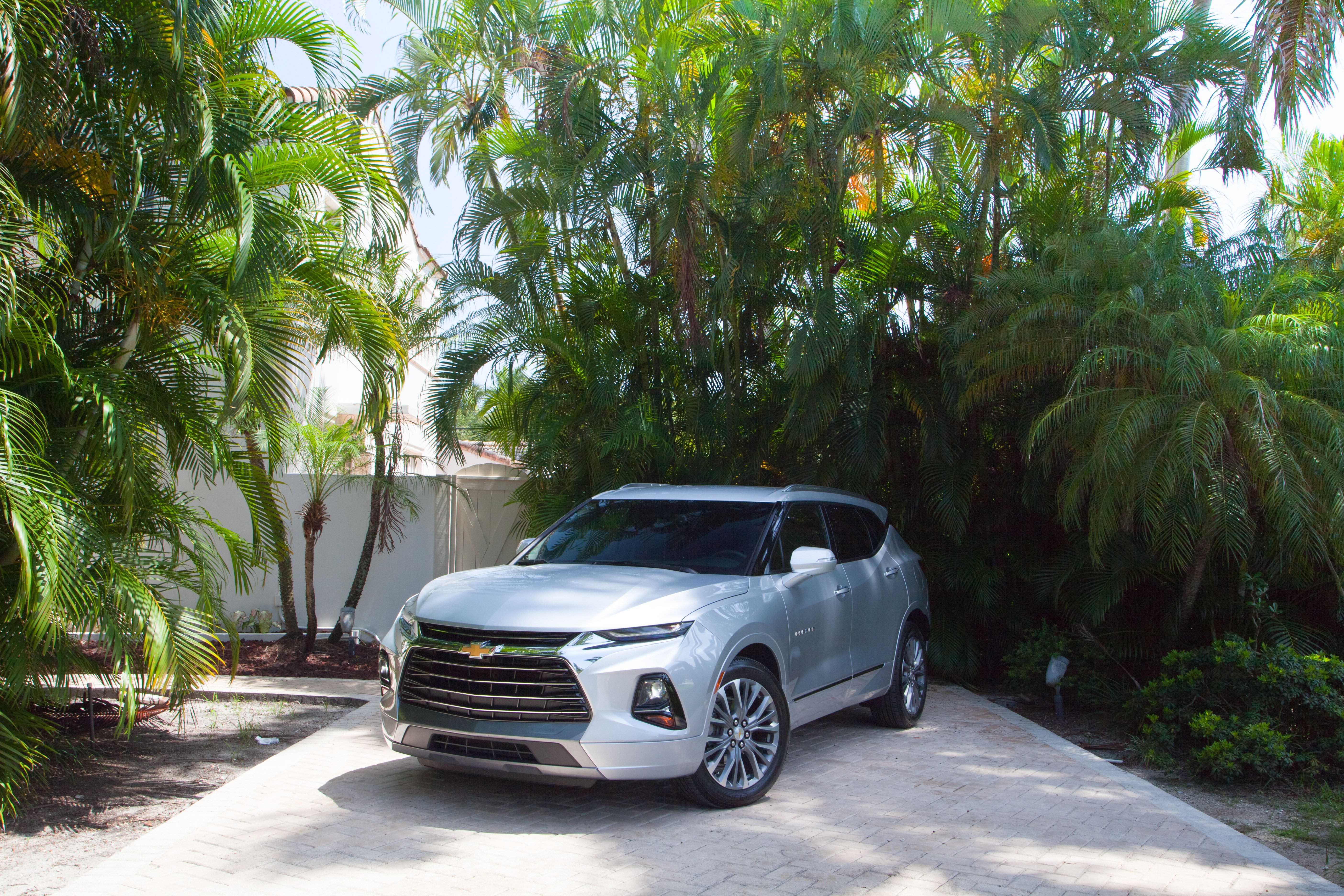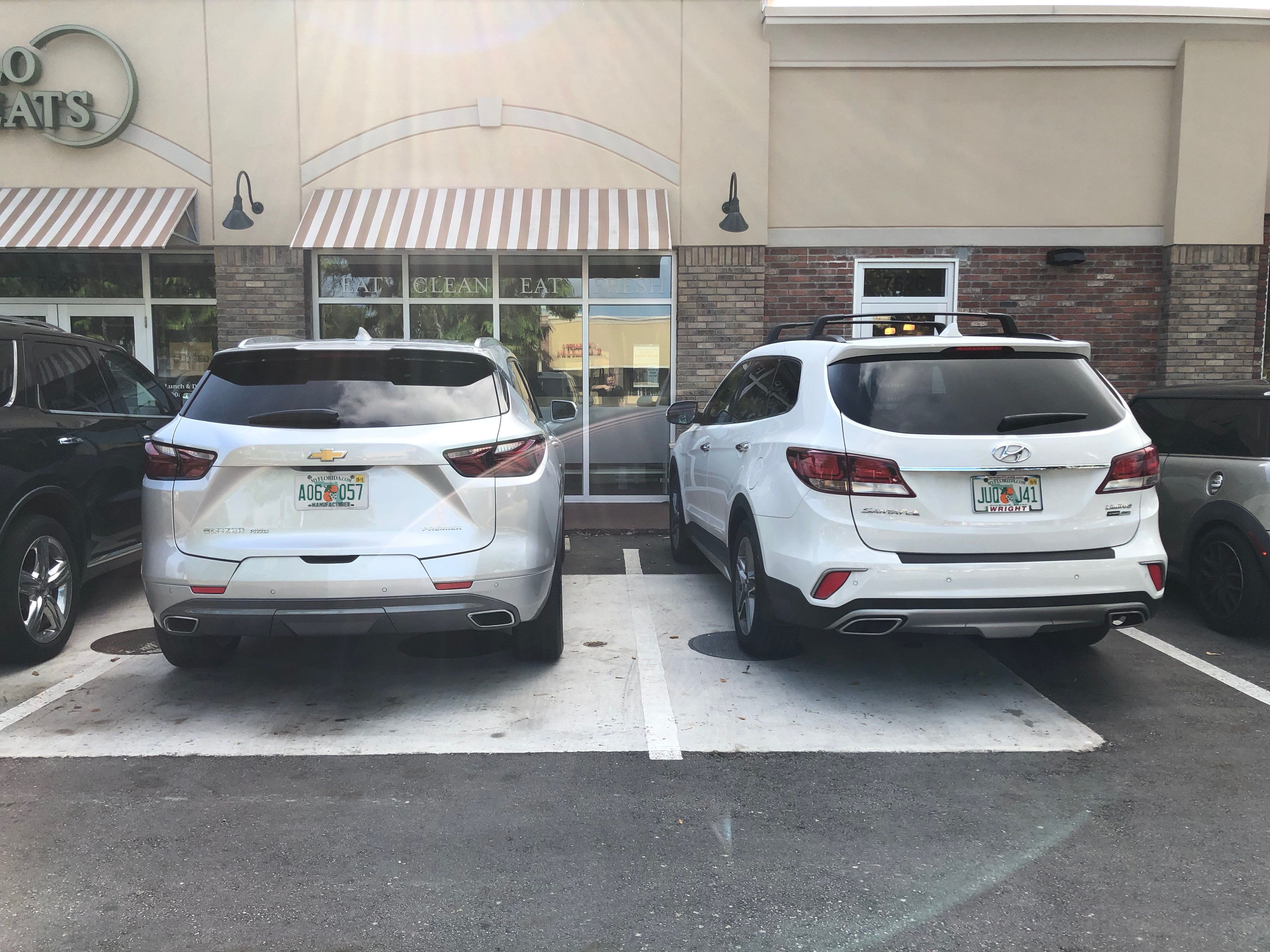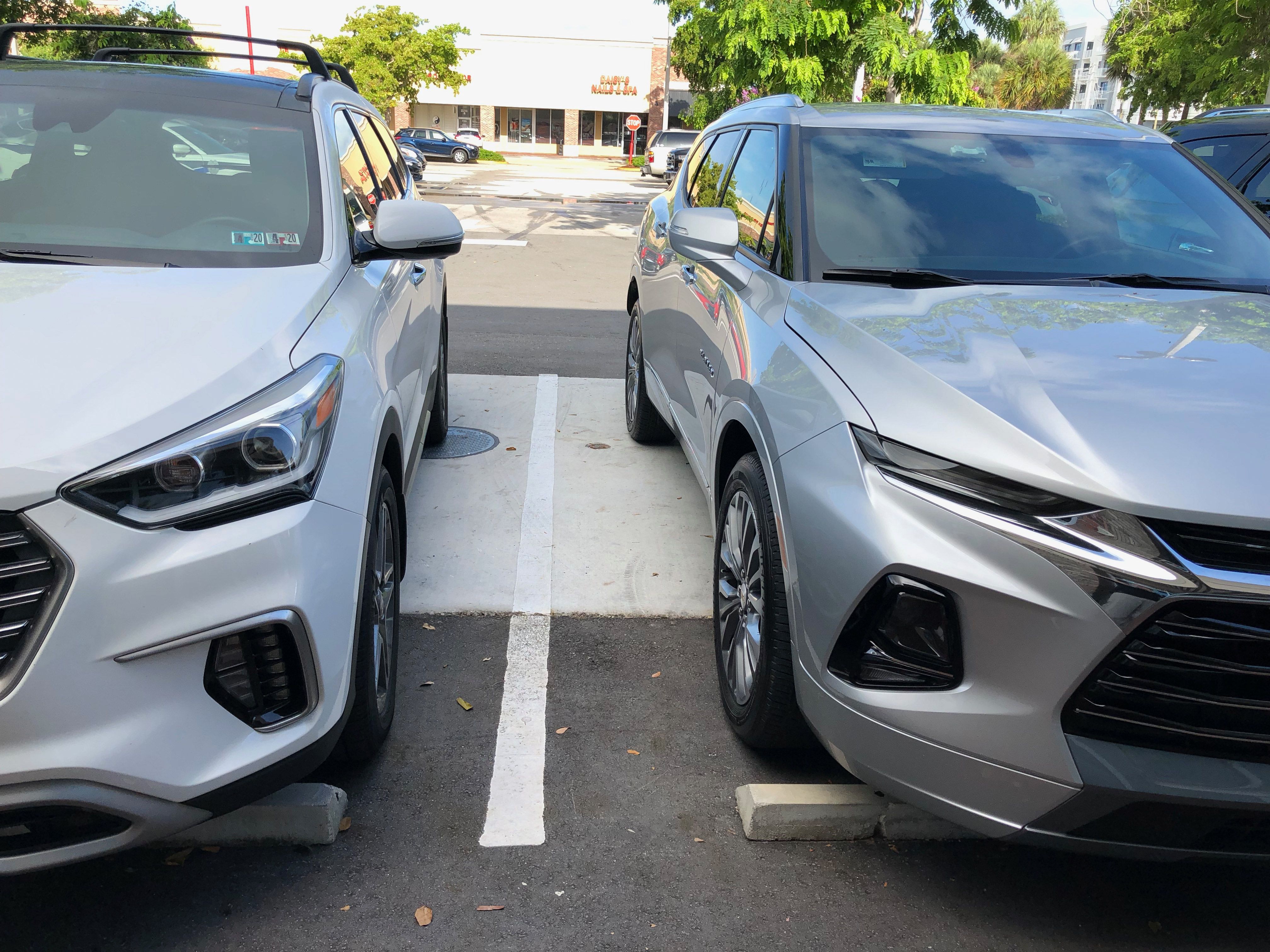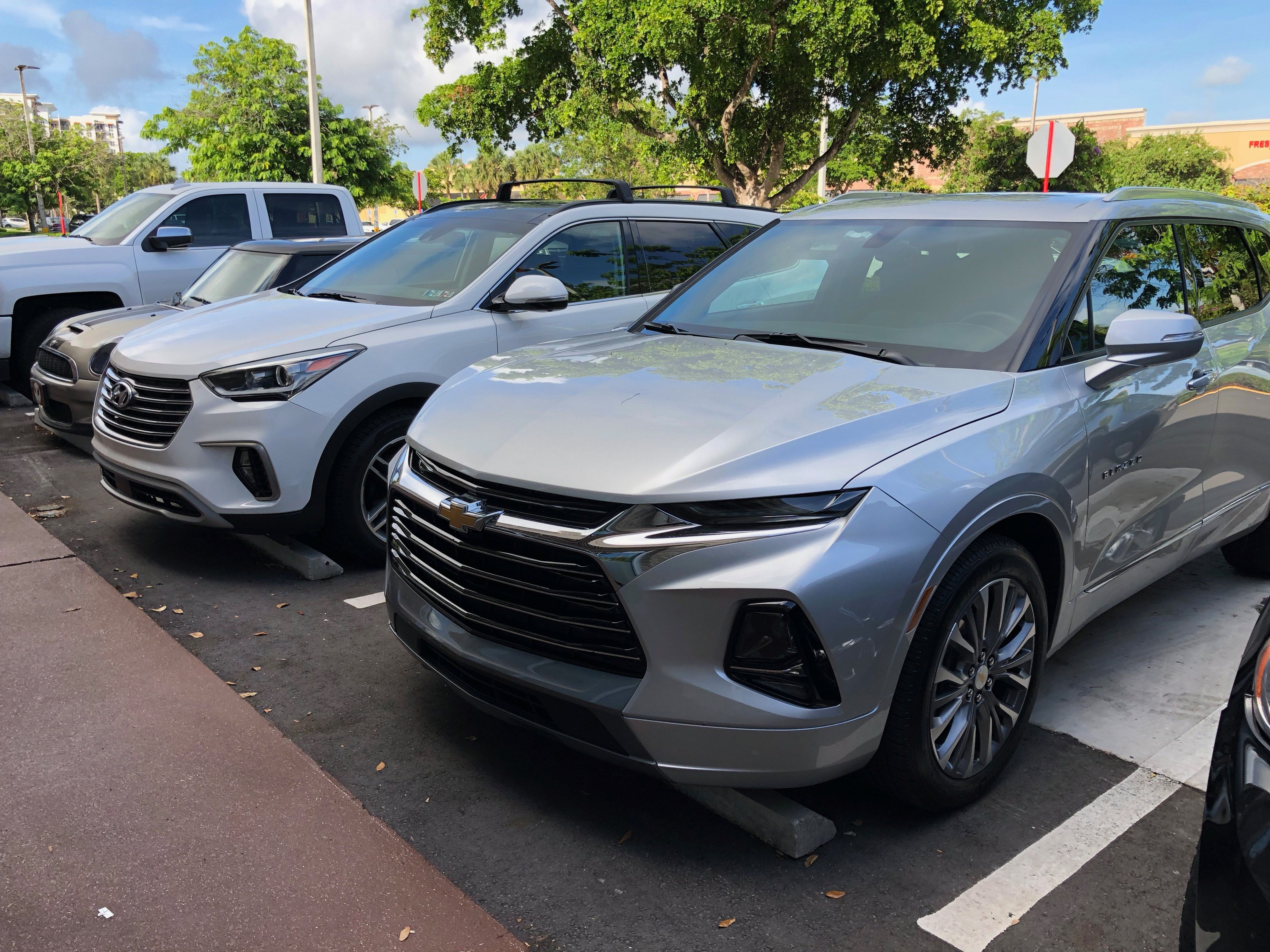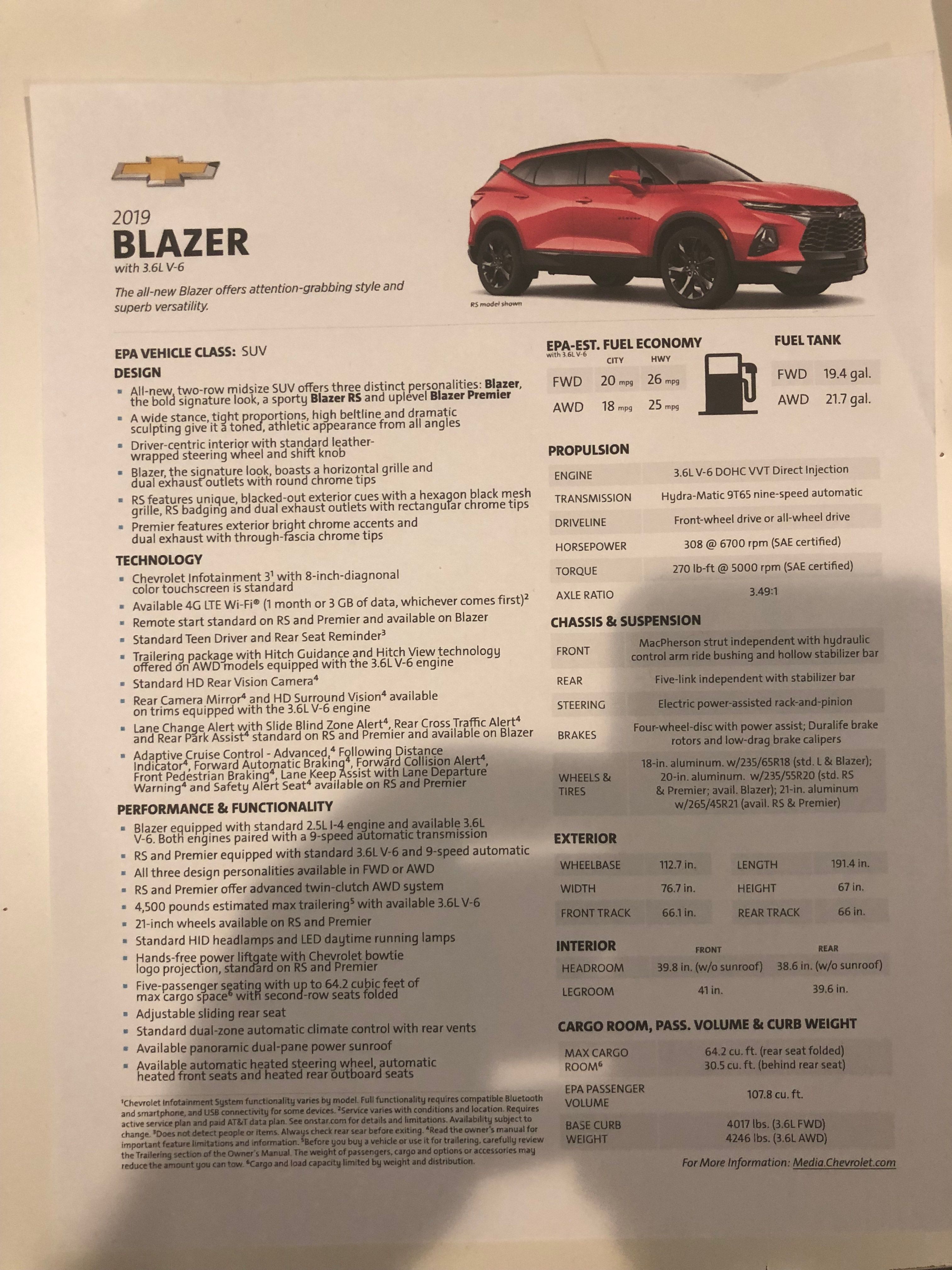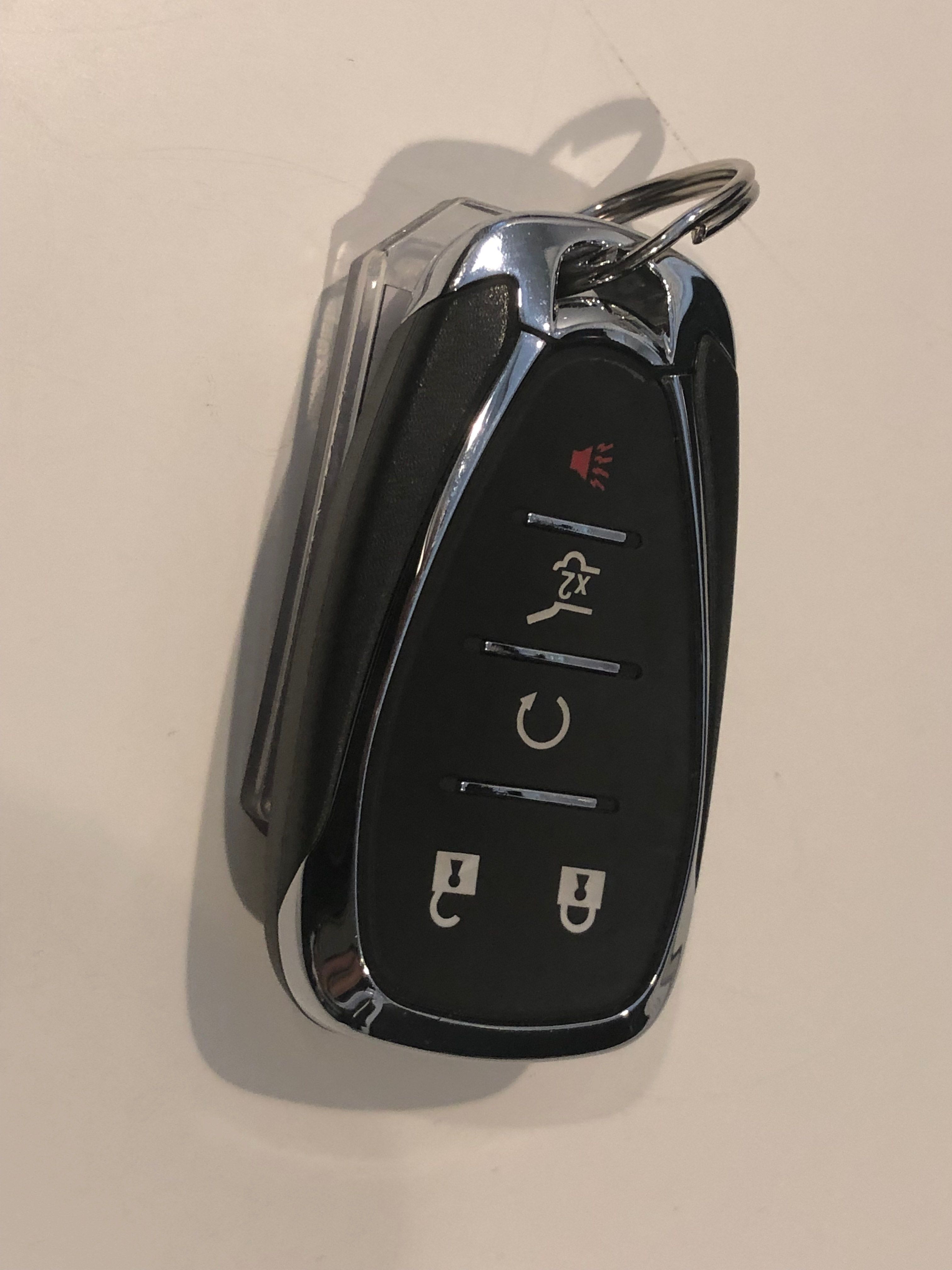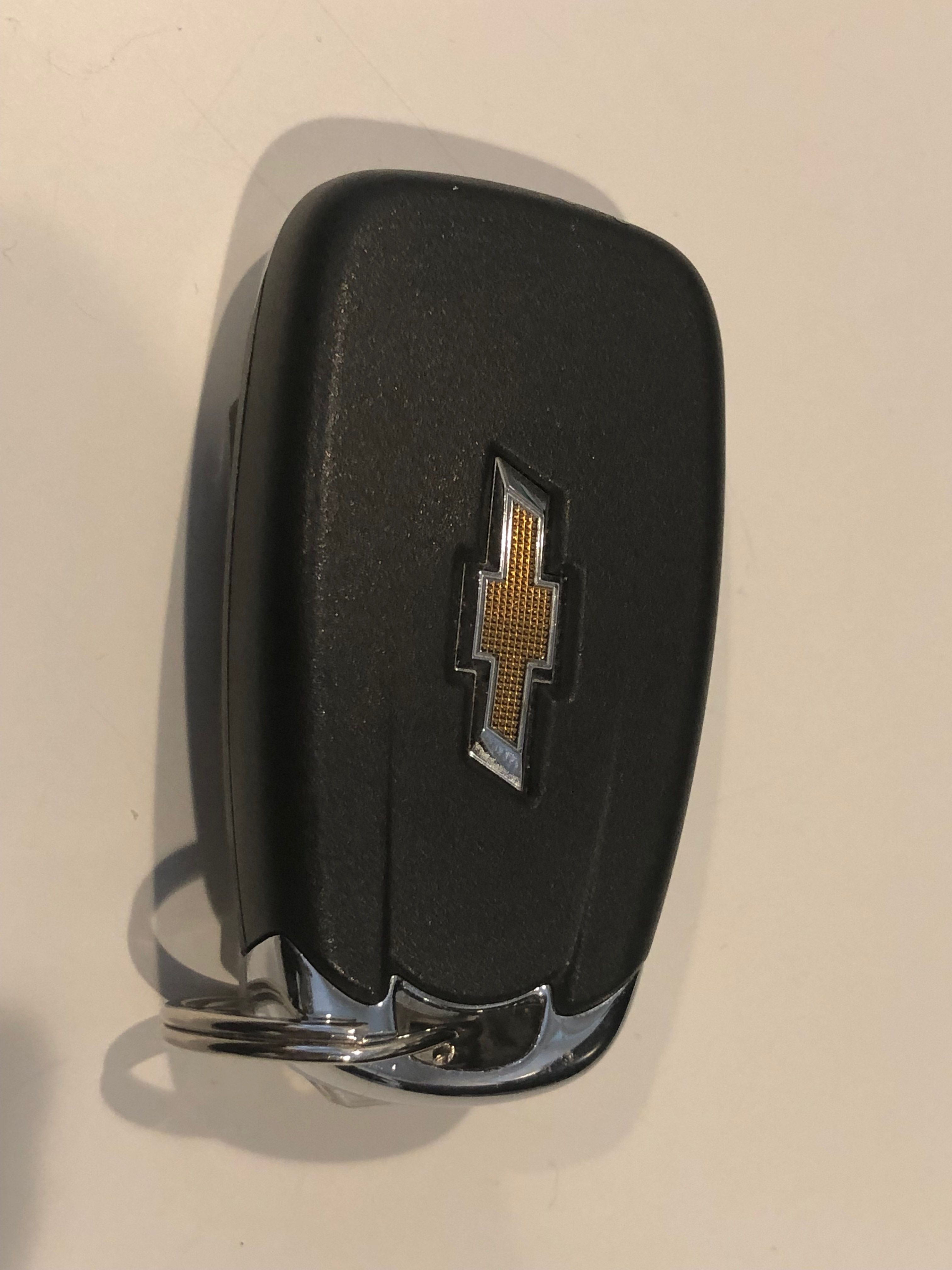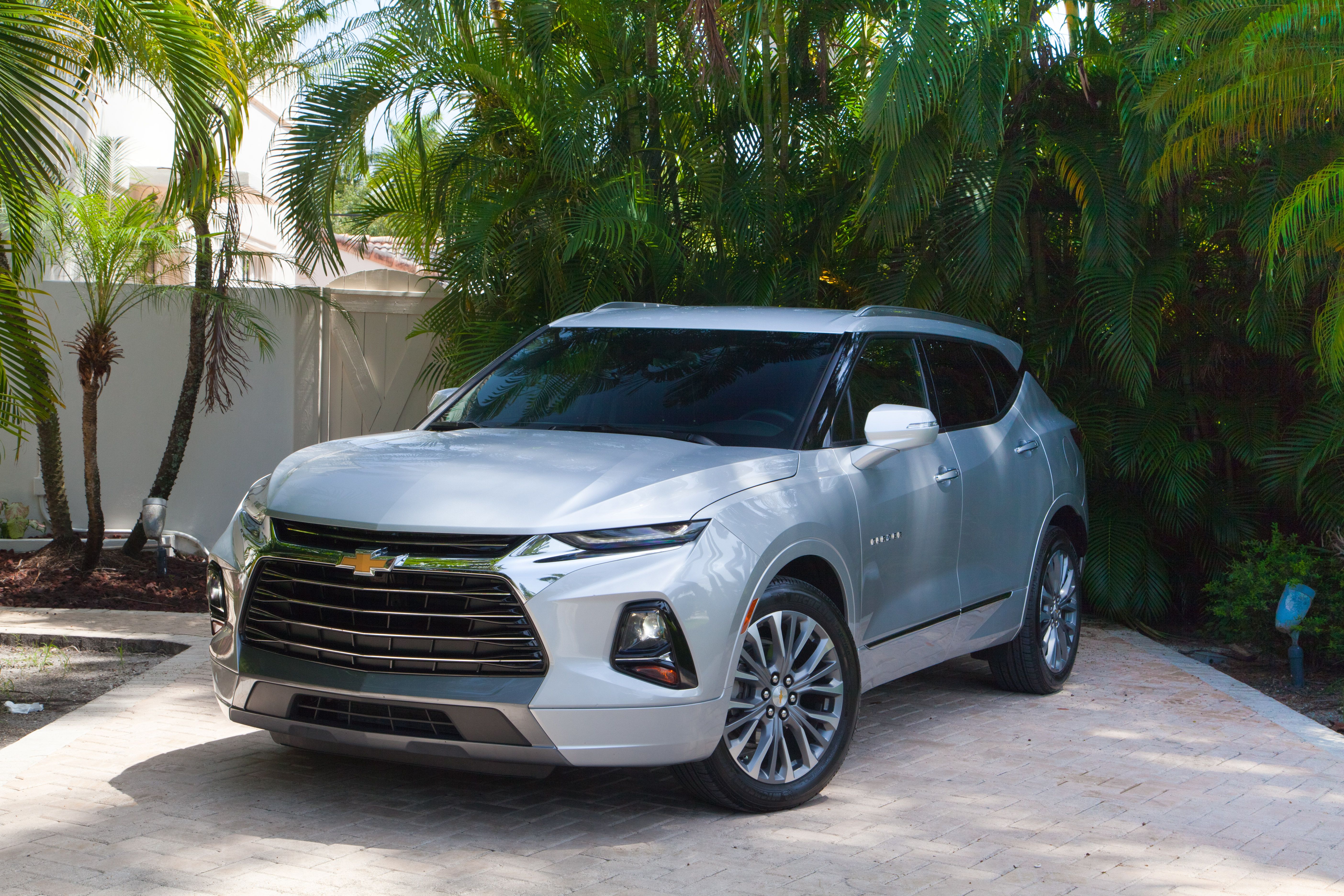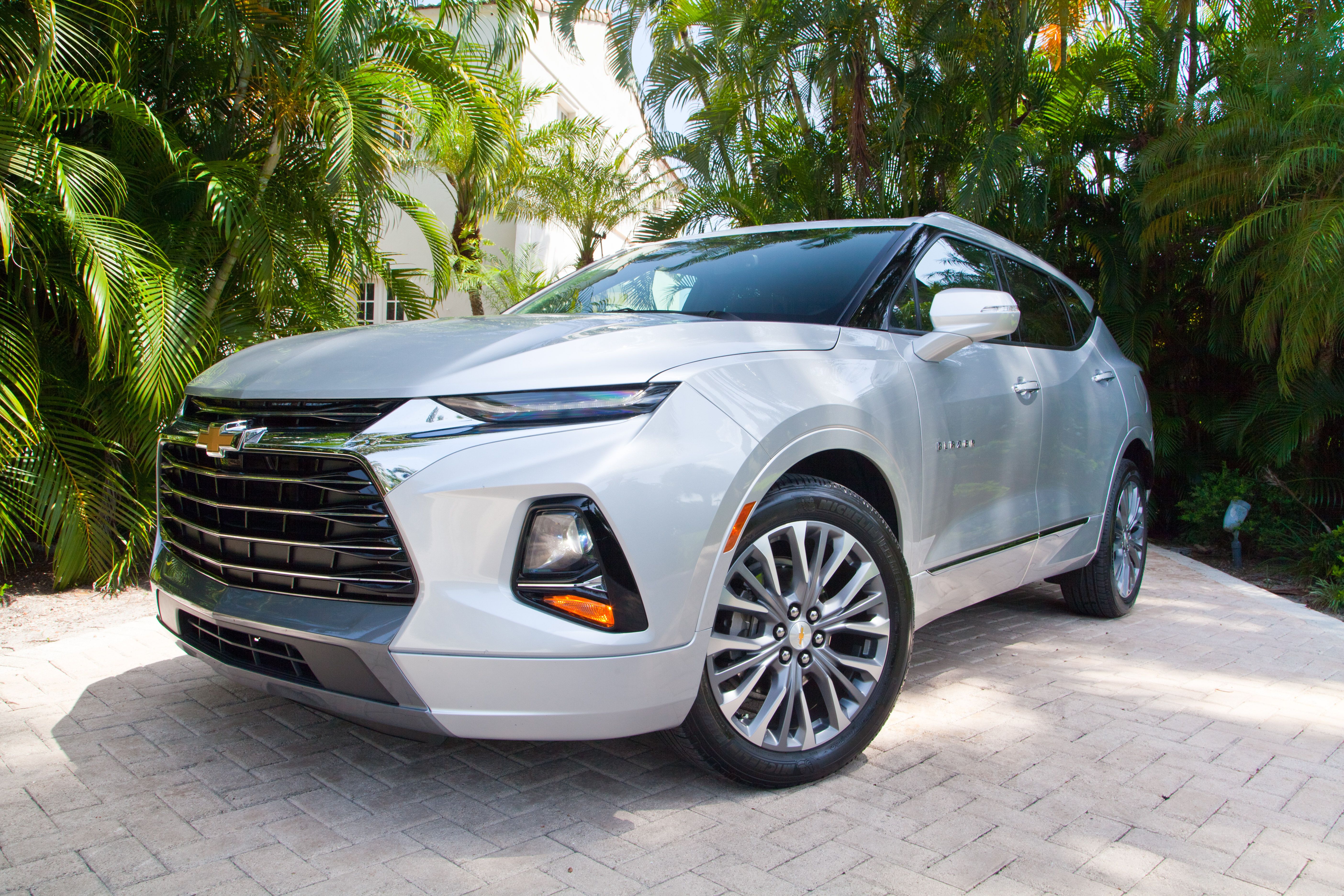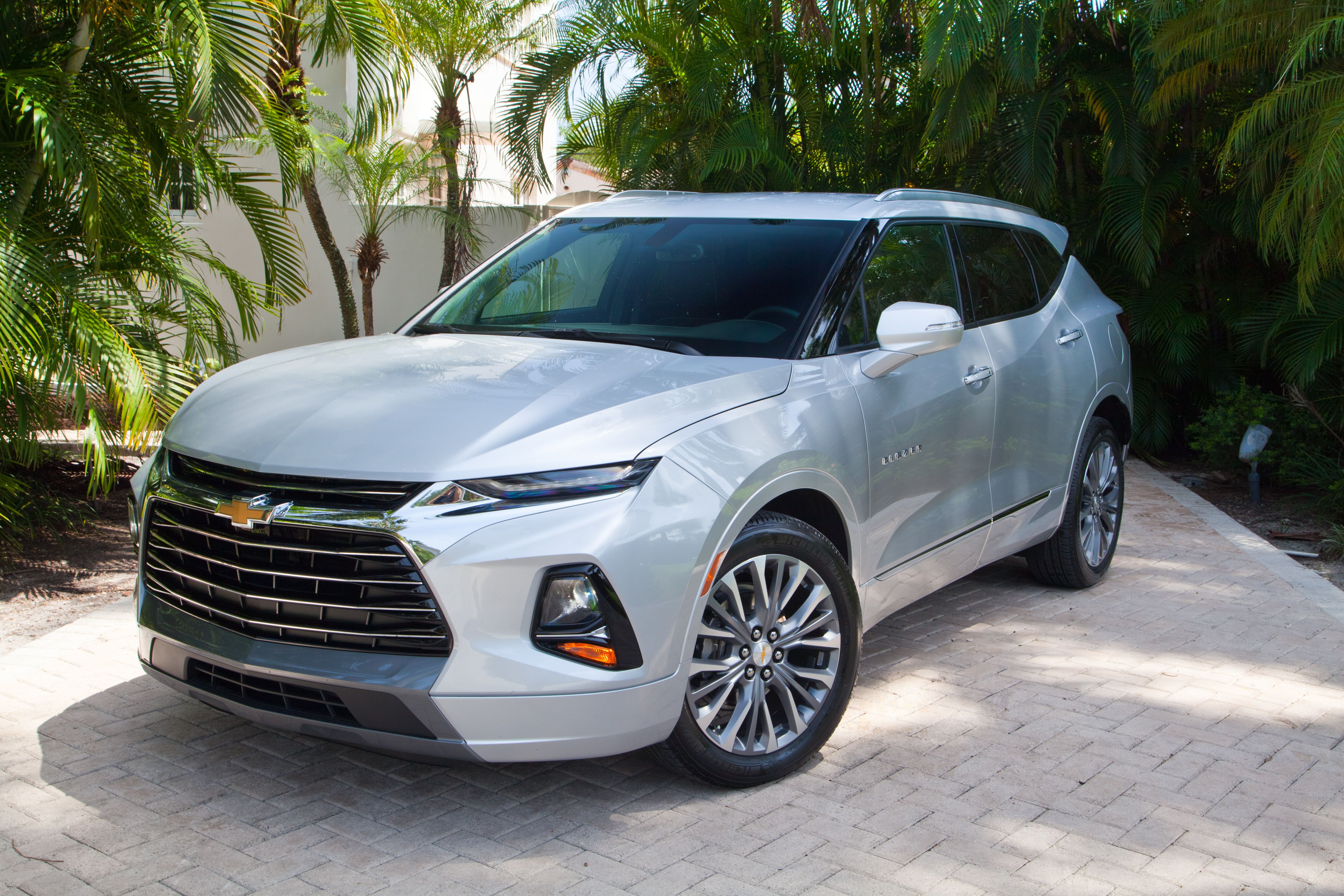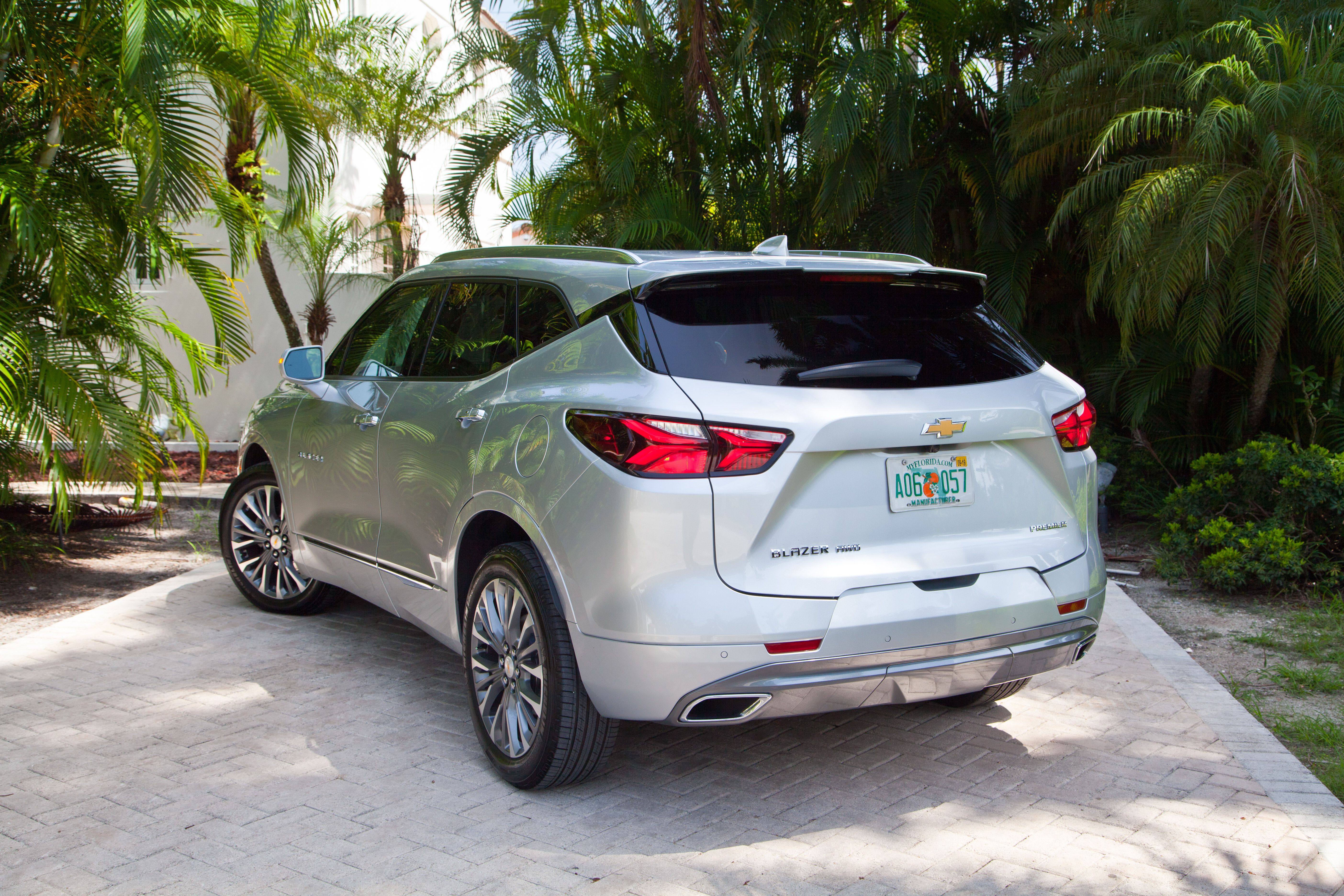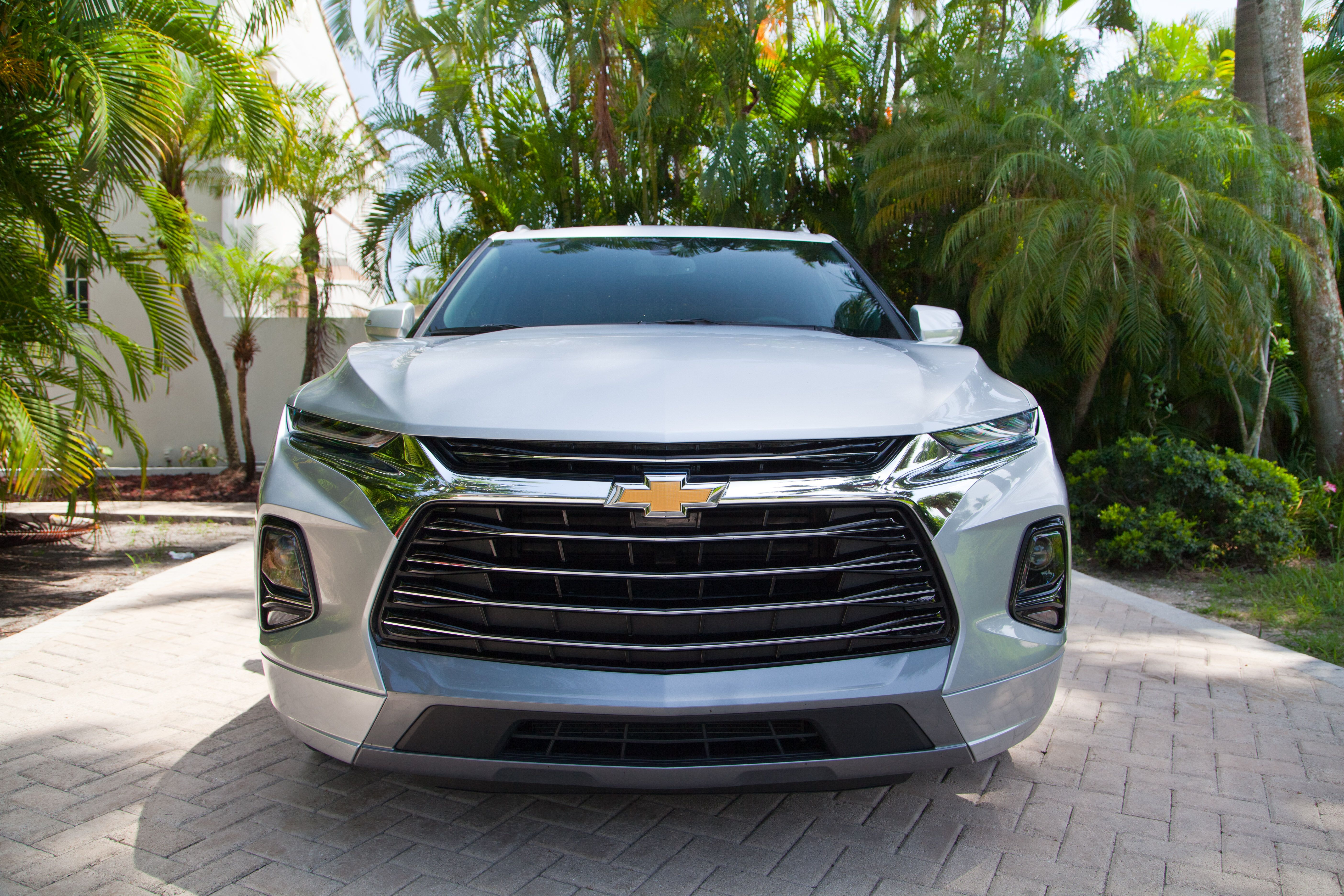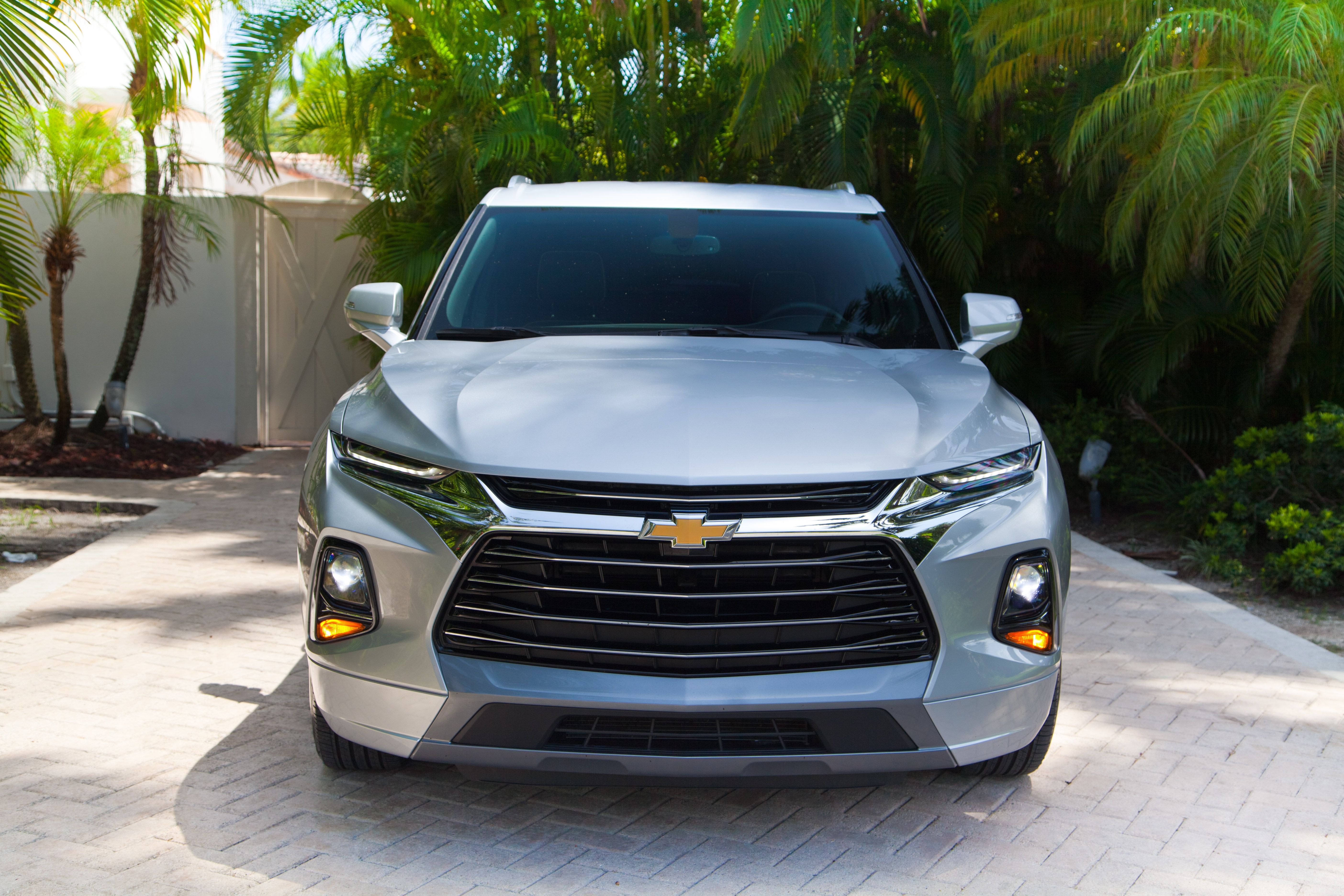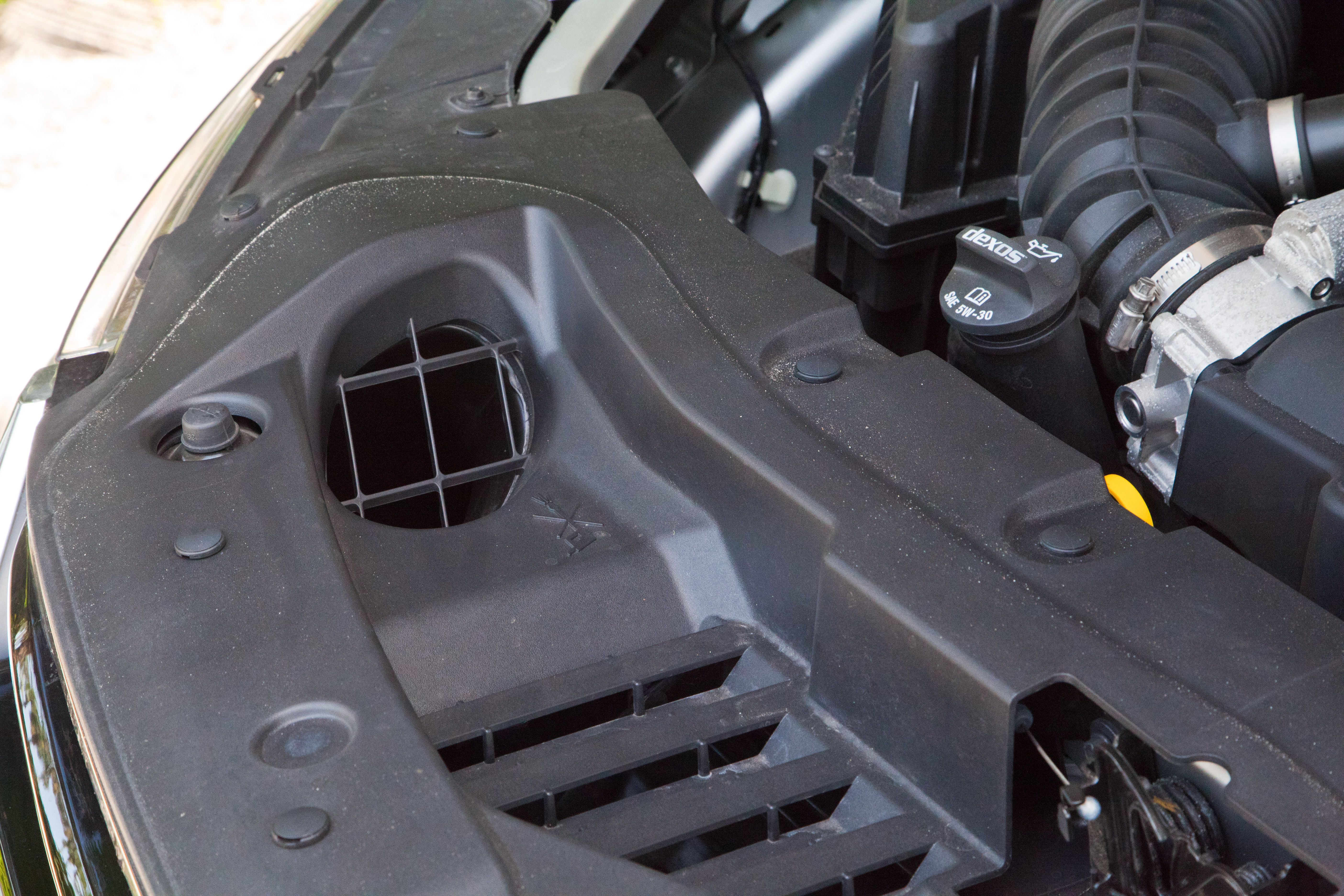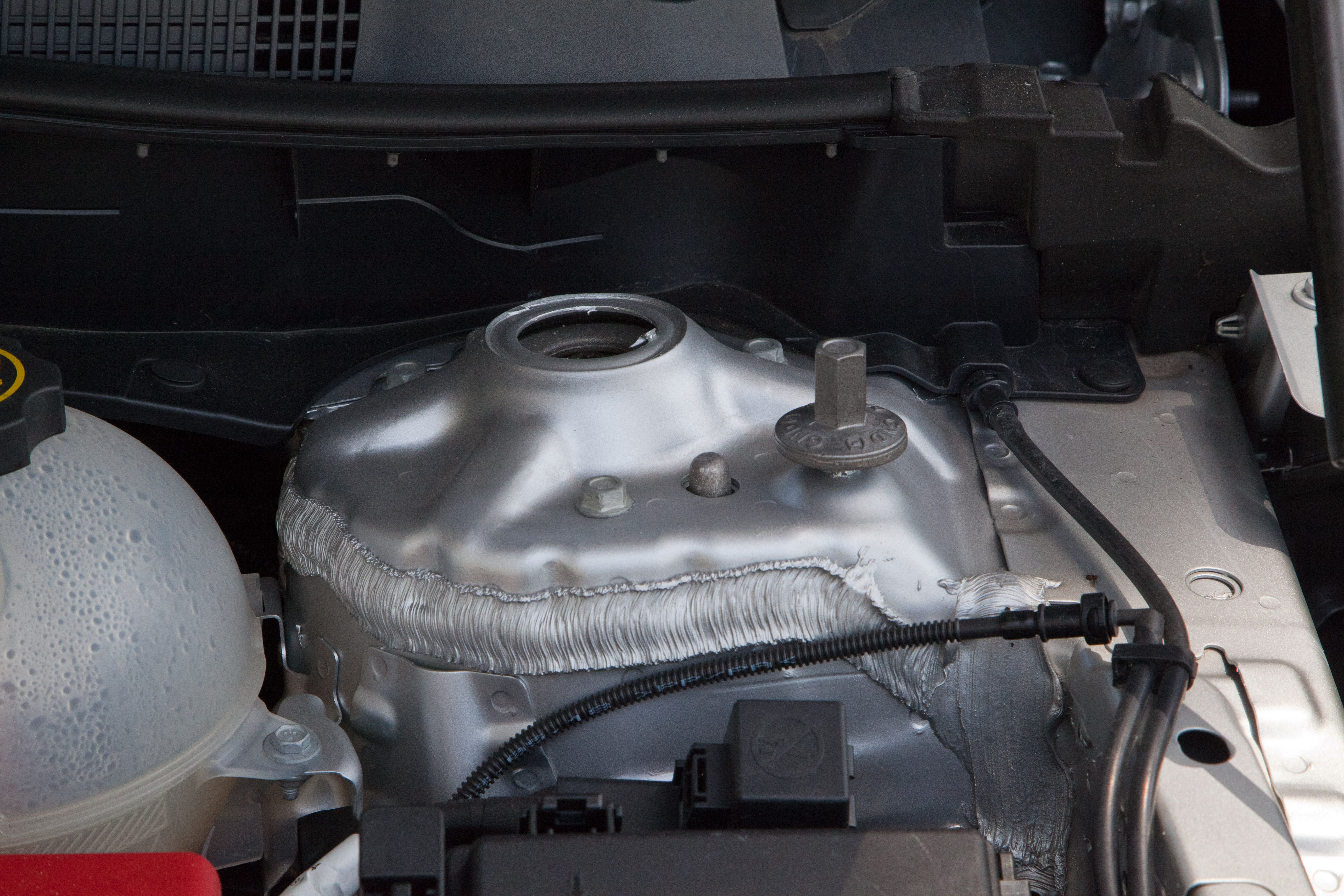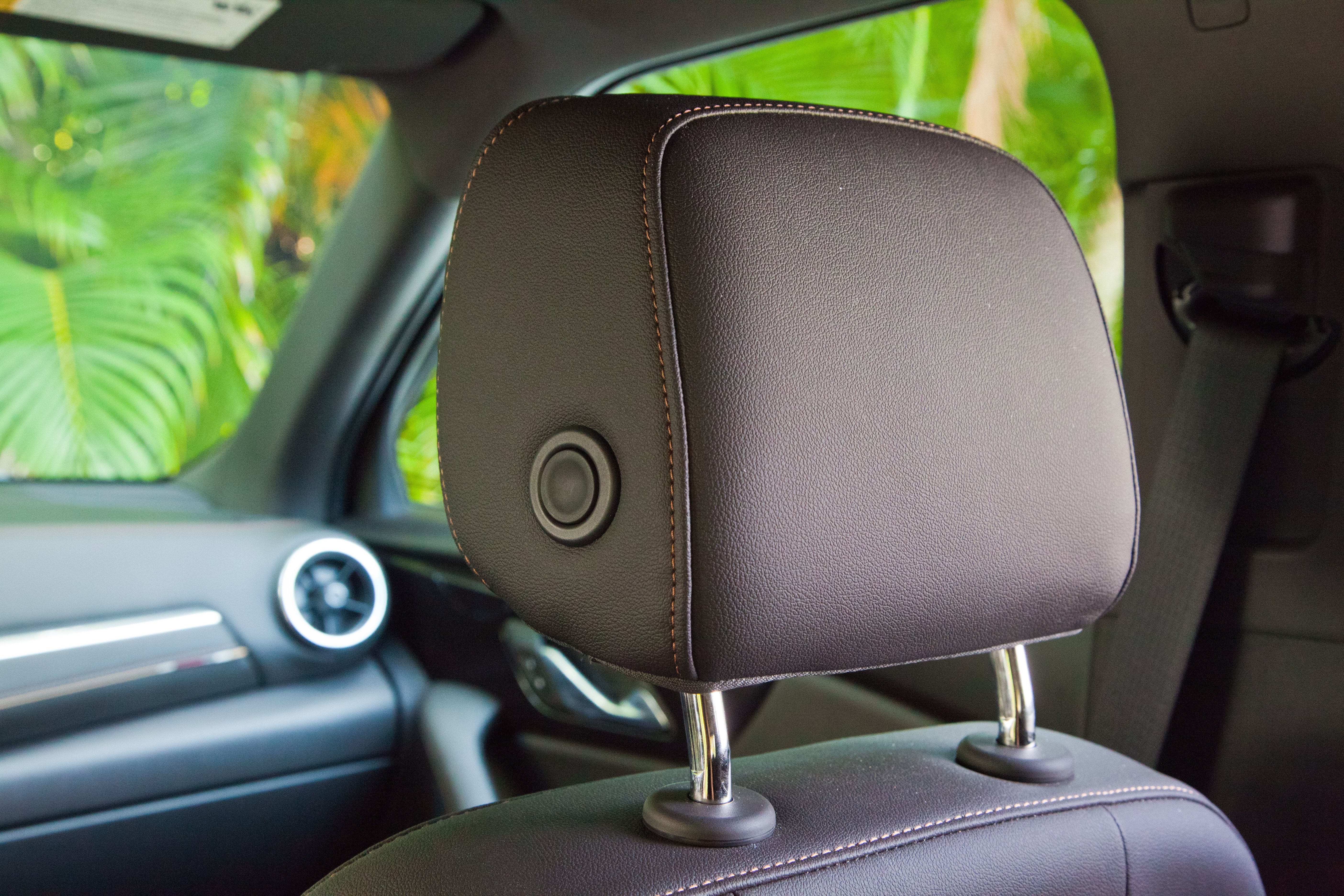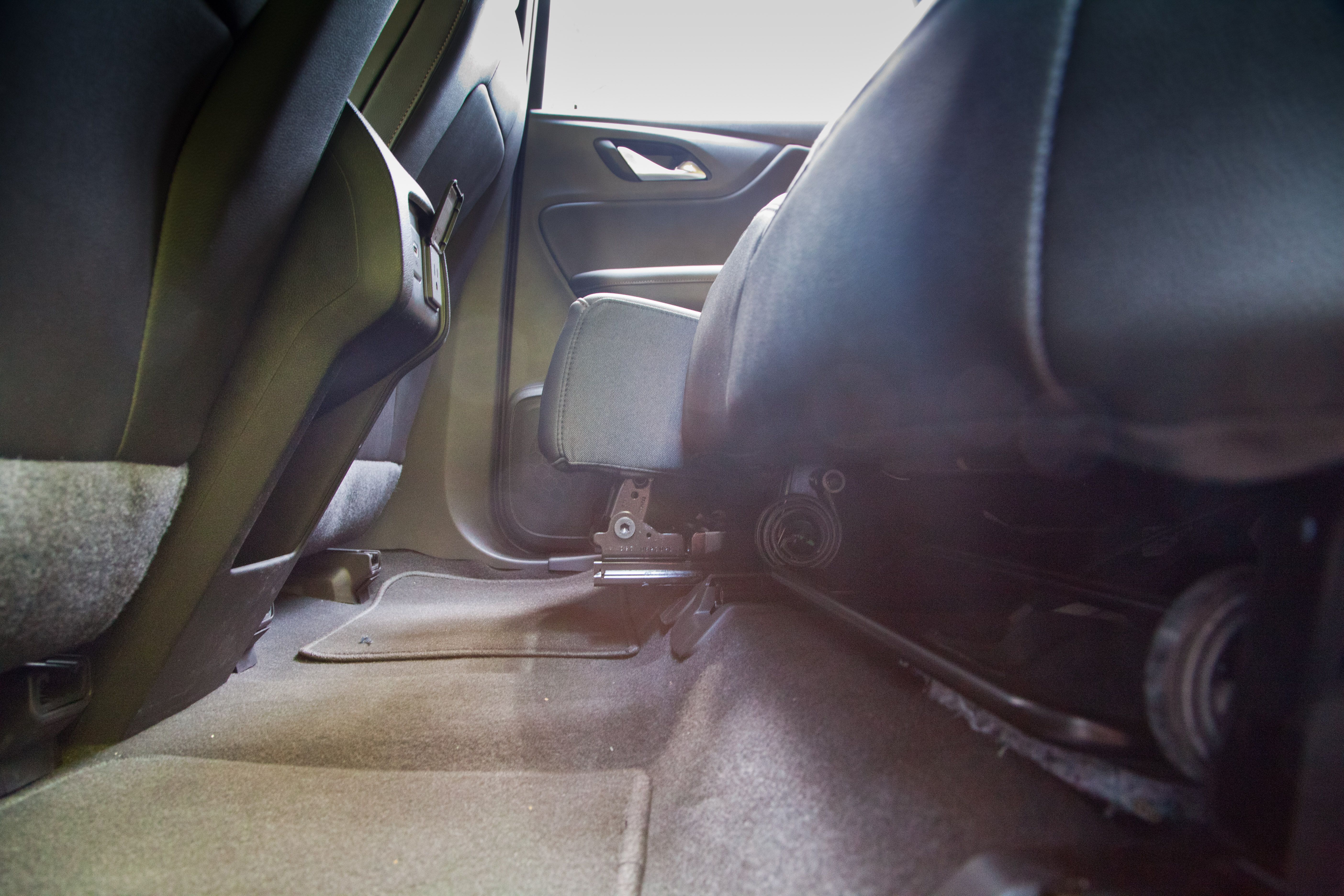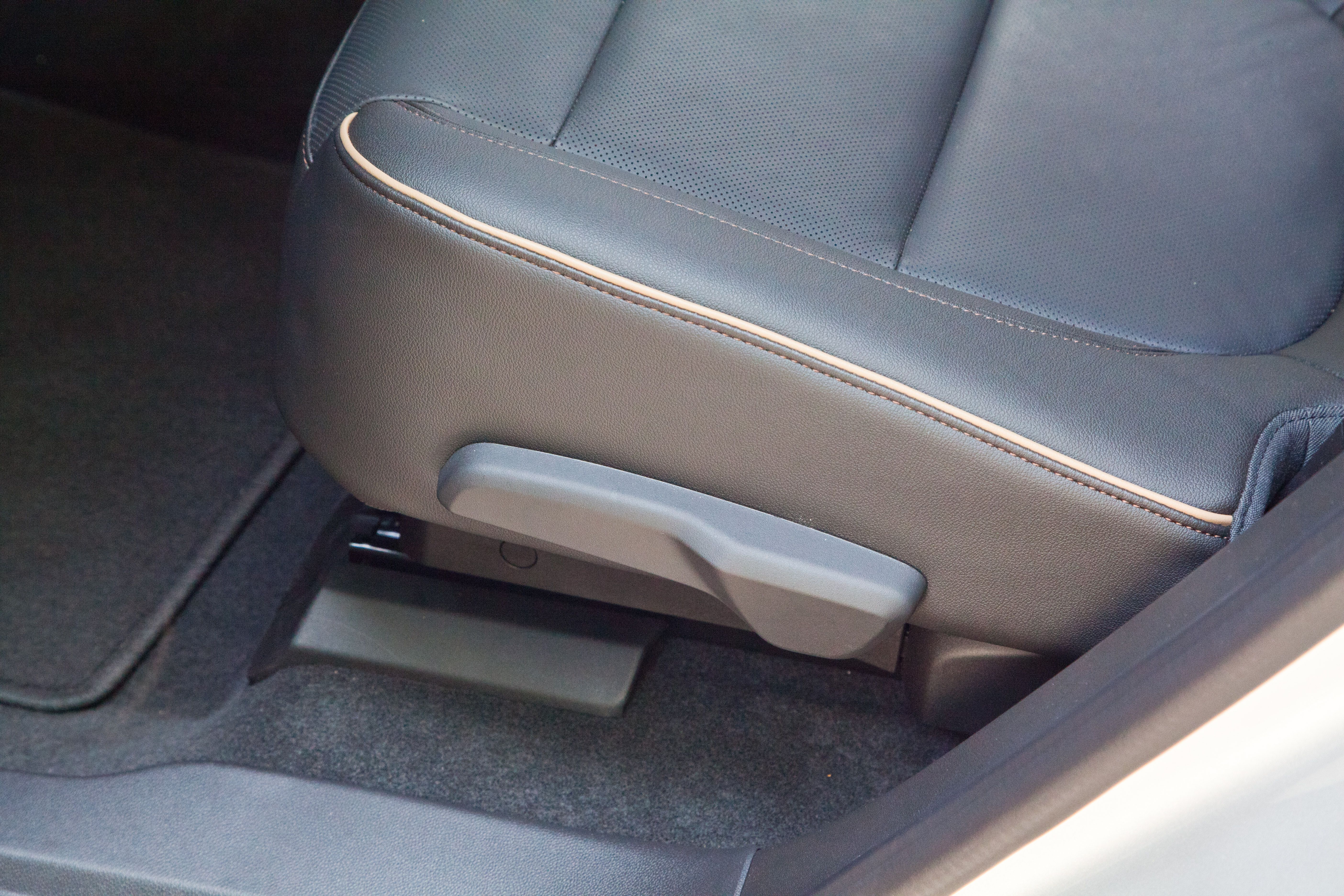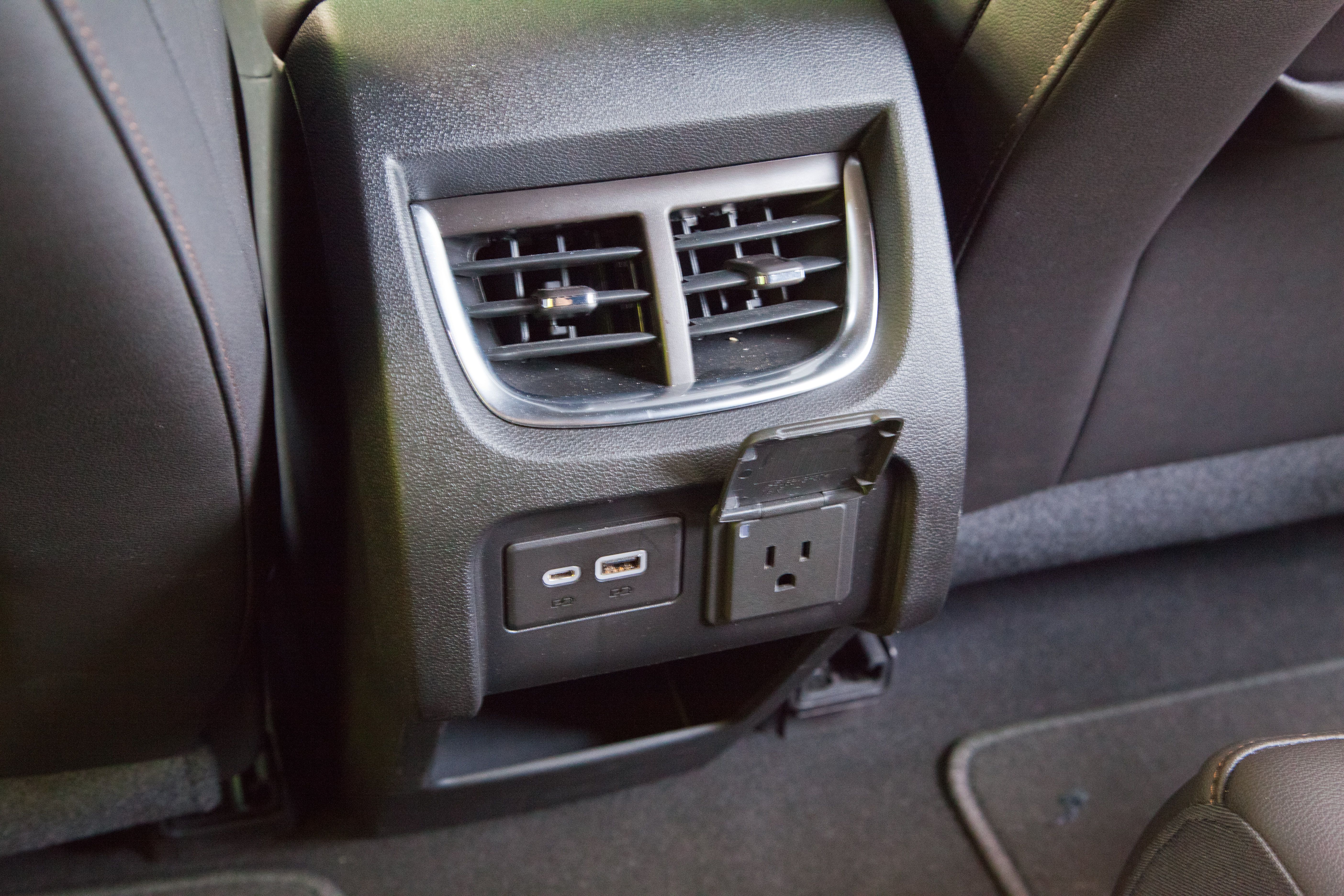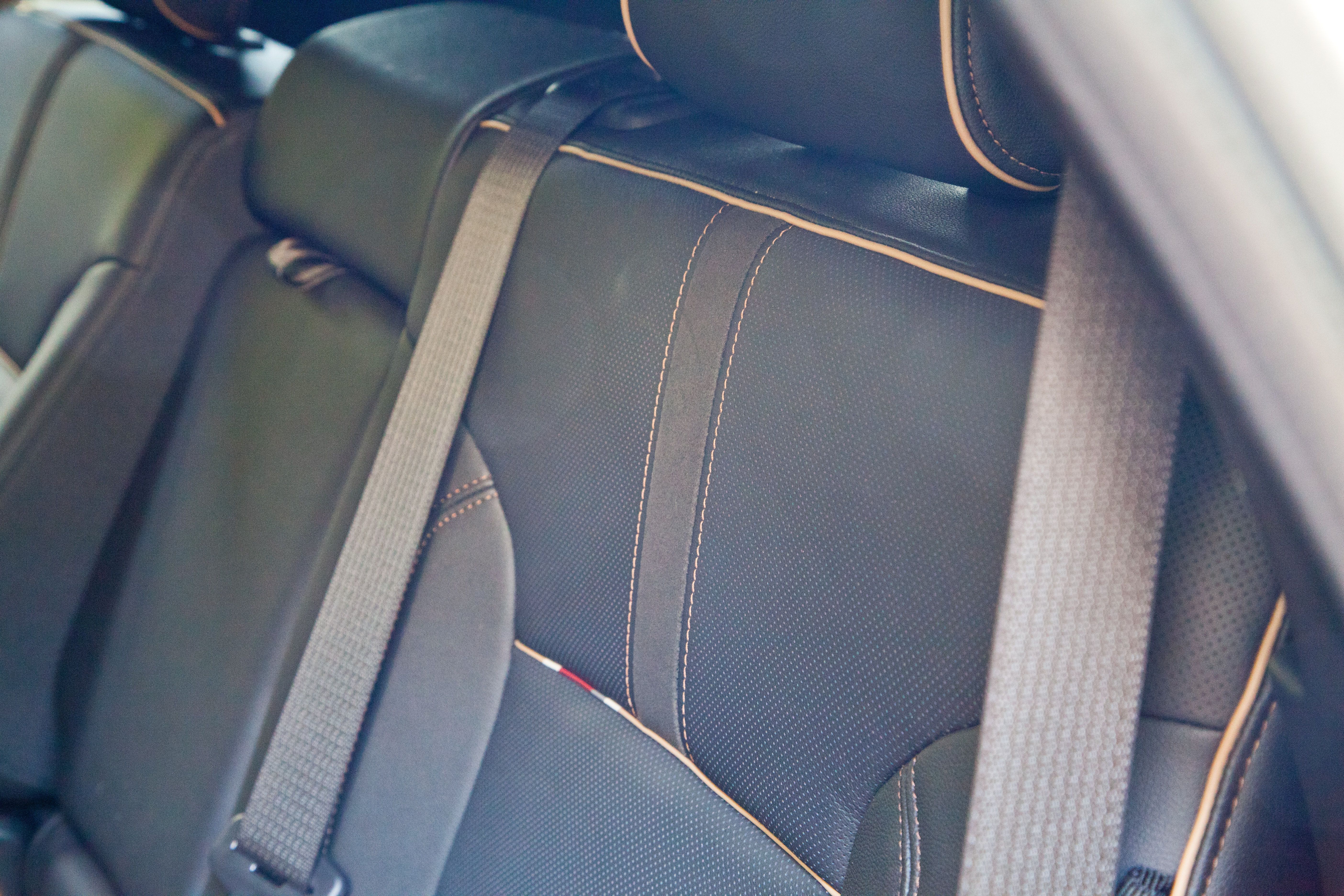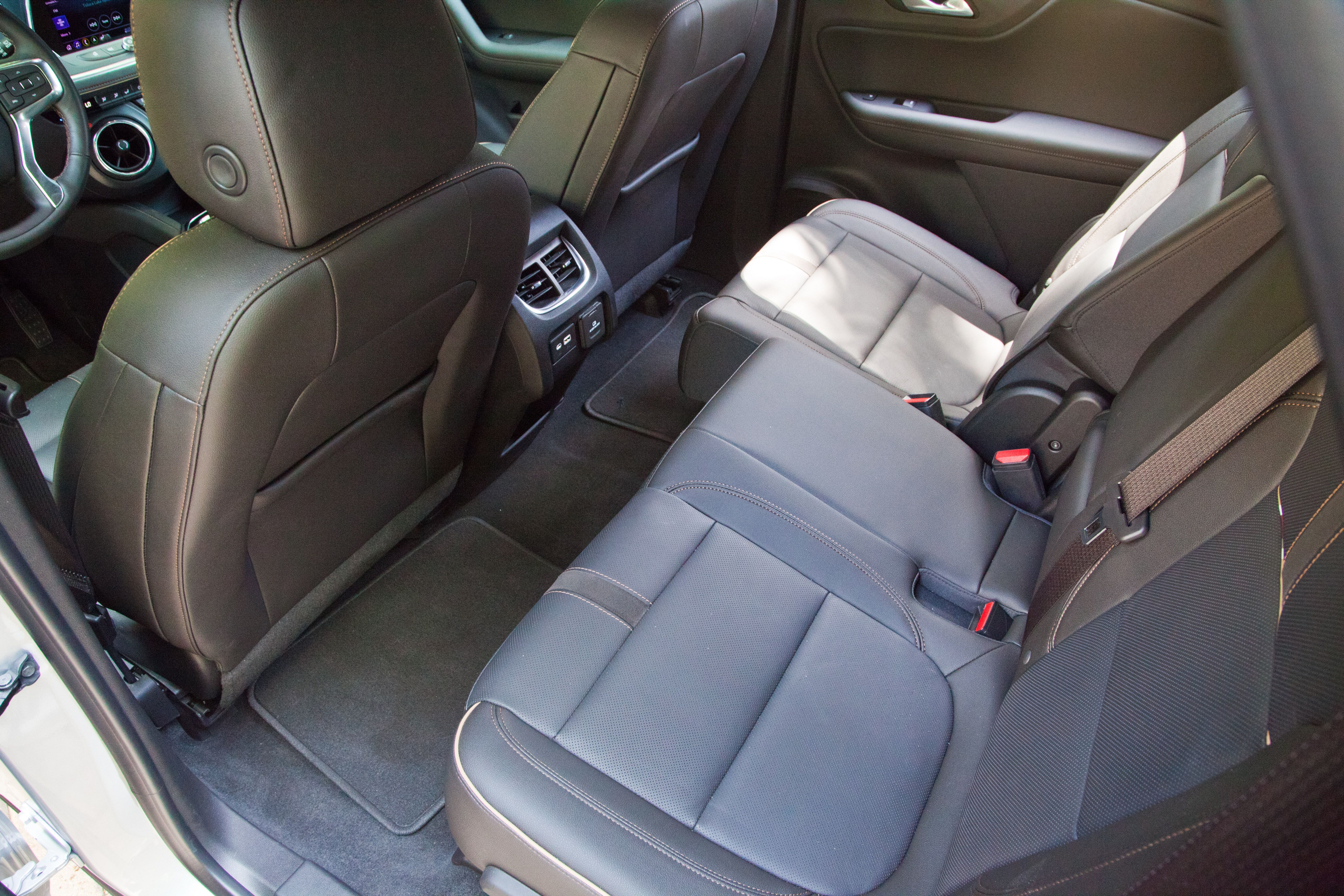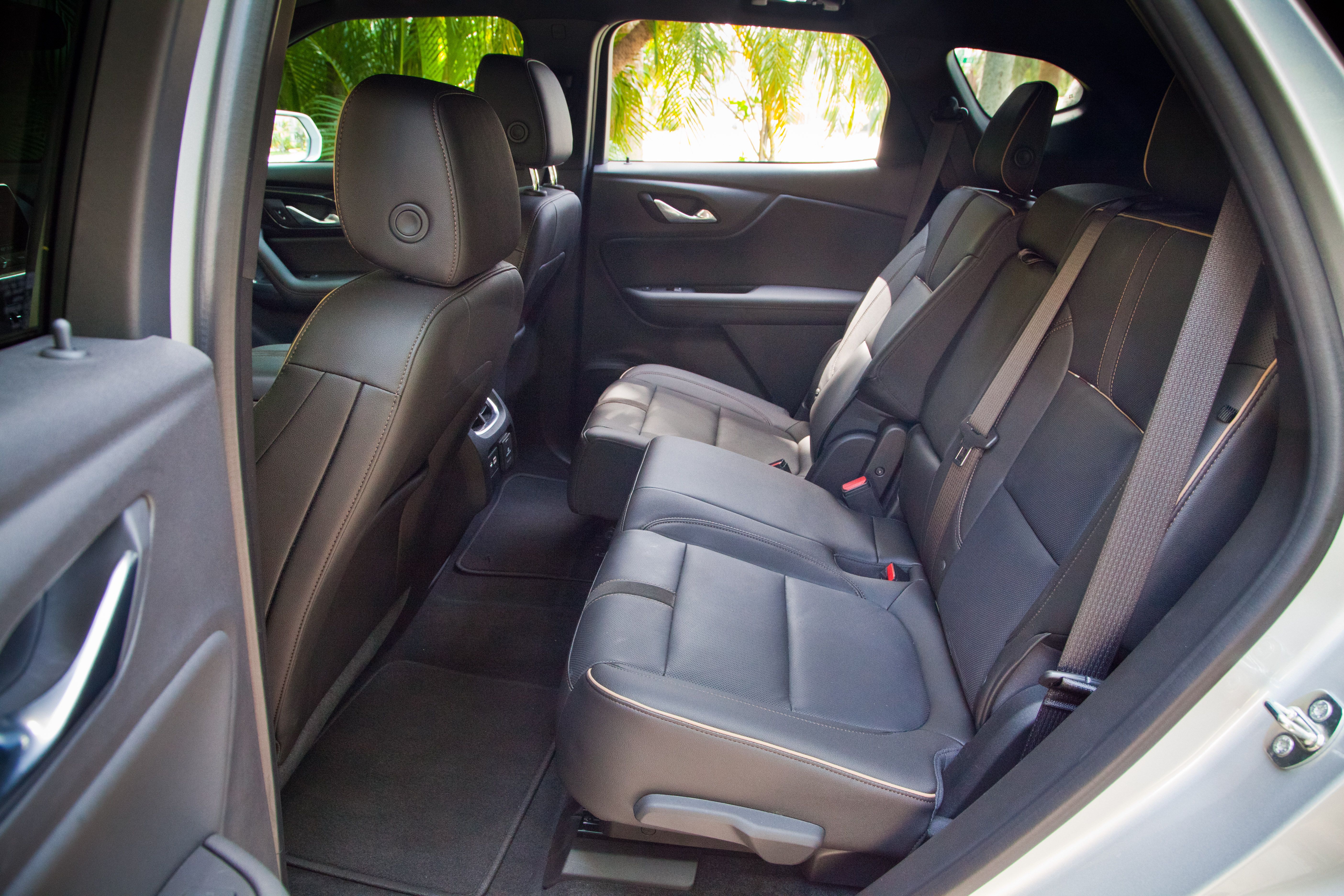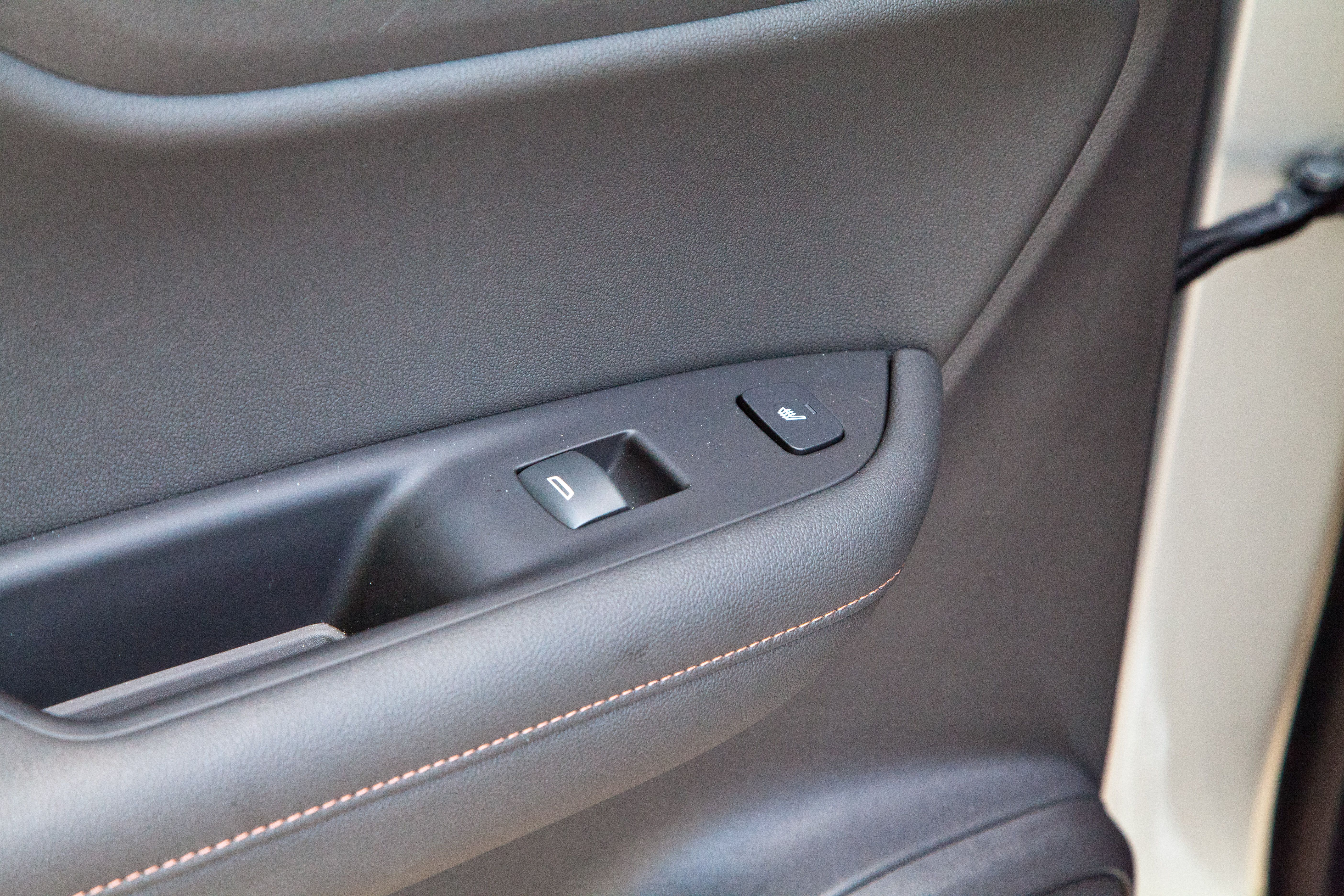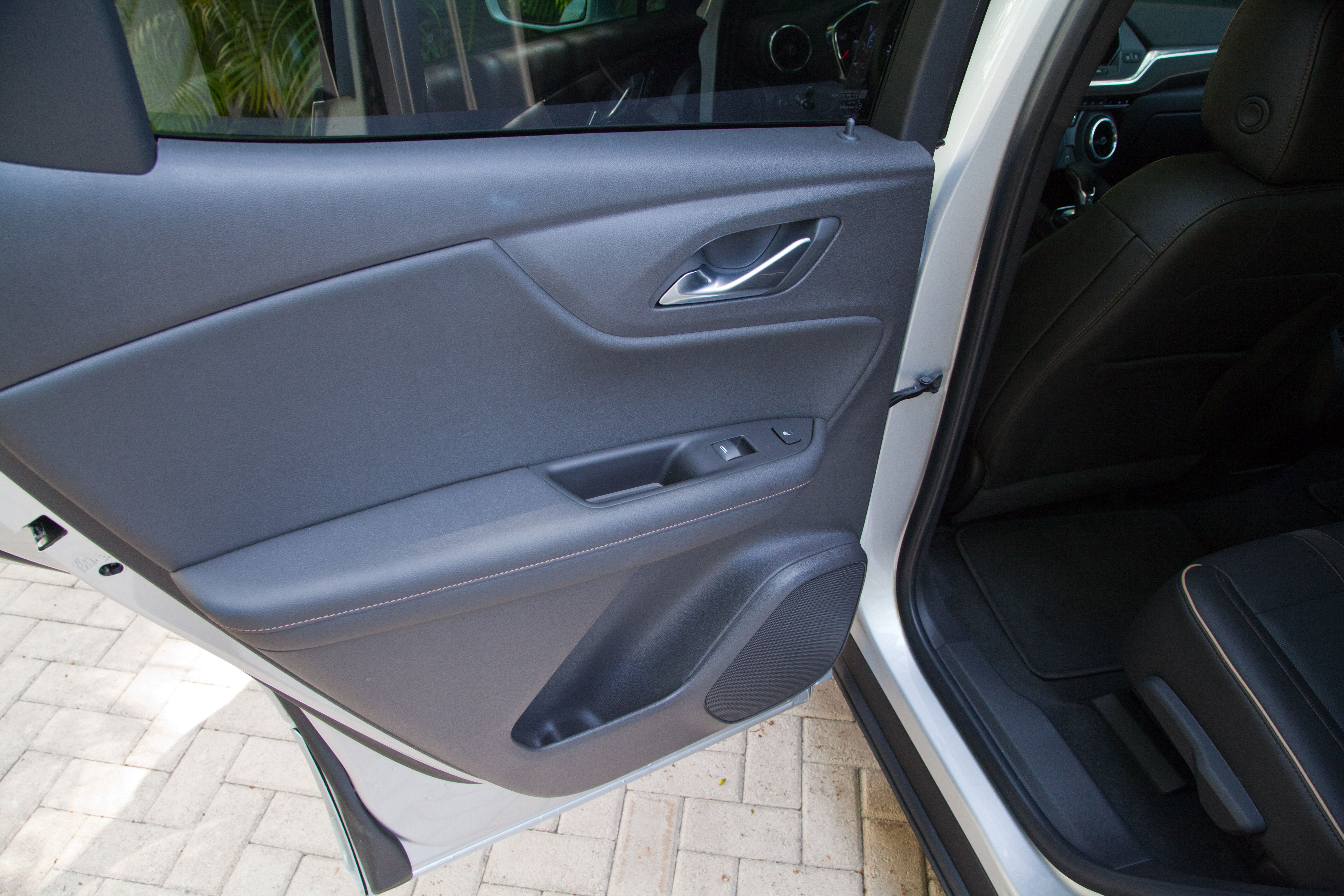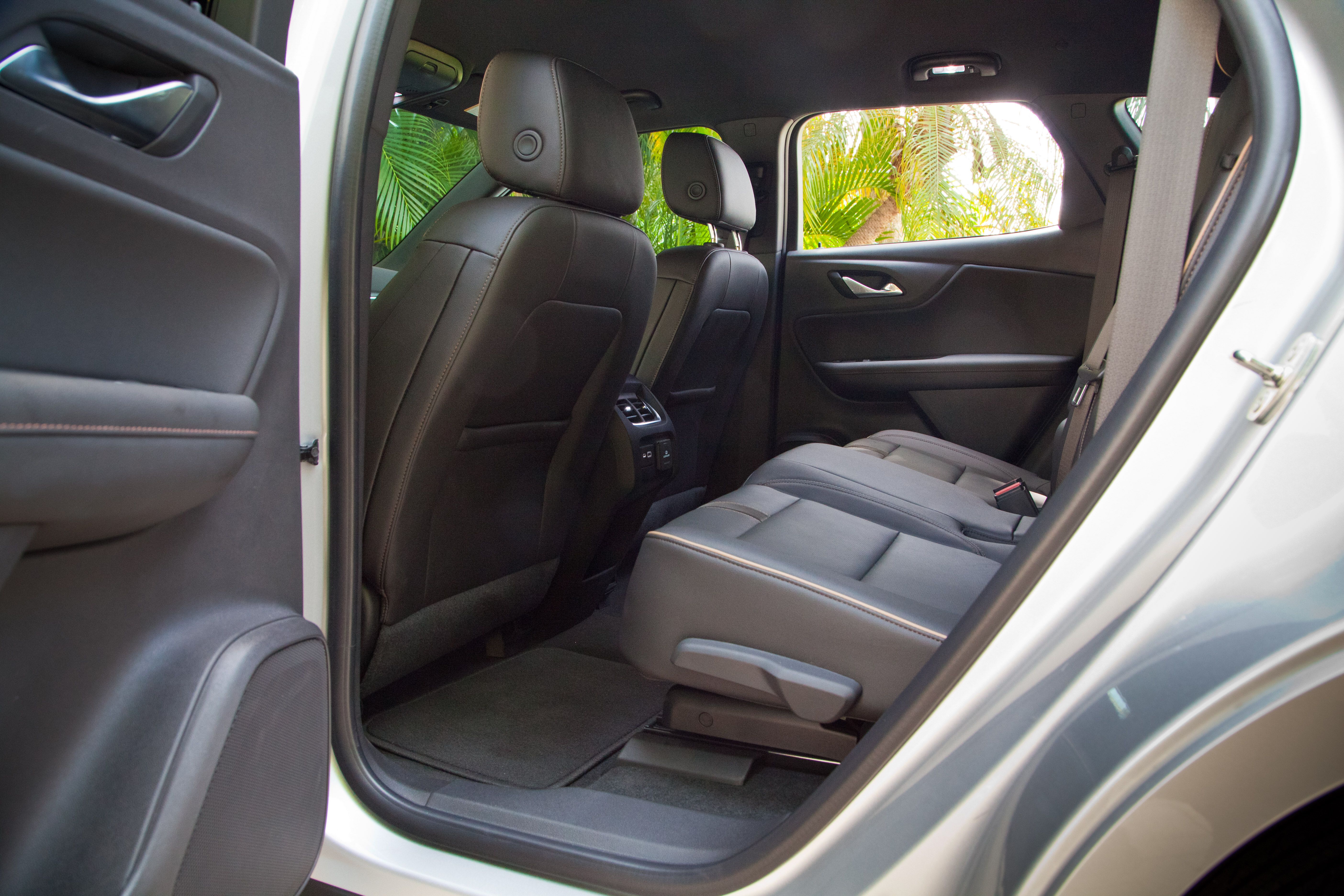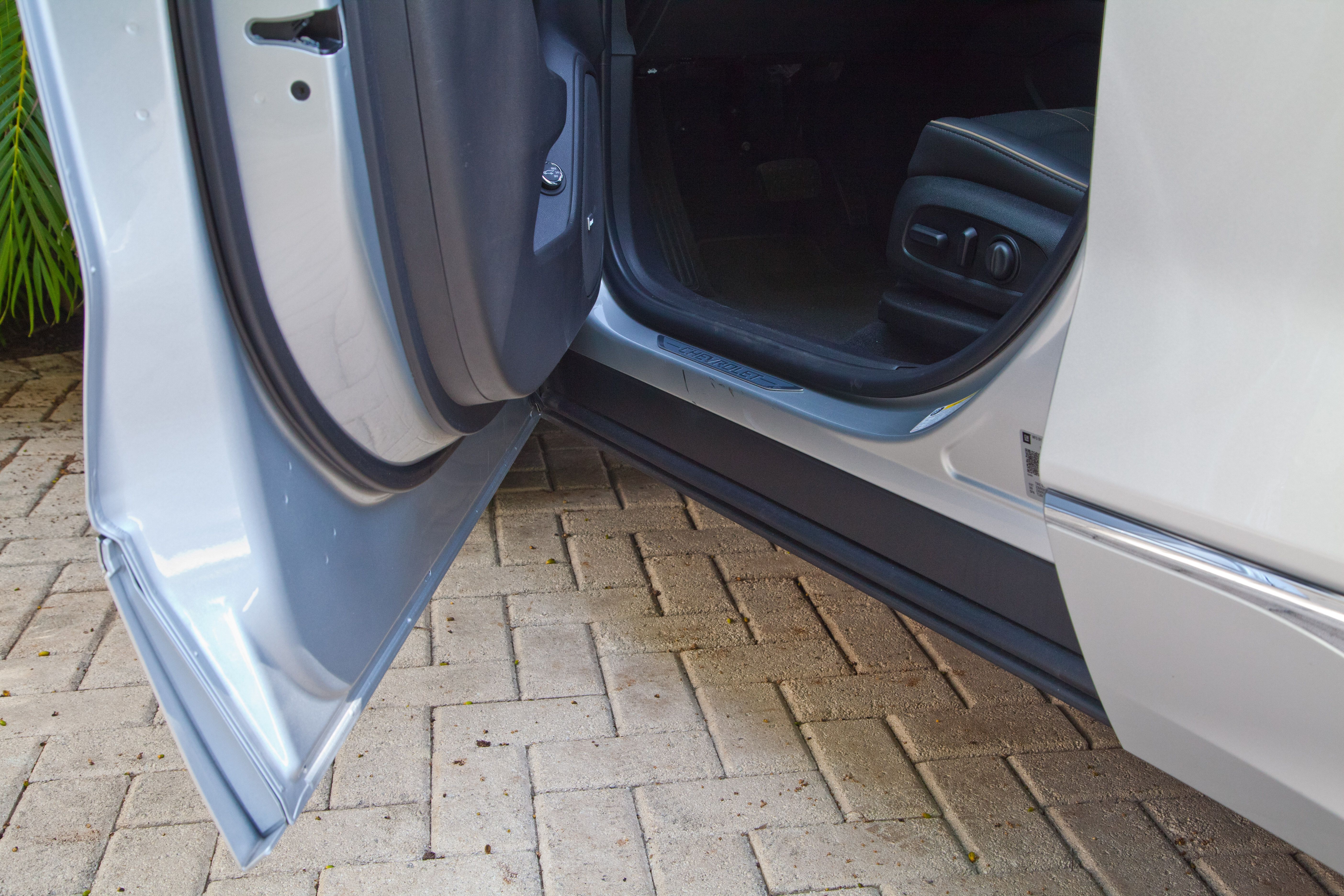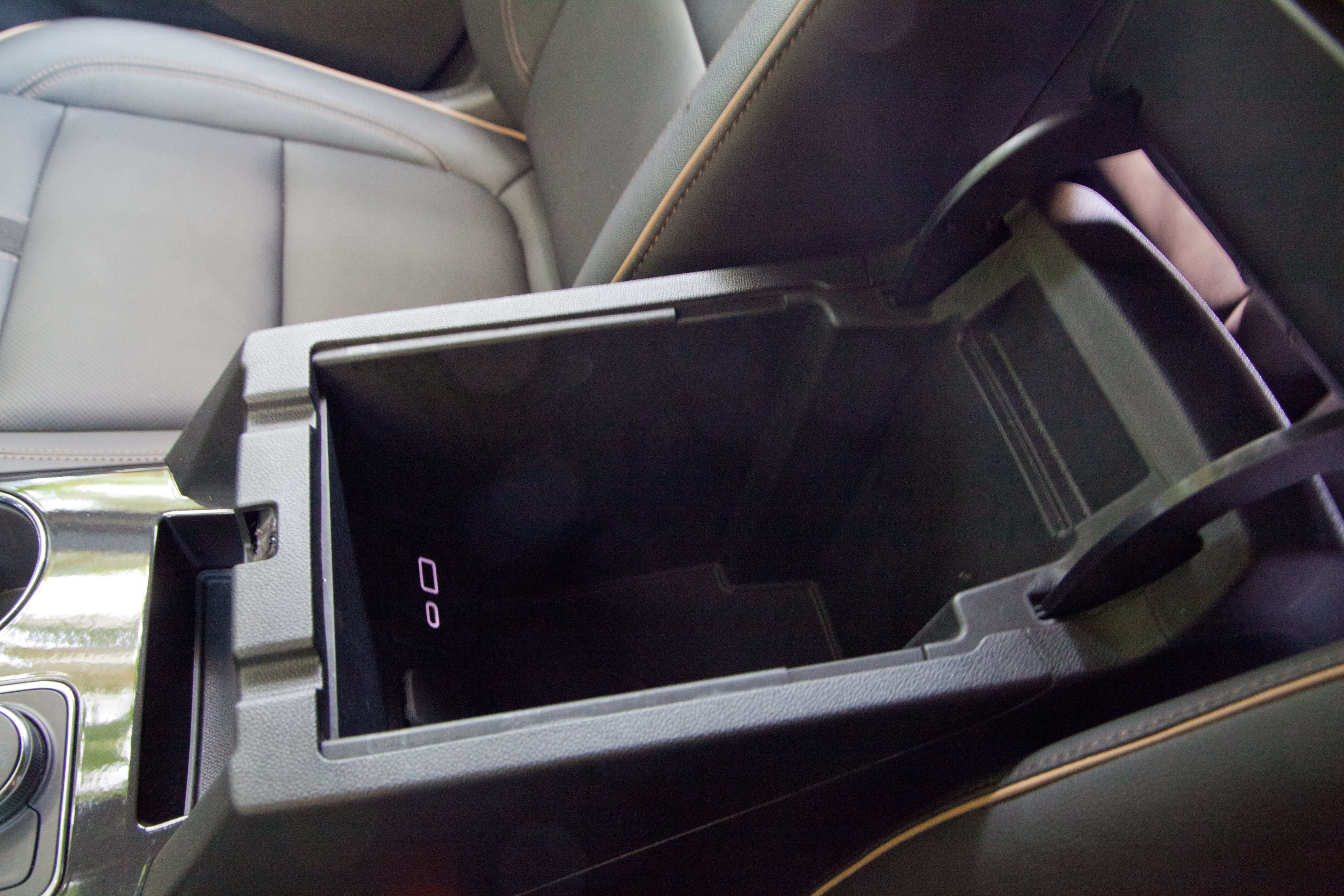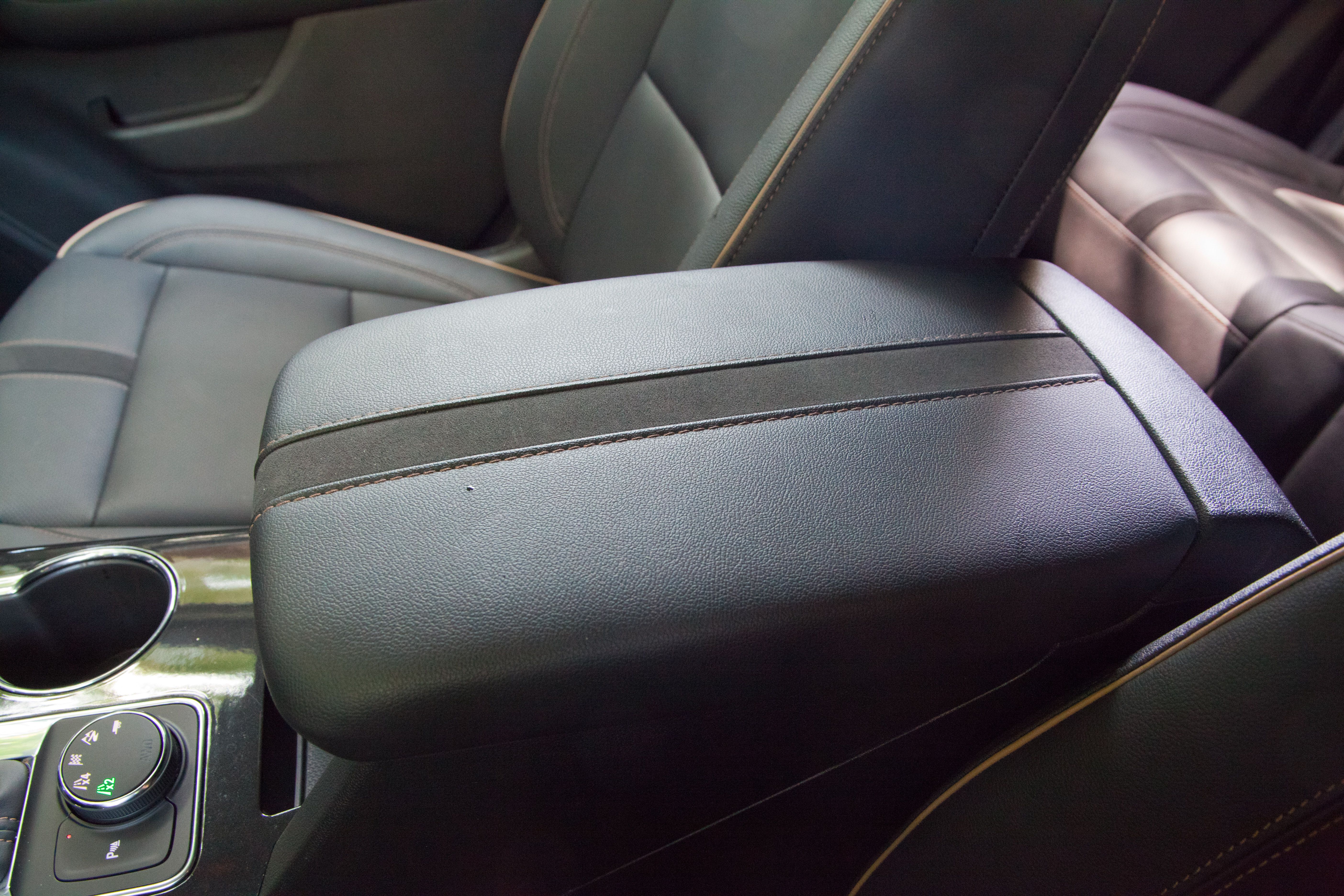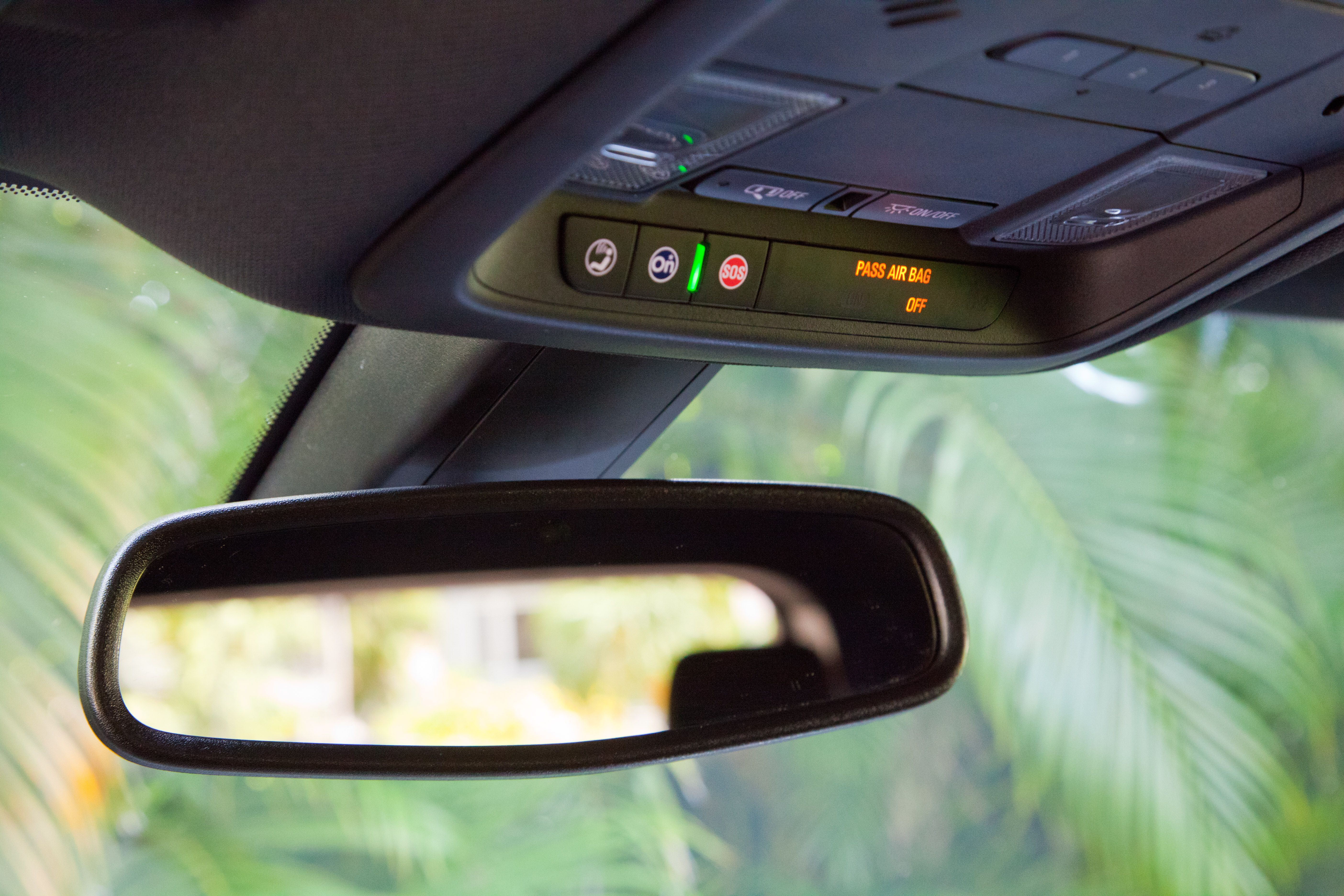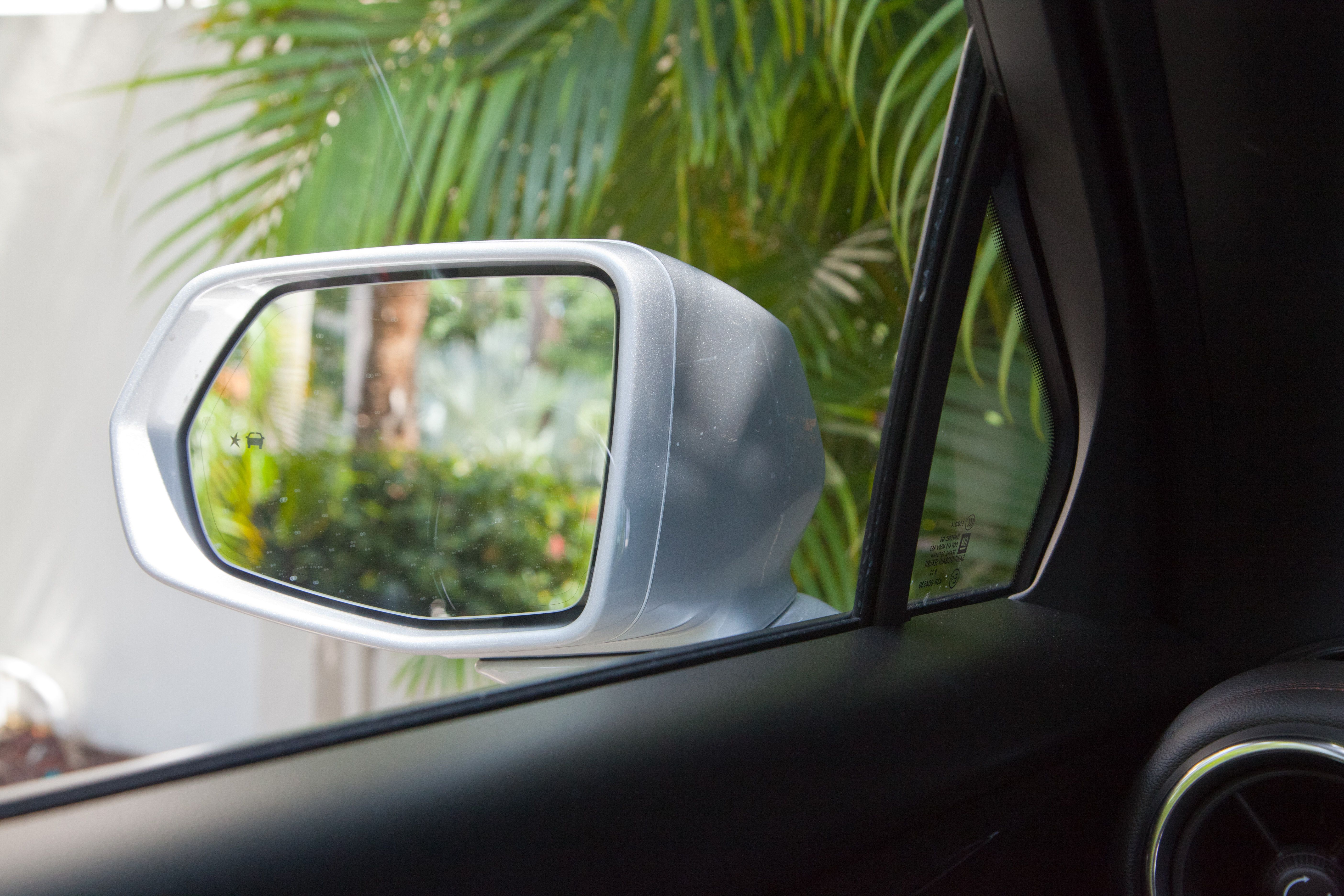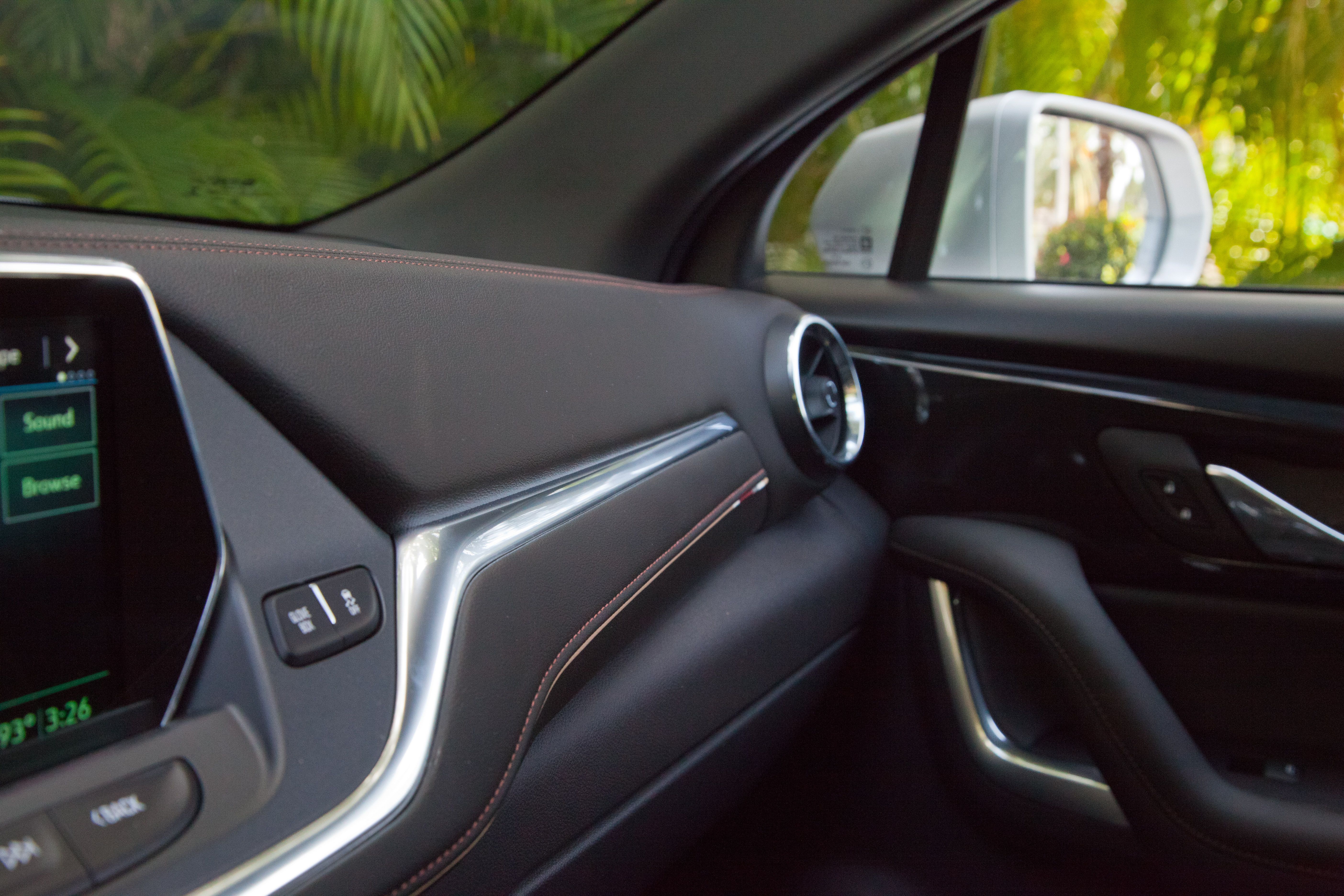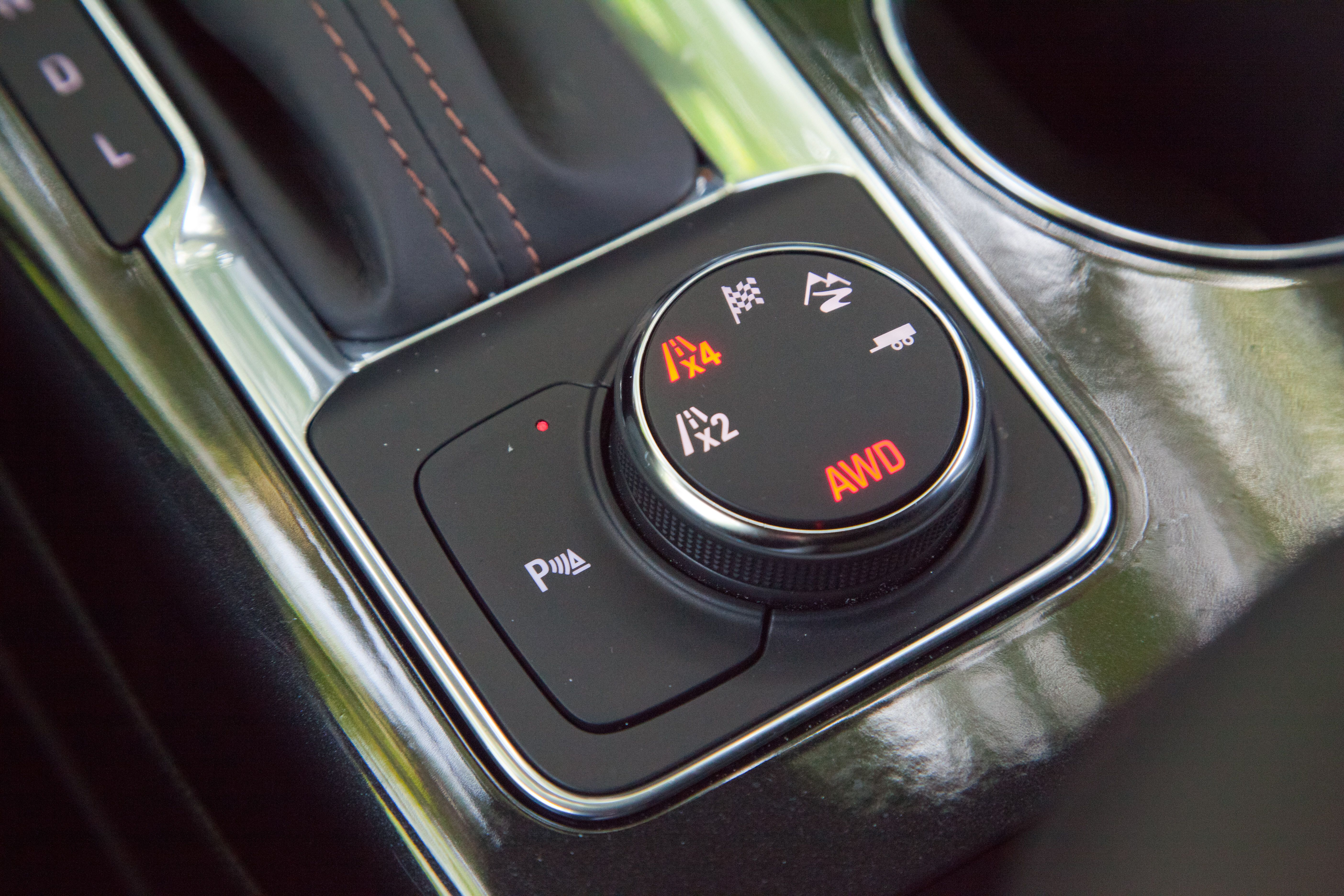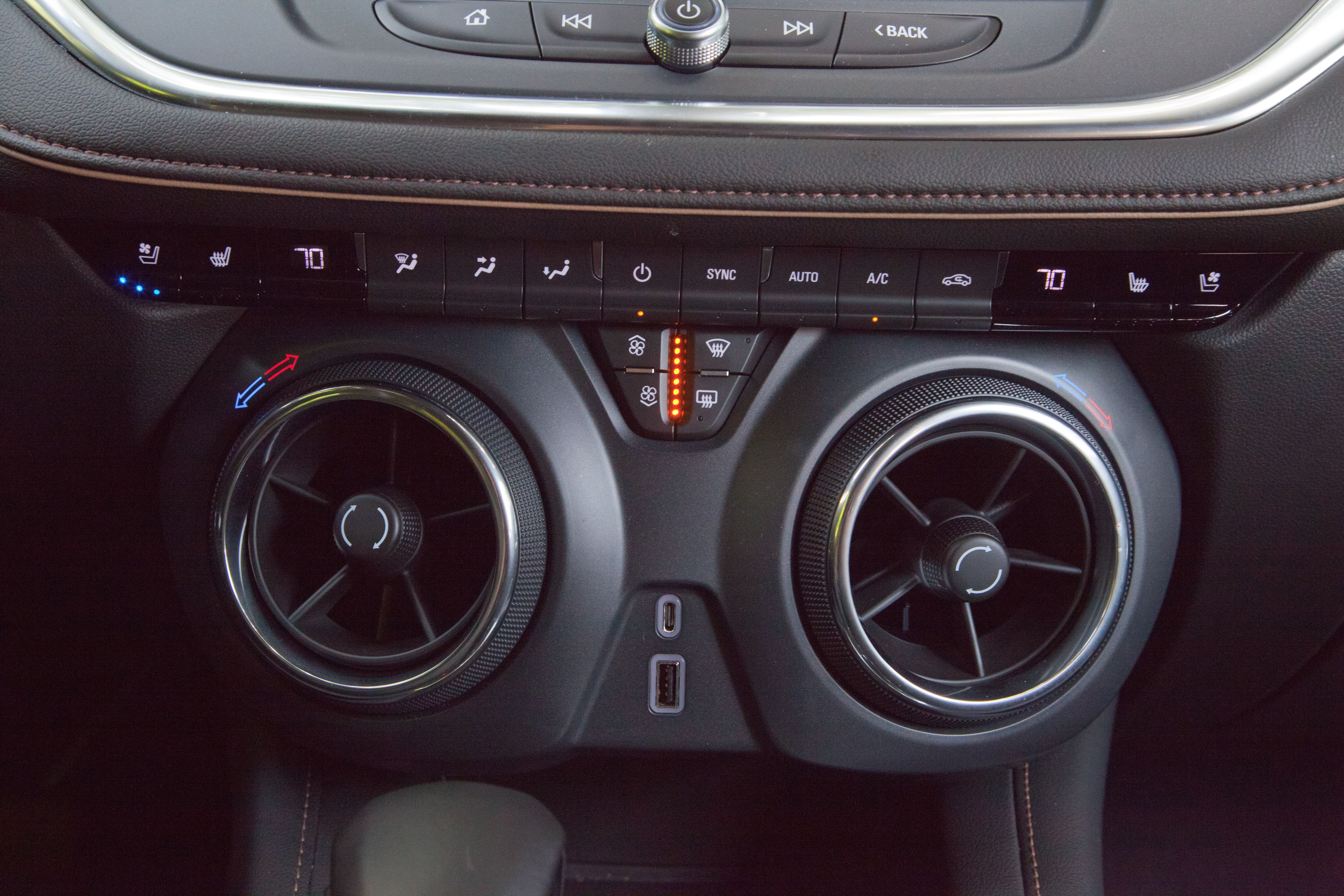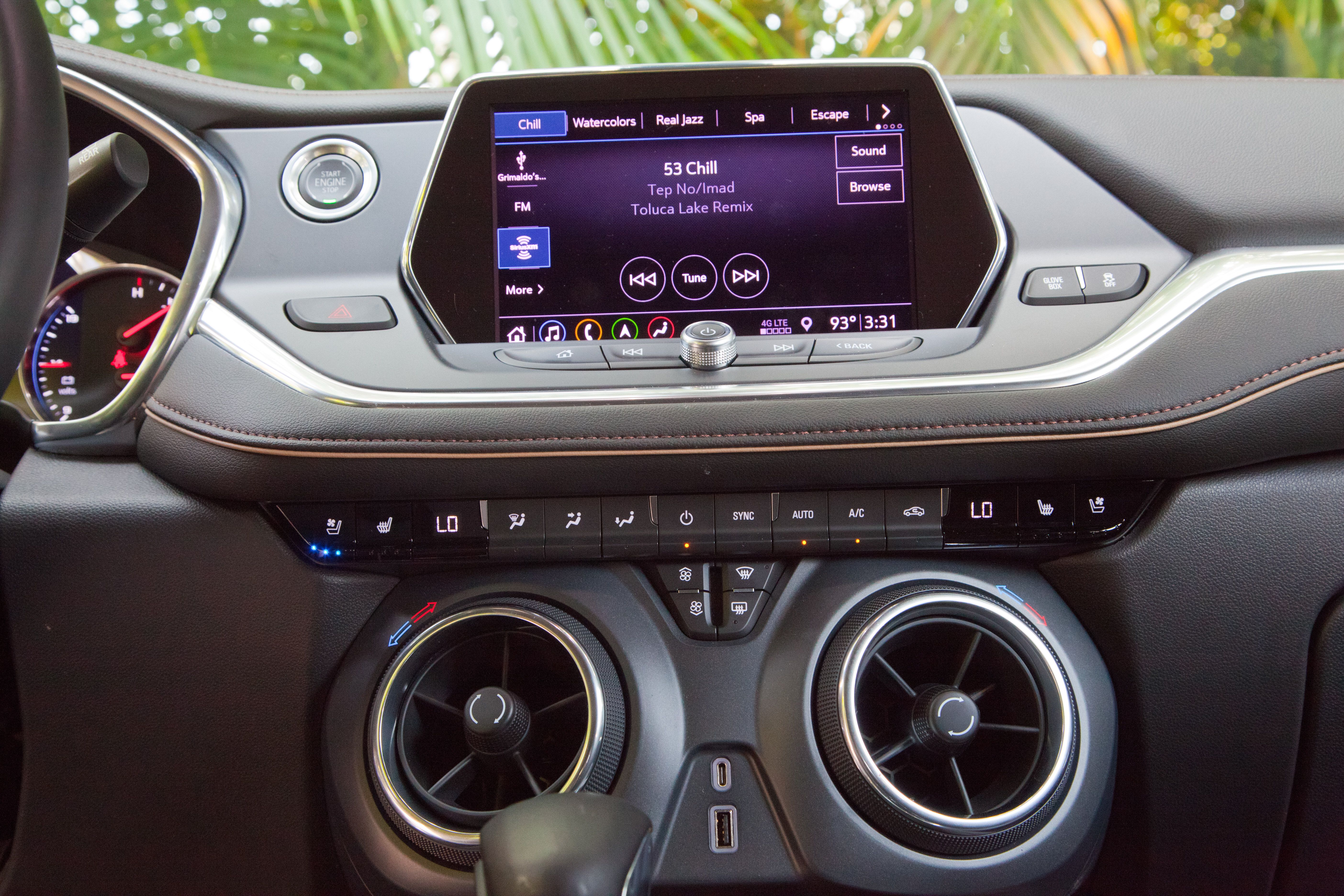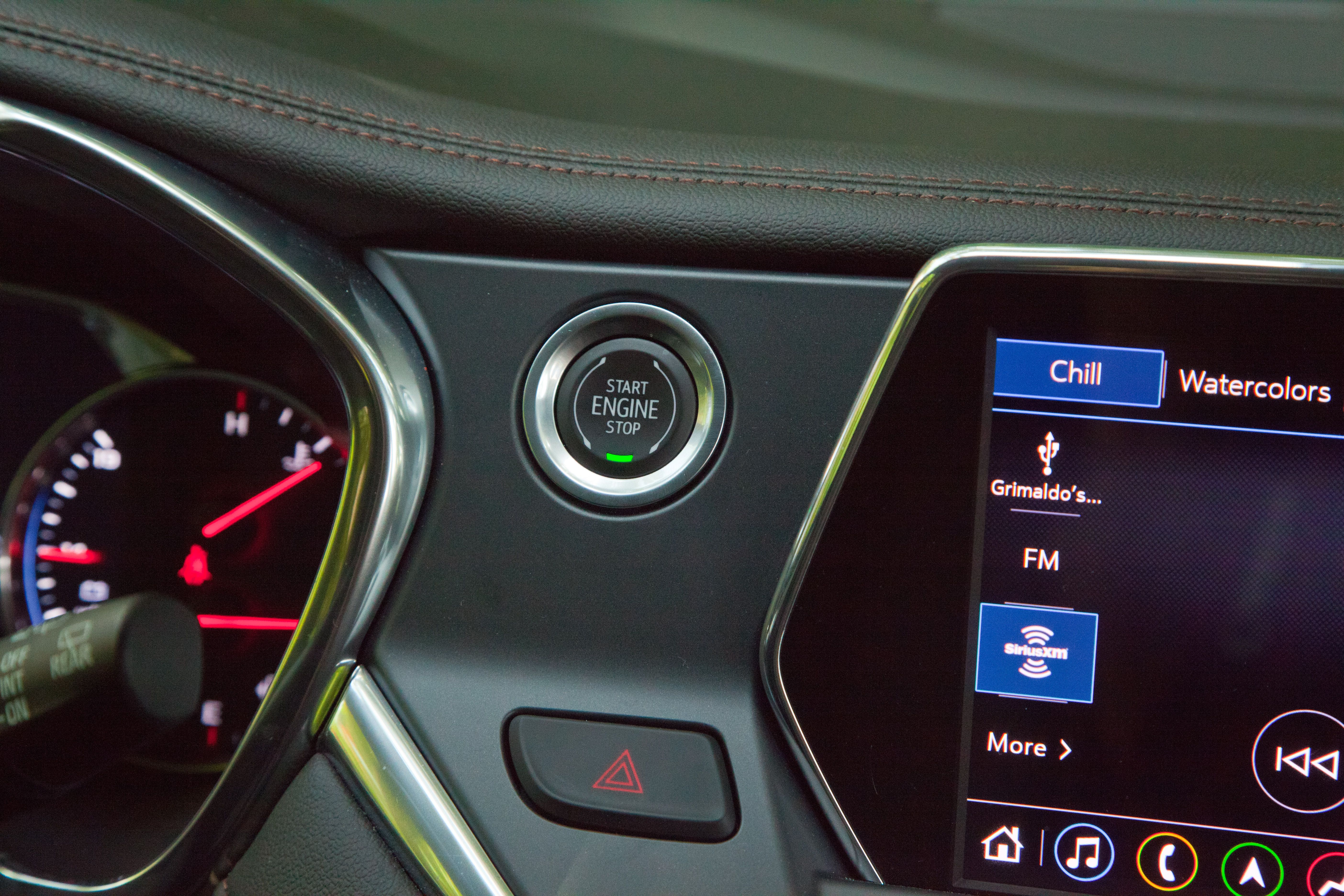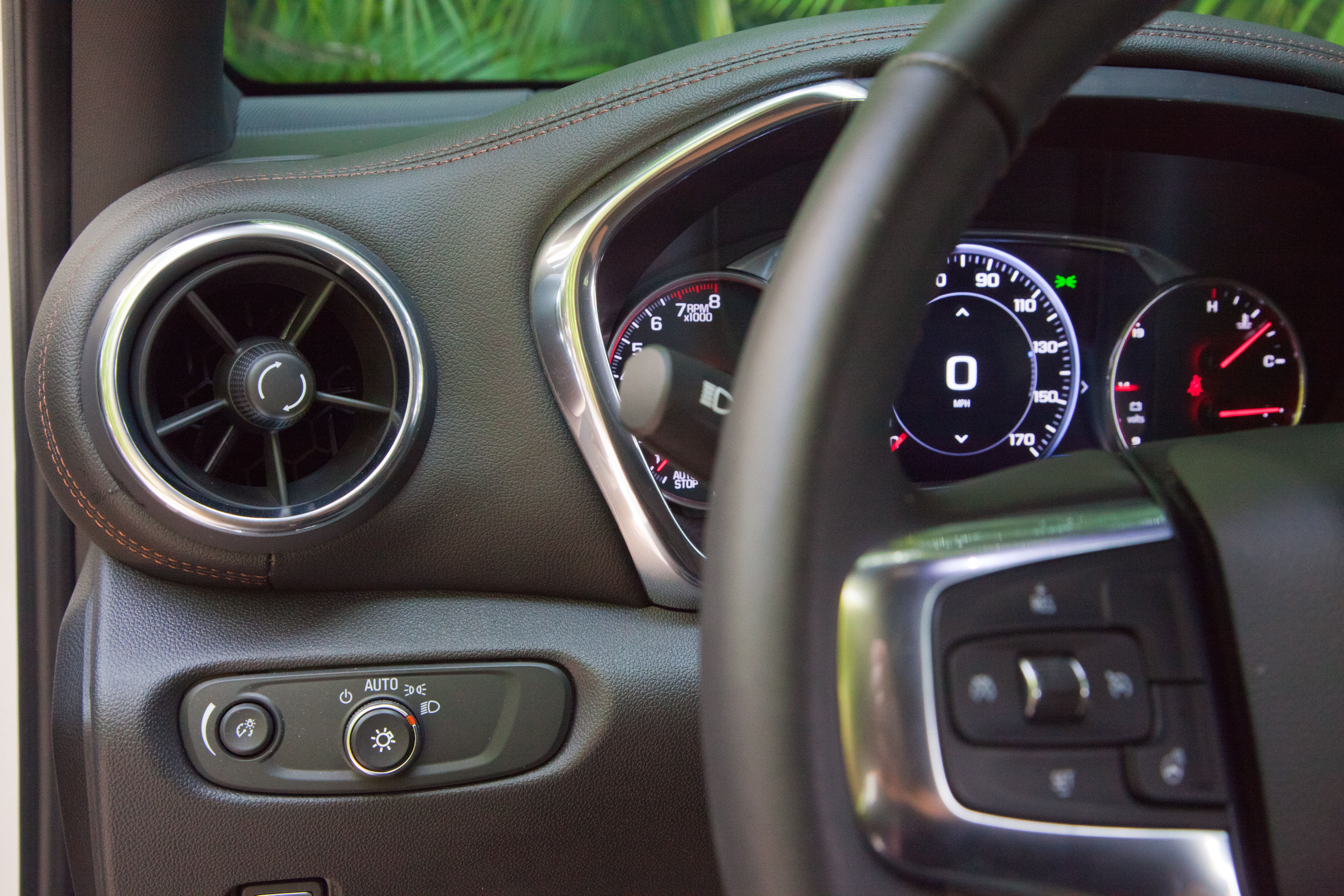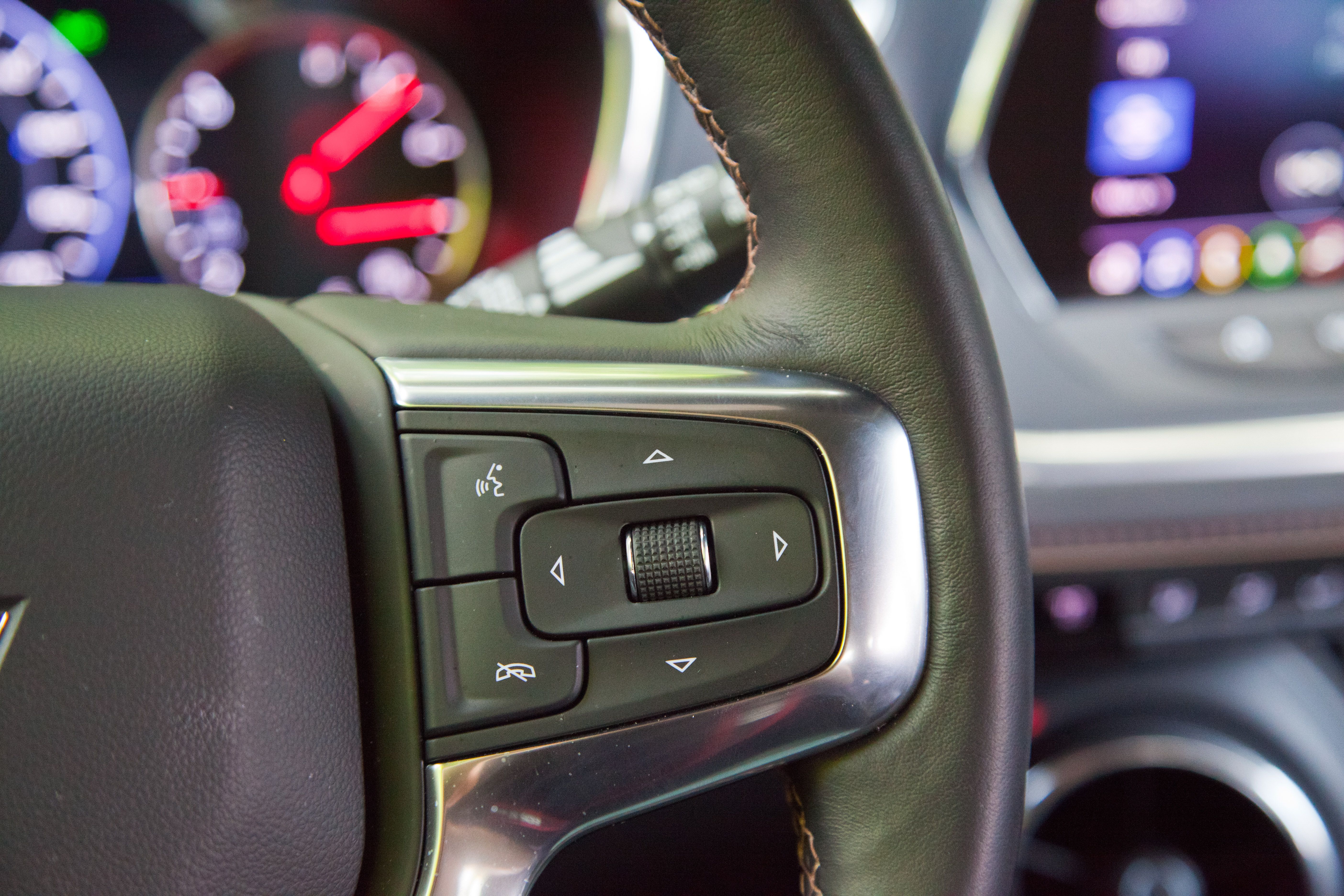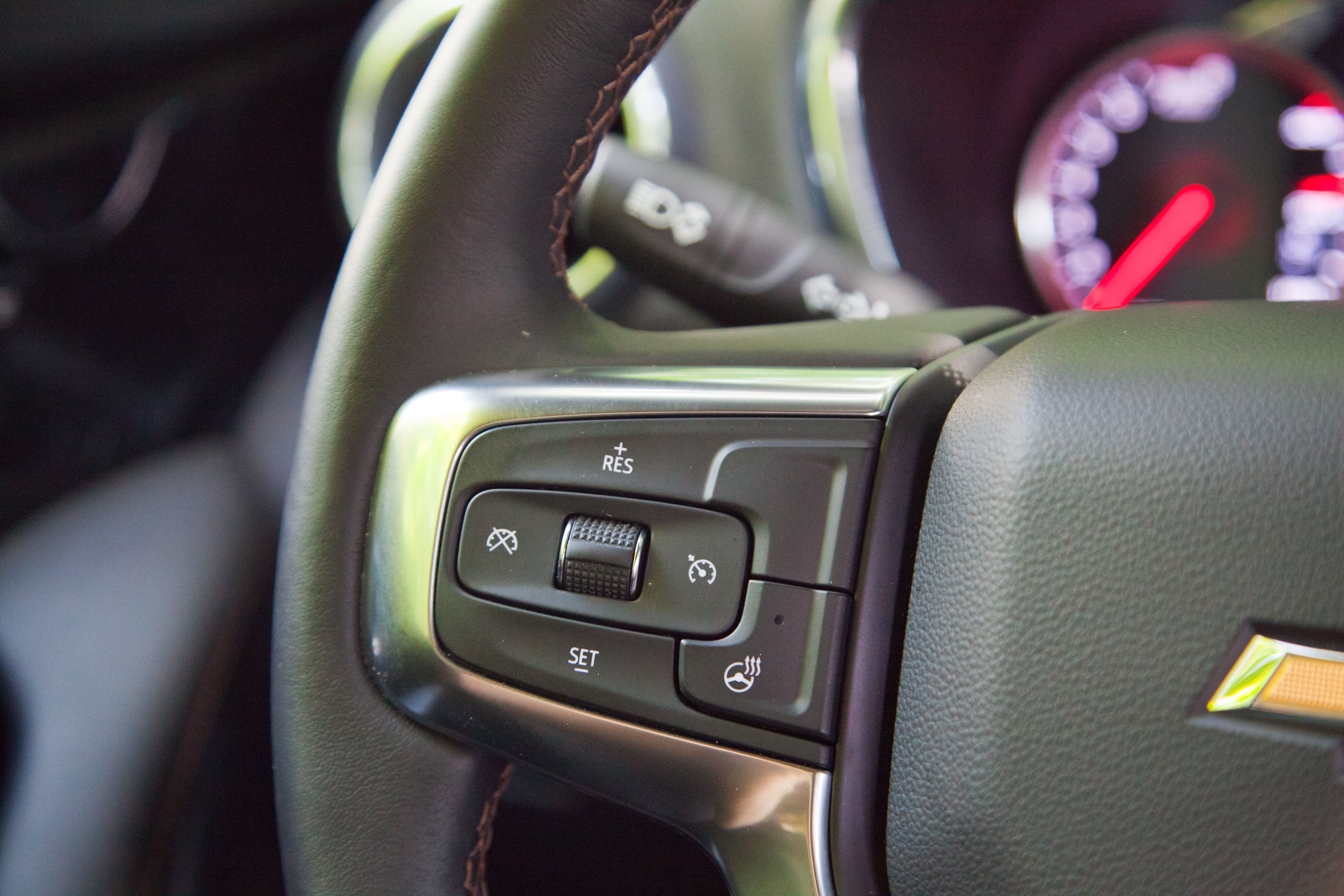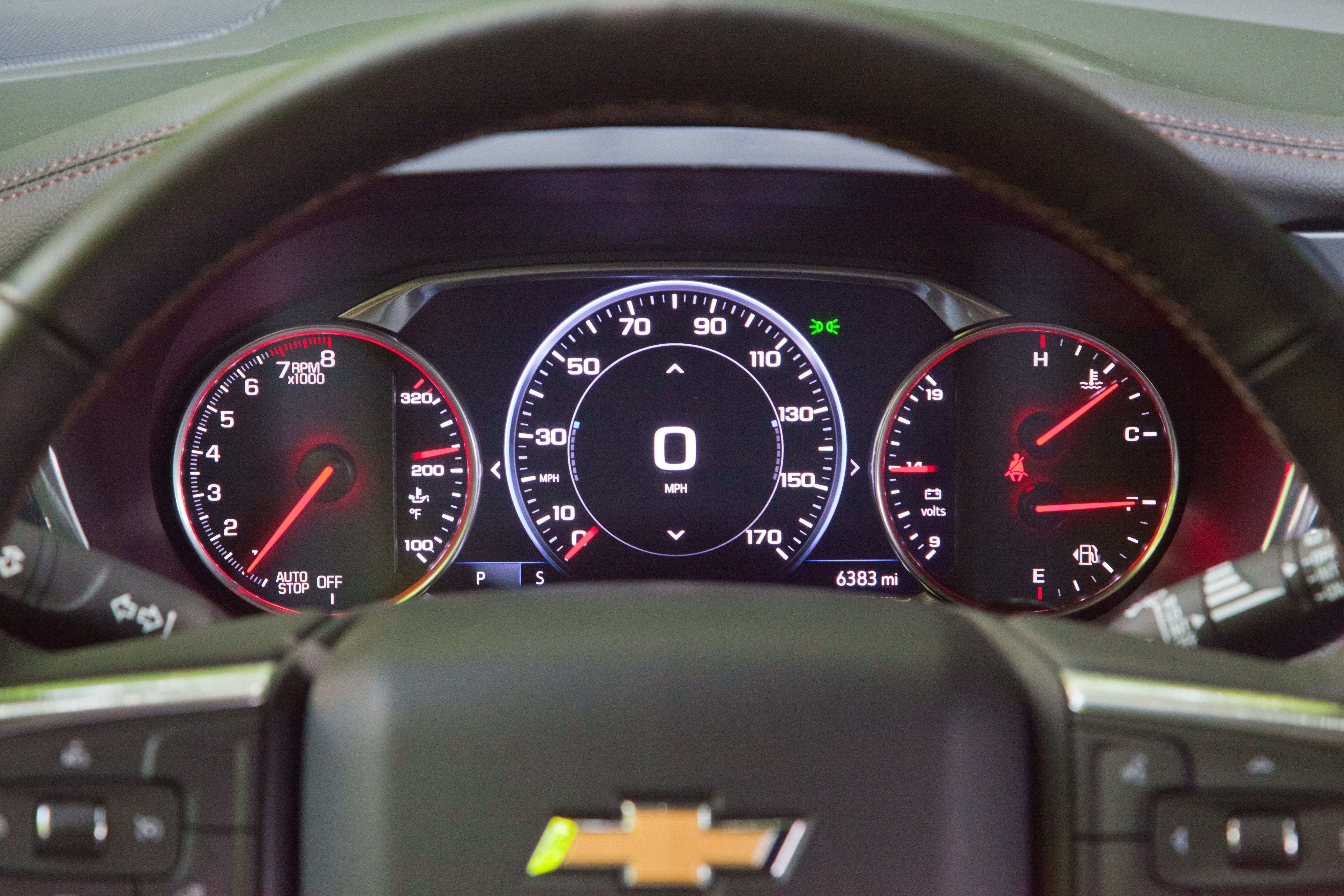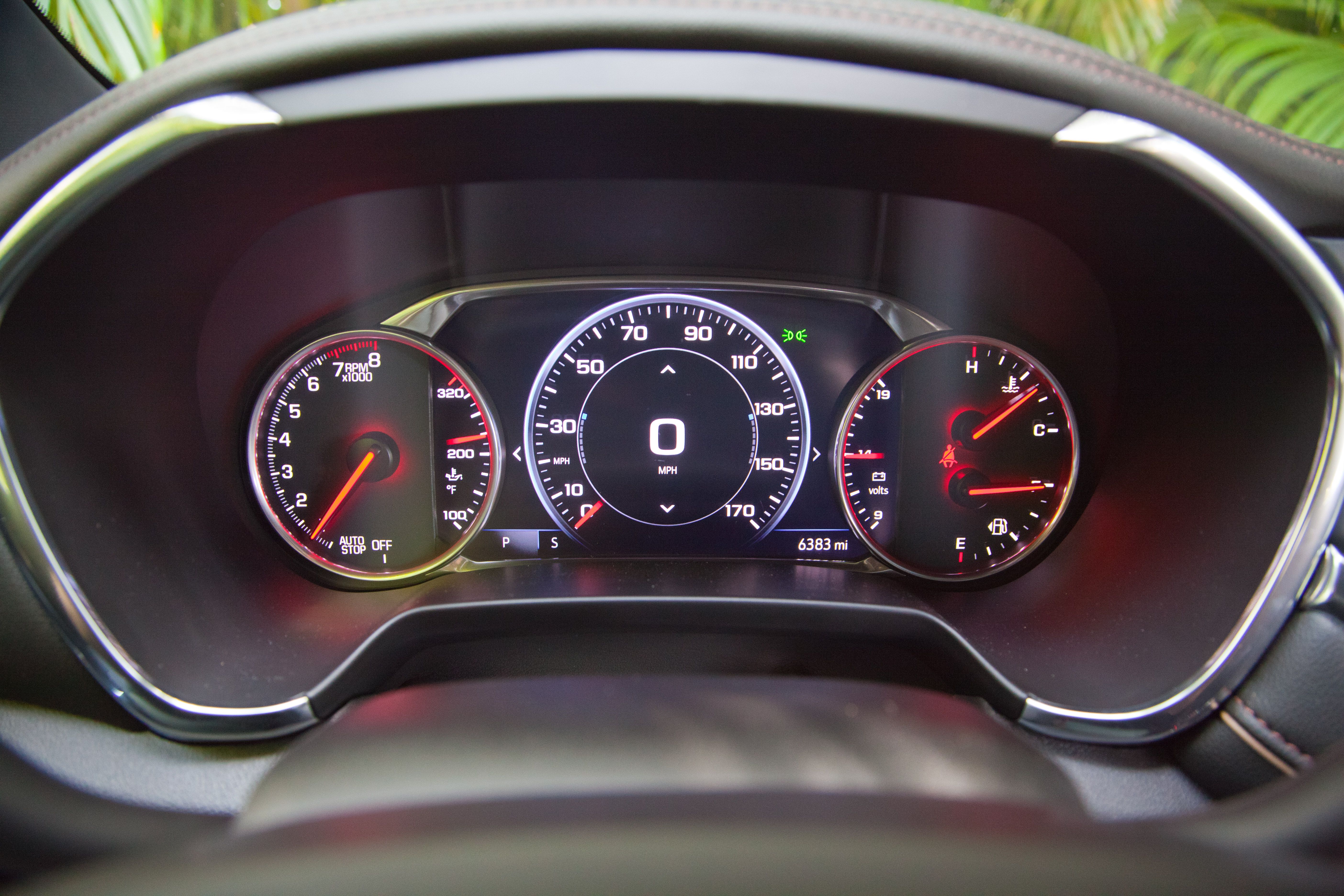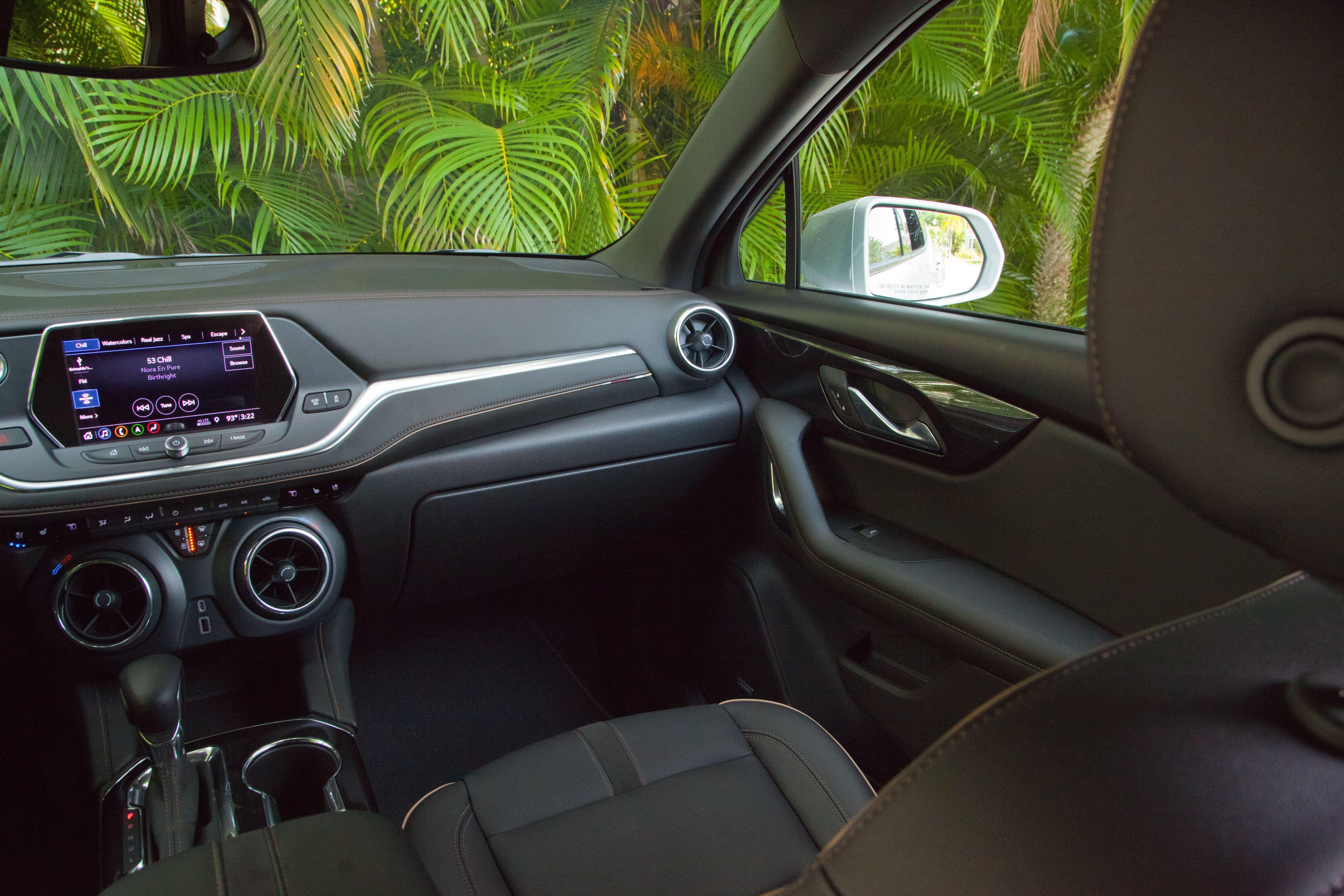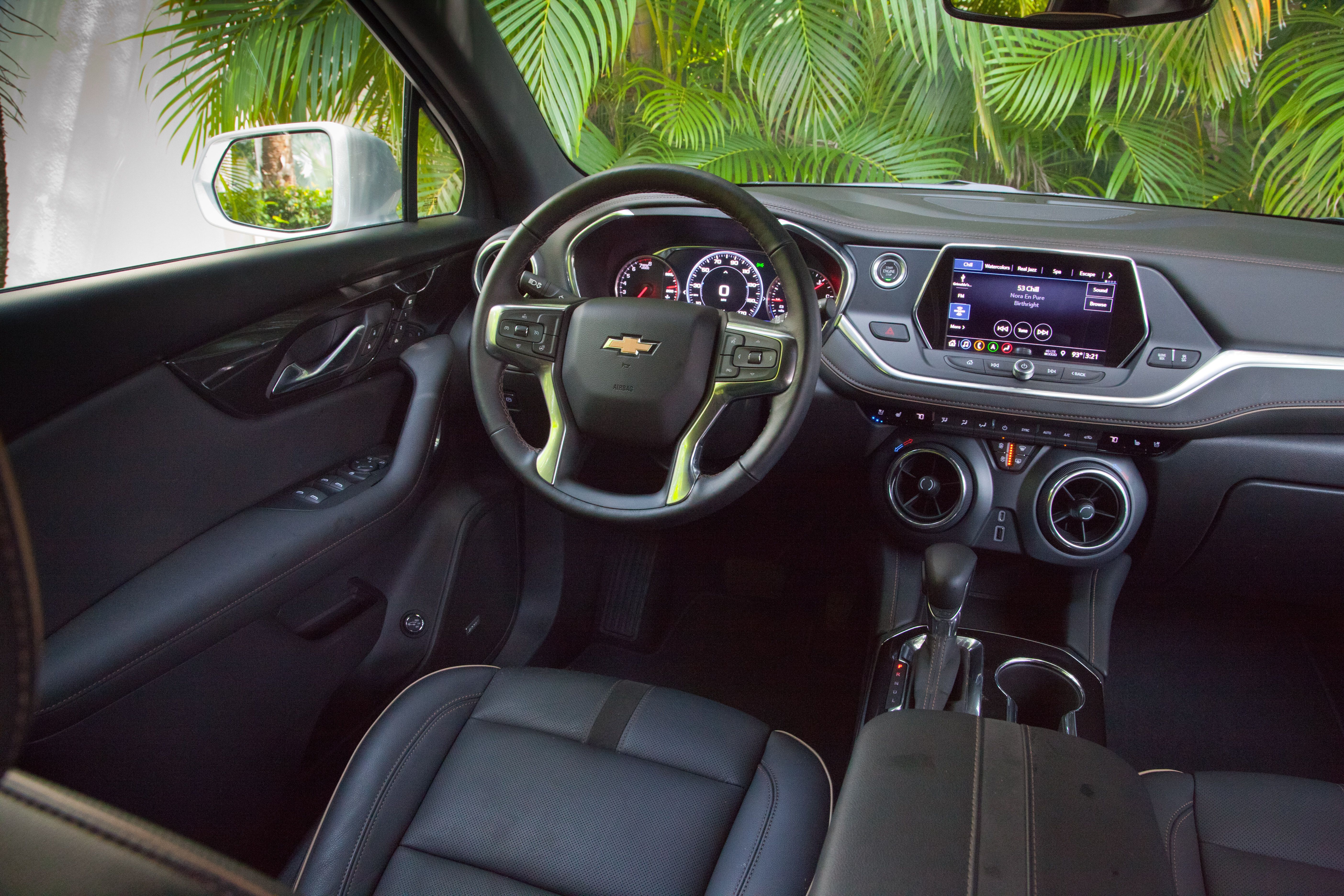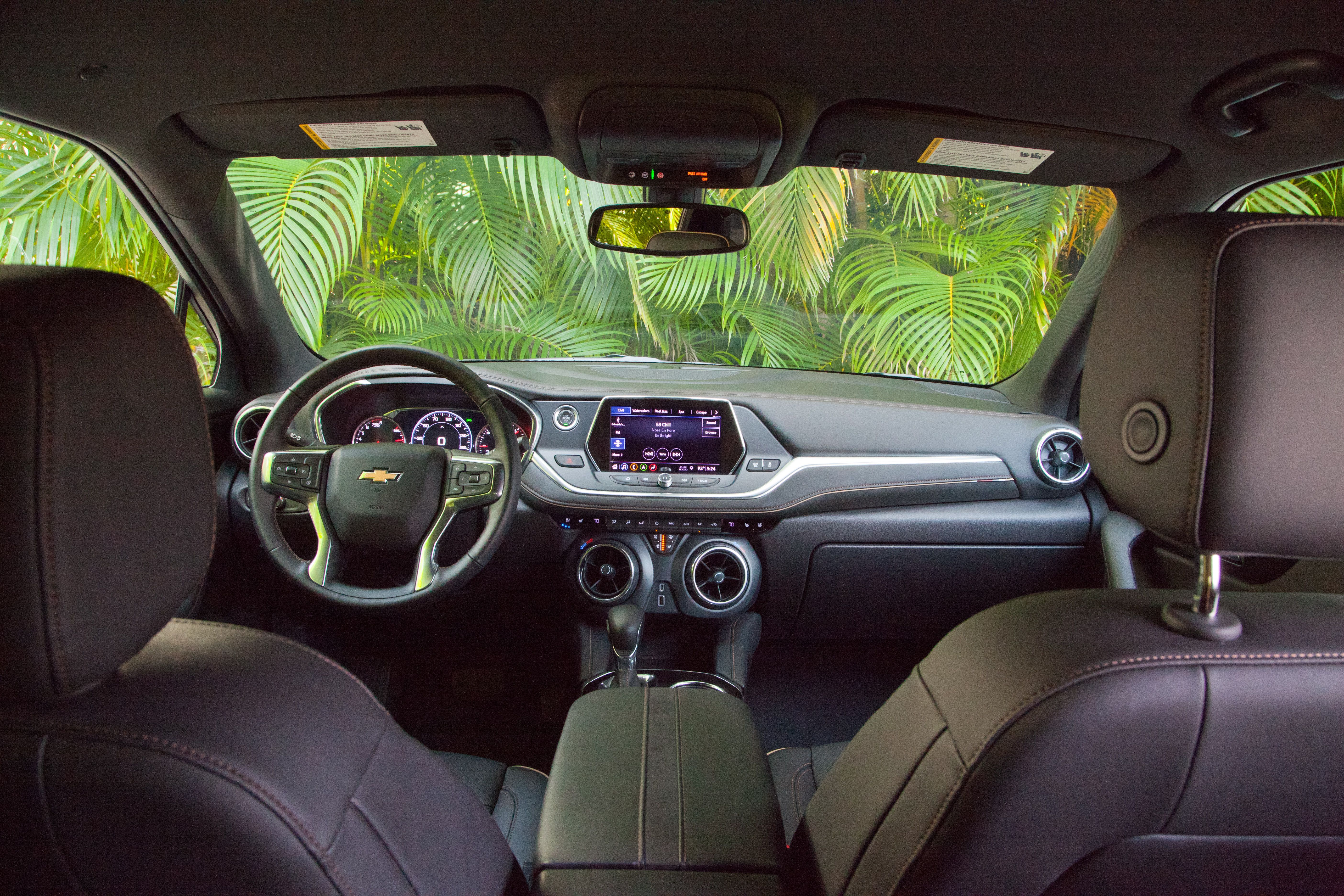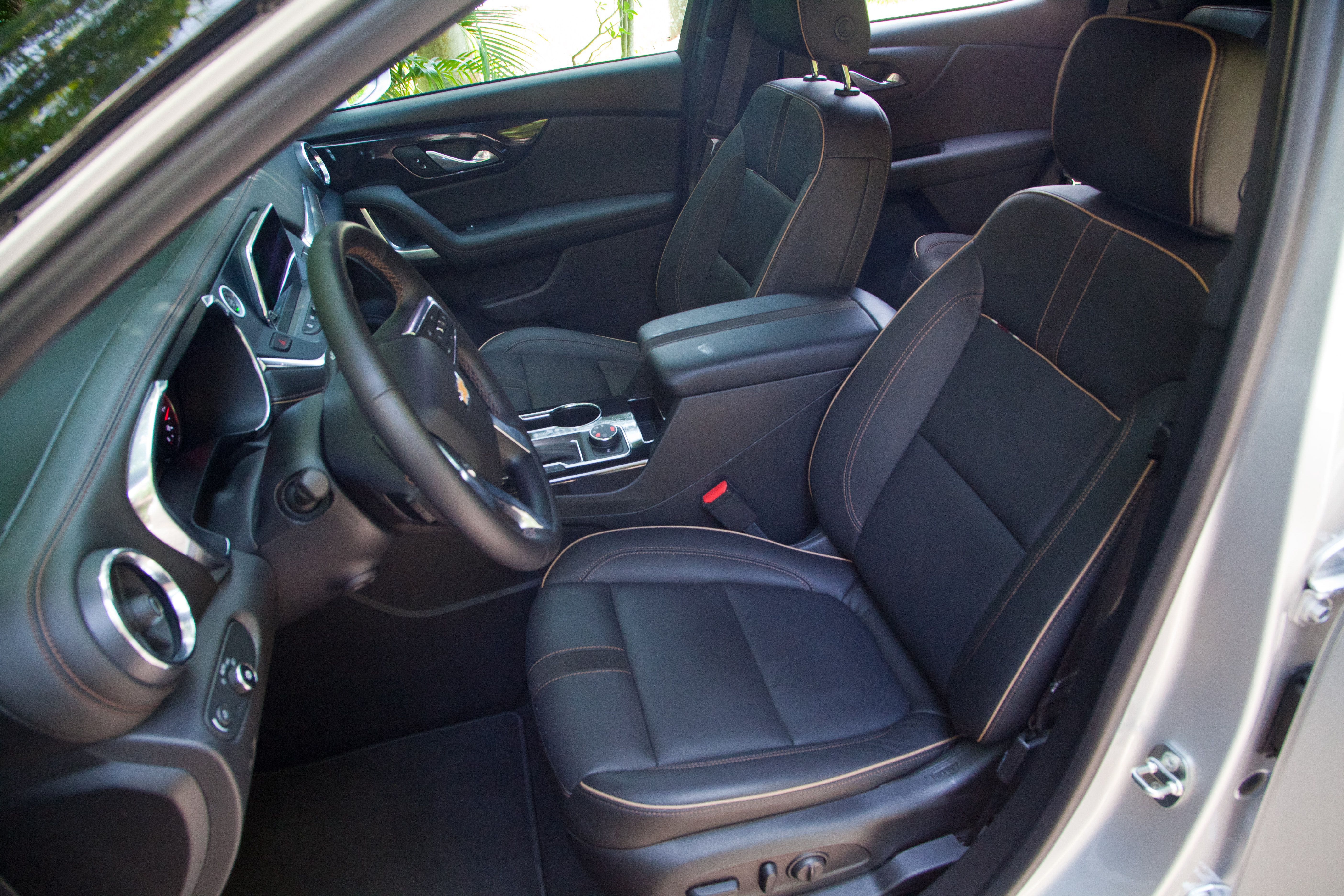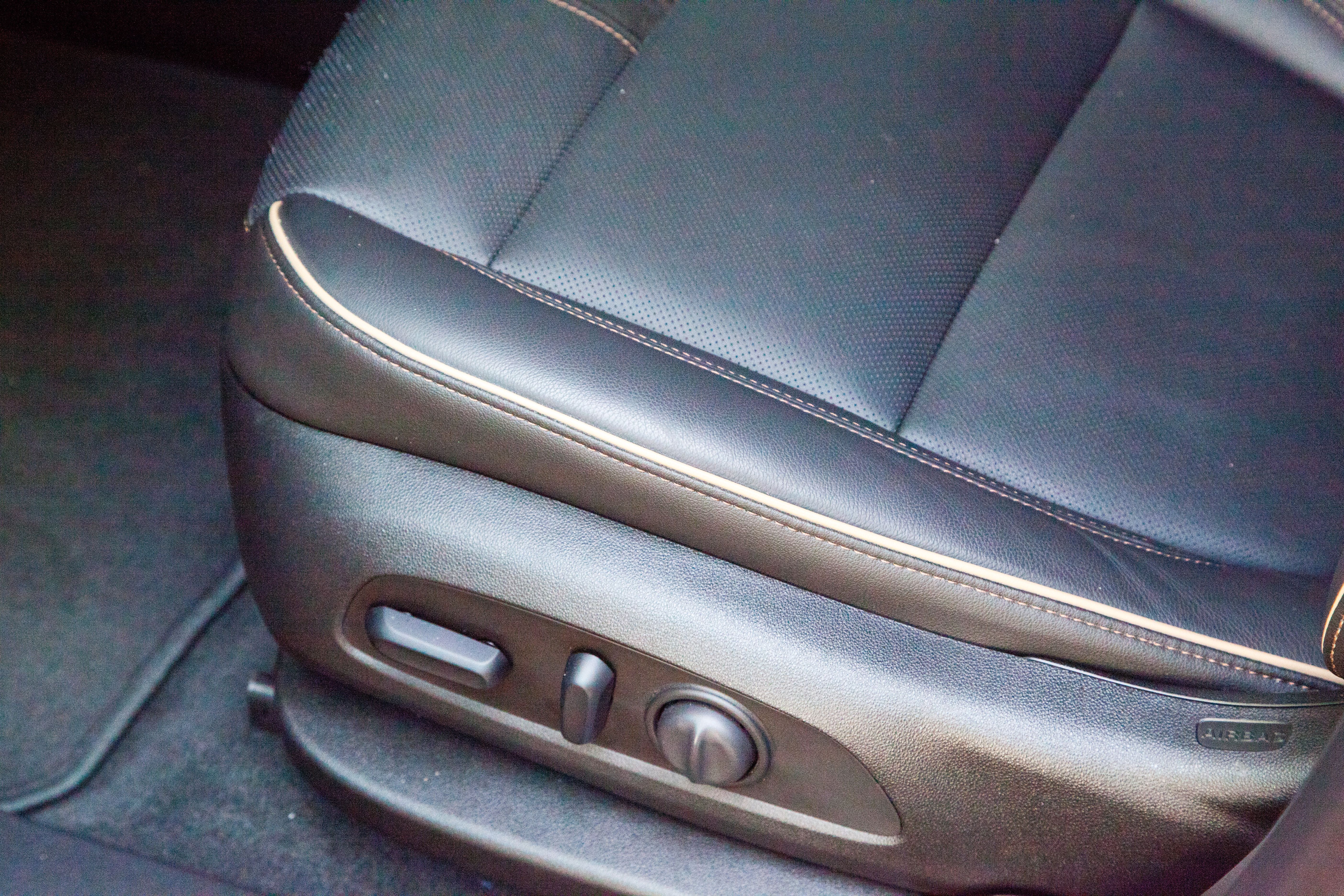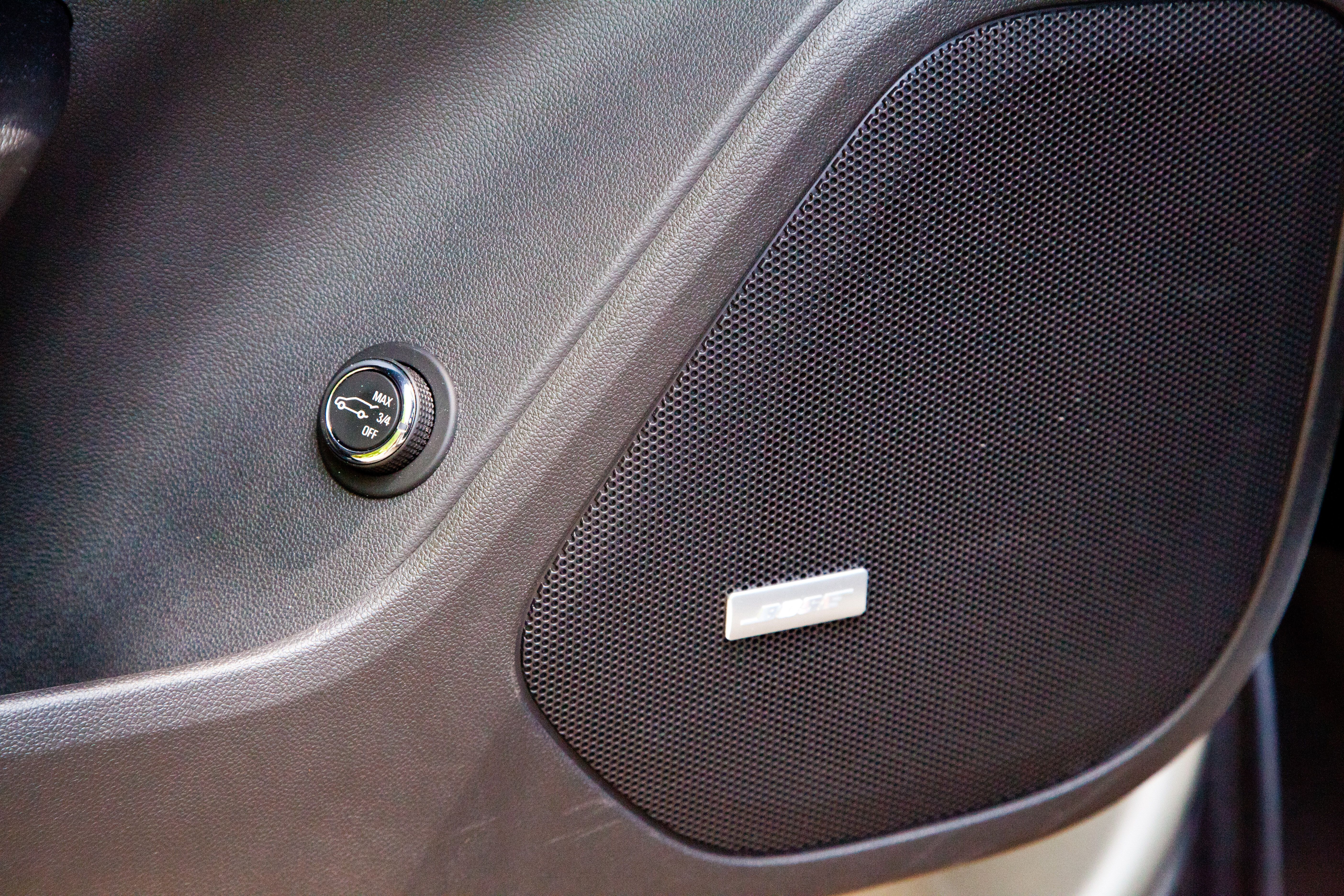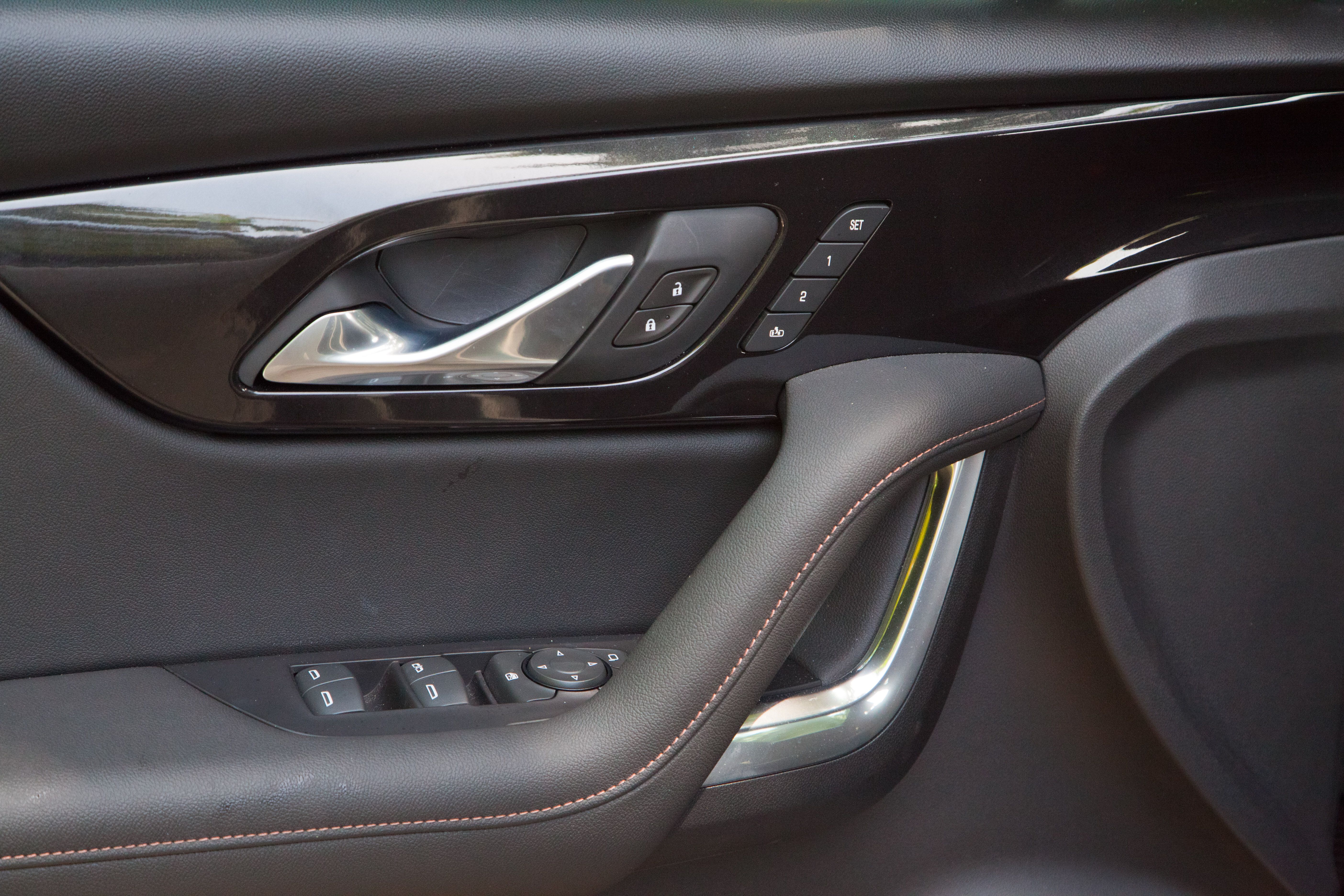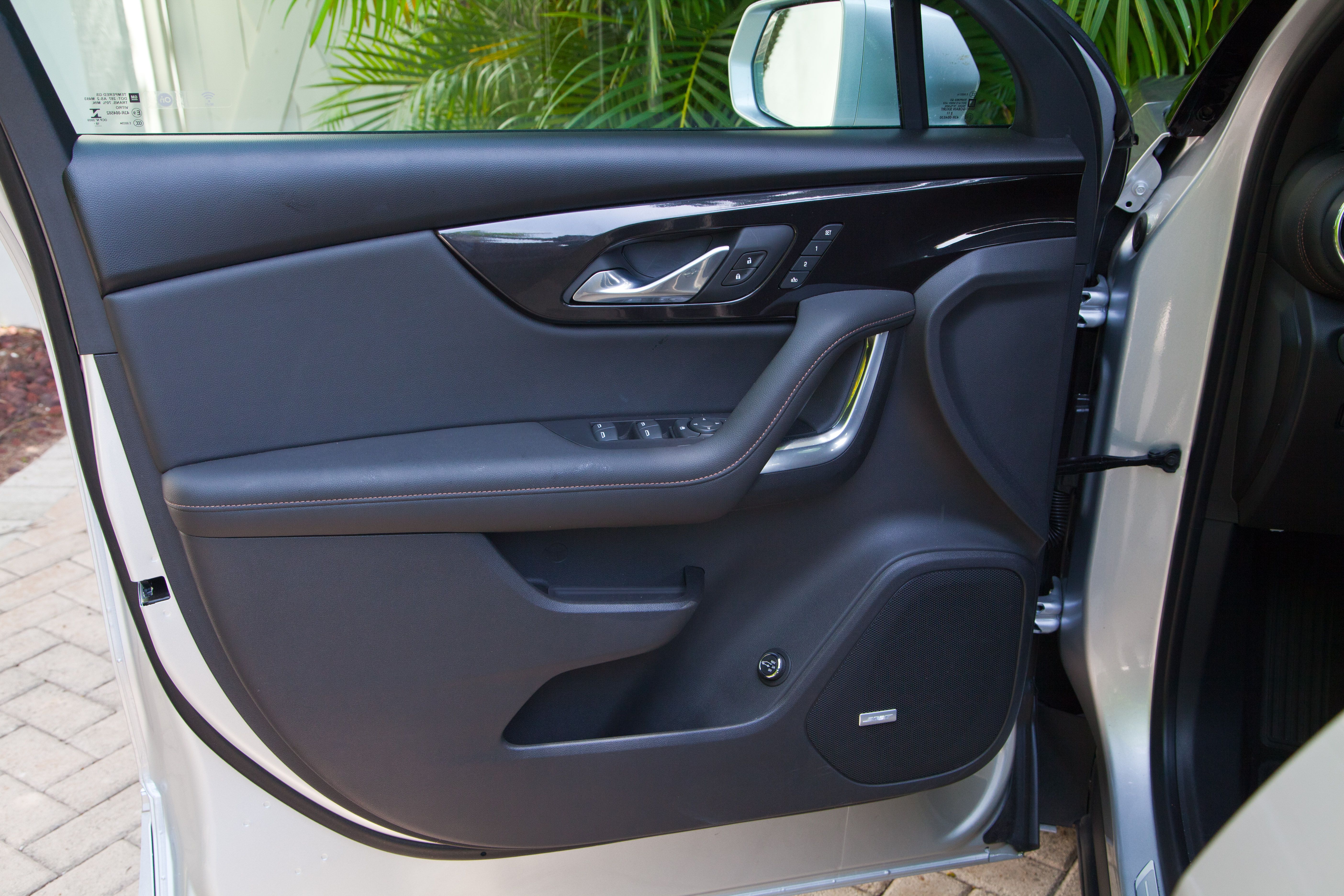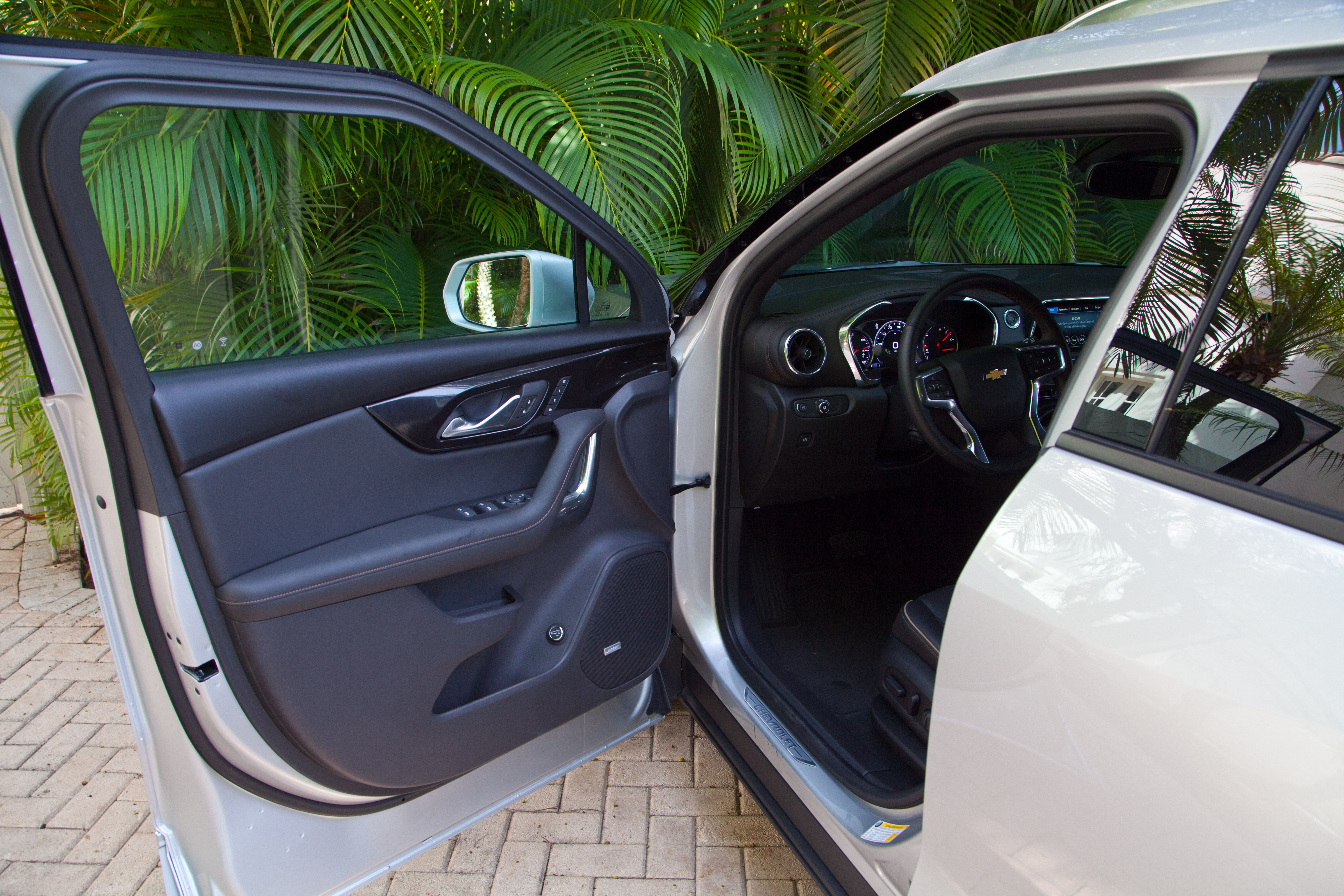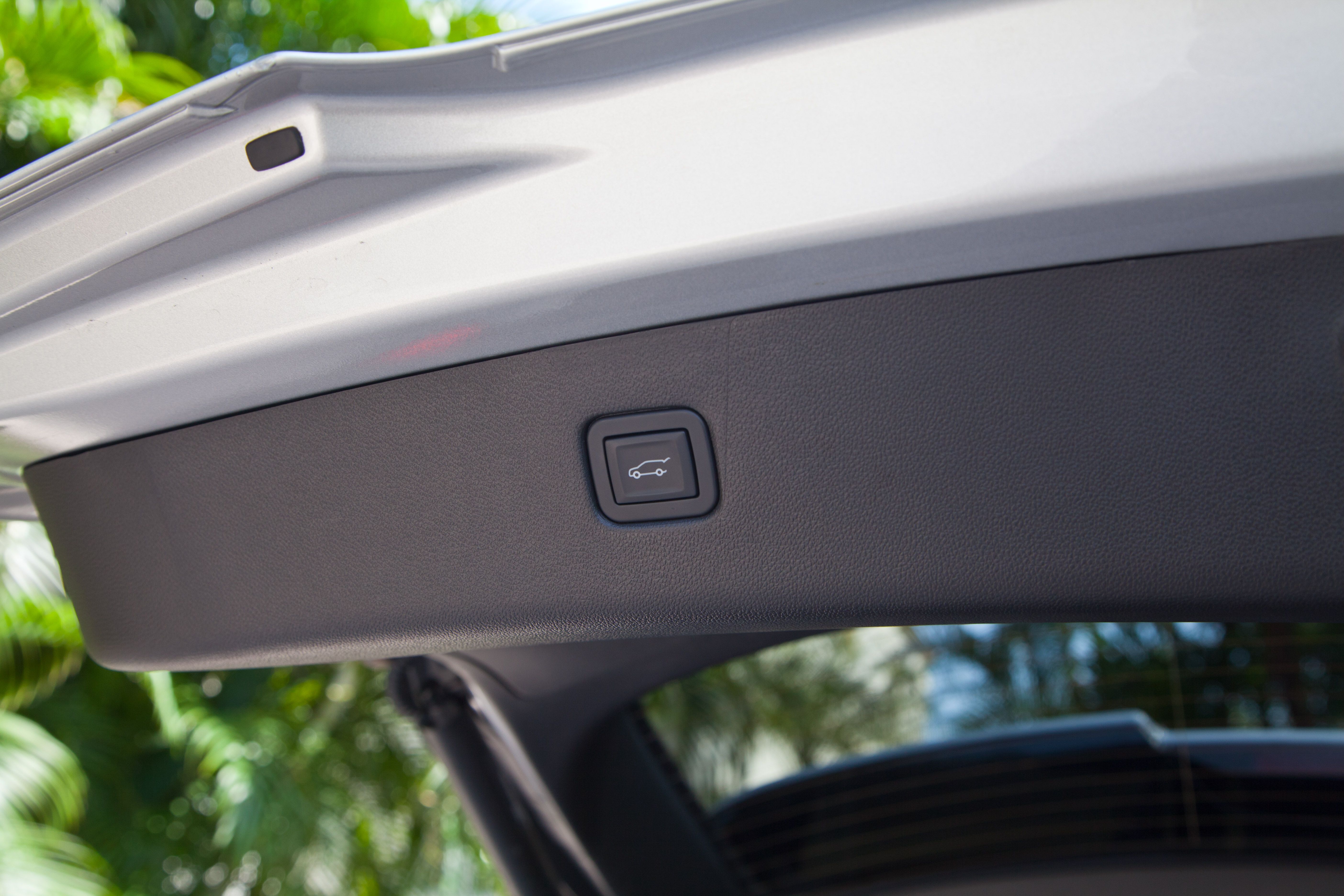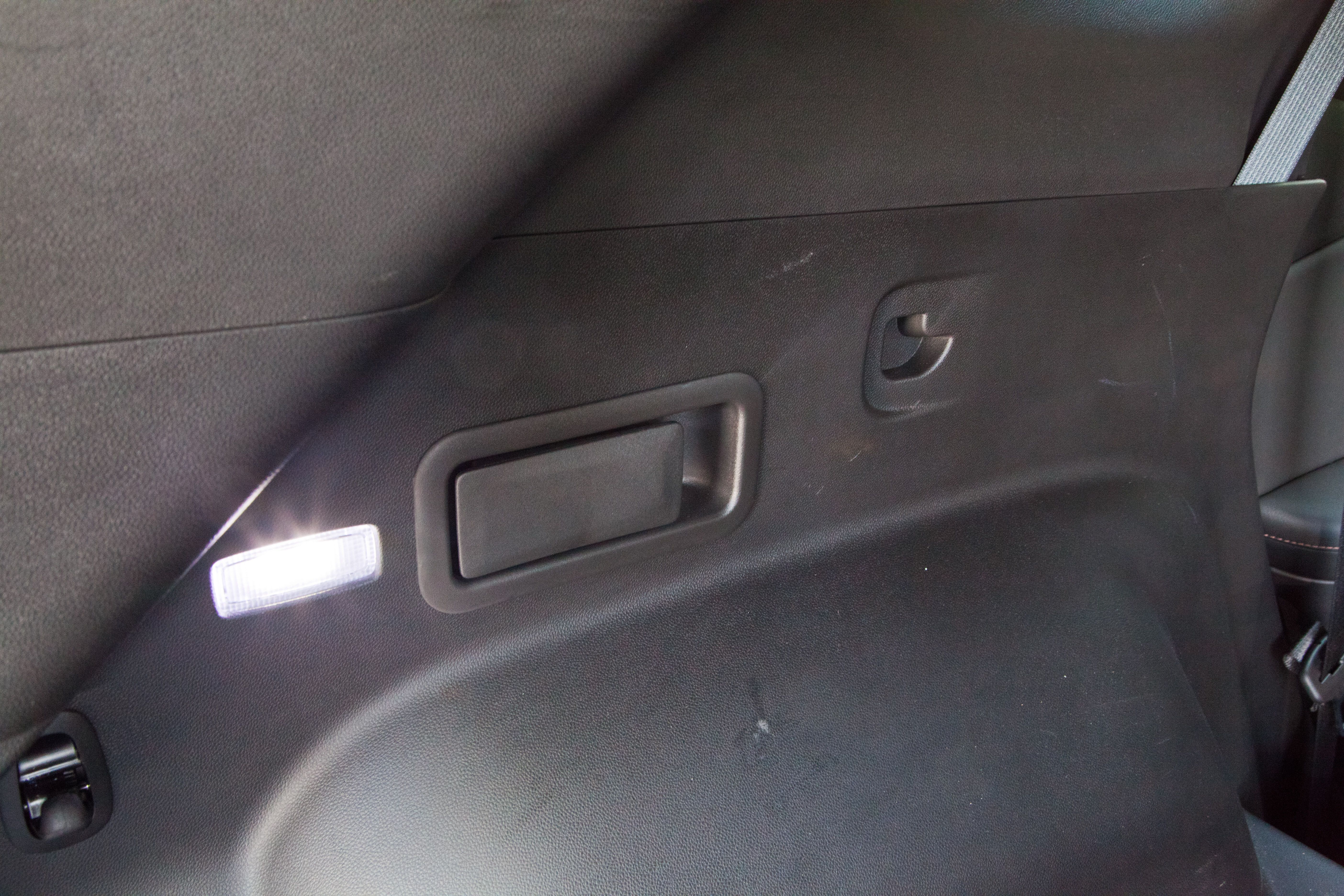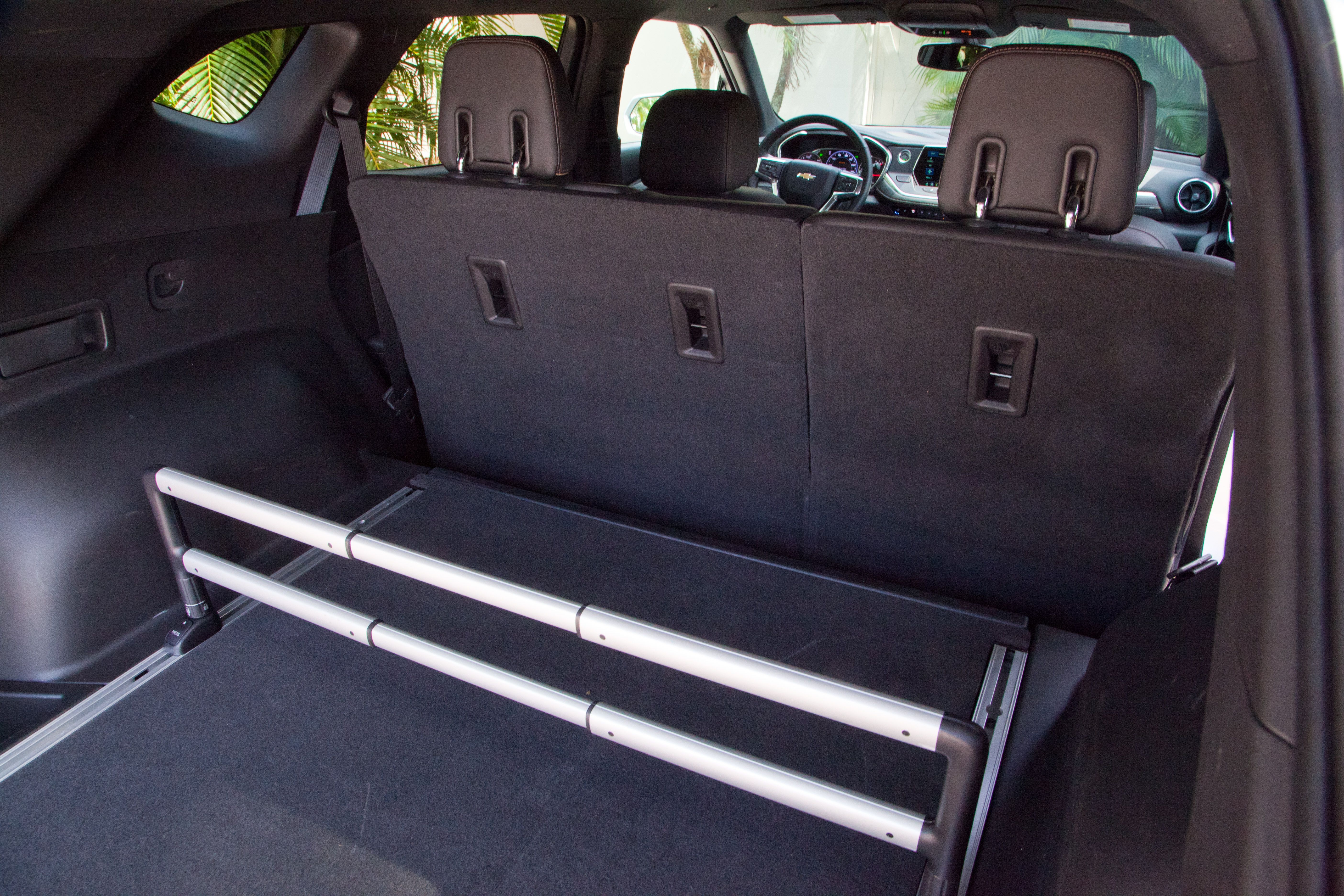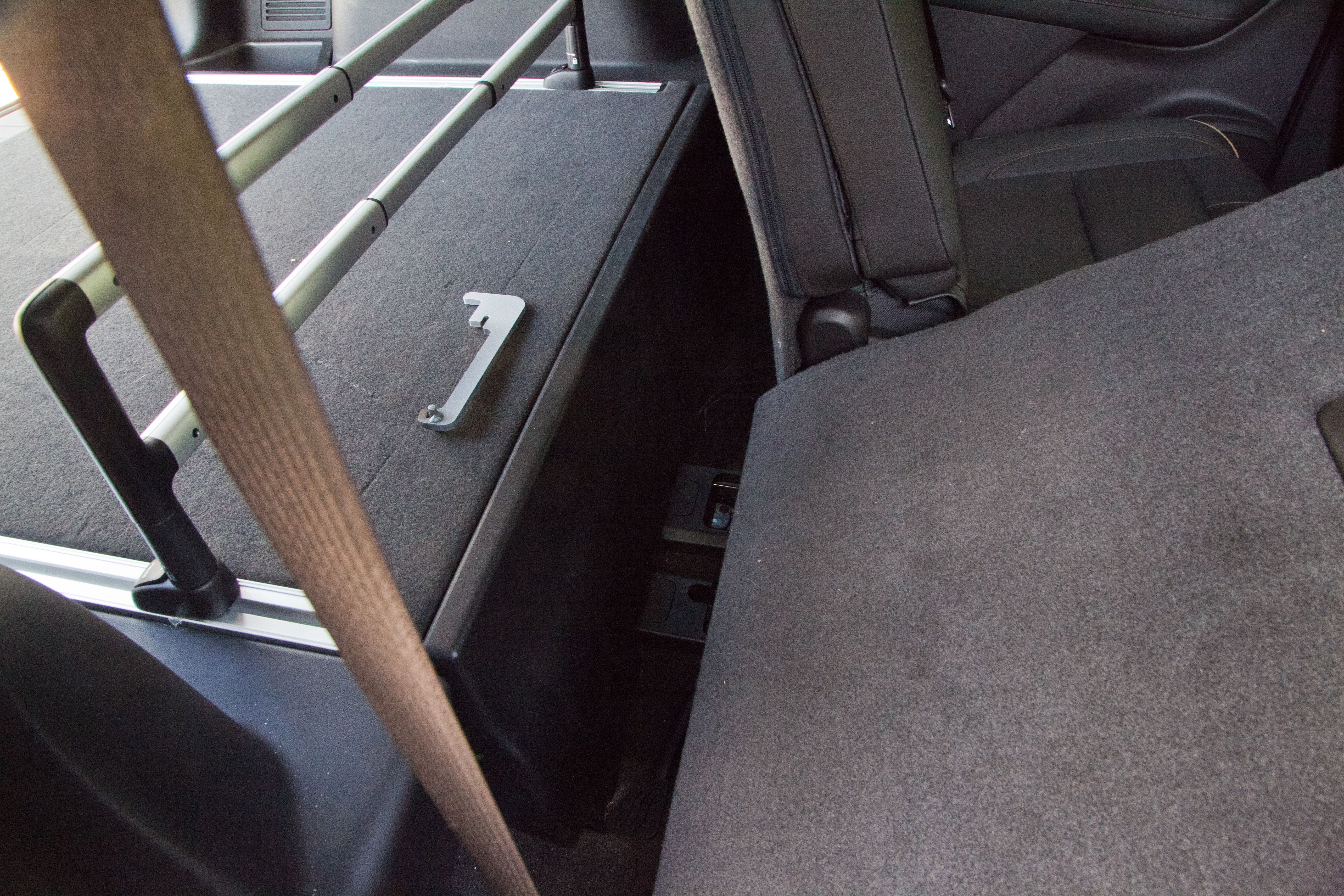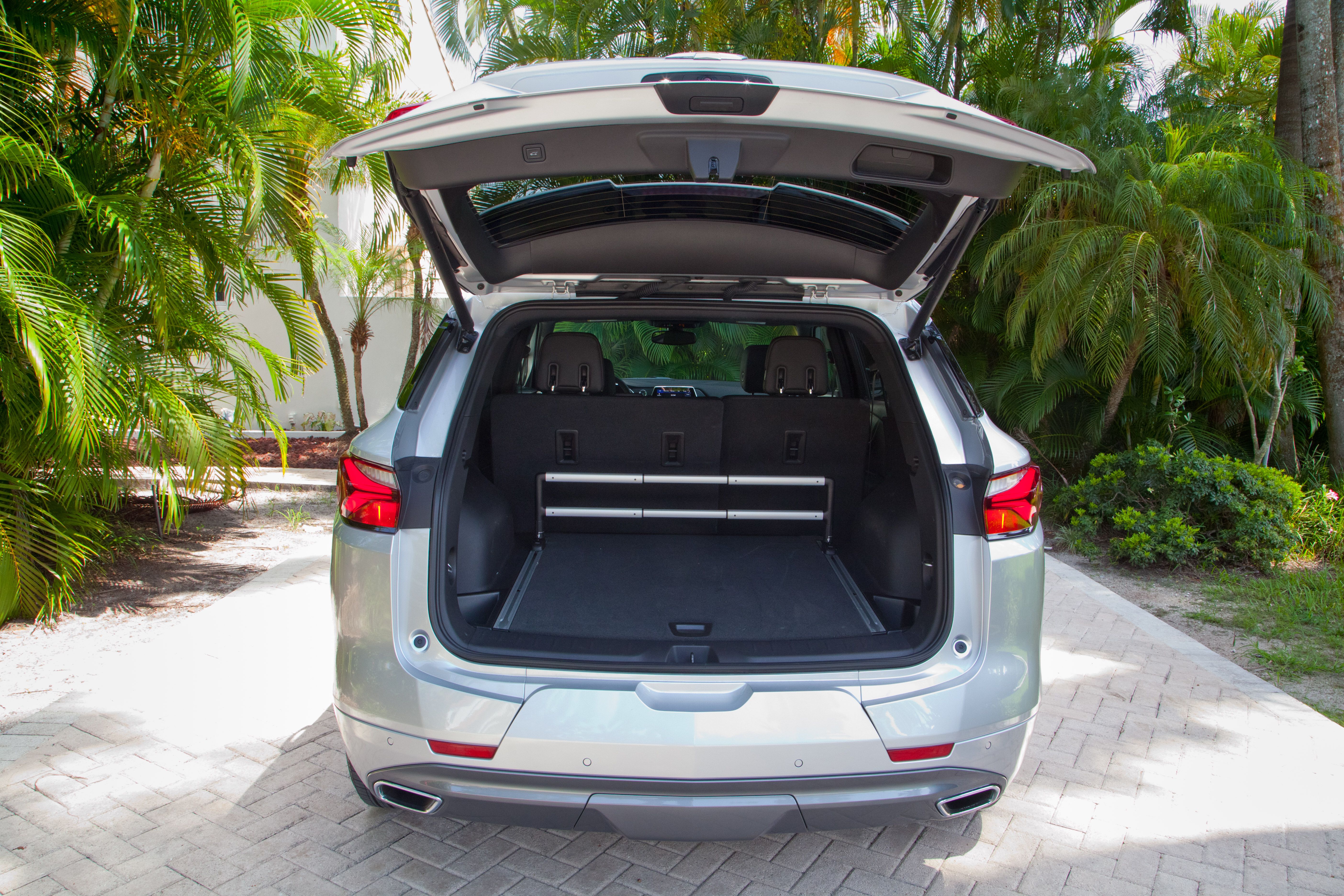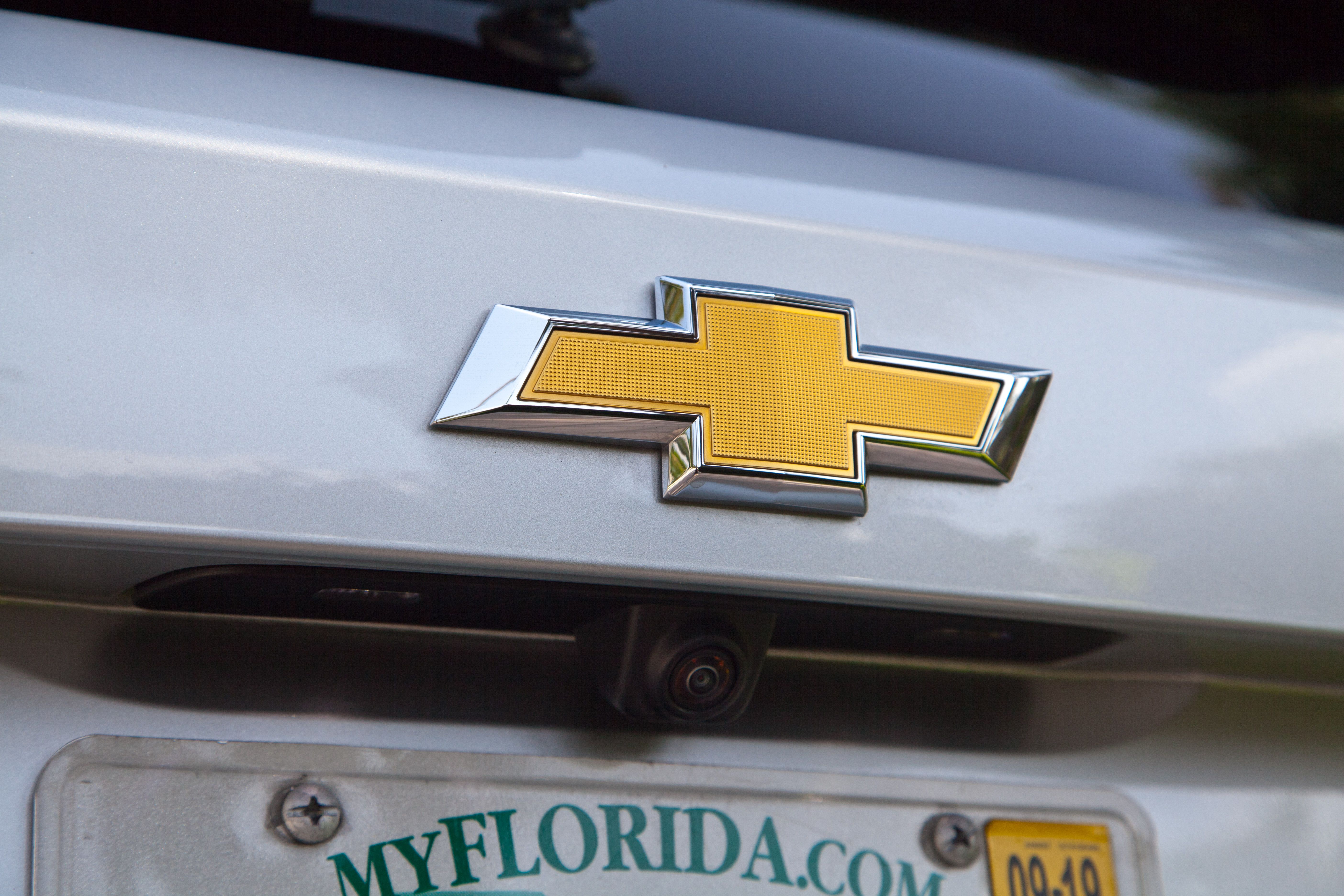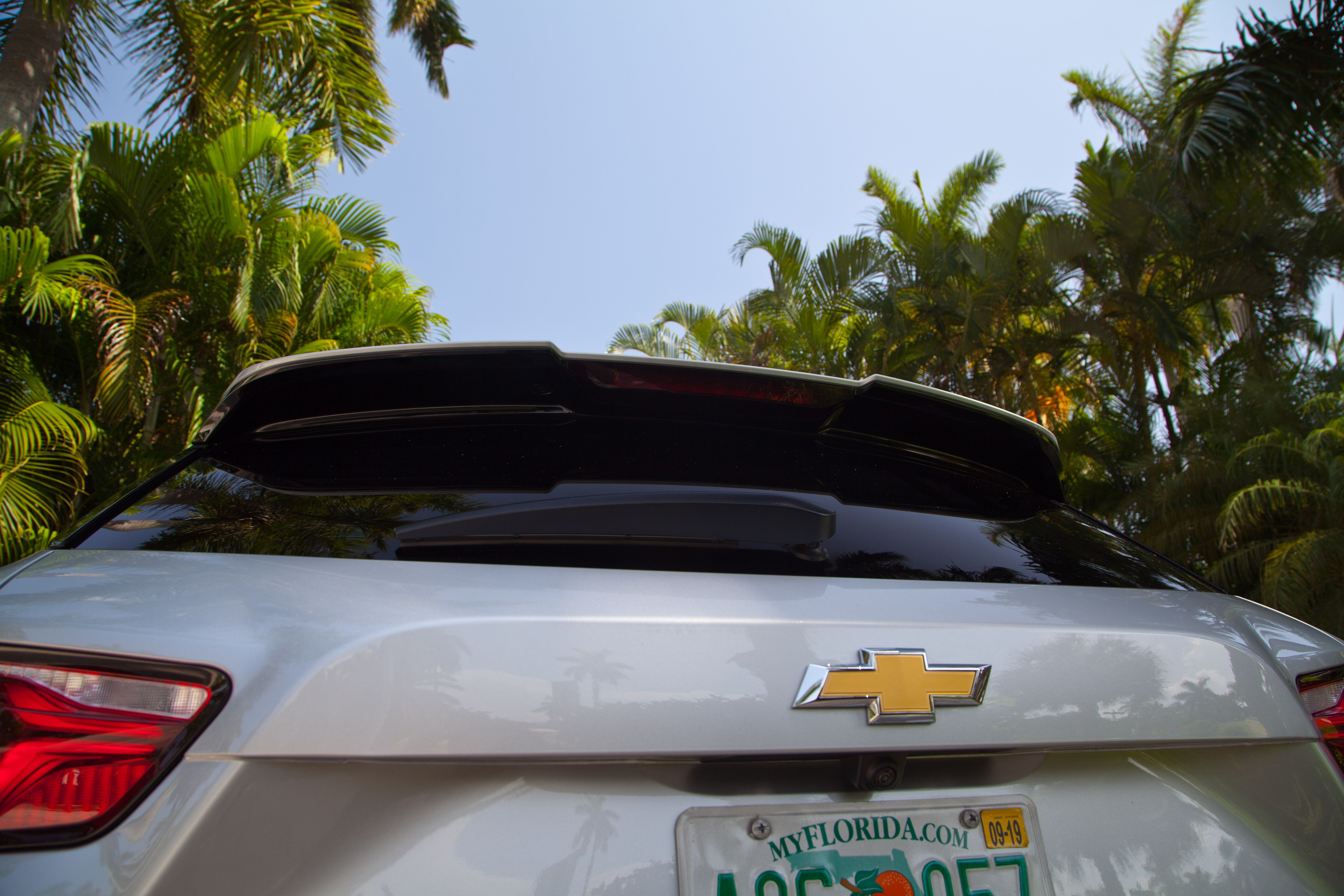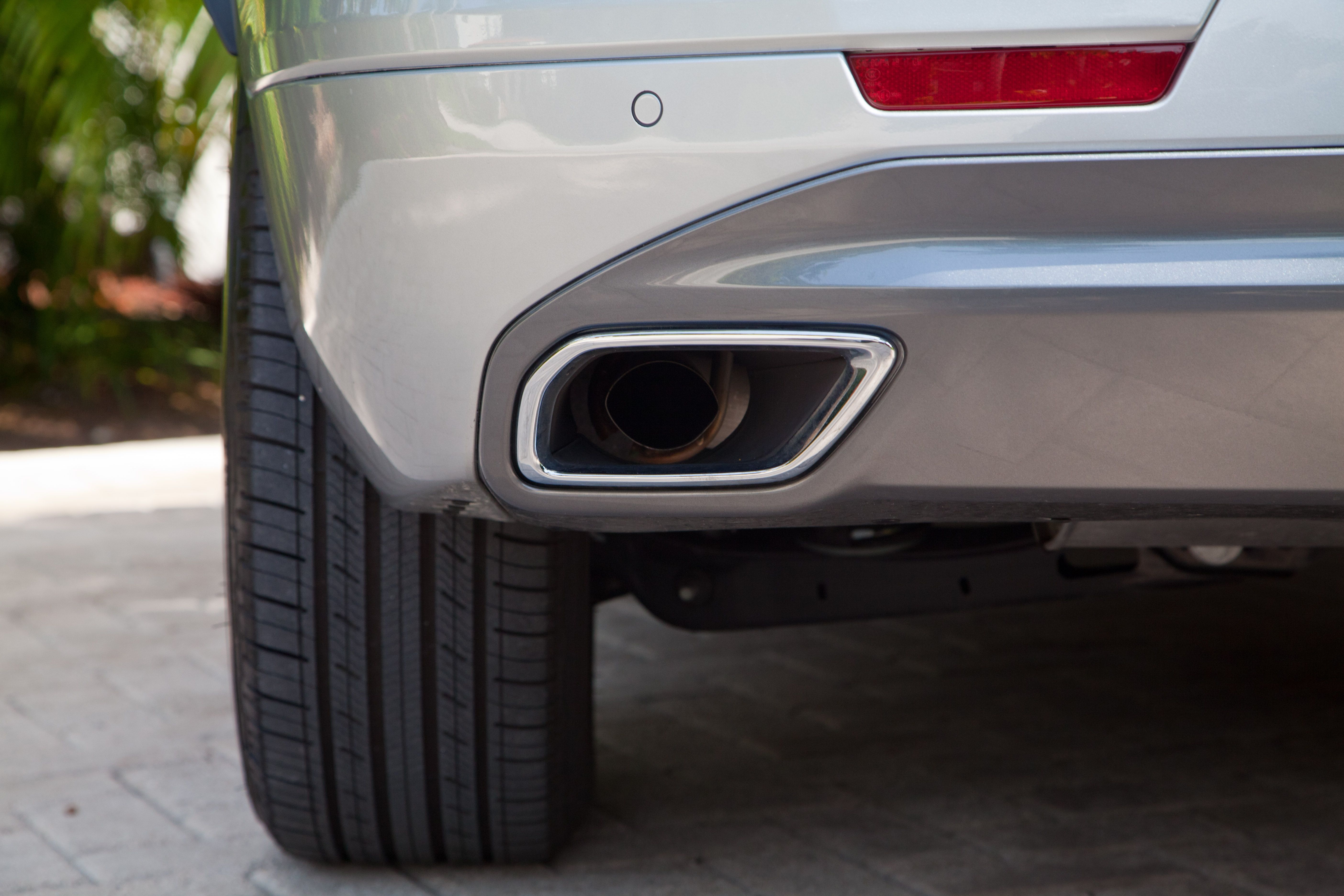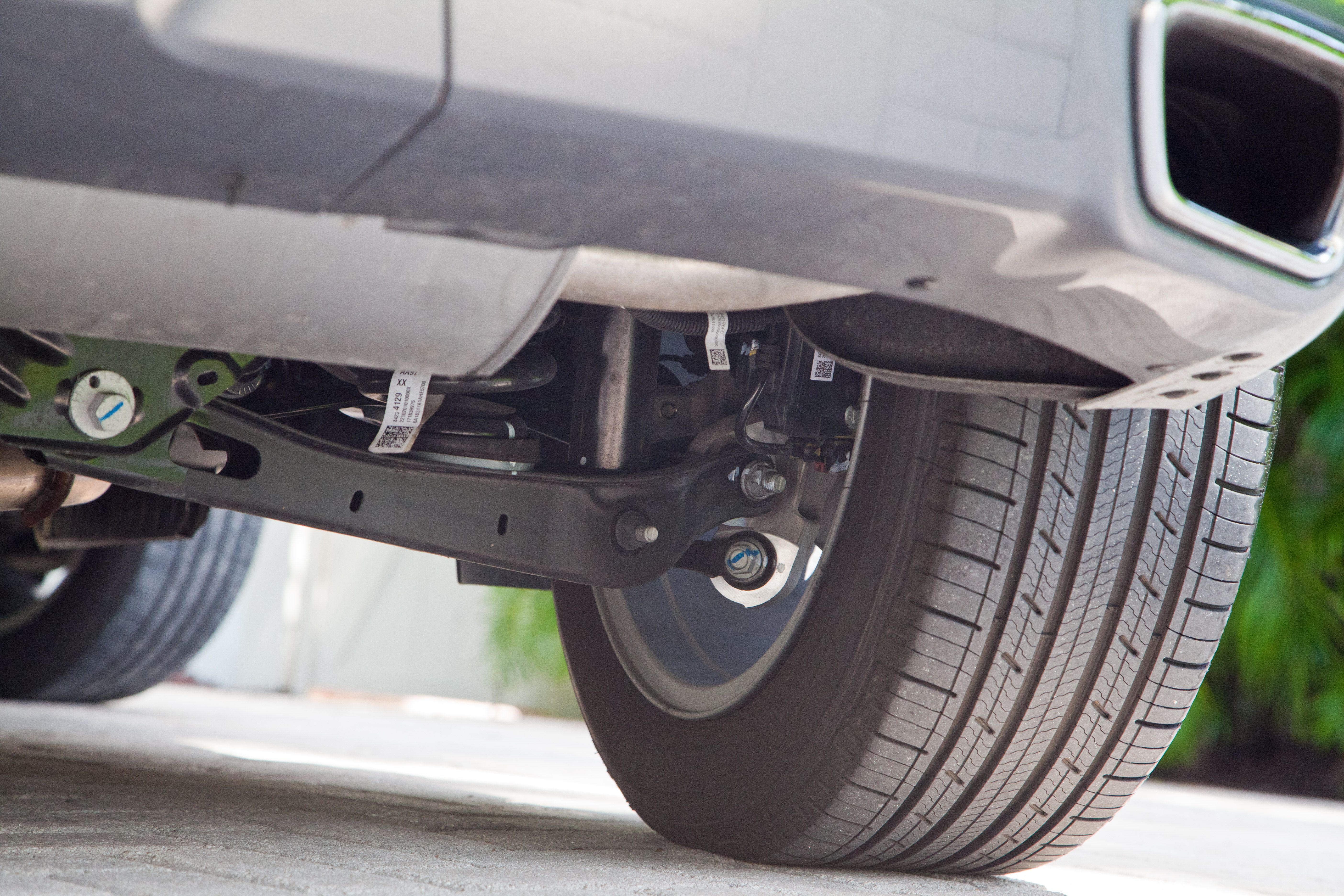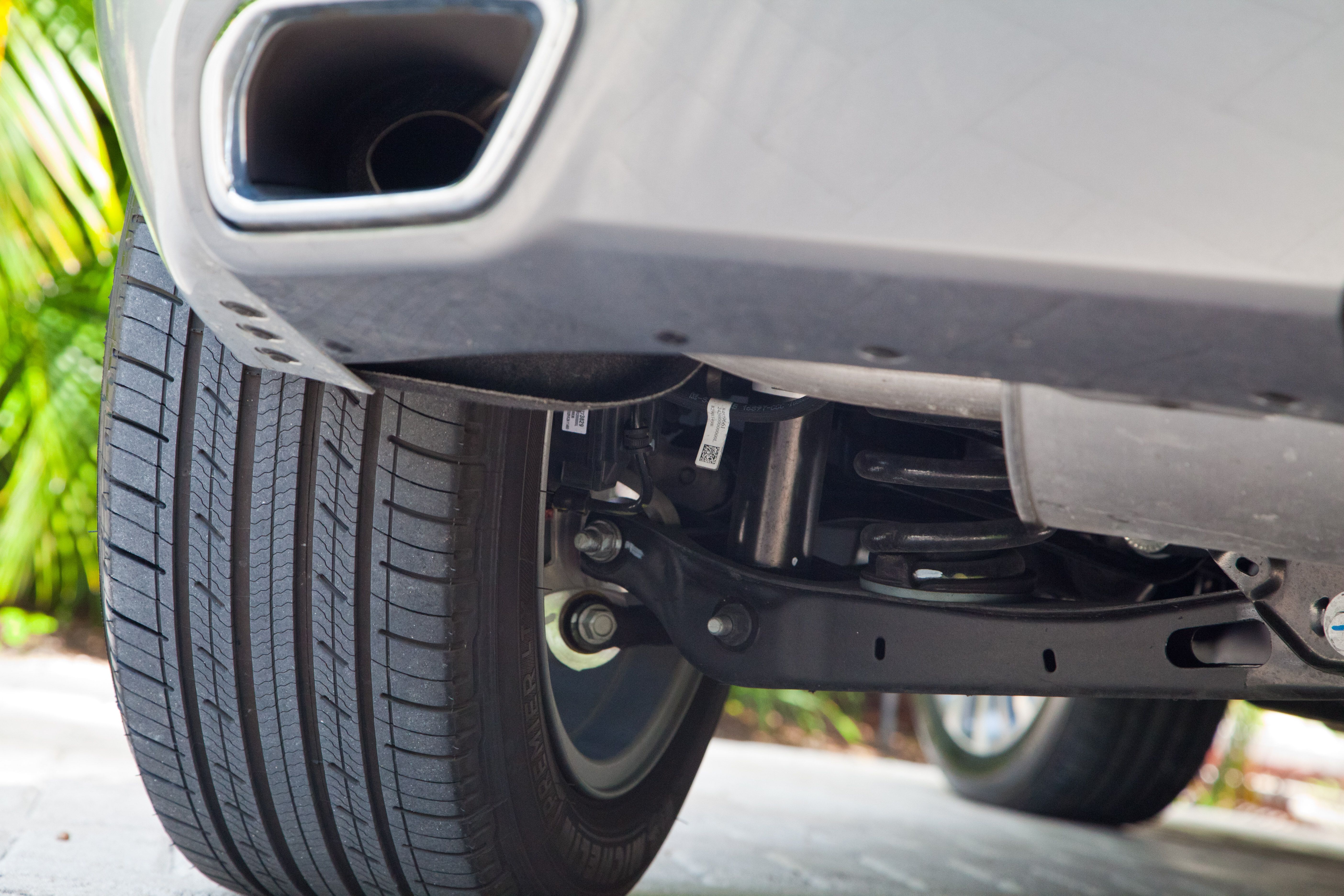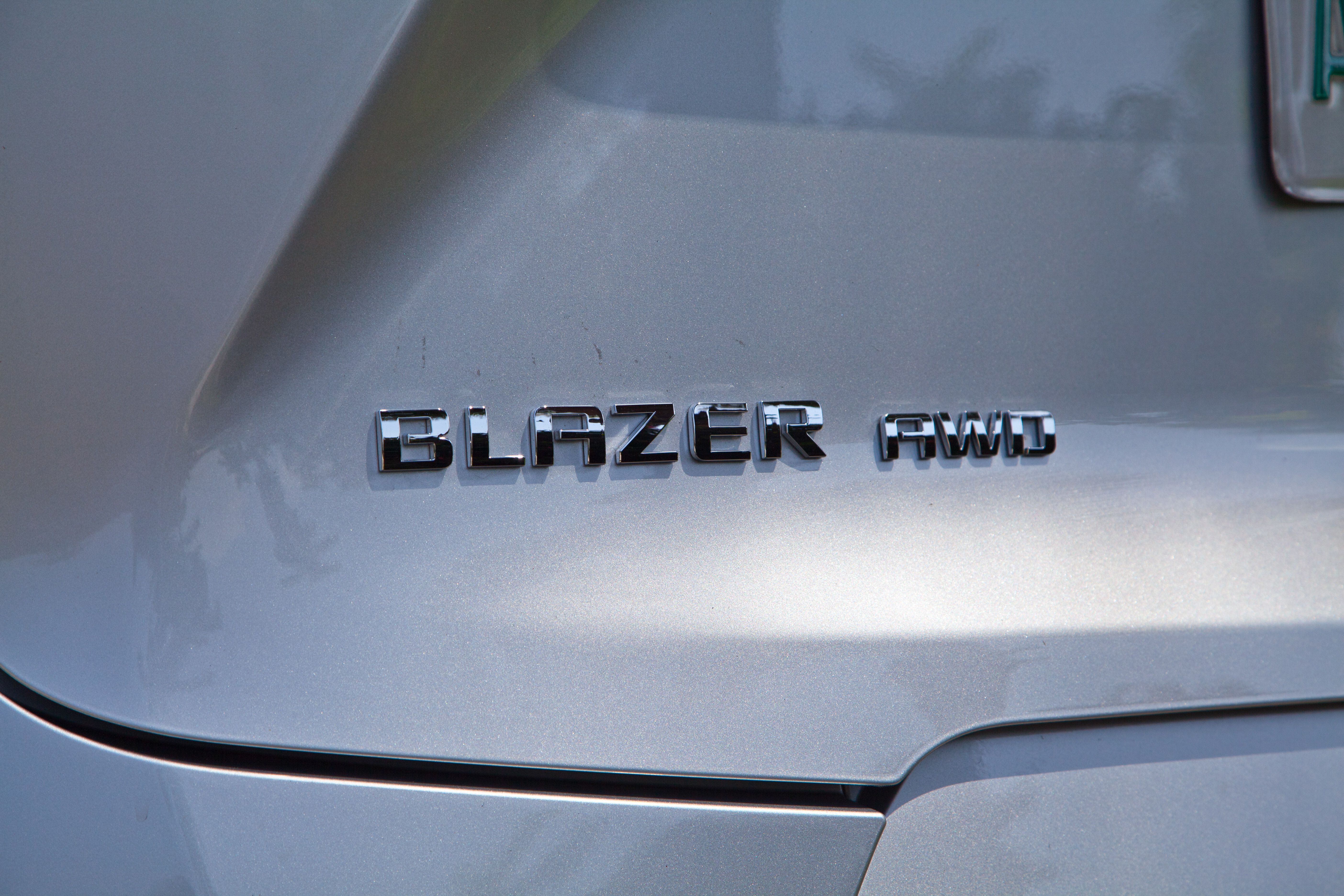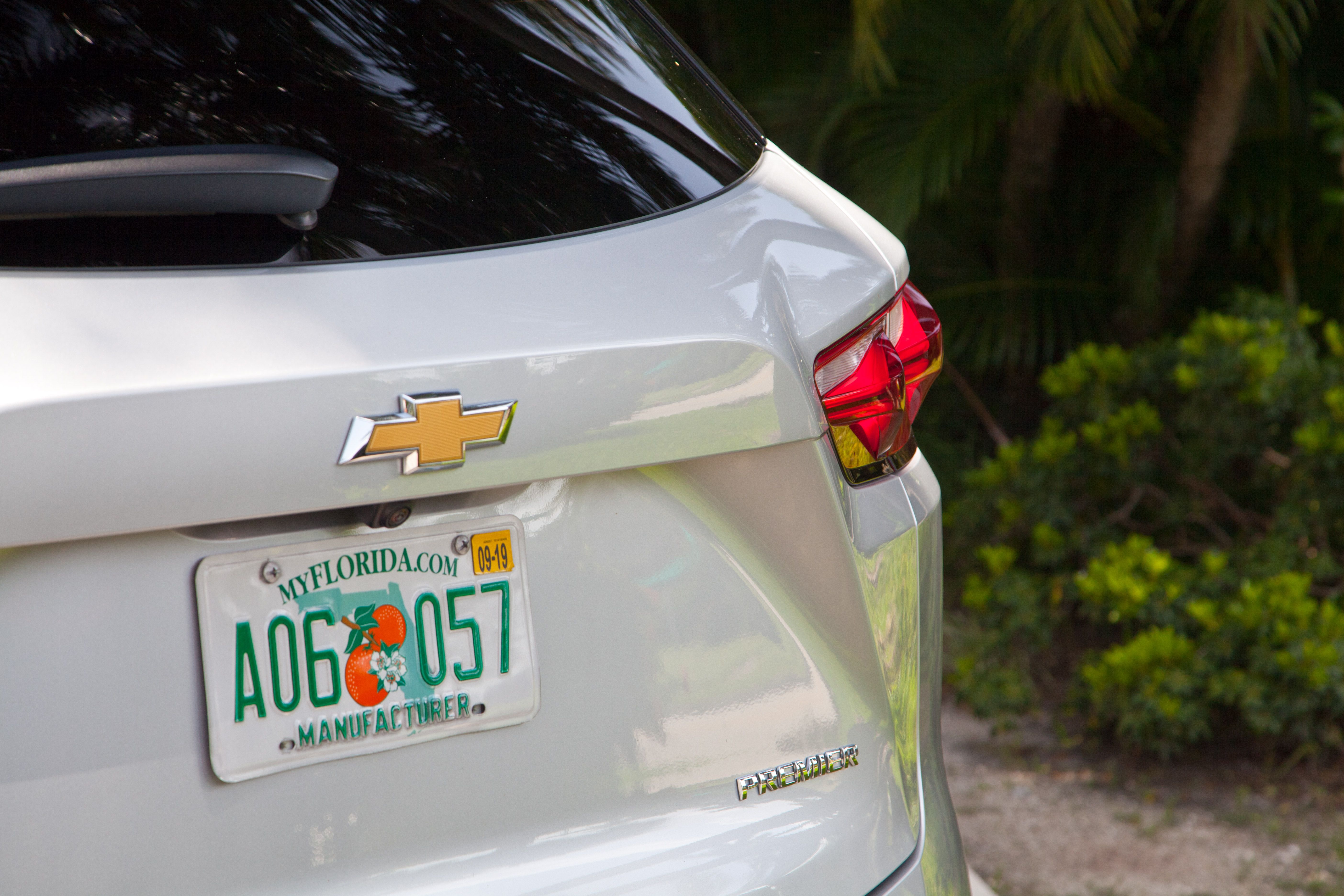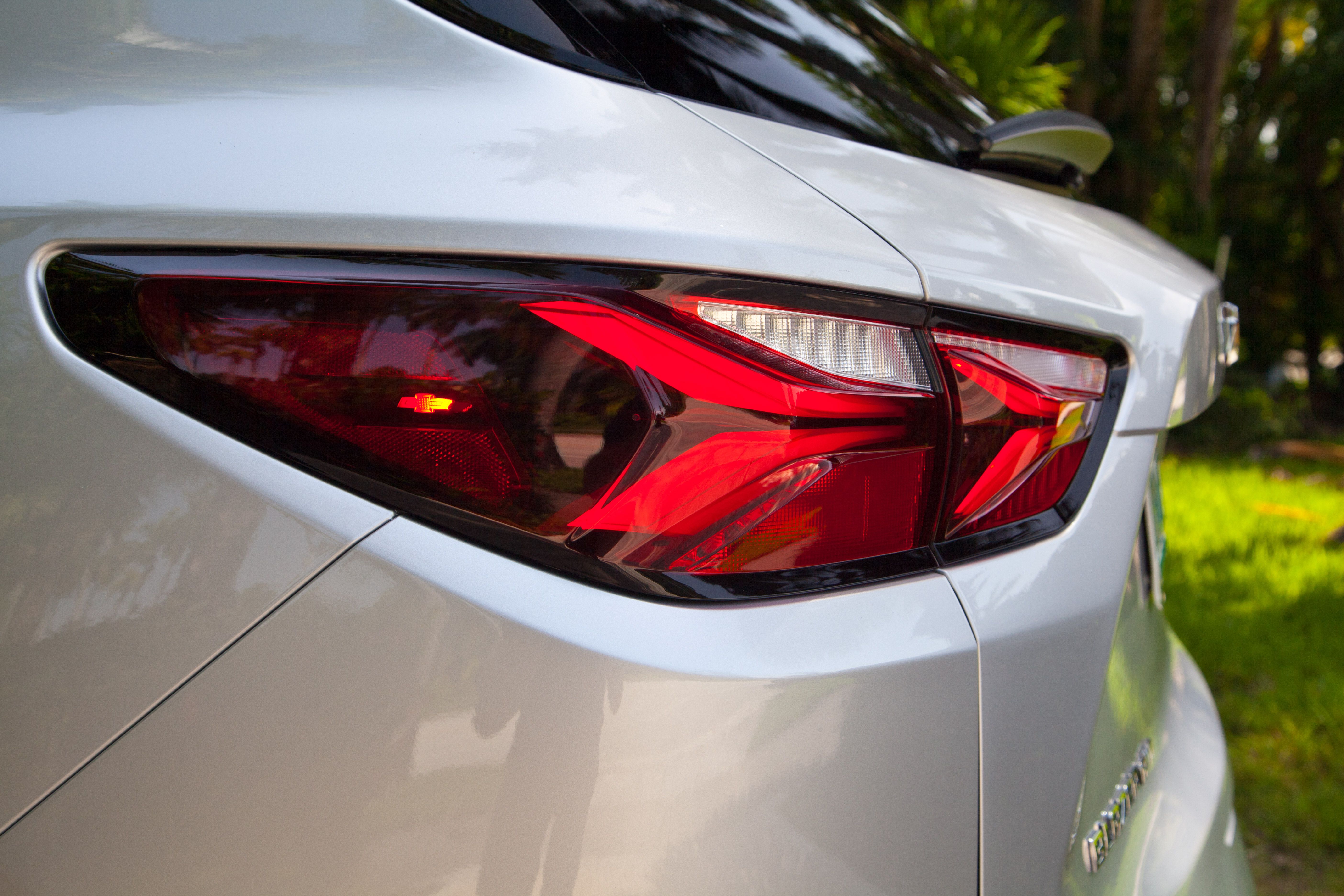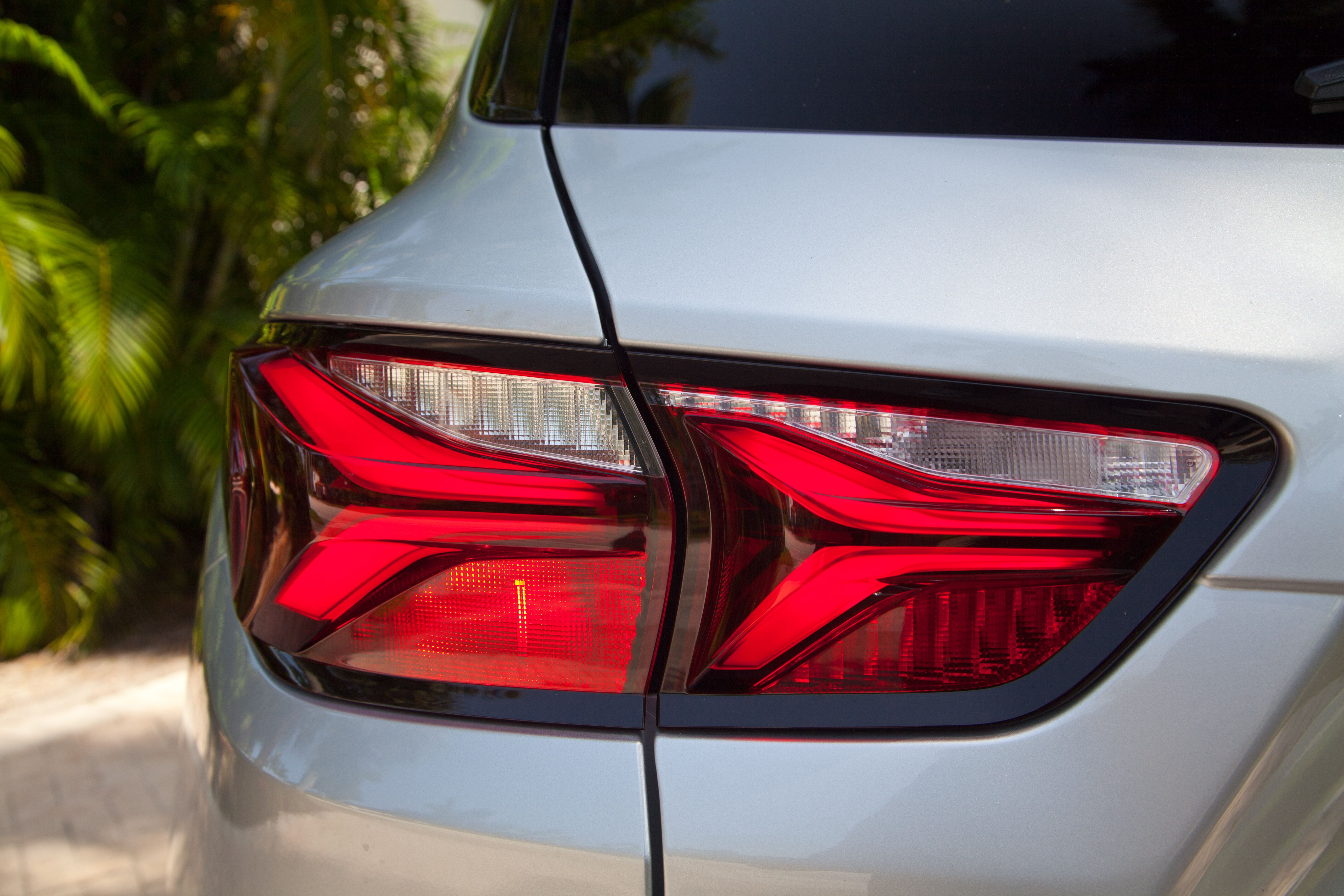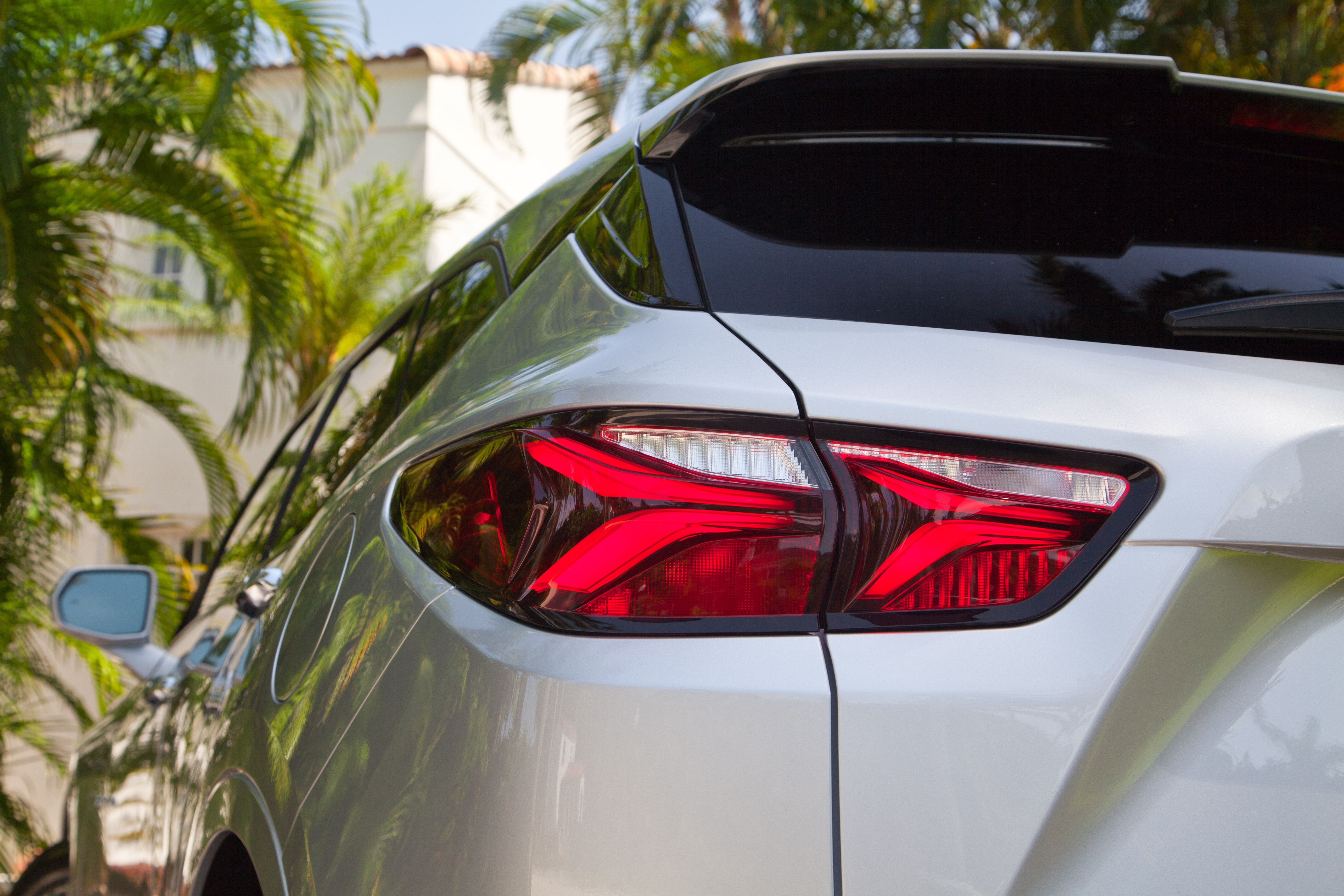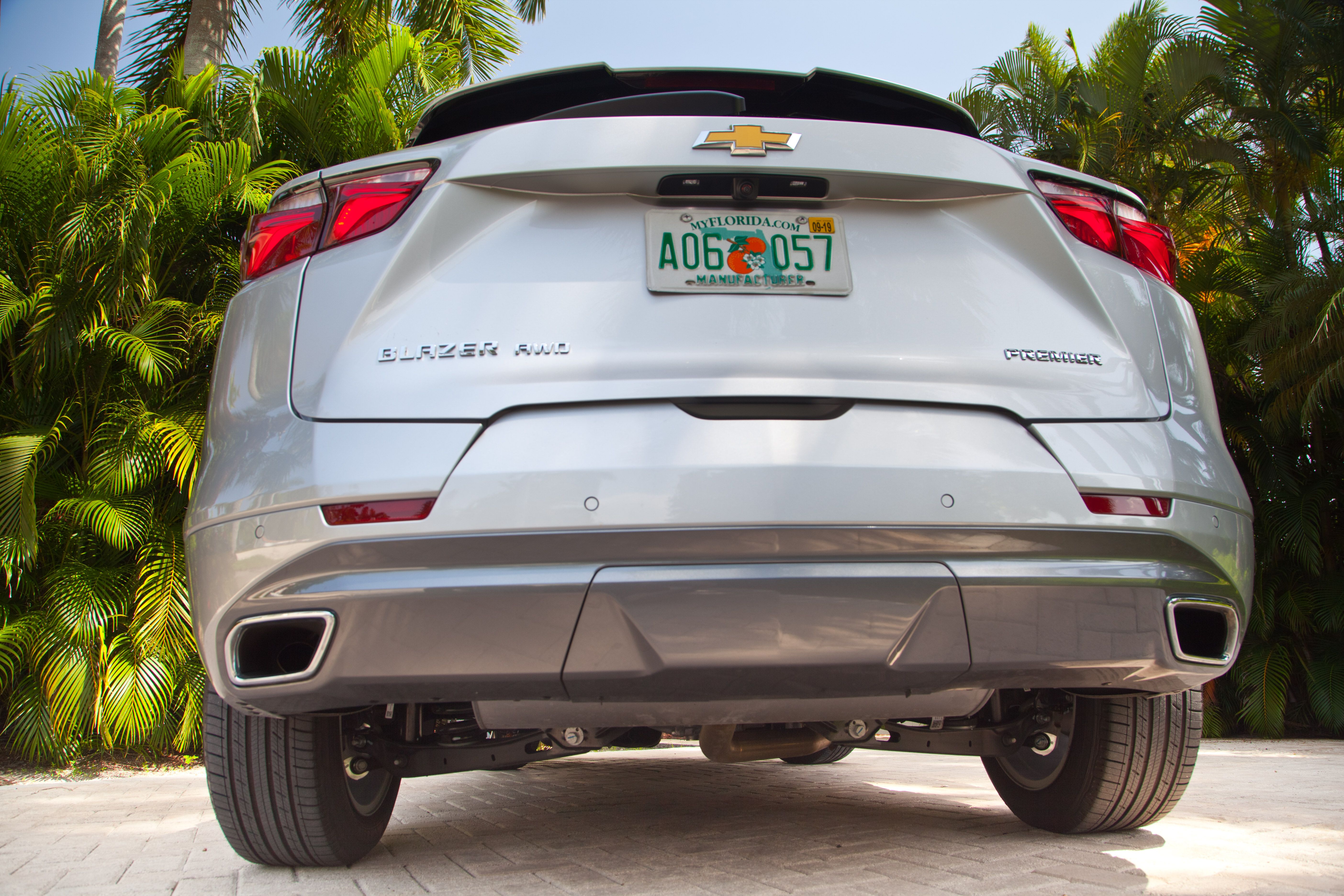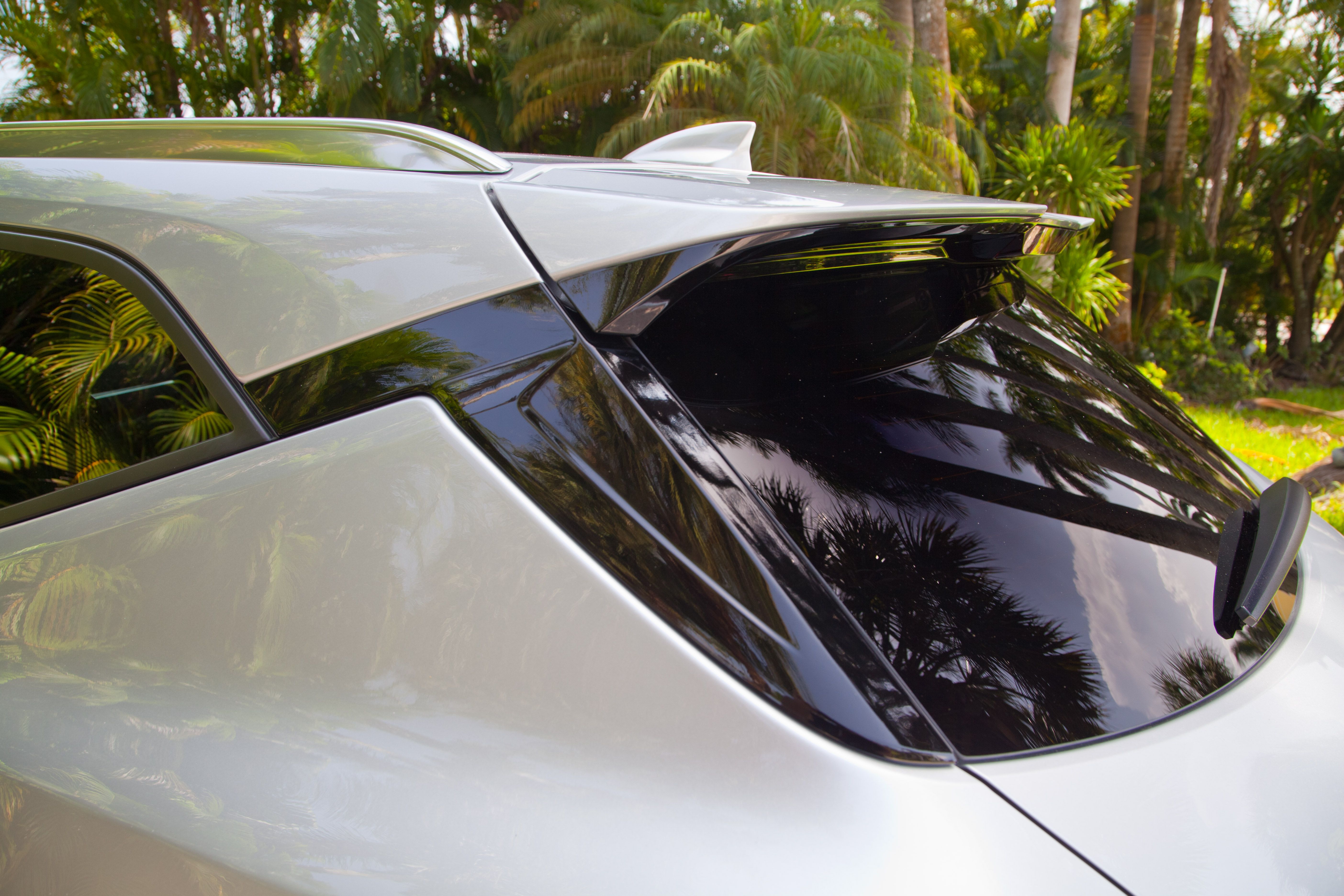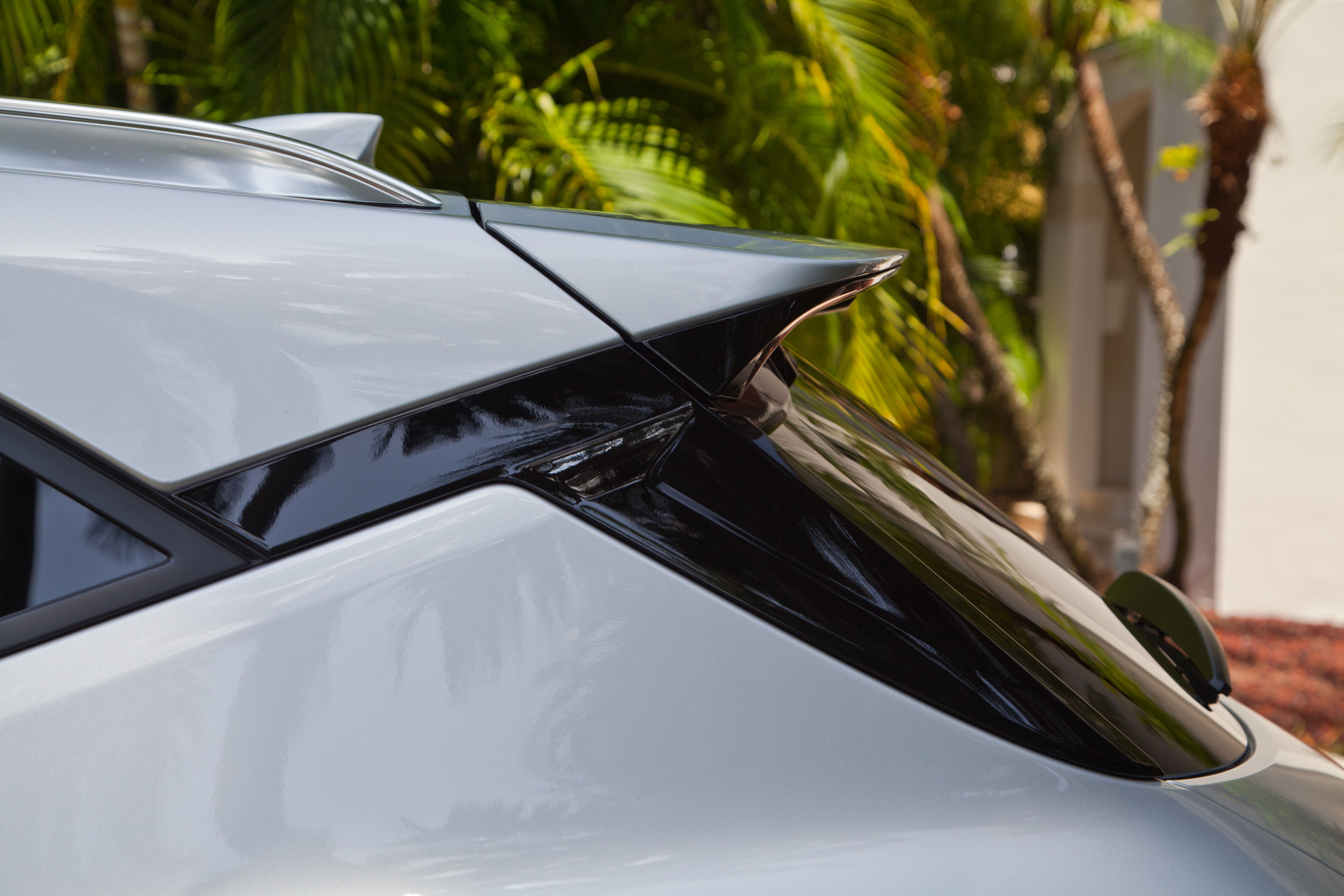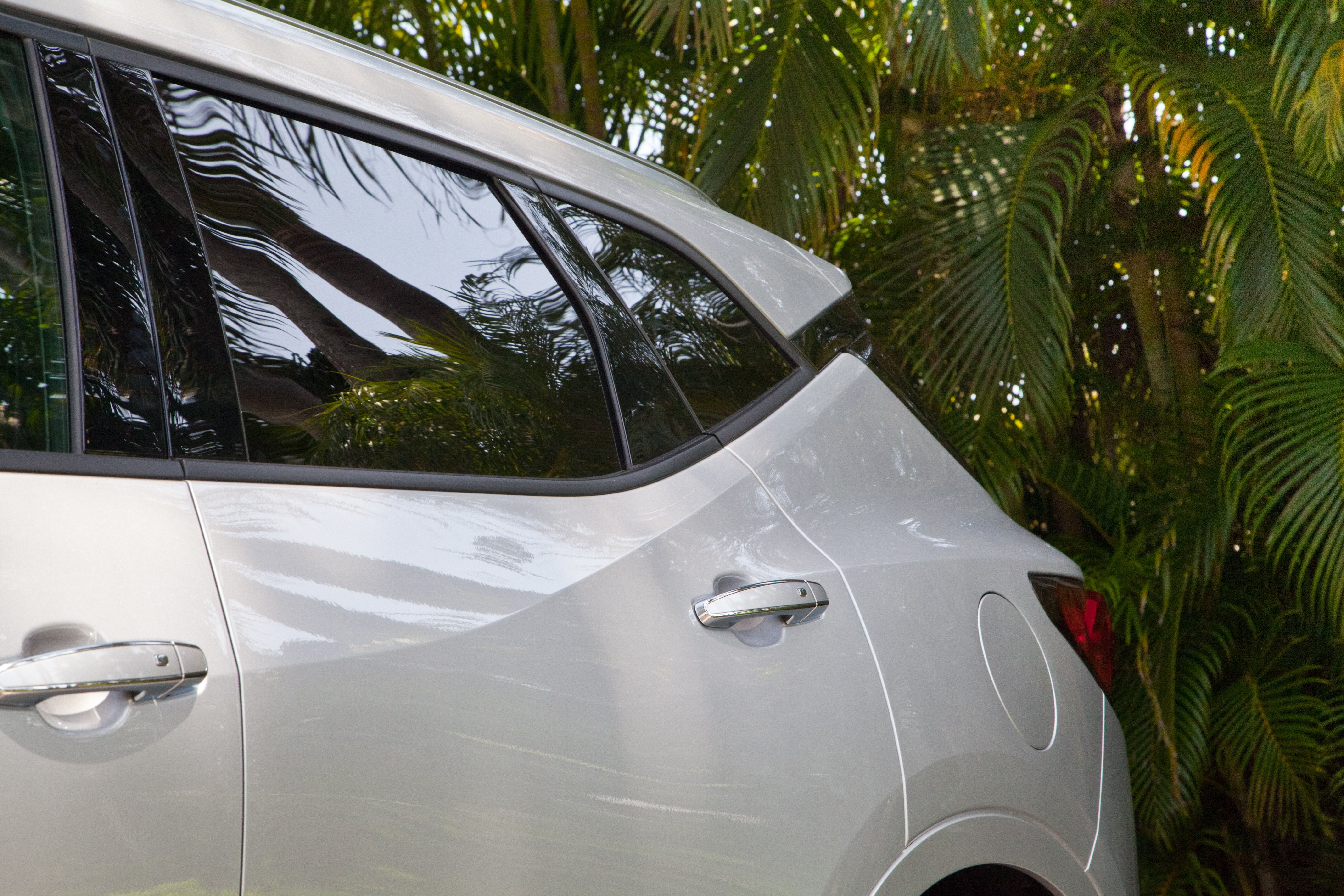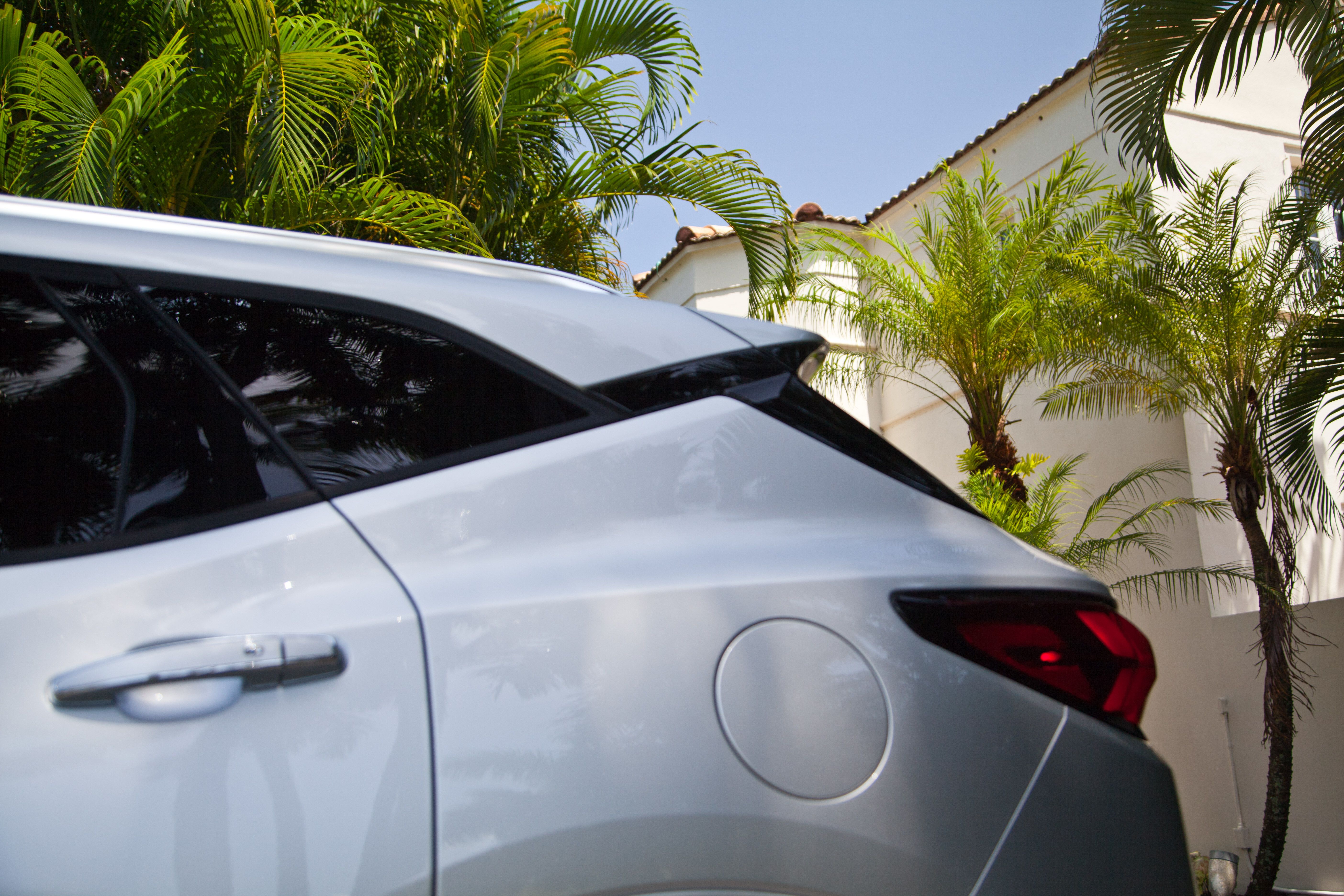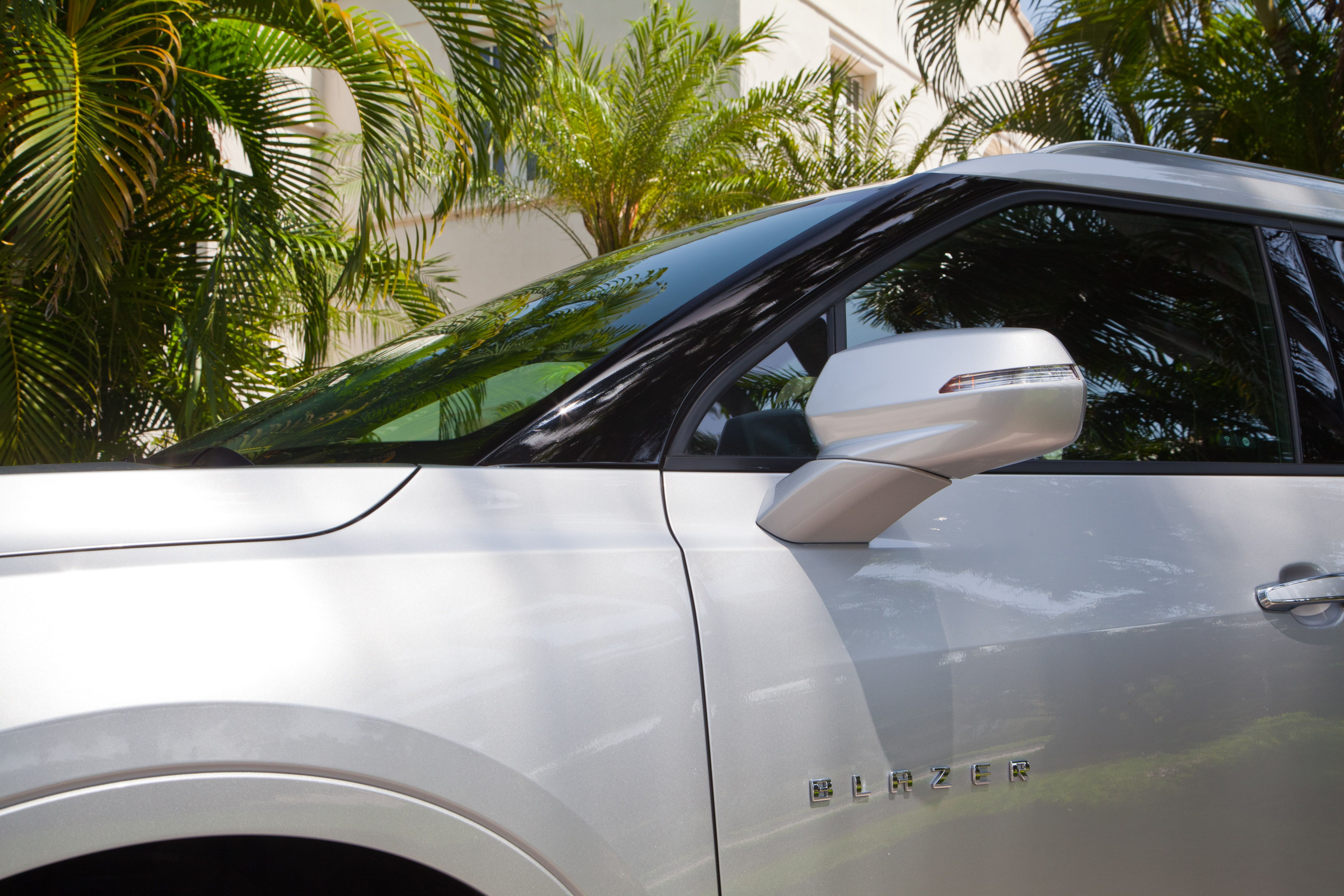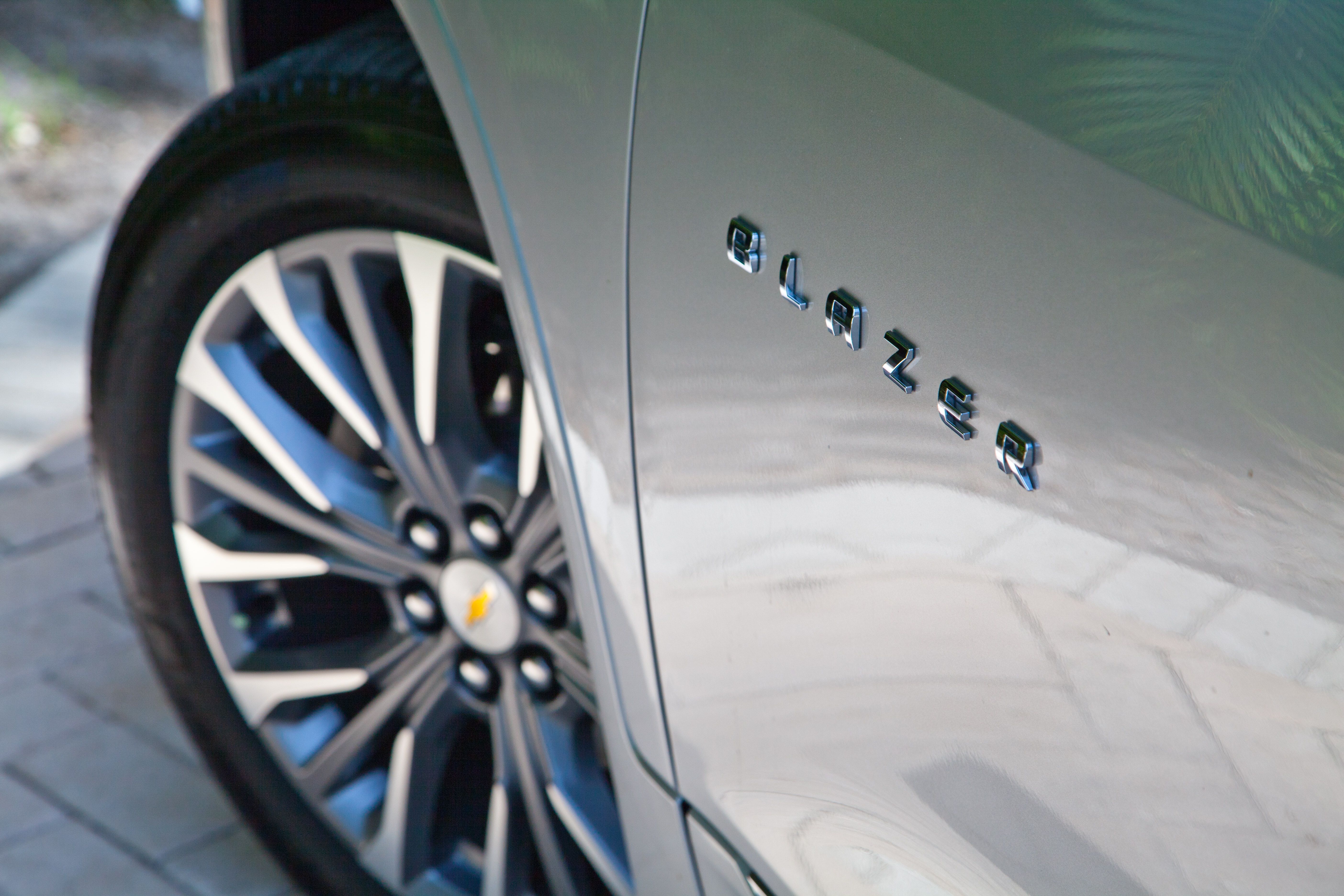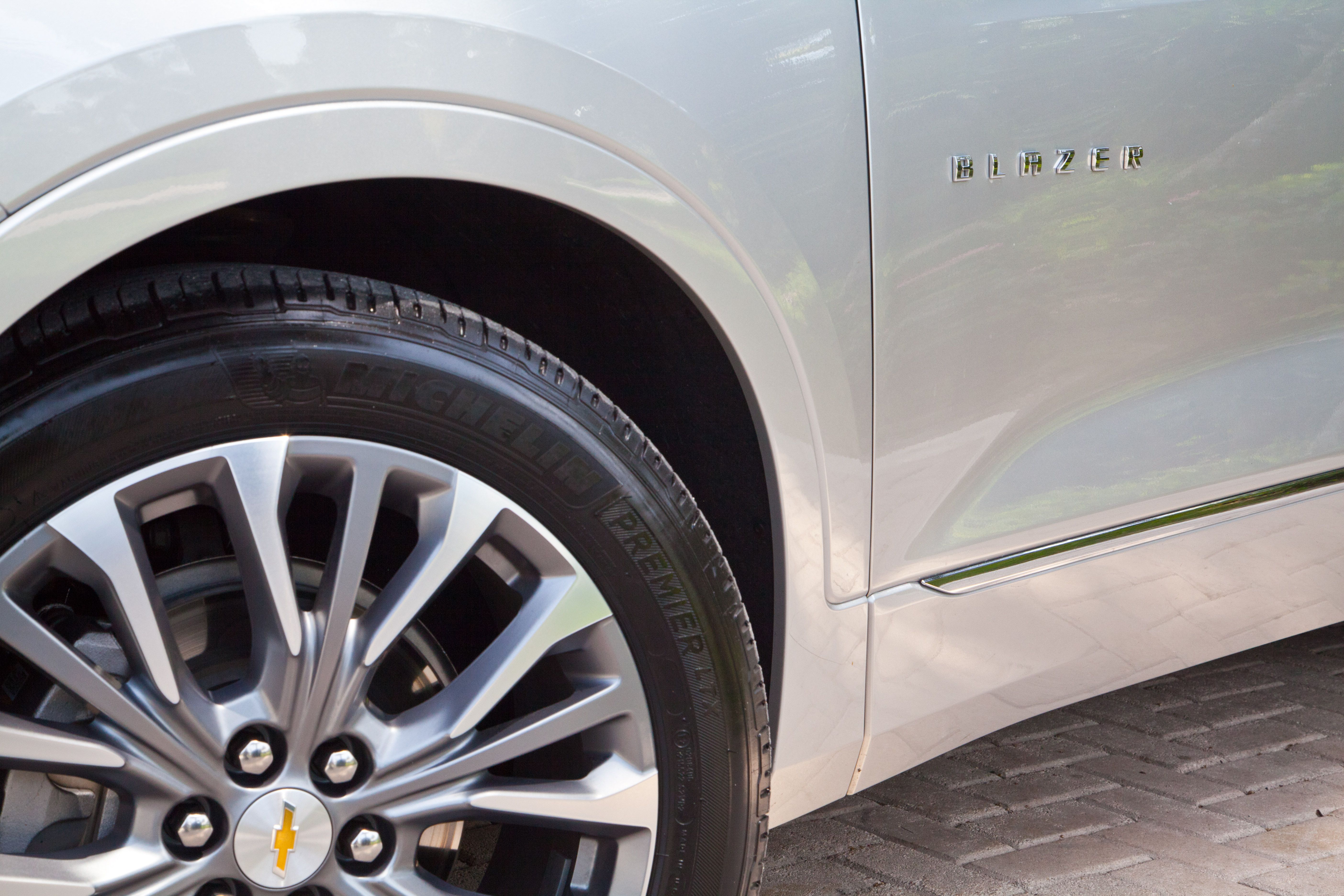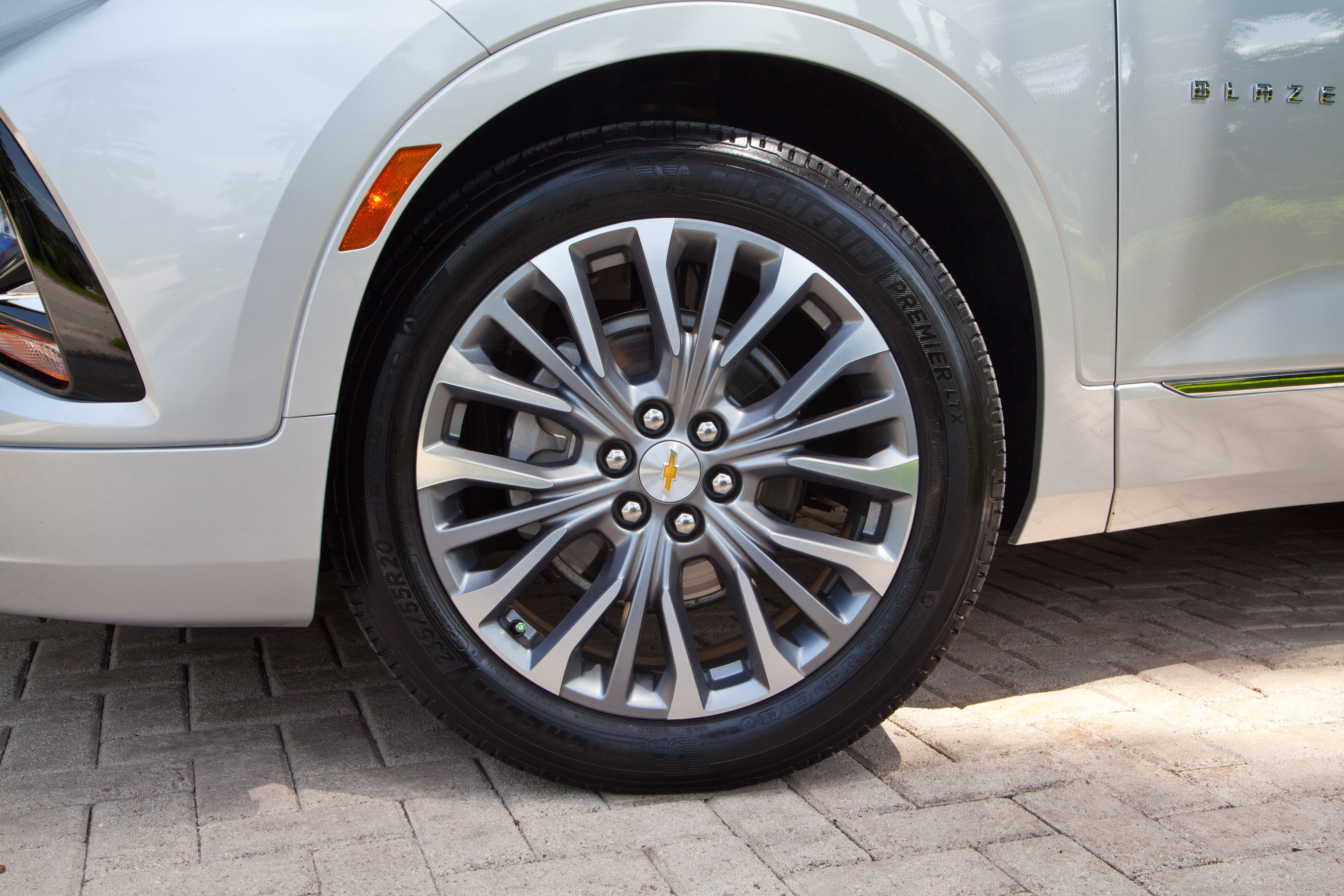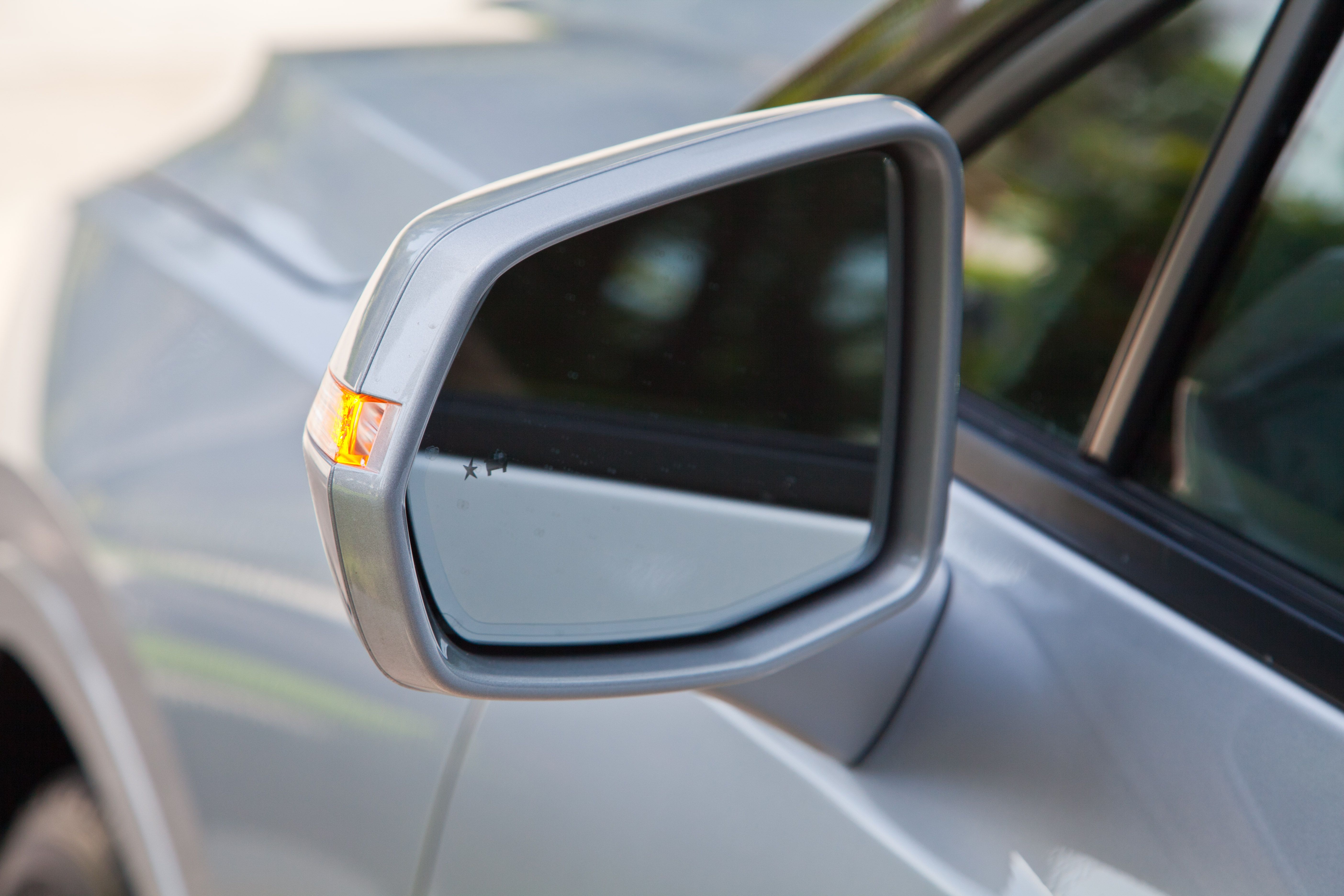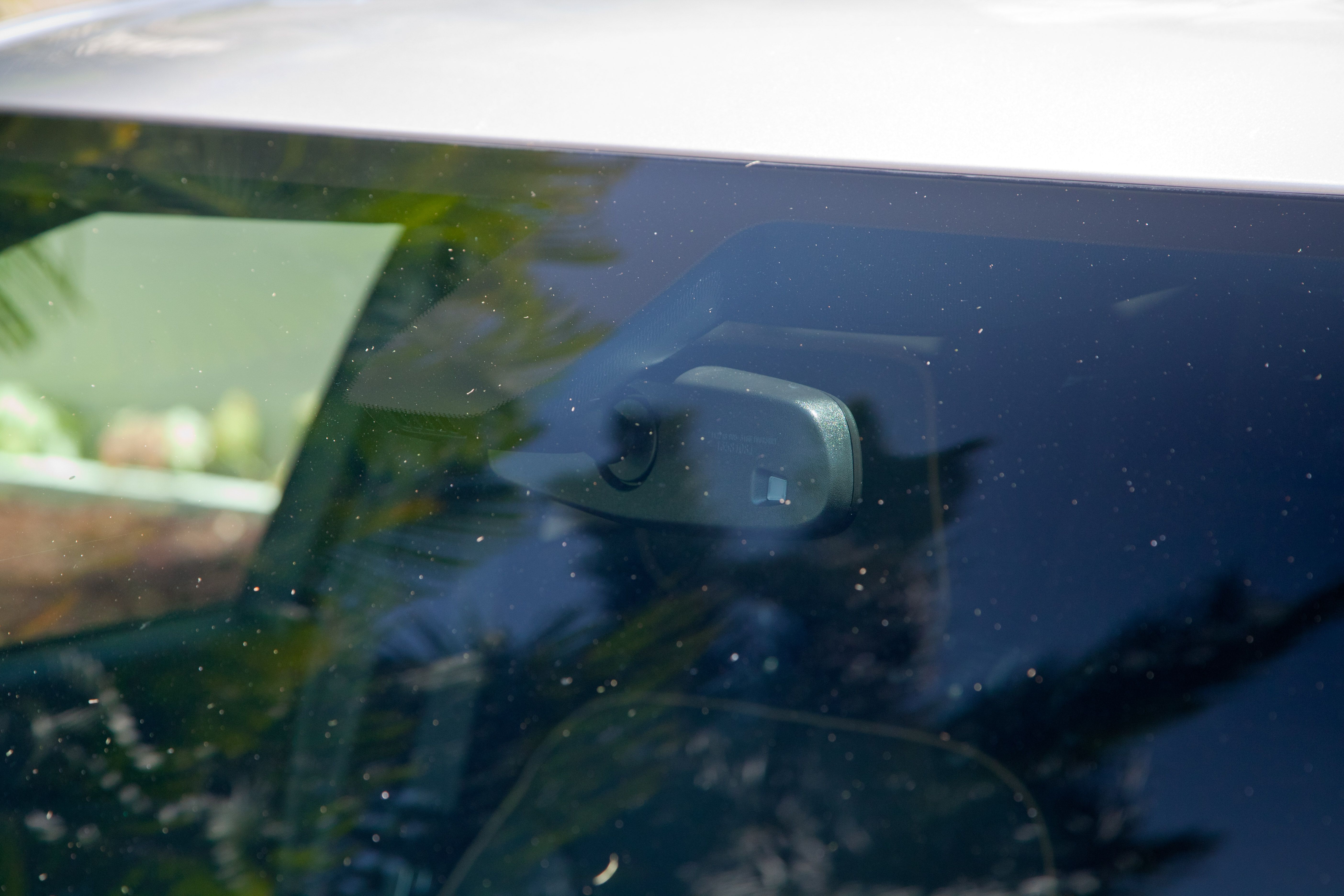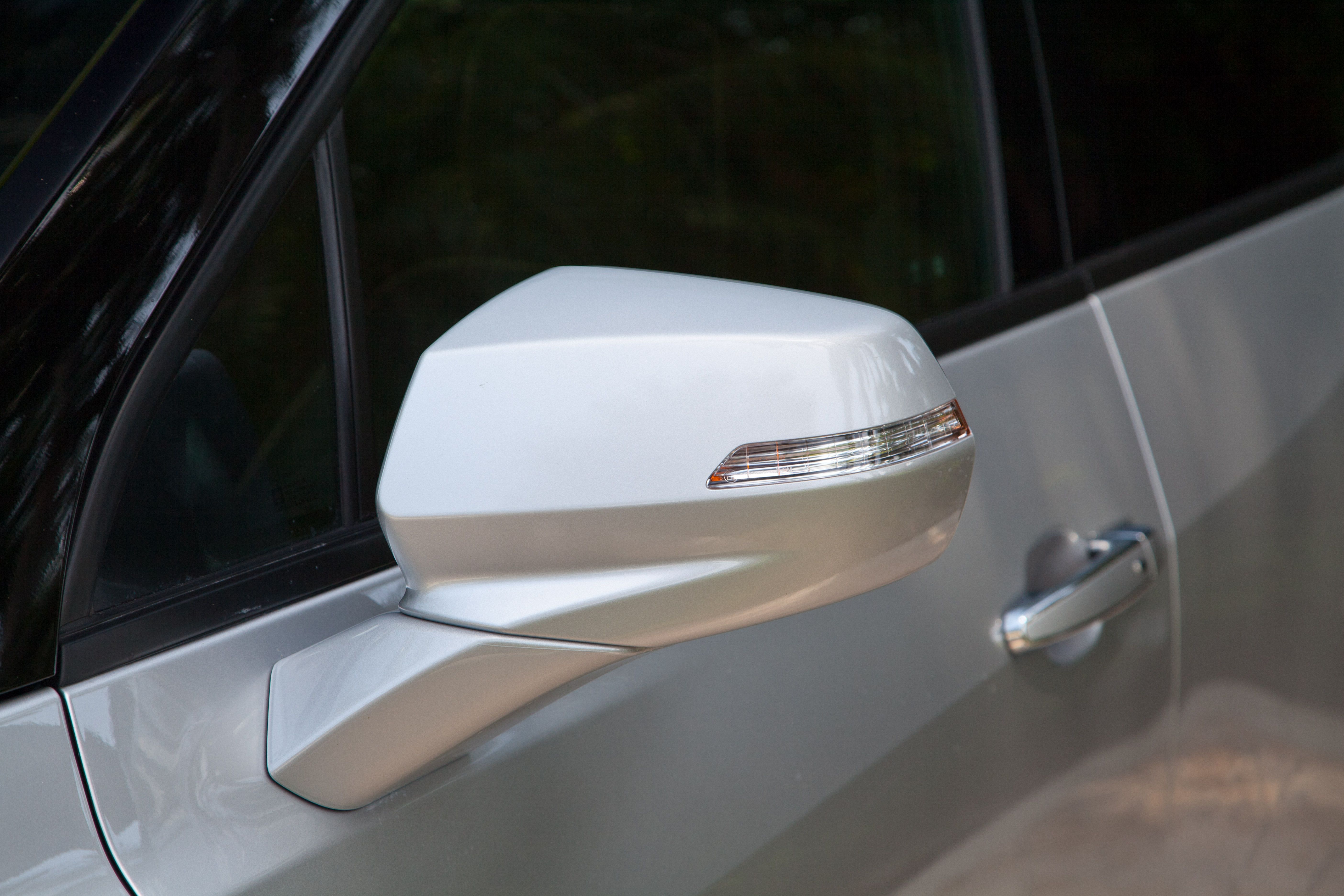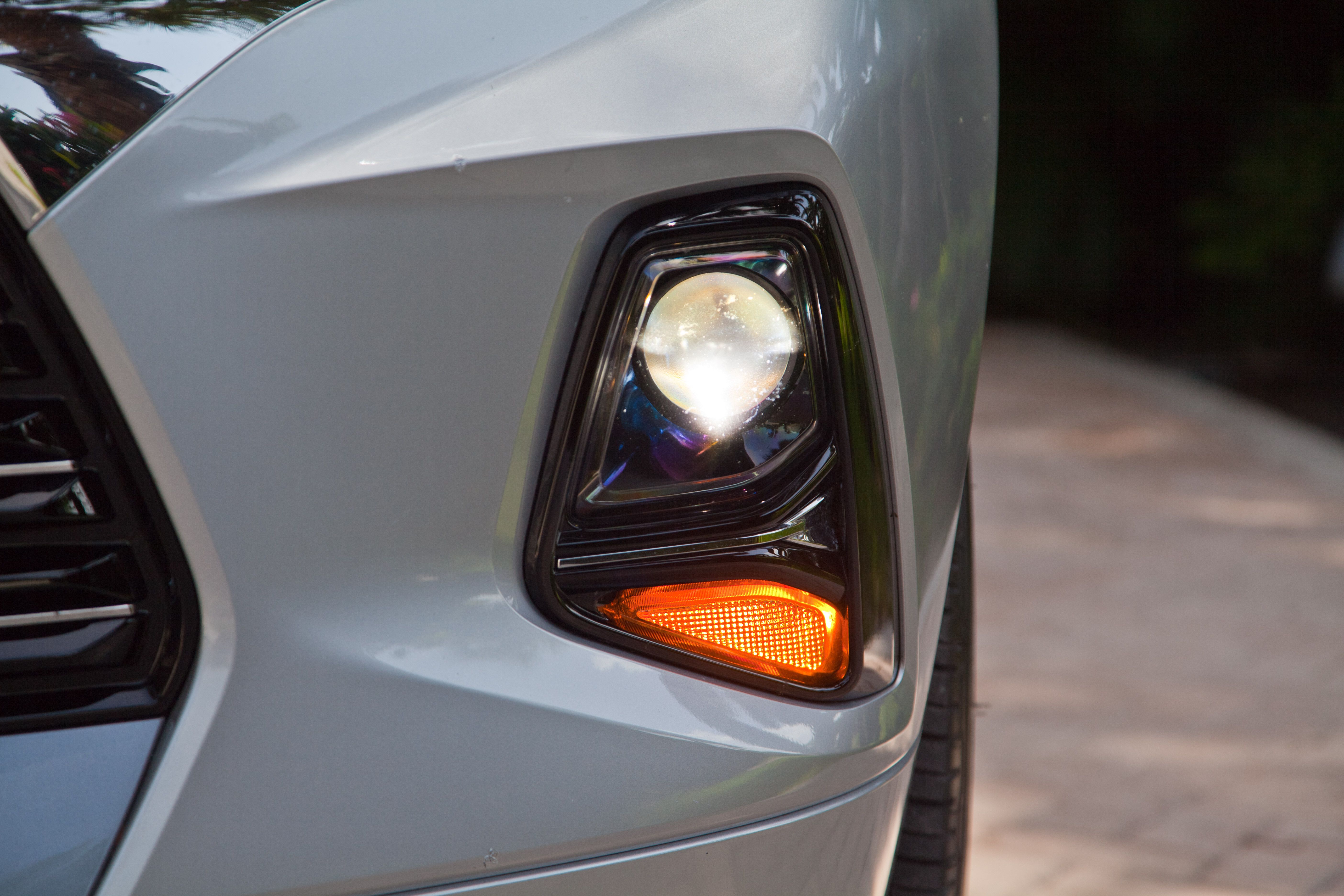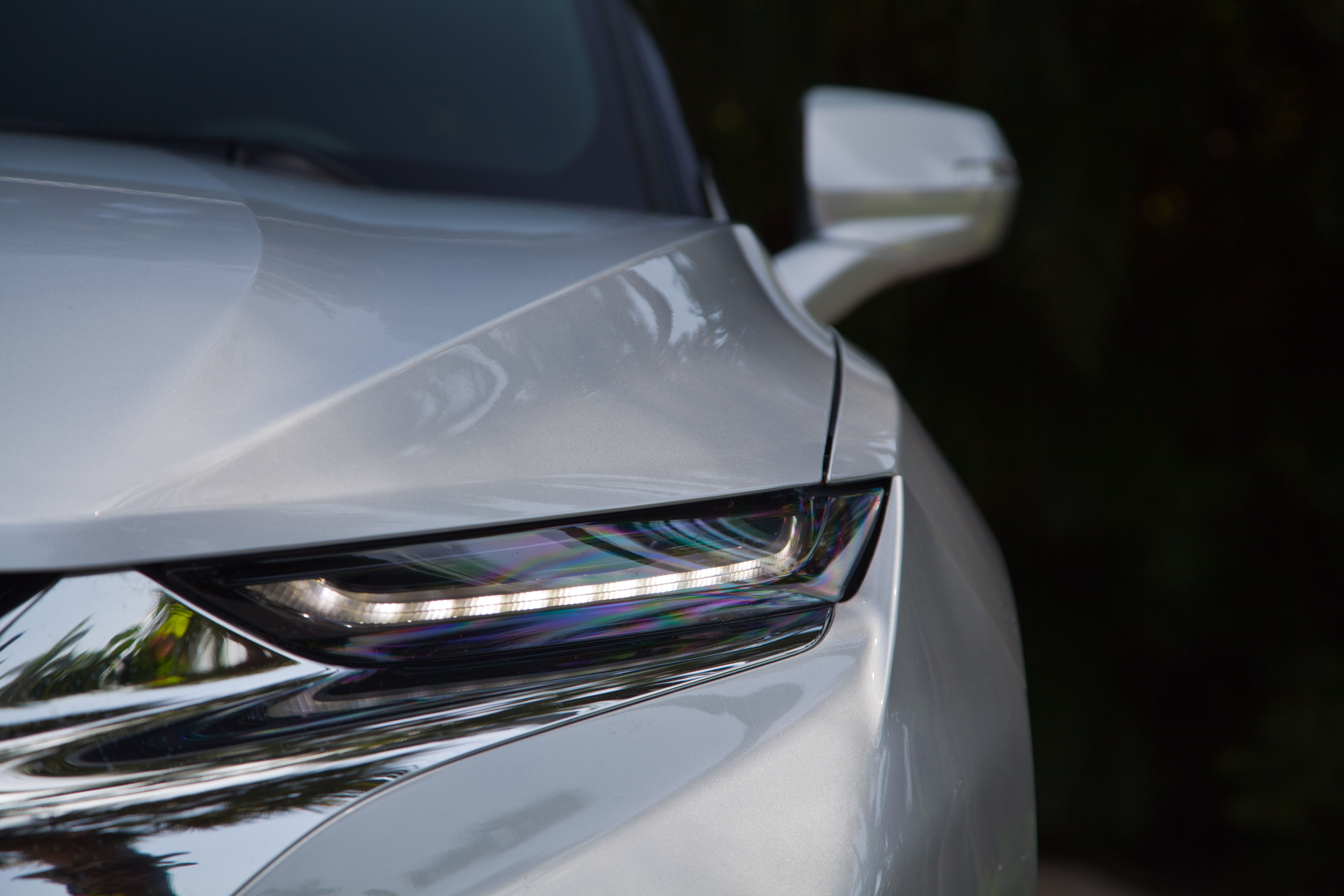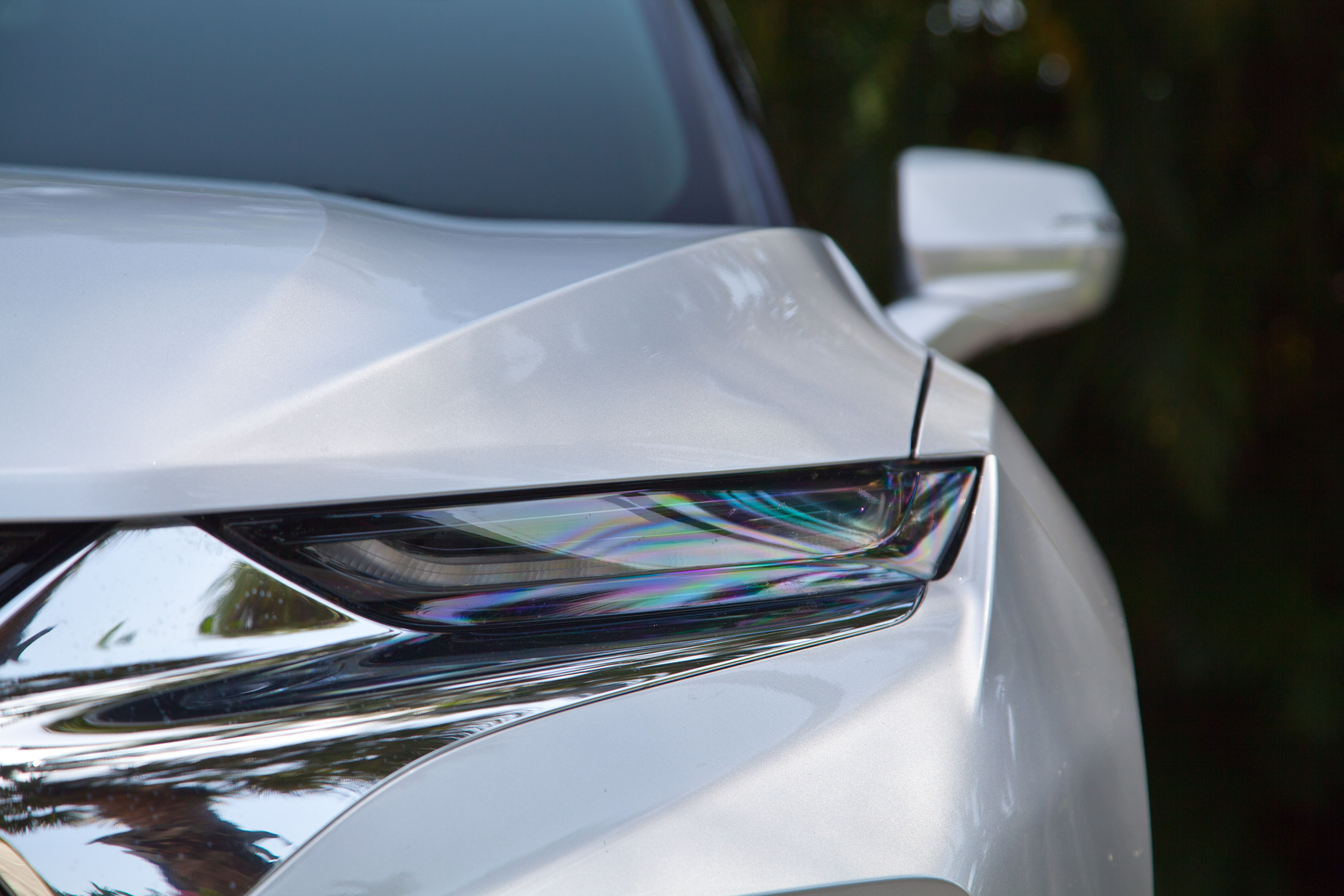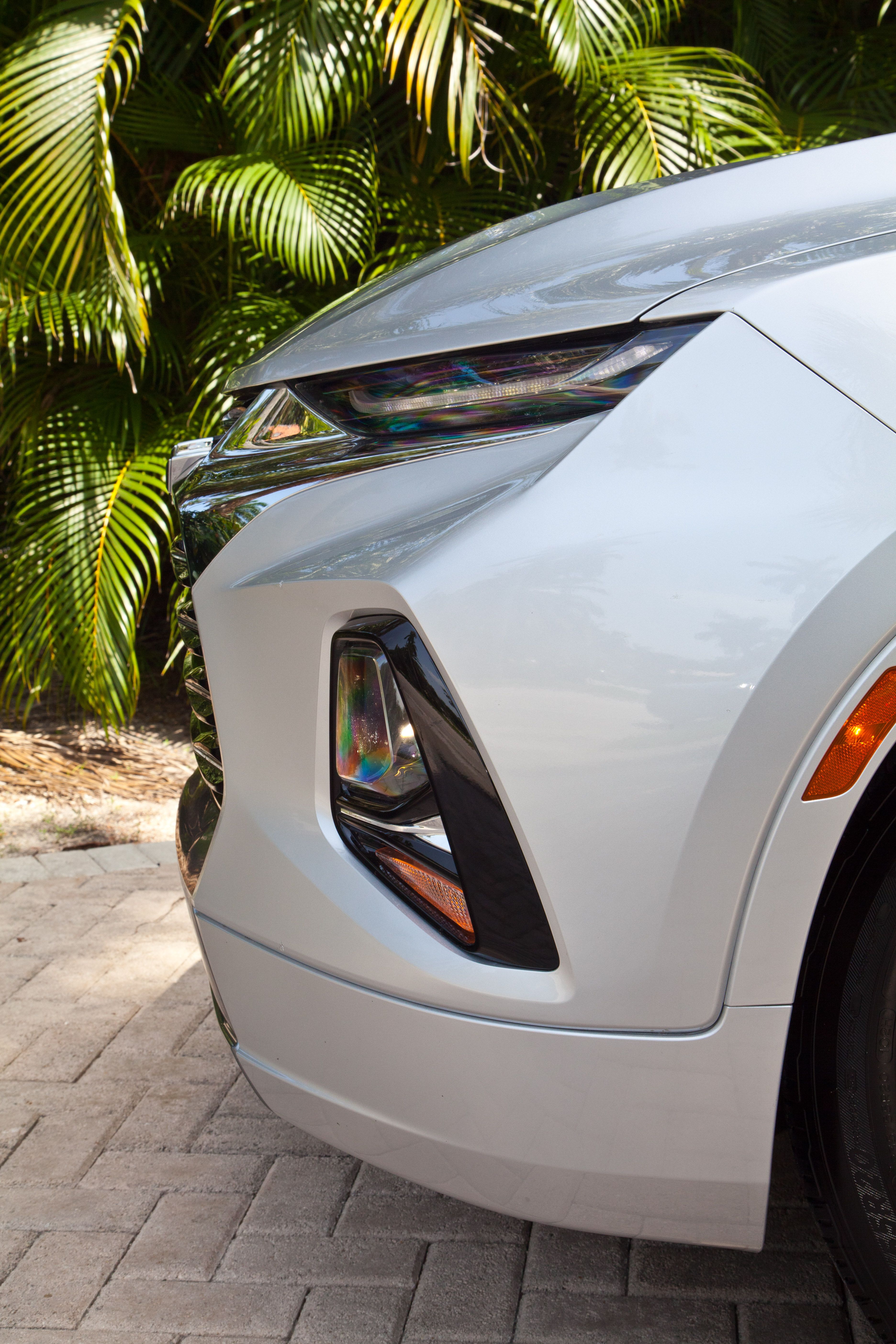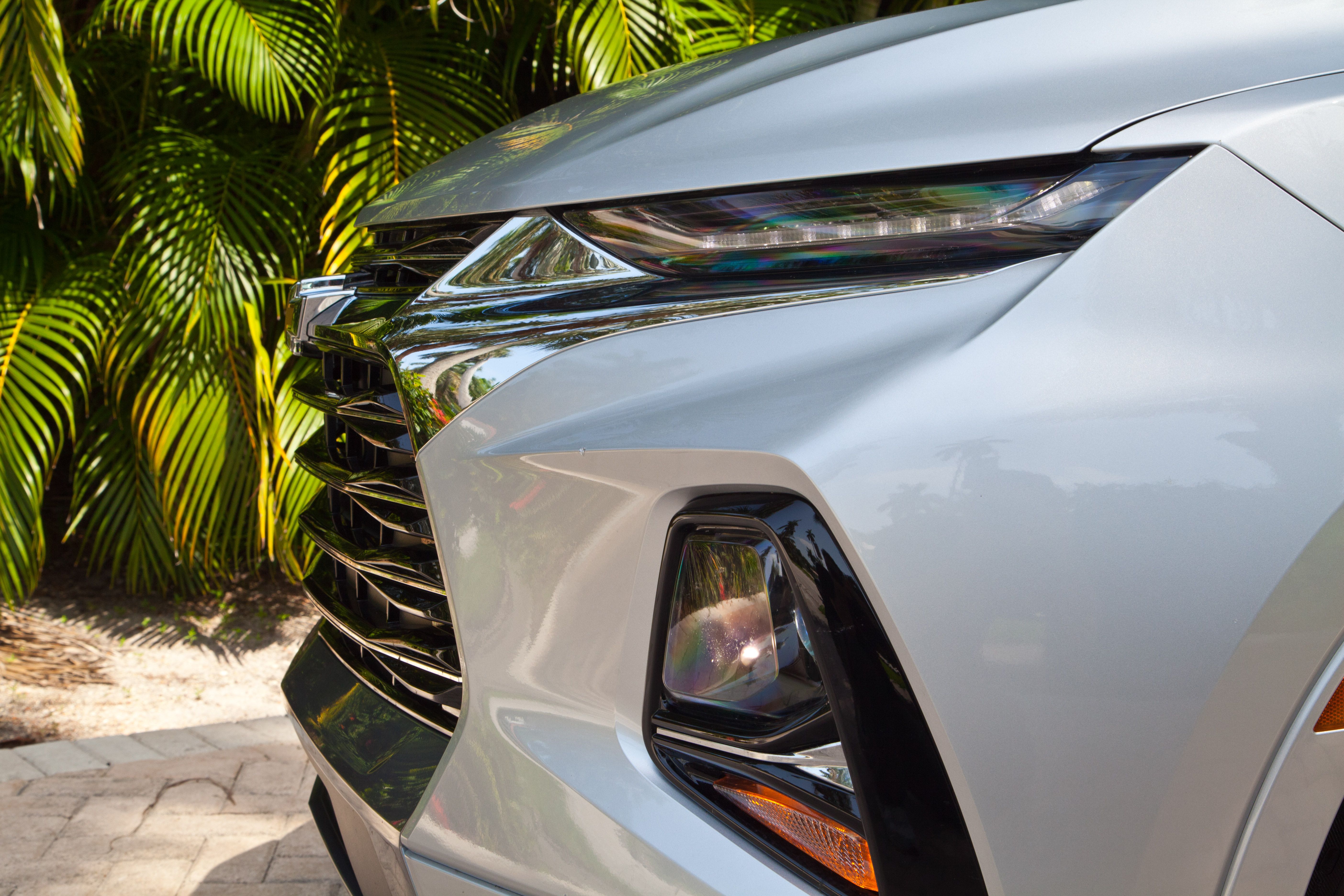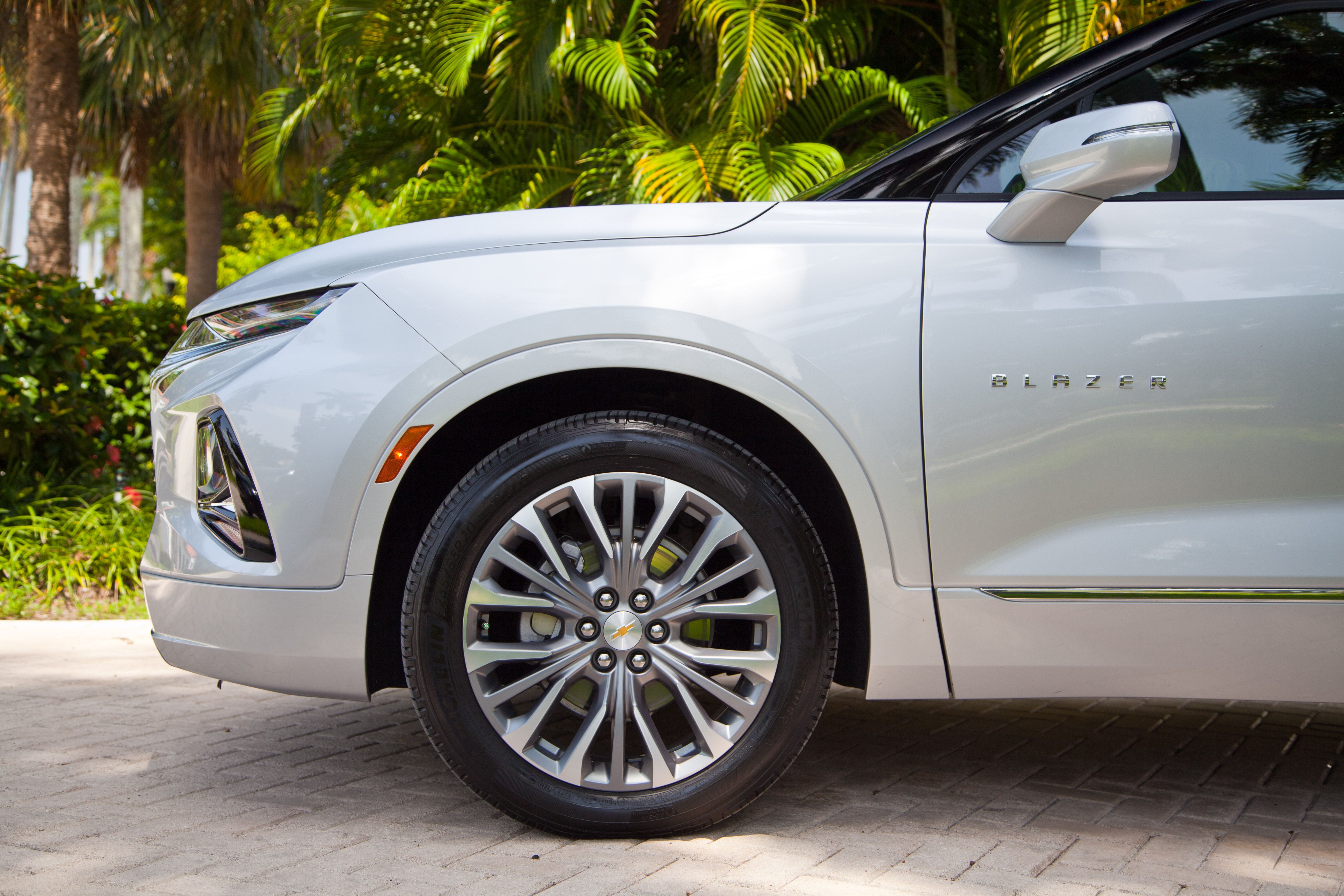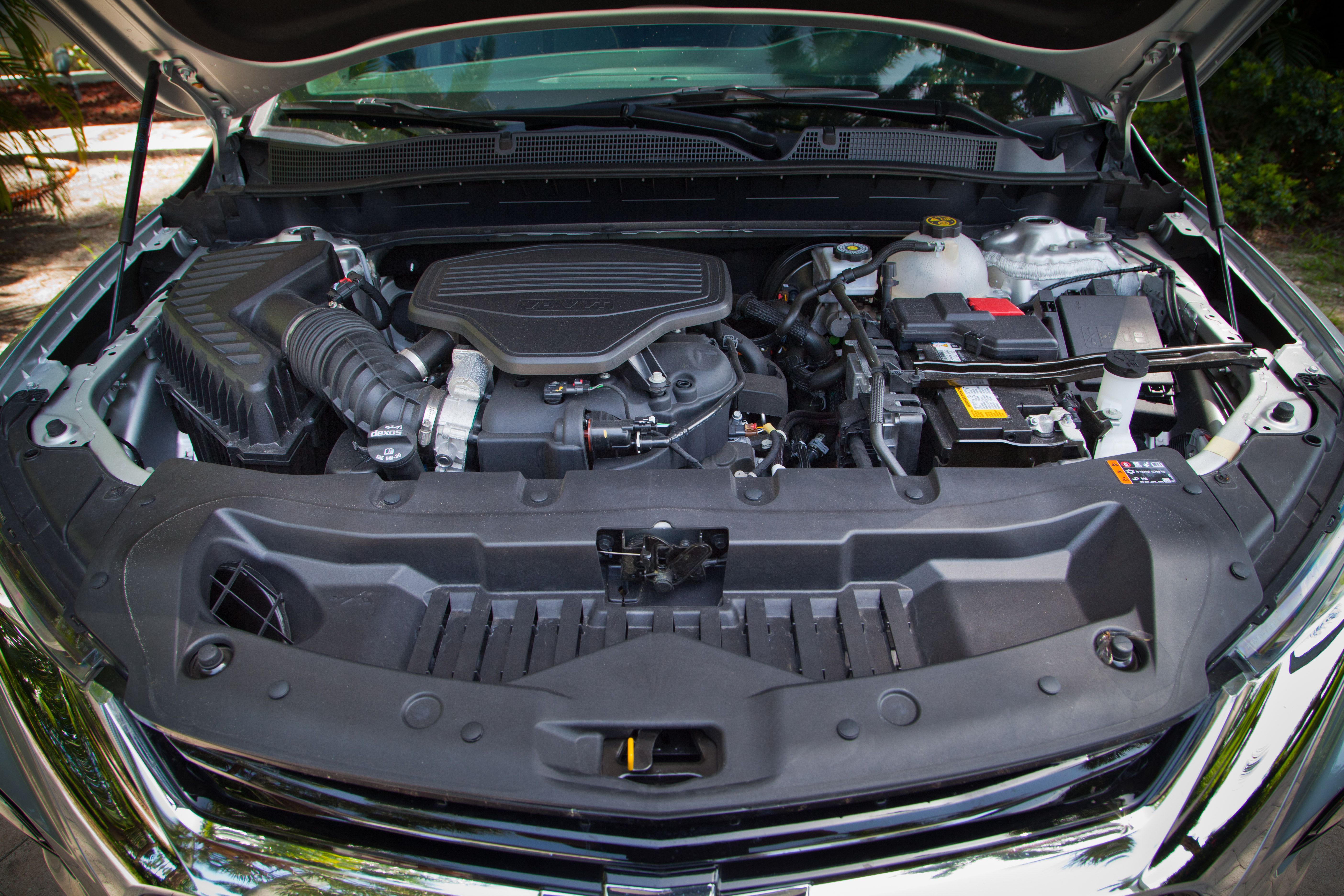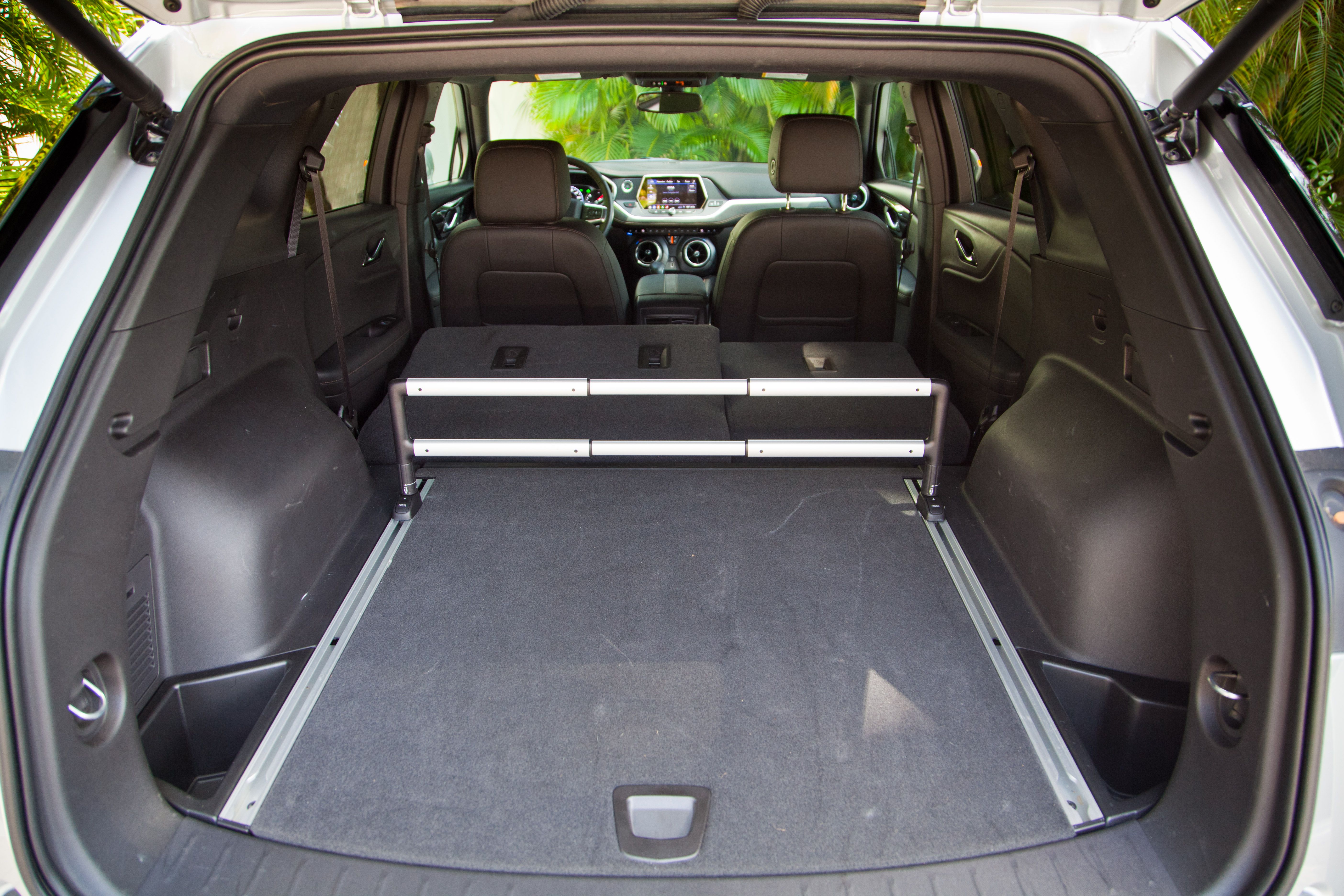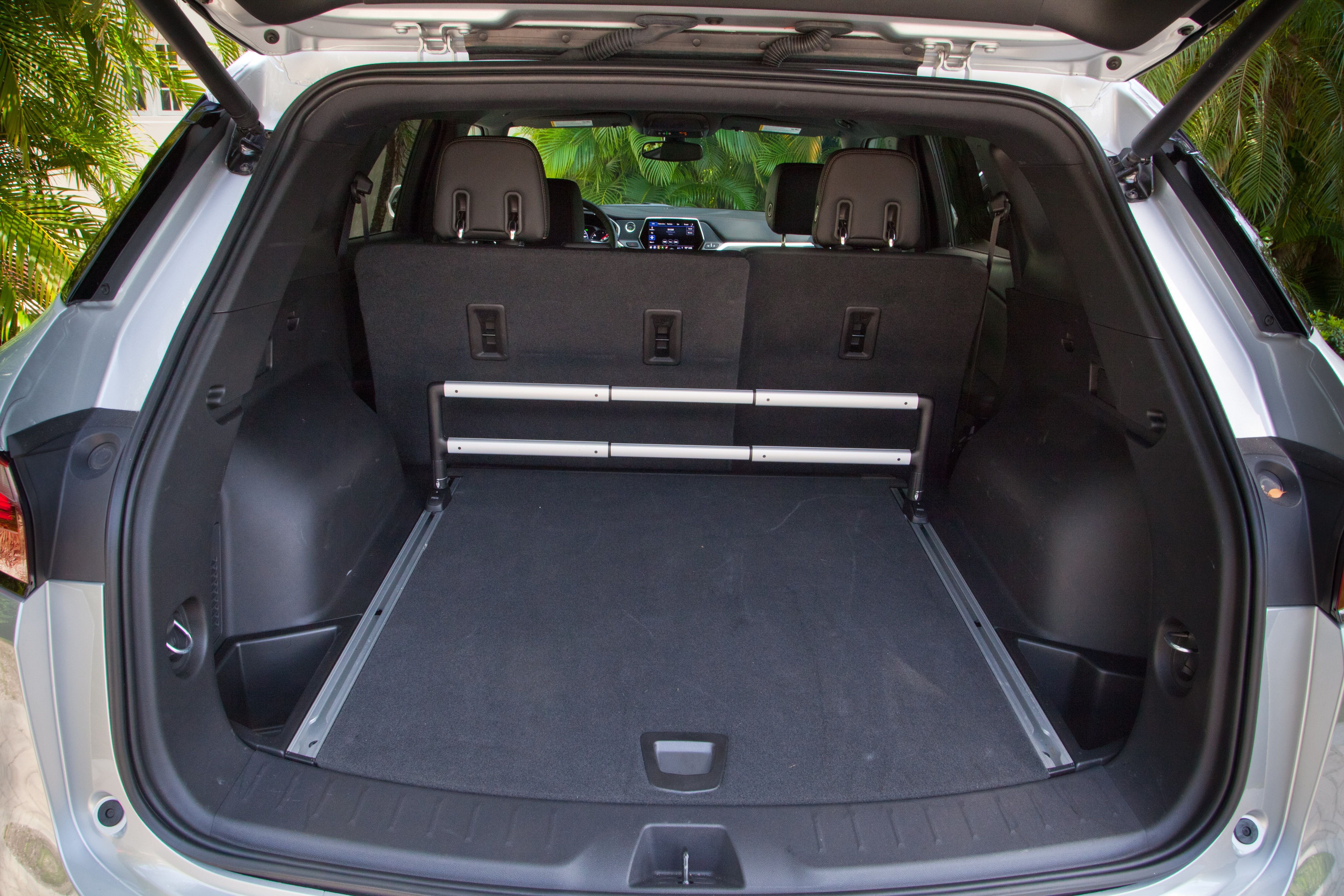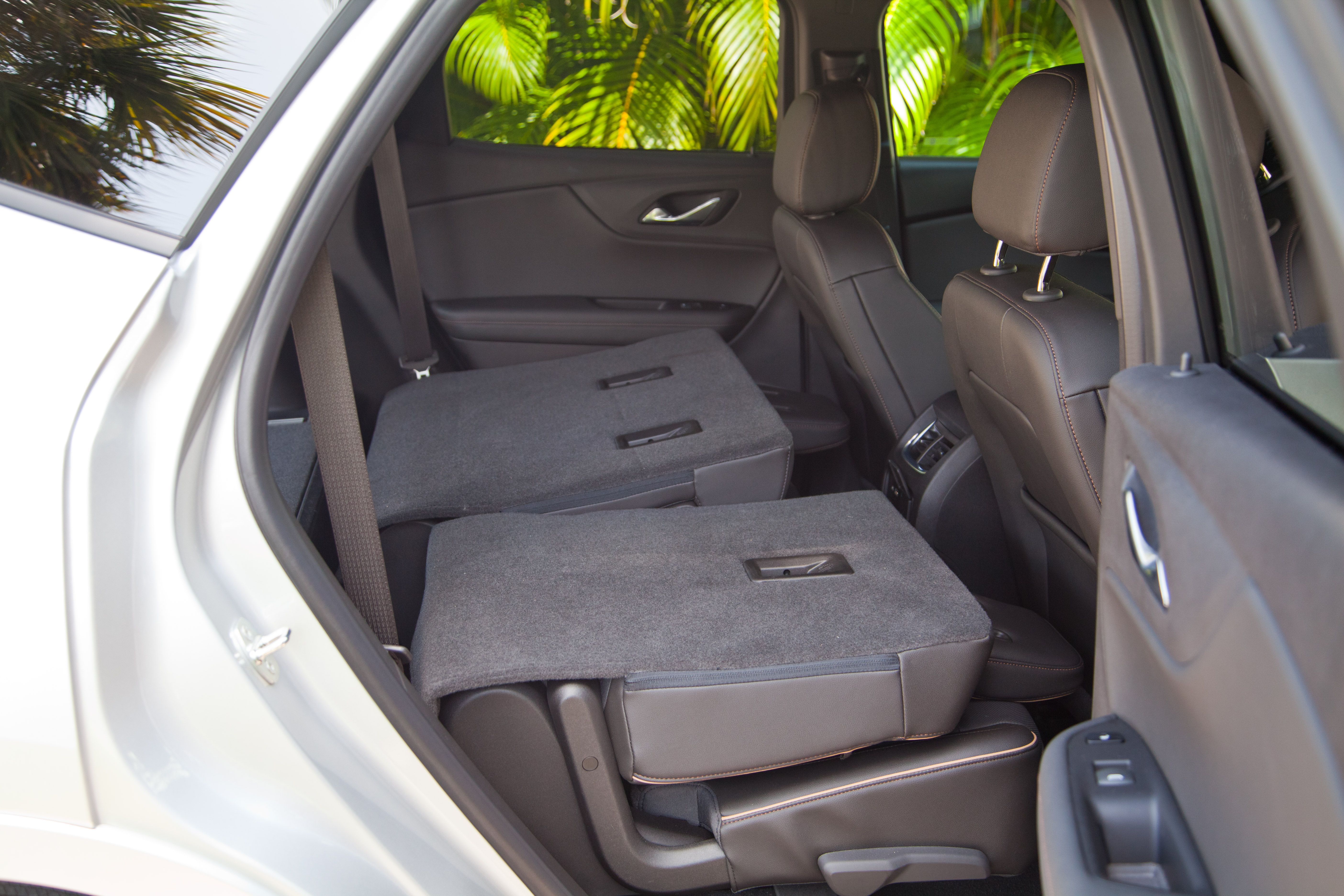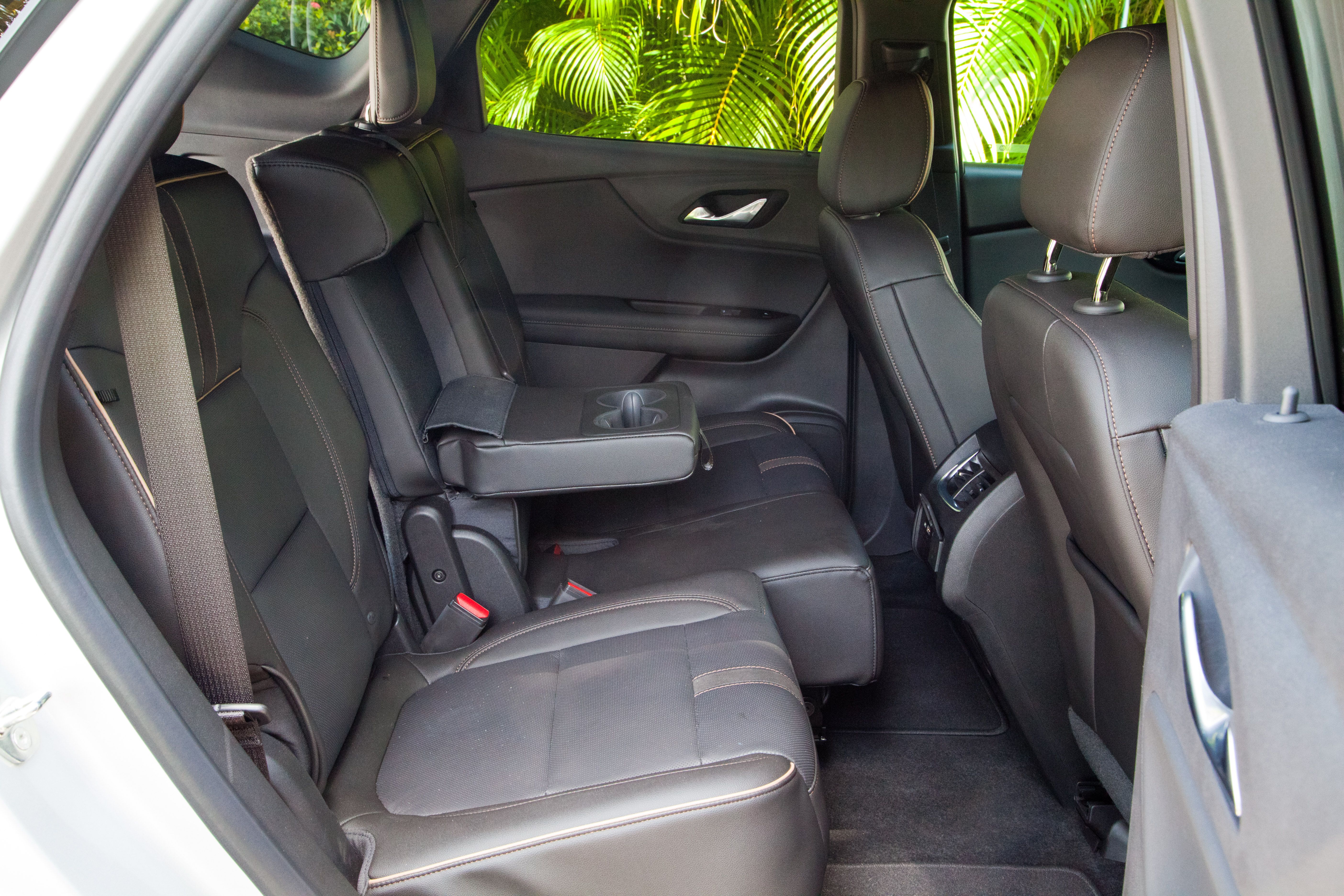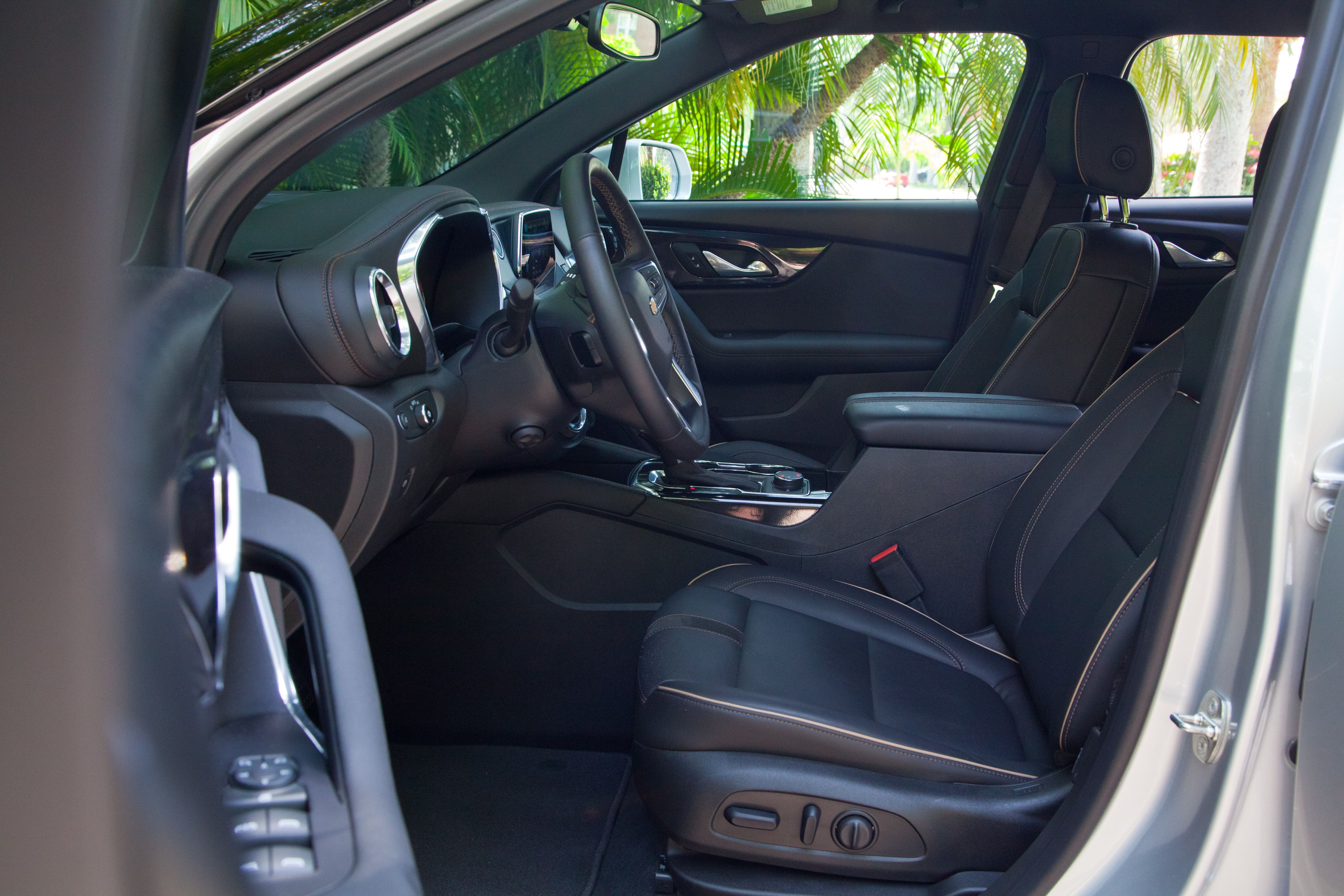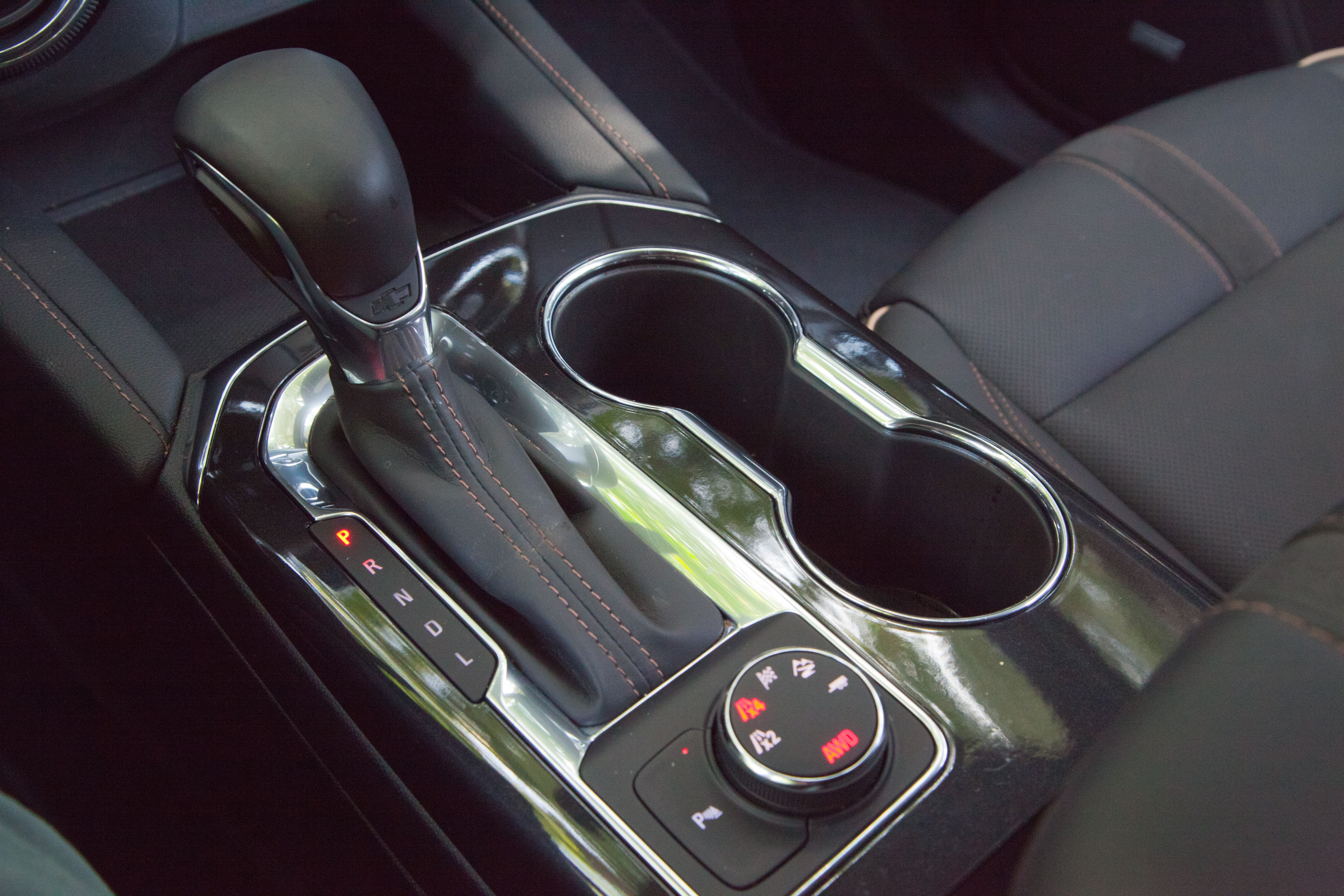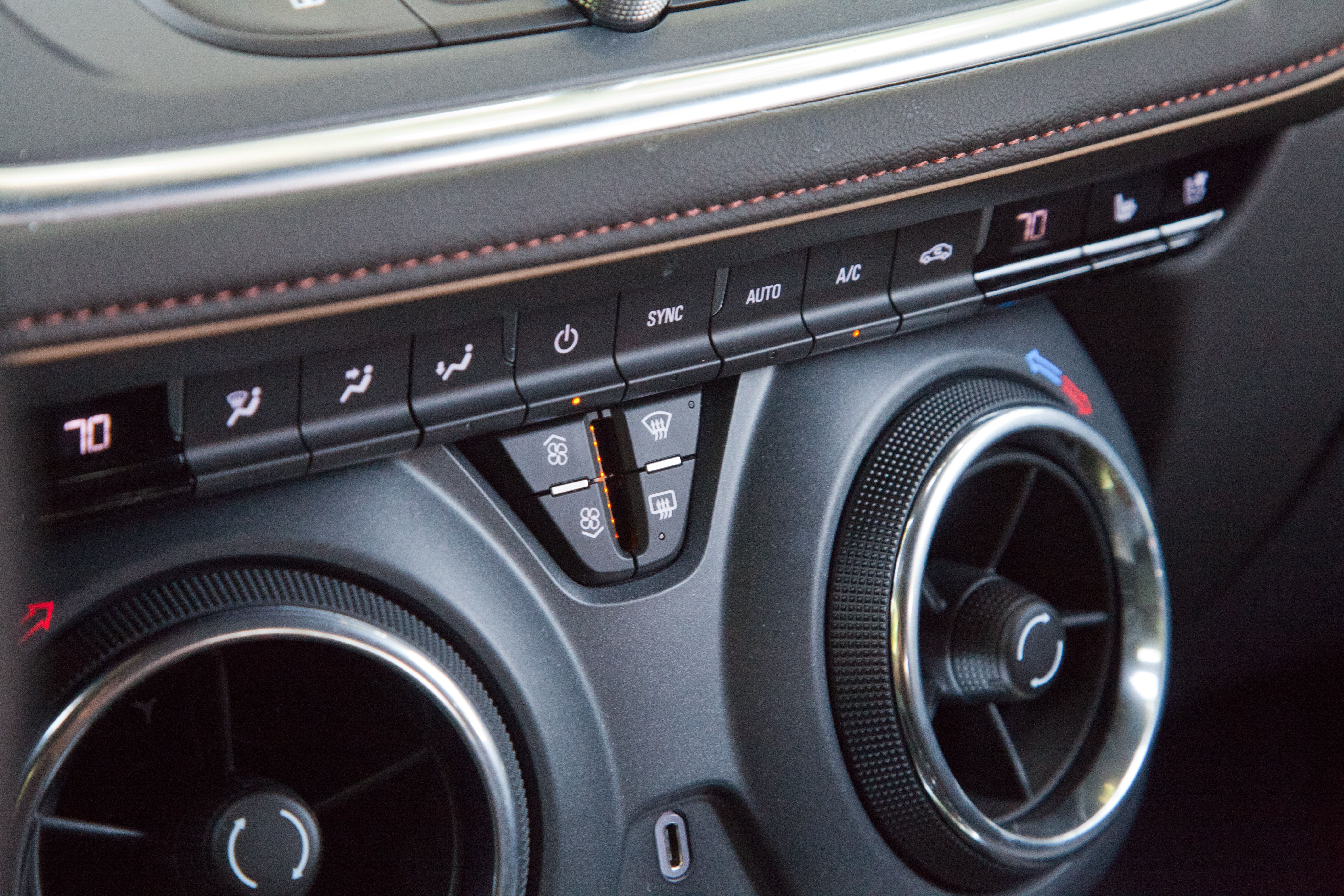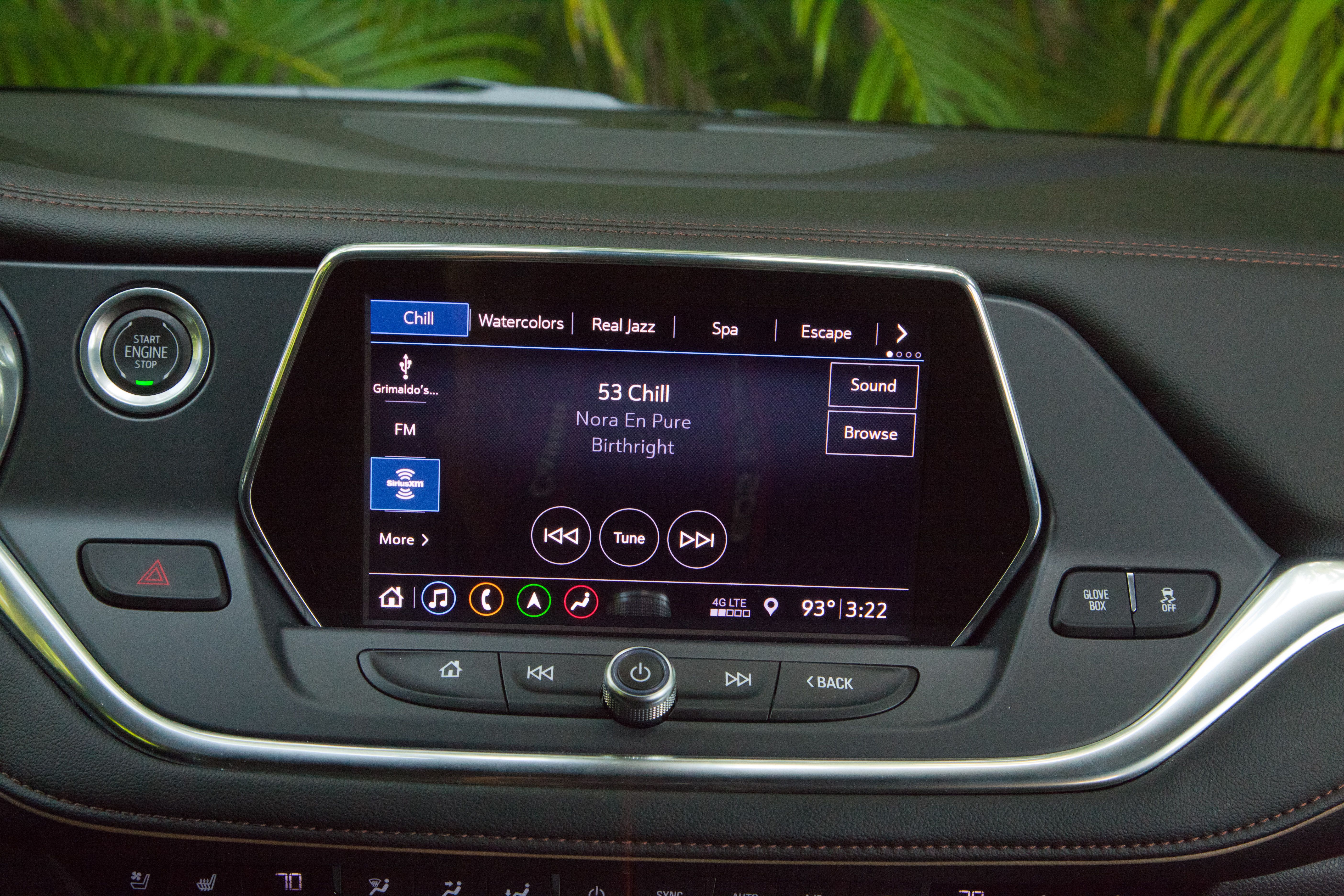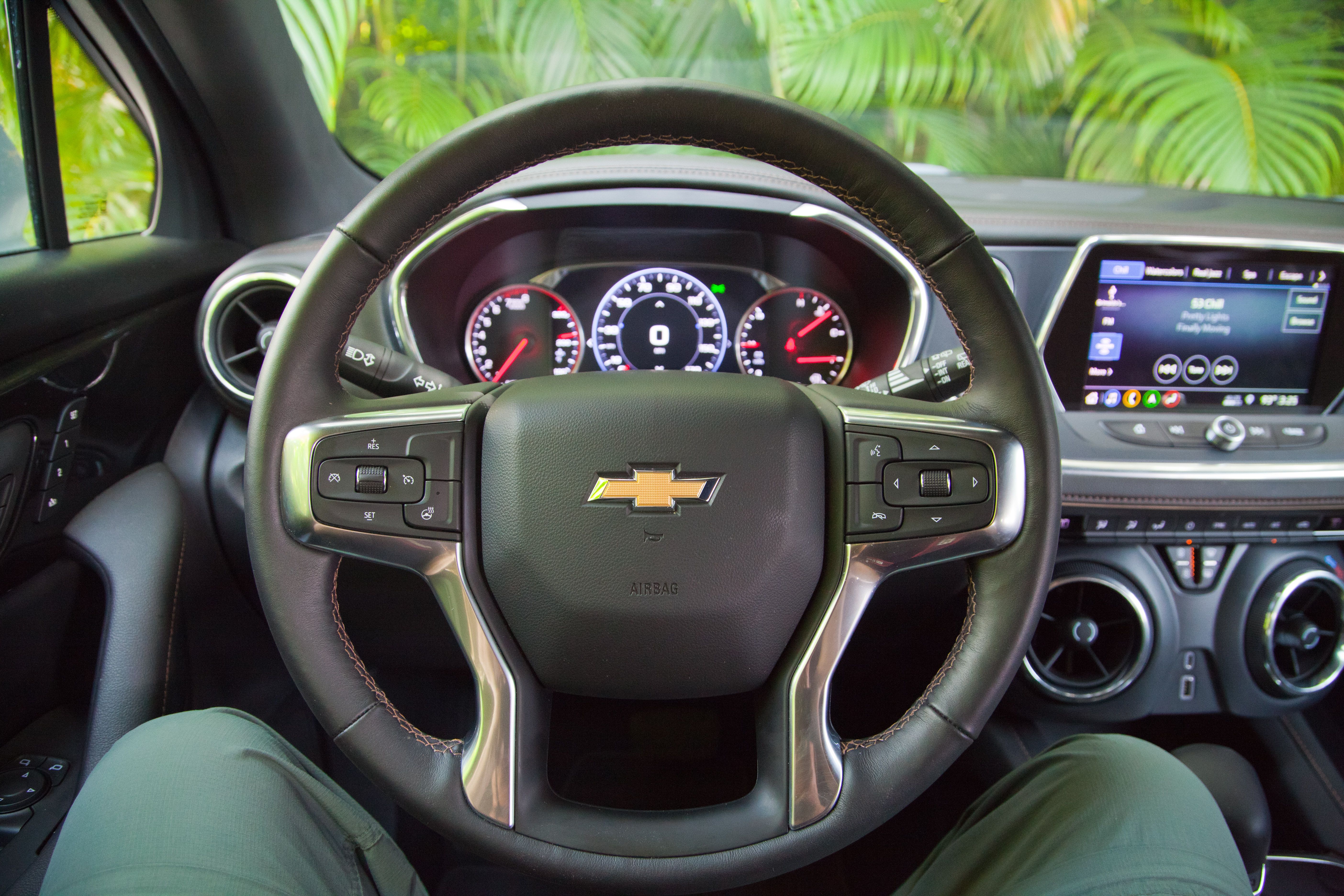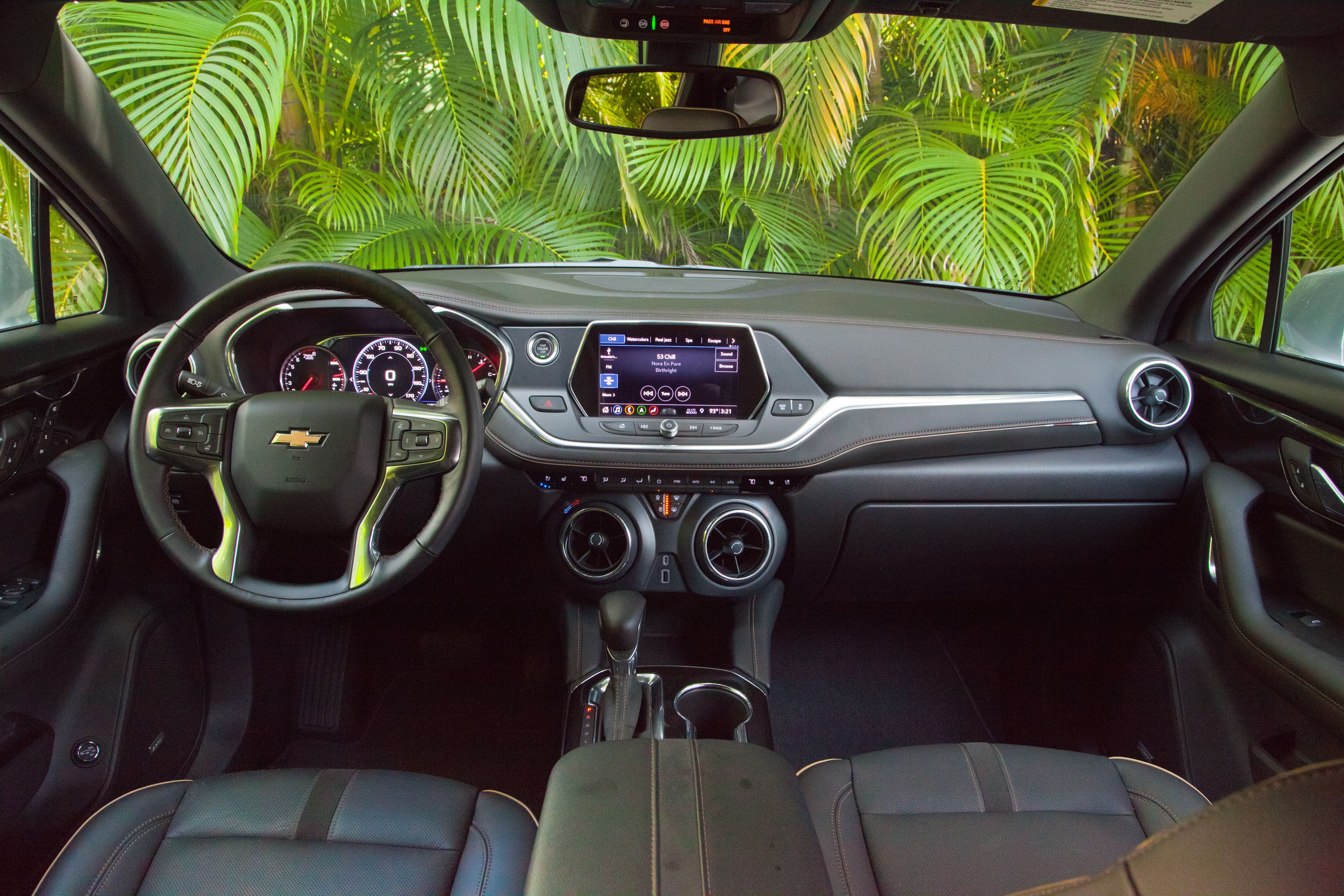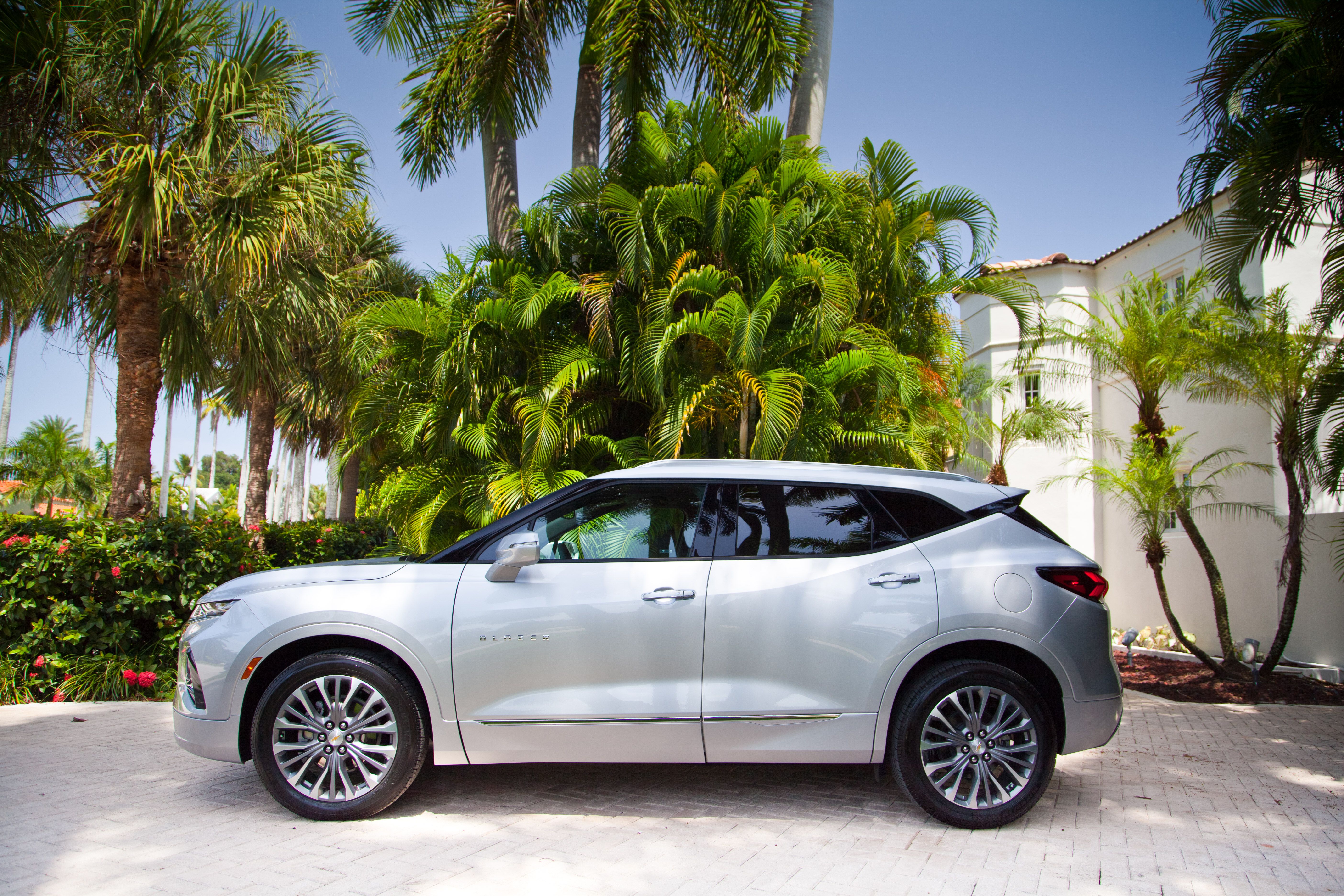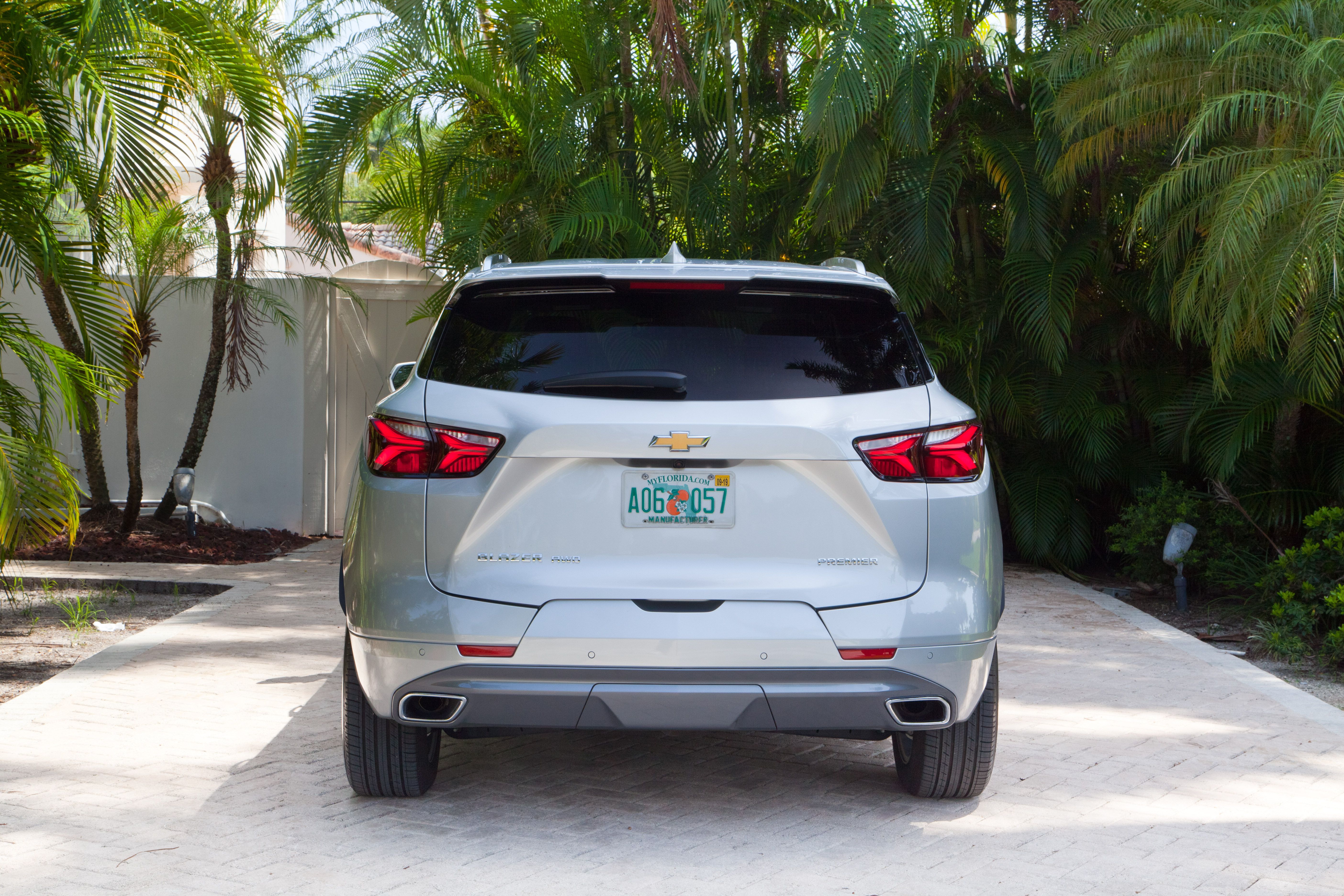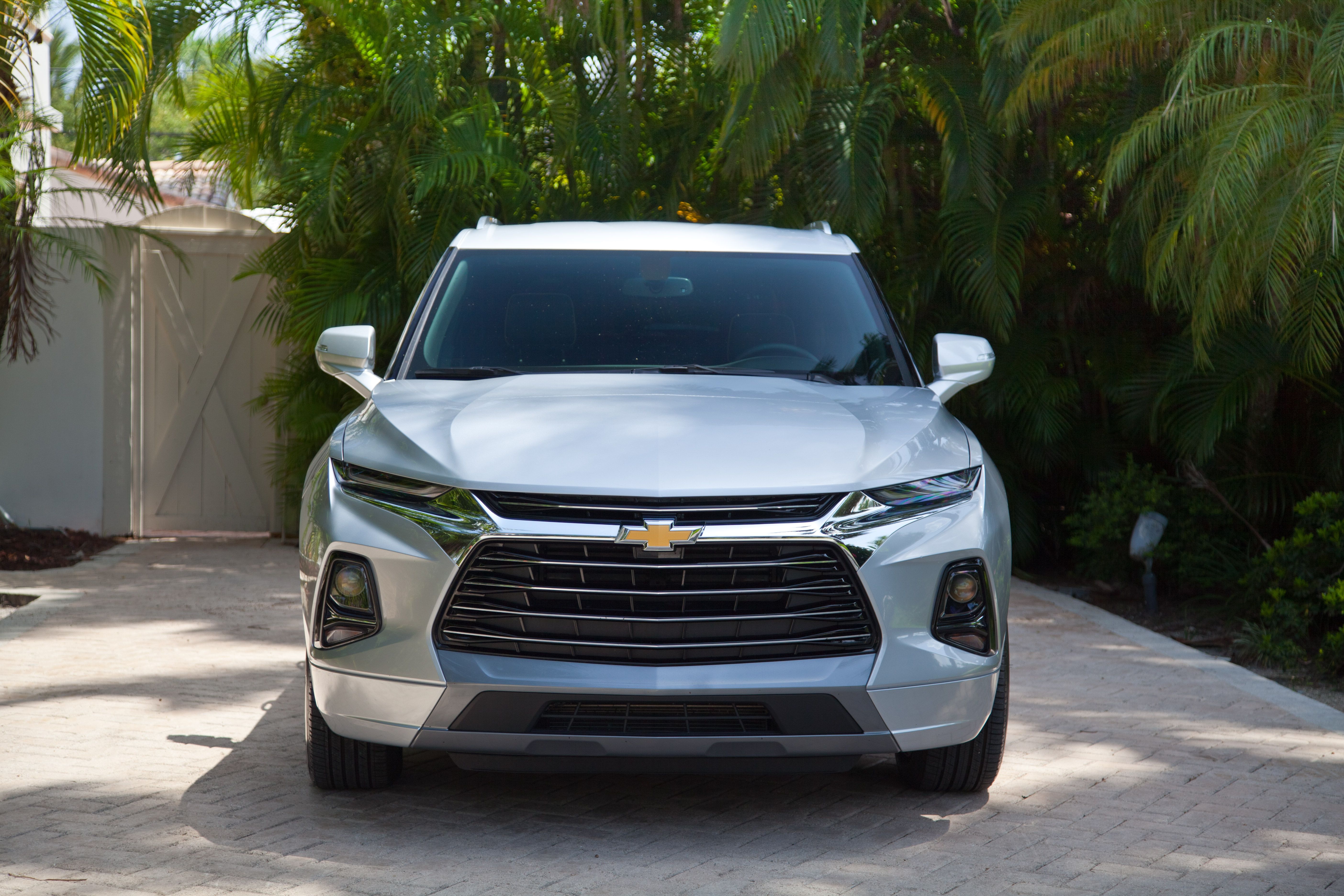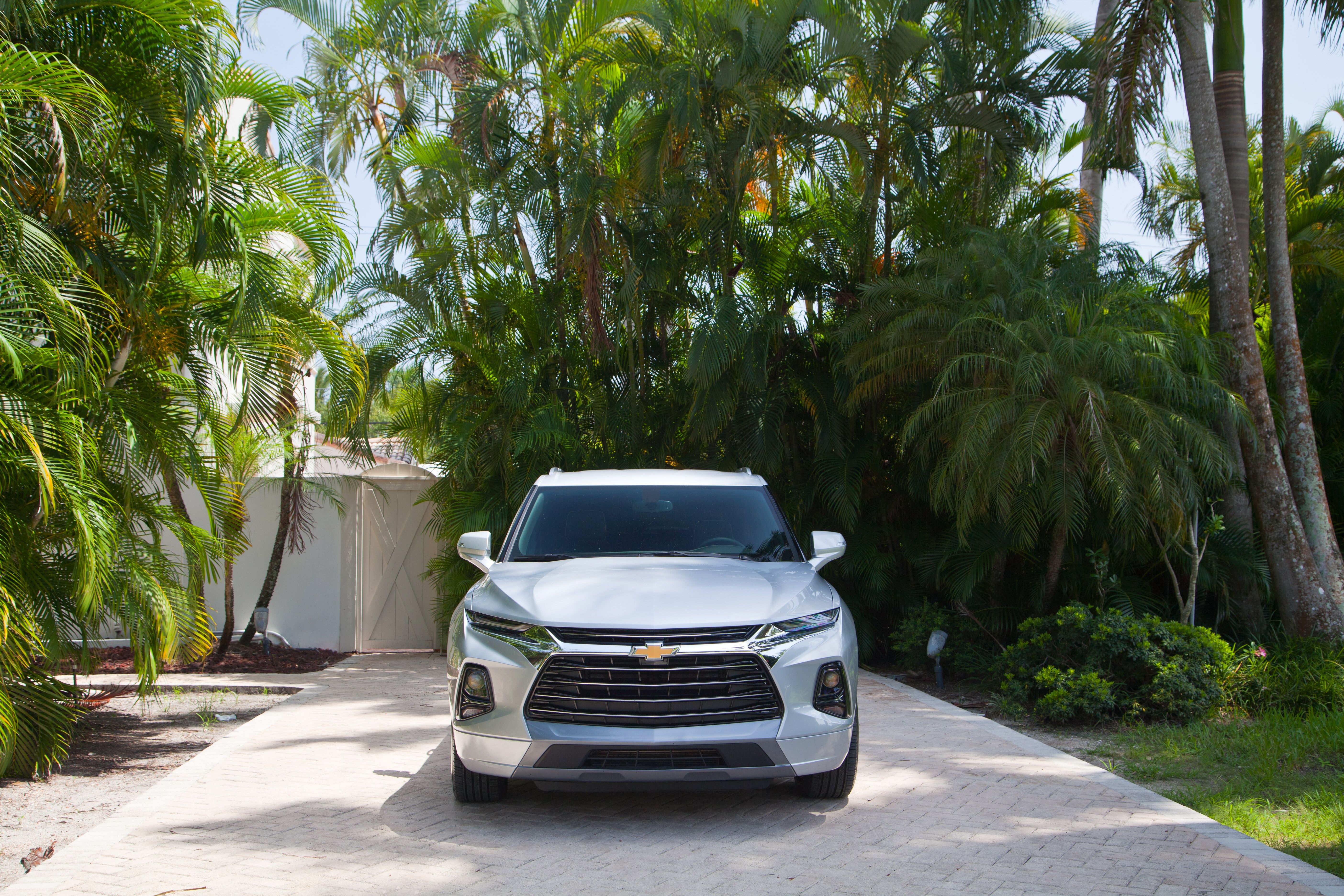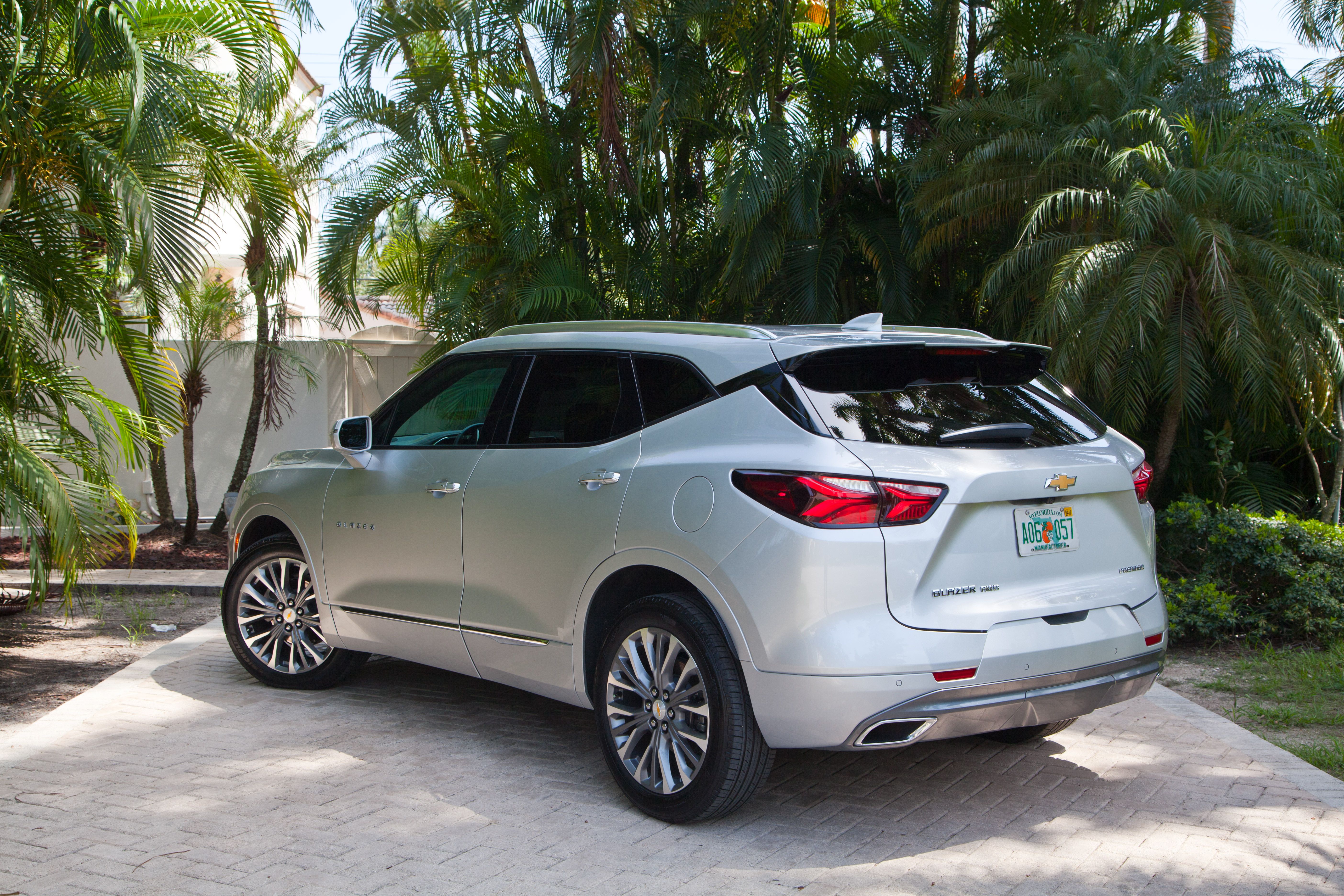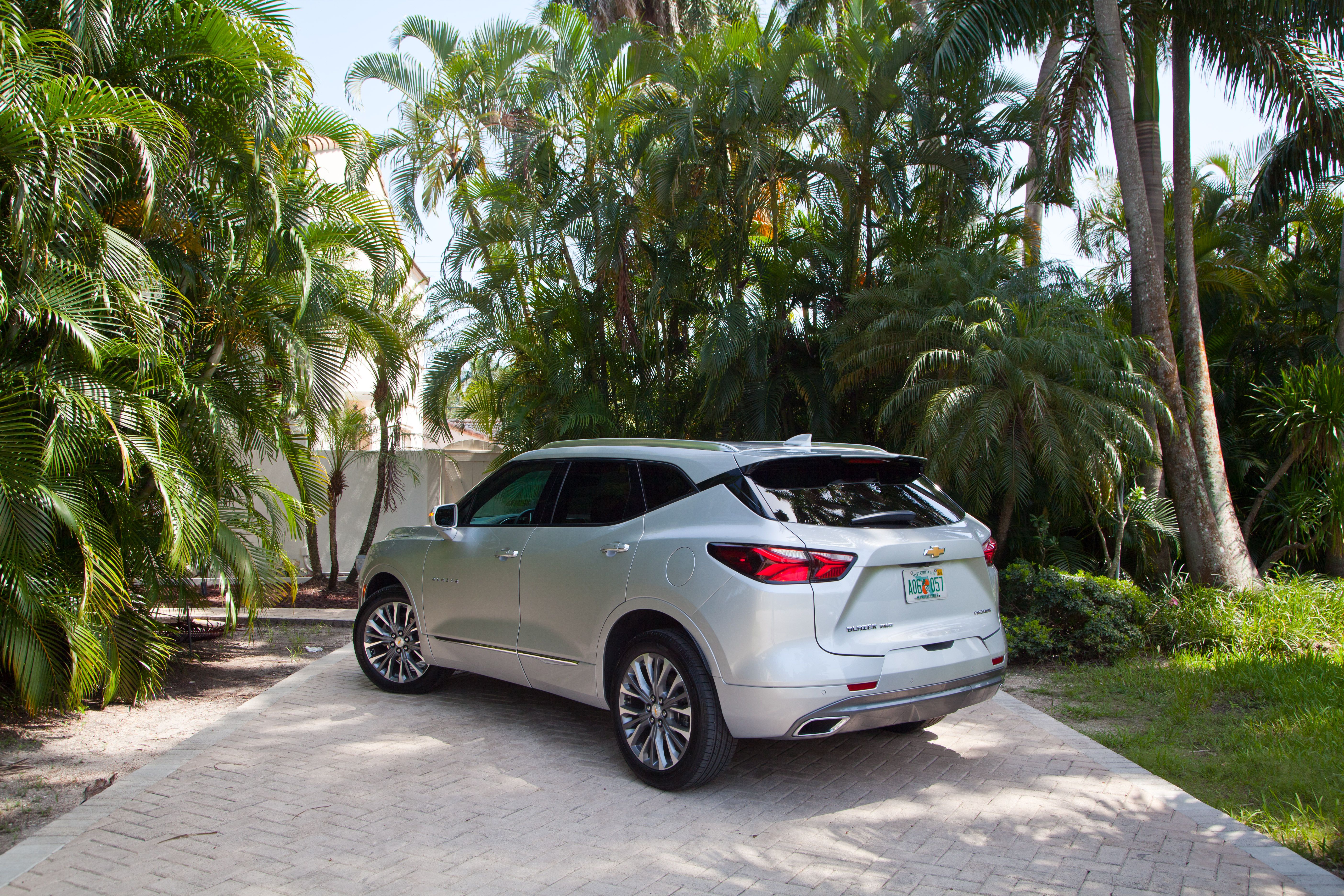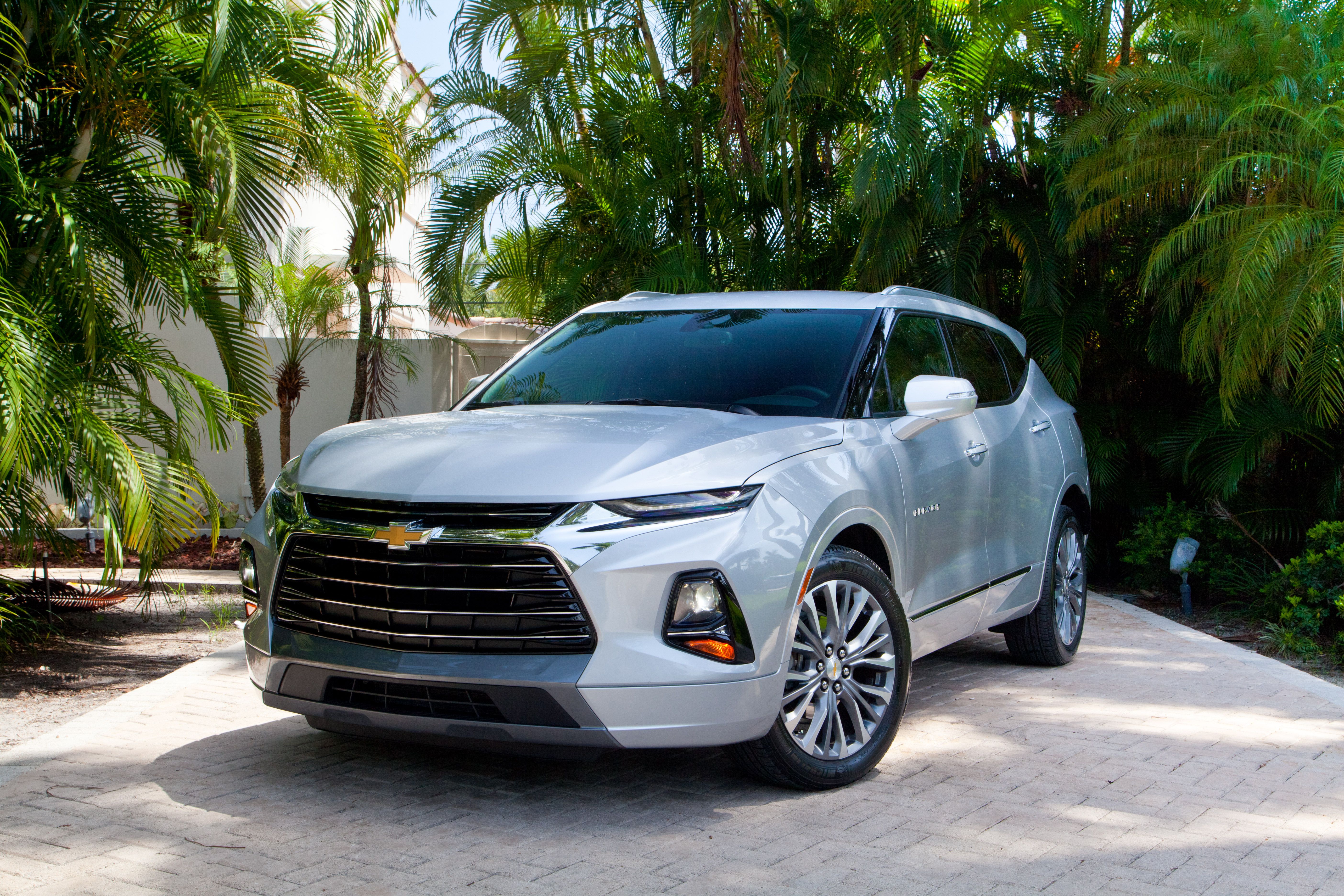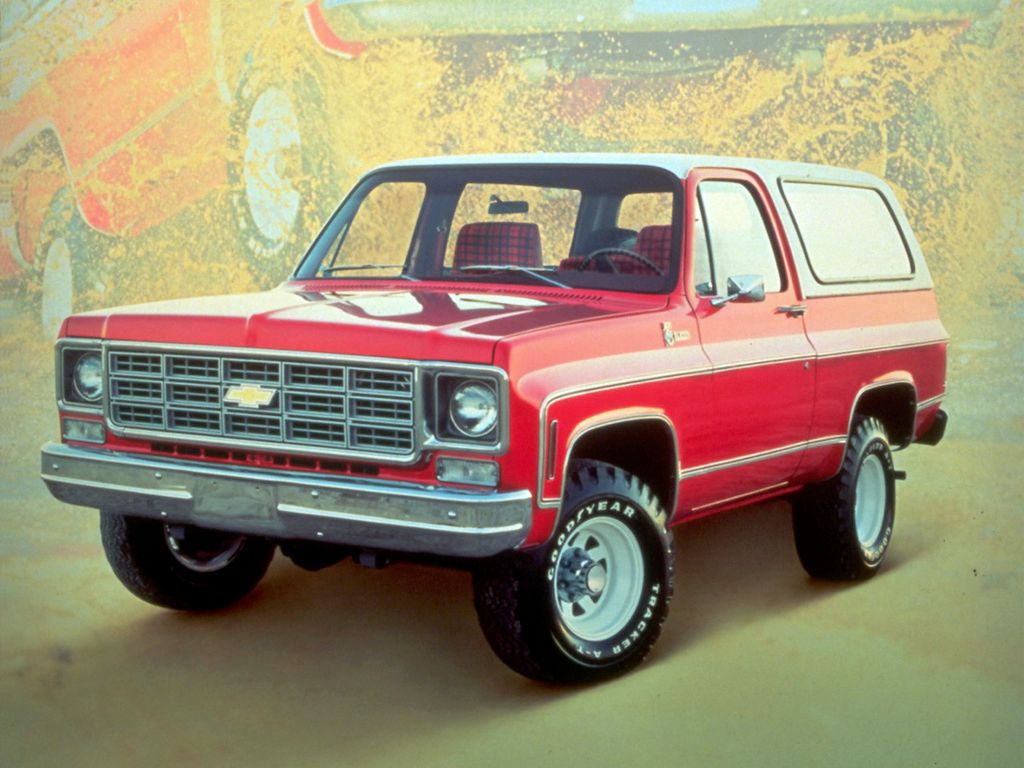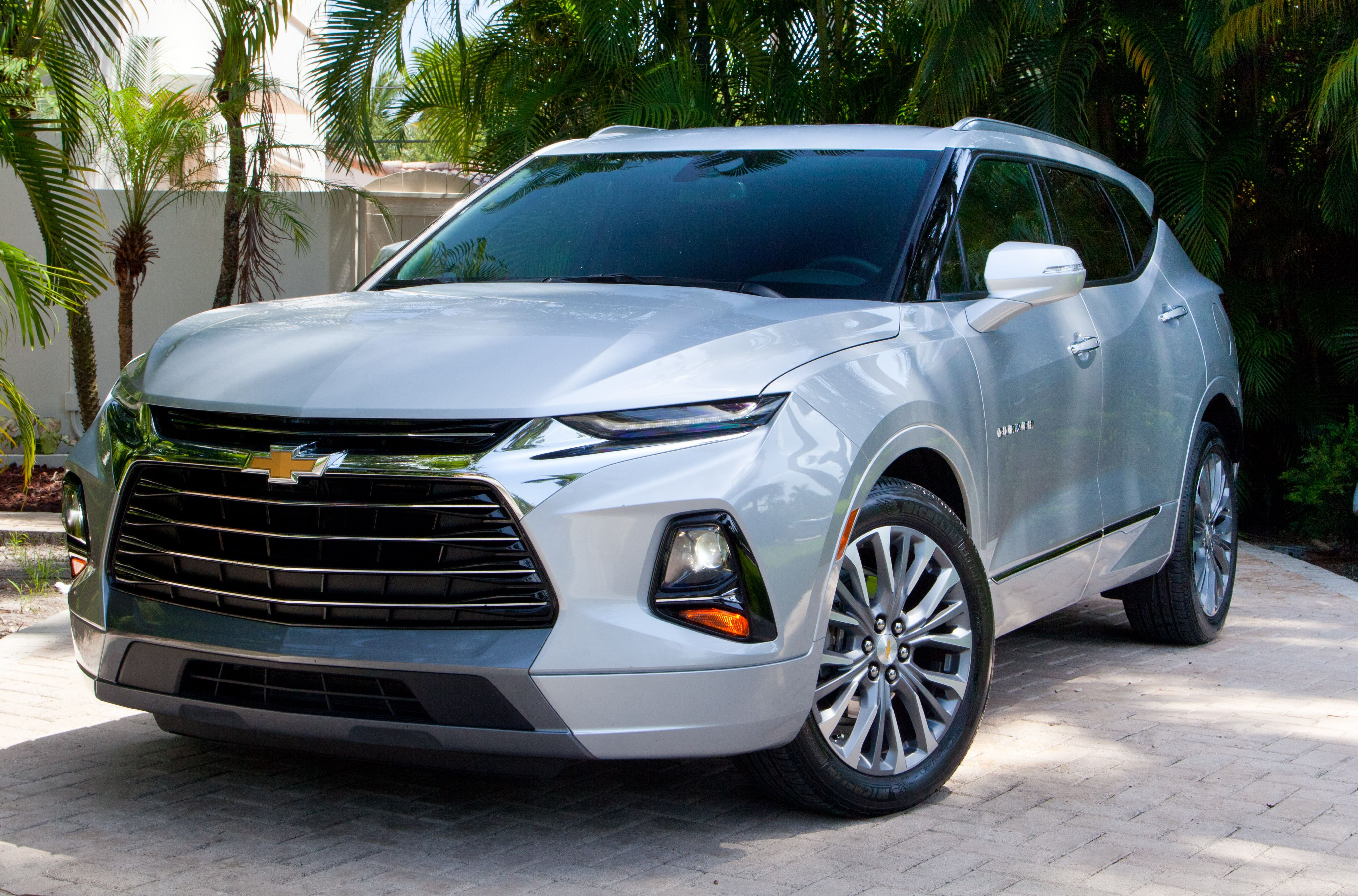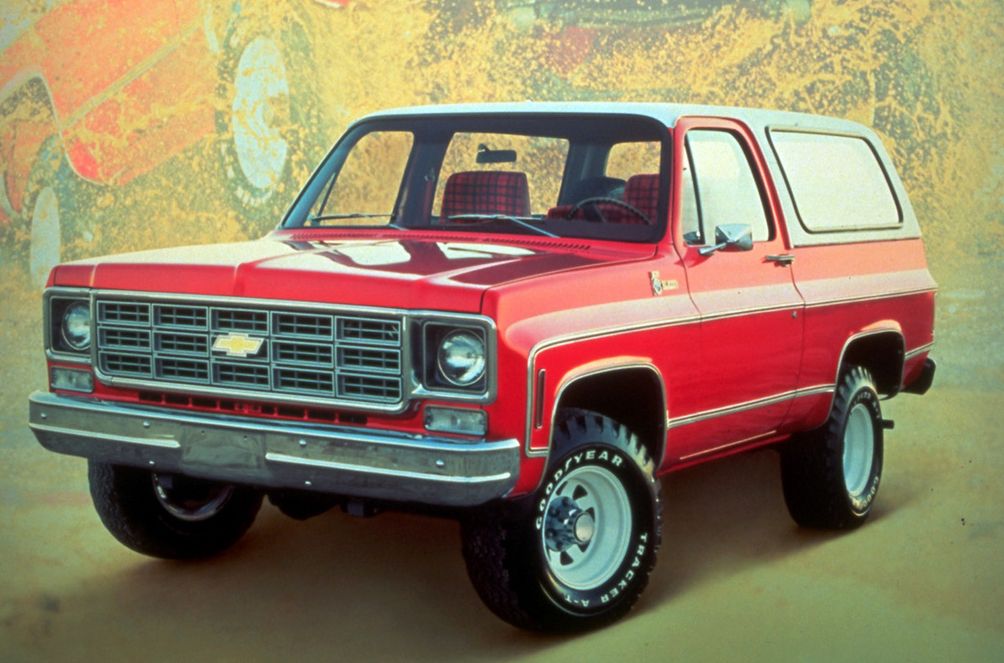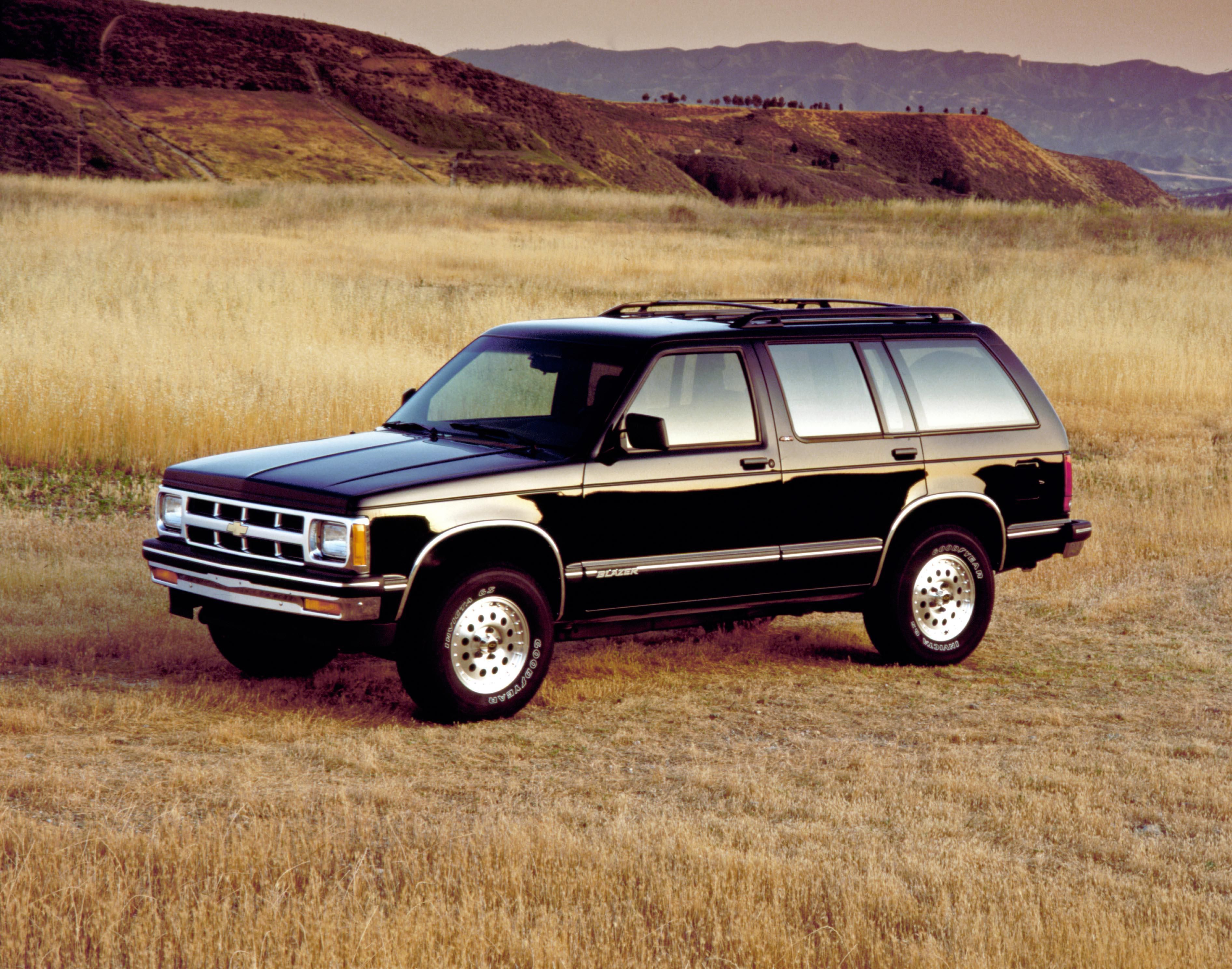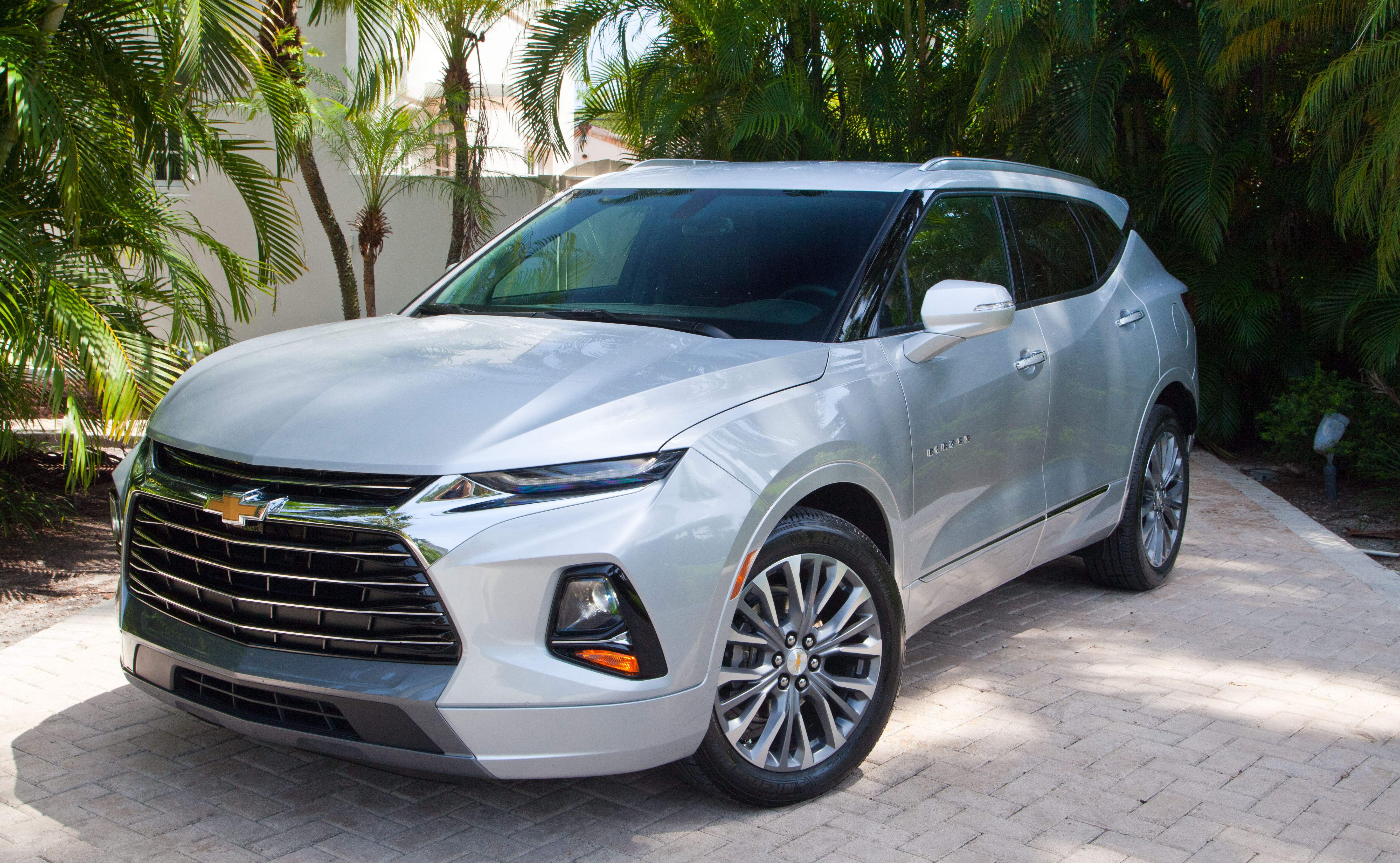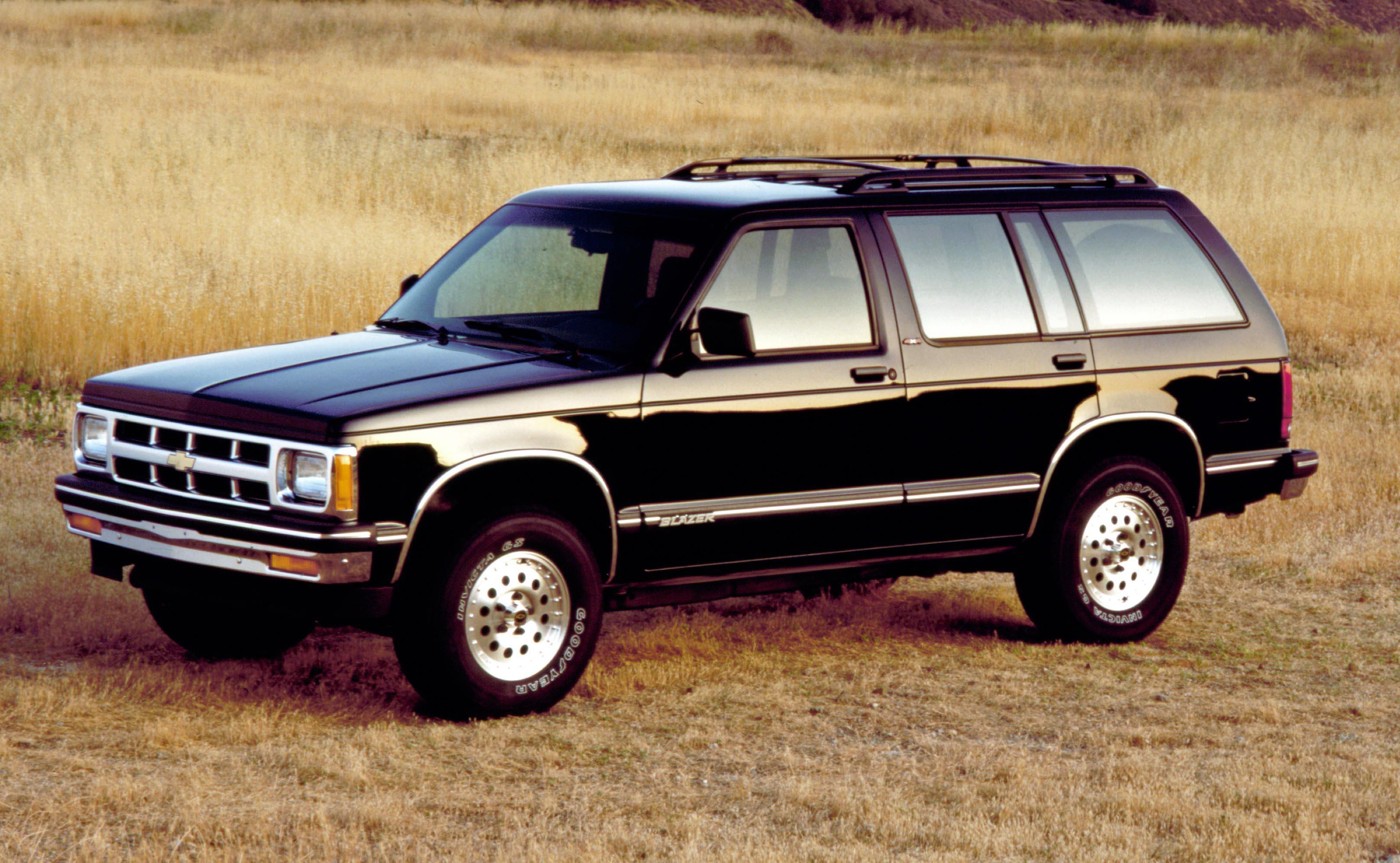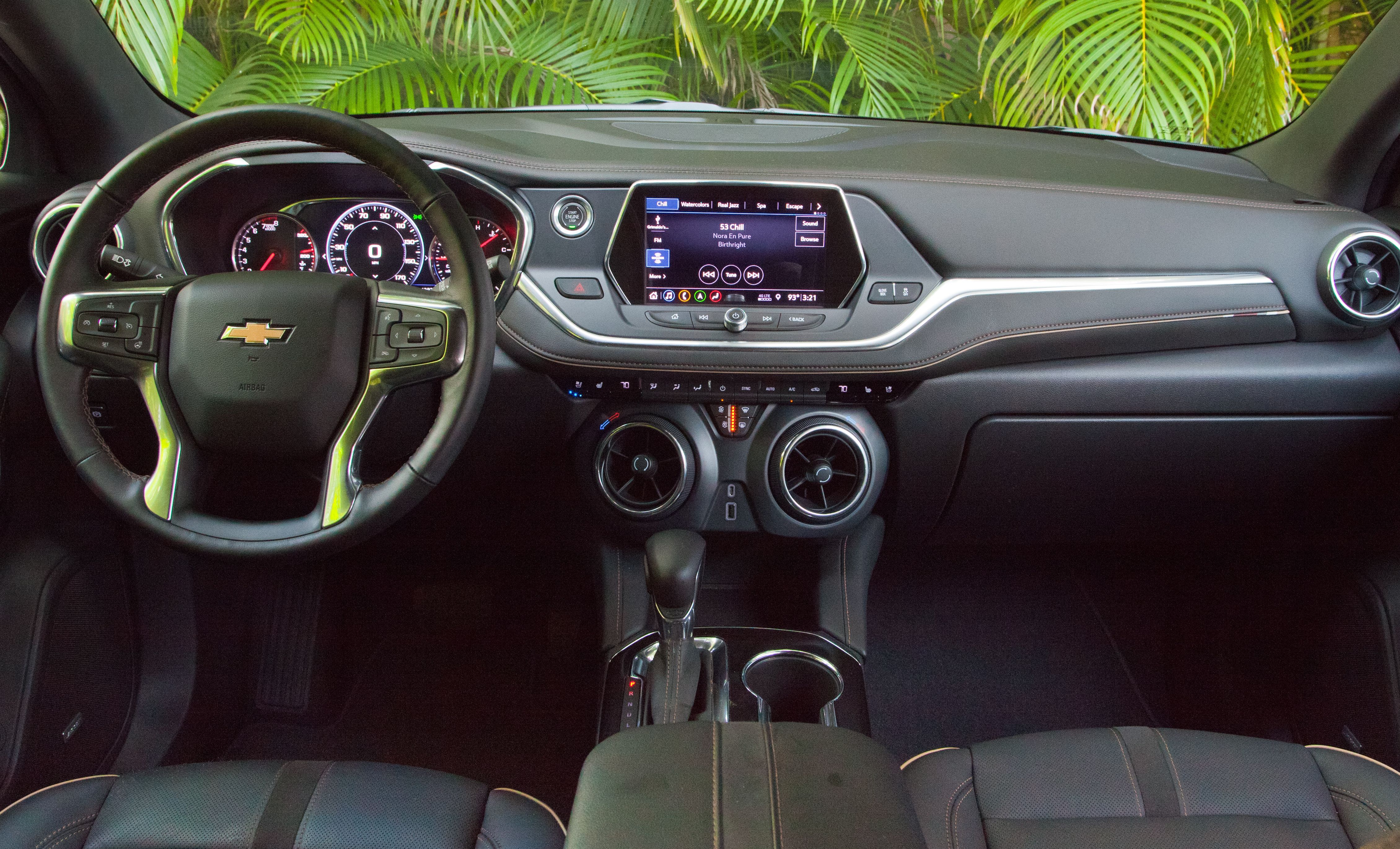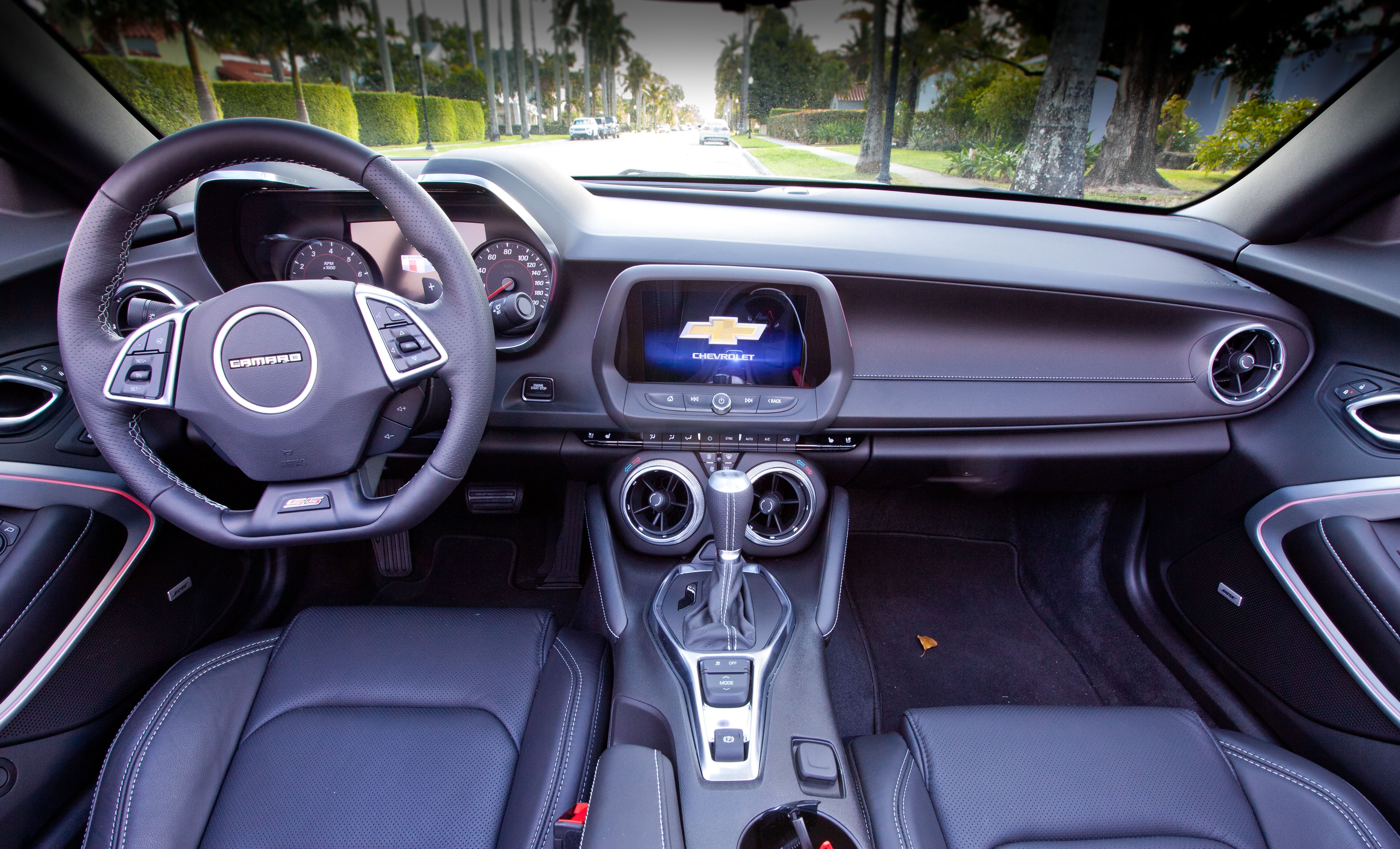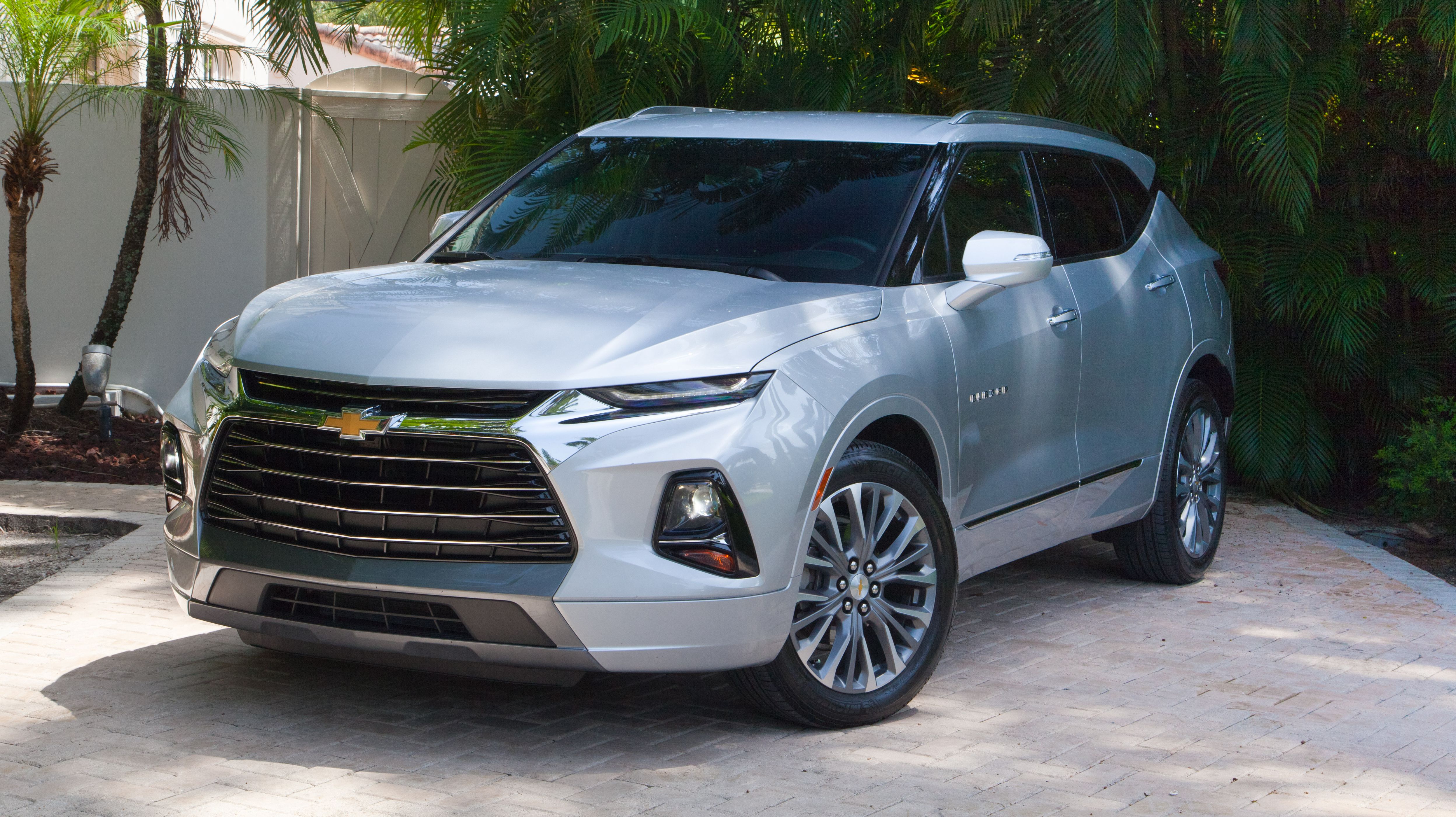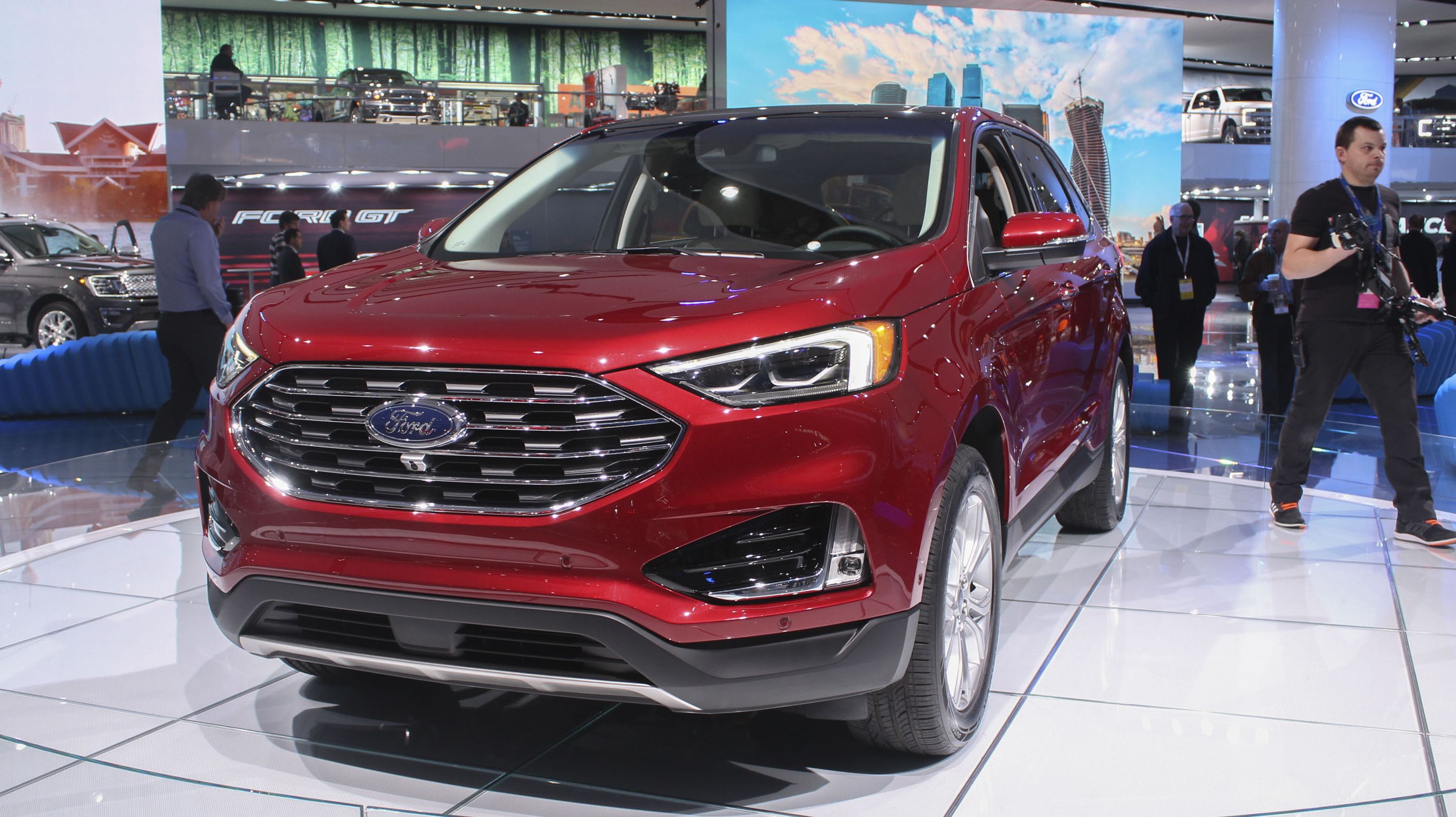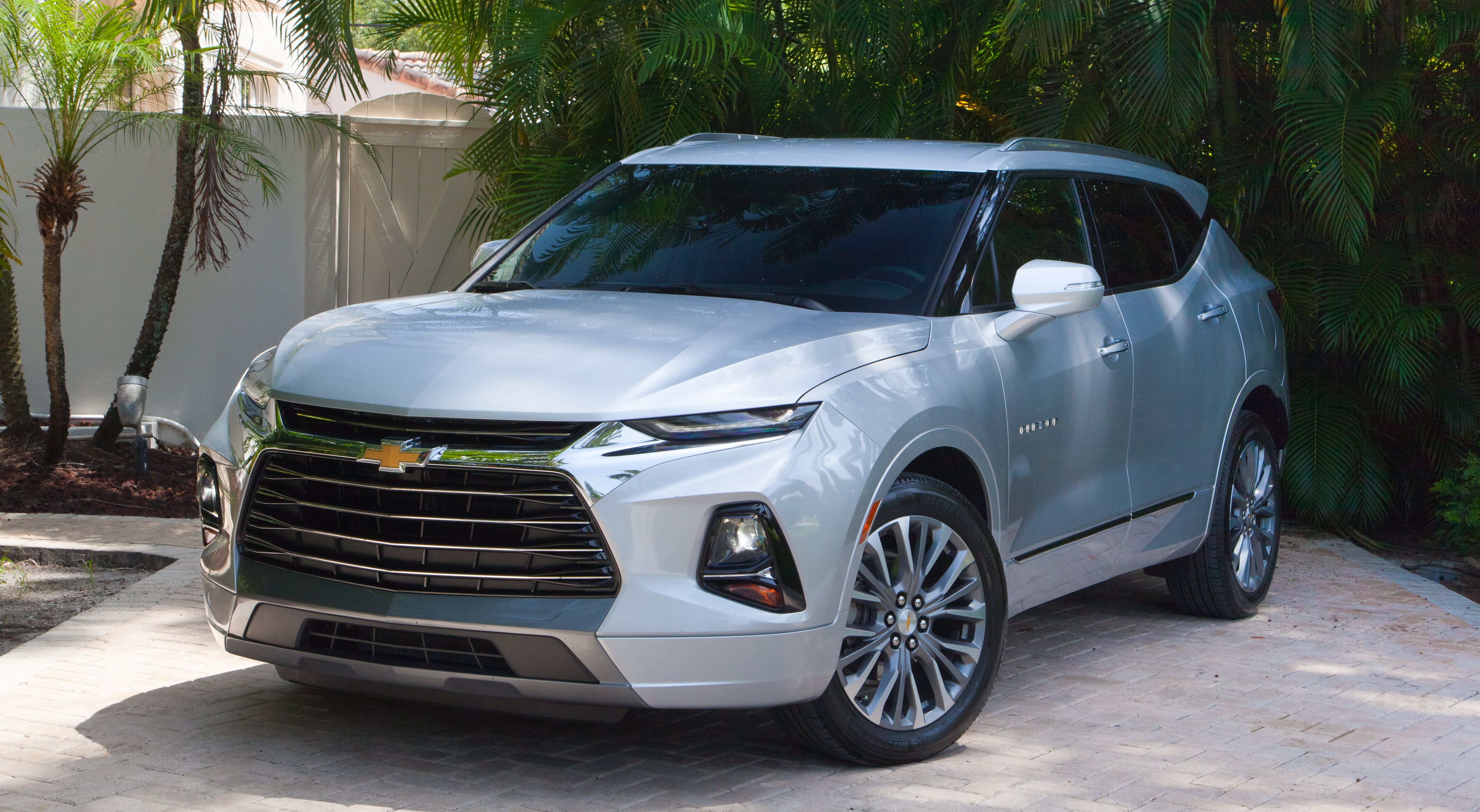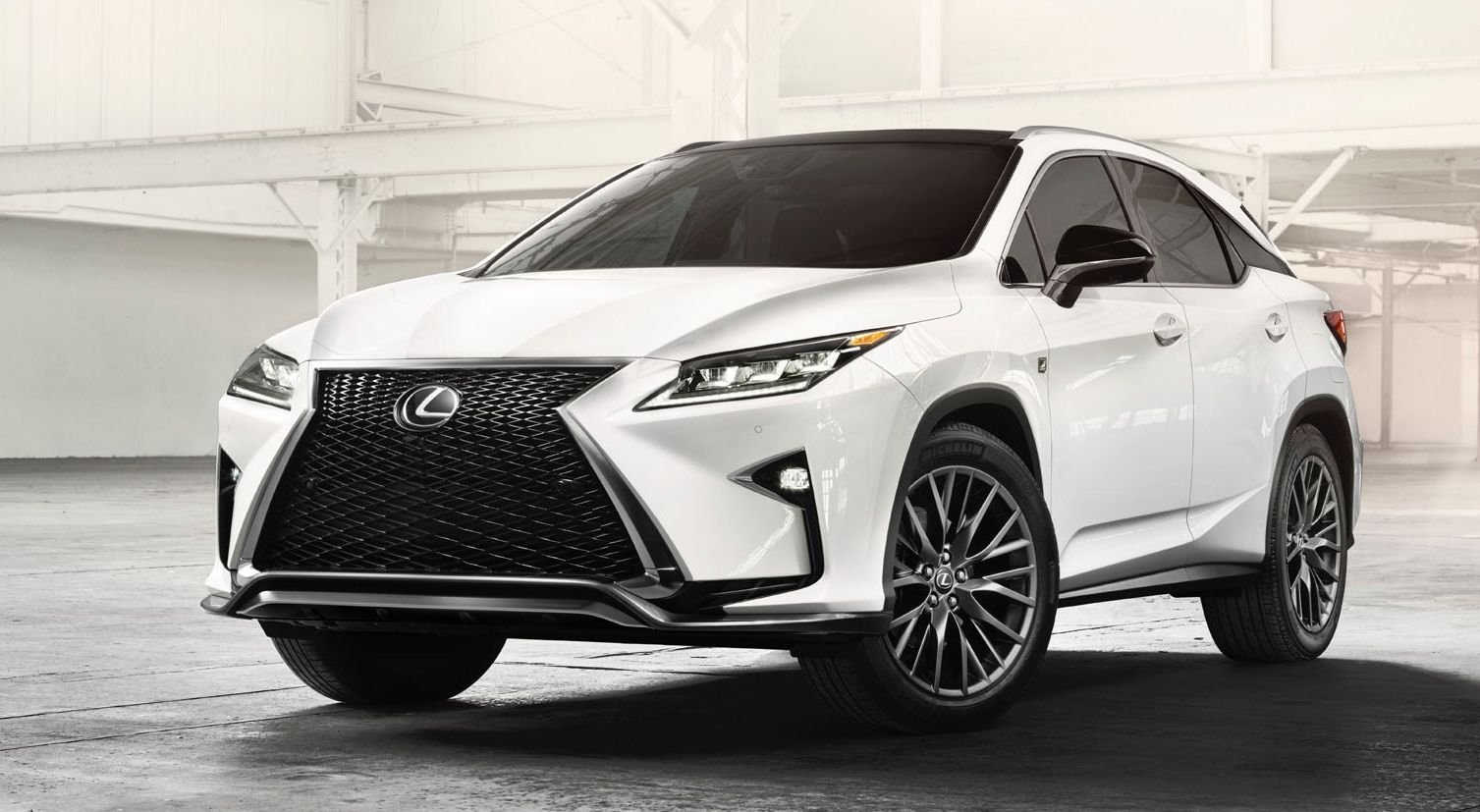The Chevy Blazer name dates back to 1969 when Chevy introduced the K5 Balzer, a large, rugged SUV with some serious utility and off-road chops. The Blazer name remained in use for this specific model until 1994 when GM decided the Tahoe name was a better fit. In 1983, 11 years before the K5 Blazer was discontinued, Chevy slapped the Blazer name on a smaller SUV known as the S-10 Blazer. From 1990 to 2000, there was a rebadged Tahoe sold in certain markets as the “Grand Blazer.” Despite the different shapes and sizes and designs over the years, there’s one thing all of these models stayed true to, and that was their beastly nature and ability to go anywhere while taking one hell of a beating. This trend continued all the way until 2005 when Chevy discontinued the S10 Blazer and shelved the name for what we thought would be forever. Then, 2019 came, and here were are looking at the Blazer name all over again.
The problem with the new, 2019 Chevy Blazer is that it has attracted polarizing opinions. For some, the new Blazer is too much of a family hauler with little ability to go off-road and, thus, just doesn’t live up to the Blazer name – especially when you consider Ford’s bringing back a boxy Bronco and Ram is bring back the RamCharger. Others, however, seem to like the design of the new Blazer – it’s sporty thanks to its Camaro design cues, has decent interior space, and may even be a good family vehicle. This second group of opinion makers are, obviously, the ones that didn’t look at the old Blazer as a part of Chevy heritage. But this is where we are now, and when we got the opportunity to try out the new Blazer to see how it holds up in the real world, we couldn’t turn down the opportunity. Does it oppose a true threat to the segment, or did Chevy drop the ball? Join us as we explore the all-new Chevy Blazer and how it holds up against the competition.
2019 Chevrolet Blazer - Driven
- Make: Array
- Model: 2019 Chevrolet Blazer - Driven
- Engine/Motor: V6
- Horsepower: 308 @ 6600
- Torque: 270 @ 5000
- [do not use] Vehicle Model: Array
Chevy Blazer Exterior Design
The new Chevy Blazer may be an extreme departure from its boxy, utilitarian past, but that doesn’t mean that it can’t have a strong presence in the modern SUV\crossover segment. The most noticeable thing about the front end of the new Blazer is the Camaro-based design cues that include the large grille and the sleek headlights. The Camaro doesn’t have those funky fog lights in the corners, but certain trims do have the weird fake vent on each side of the fascia. Our tester had the right mix of black and chrome to offset the grey body color, but the plastic trim on the bottom was a little tacky. The shiny black finish on the bezel around the foglamps and running laps do help offset things, and it really ties in with the side nicely thanks to the gloss-black A-Pillars.
We do have to admit that the side profile of the new Blazer is attractive. The gloss black trim on the pillars gives the roof a floating appearance, and that upper bodyline that extends well above the beltline adds a bit of aggressiveness. One could argue that this body line alone is why the RS trim package works for the new Blazer, but that’s a story for a different day. The concave section of the doors would be out of place, but that chrome strip offsets that and maintains the somewhat sporty look. Our biggest gripe here is that the rear door feels so much smaller than the front and a little disproportionate from certain angles. The roofline is steeply slanted toward the rear and kills off any hope that the new Blazer could look boxy and mean from certain angles. No; this thing is a sporty family hauler through and through.
While we’re fairly pleased with the way Chevy designed the front and side of the Blazer, the rear end is a completely different story. To be blunt, the rear of the new Blazer is quite dull, even in Premiere trim – the range-topping model of the lineup if you don’t count the RS. Back here, Chevy has gone with a strange design for the rear fascia in which the center part elevates upward and into a recess in the rear hatch. It even has a cut out for accessing the latch releases. This is just a strange design and the plastic insert below looks okay, but only because of the chrome exhaust outlets. If it wasn’t for those, we’re talking about a look that harkens back to cheap GM design of the mid-1990s. The taillights are partially inspired by those of the Camaro, but it’s almost like its two pair of taillights sitting on top of each other. This creates an arrow-like appearance from the inner light matrix. It is the most attractive part of the rear end. Luckily the rear glass of our tester was tinted – if it wasn’t the rear end would rub us in all the wrong ways.
2019 Chevy Blazer Exterior Dimensions
|
Length |
Widith |
Height |
Wheelbase |
Front Track |
Rear Track |
Ride Height |
||
|---|---|---|---|---|---|---|---|---|
|
191.4-inches |
76.7-inches |
67.0-inches |
112.7-inches |
66.4-inches |
66.2-inches |
7.4-inches |
How Big is the 2019 Chevy Blazer?
In terms of sheer size and on-road presence, the Chevy Blazer averages out between the competition. In comparison to the Ford Edge and Lexus Rx, it sits right in the middle. The blazer measures 191.4-inches tall and is 76.7-inches wide. It is, however, the shorter of the three at just 67-inches tall, losing out to the RX by 0.7-inches and the Ford Edge by 1.3-inches. The Chevy Blazer’s wheelbase is longer than the rest at 112.7-inches as is its front and rear track (by some two inches, mind you), which should translate into better and more dynamic handling during spirited driving. Its ground clearance is also lower than both the Edge and the RX at 7.4-inches, so that helps improve handling and aerodynamic efficiency as well.
Chevy Blazer Exterior Dimensions vs. the Competition
|
Chevy Blazer |
Ford Edge |
Lexus RX |
Length |
191.4-inches |
188.8-inches |
192.5-inches |
|
|---|---|---|---|---|---|---|---|
|
Widith |
76.7-inches |
75.9-inches |
74.6-inches |
||||
|
Height |
67.0-inches |
68.3-inches |
67.7-inches |
||||
|
Wheelbase |
112.7-inches |
112.2-inches |
109.8-inches |
||||
|
Front Track |
66.4-inches |
64.8-inches |
64.4-inches |
||||
|
Rear Track |
66.2-inches |
64.7-inches |
64.0-inches |
||||
|
Ride Height |
7.4-inches |
8.0-inches |
8.2-inches |
If you’re wondering whether or not the 2019 Chevy Blazer will fit in your garage, then you can rest assured that it will likely fit. A small single-car garage may be a tight fit, but as long as it isn’t extremely short, it should fit in there. A two-car garage would be ideal, but you should be able to cram it into a single if need be. Parking in tight spaces should also be fairly simple considering its smaller size.
Chevy Blazer Old vs. New
|
|
ids=849927,849928 |
no_overlay=false |
before_label=2019 Chevrolet Blazer |
after_label=Chevrolet Blazer K5> |
As you can see from the images above, the new Blazer has absolutely nothing in common with the old models. They couldn’t be more different if one came from a different planet. The old blazers were bulky and boxy while the new Blazer is sleek and stylish in a modernistic way. The new Blazer does have one thing in common with the old S10 Blazer, and that’s its size. See, the new Blazer is a smaller SUV, much like the S10 Blazer. The rear seats are even a little difficult to get into, but looks can be deceiving.
|
|
ids=849930,849931 |
no_overlay=false |
before_label=2019 Chevrolet Blazer |
after_label=Chevrolet Blazer S10> |
The S10 Blazer measured just 177-inches long, 65-inches wide, and 64-inches high. So, the new Blazer is just over a foot longer and nearly a foot wider as well. It’s also three inches taller than the old S10 Blazer. Those dimensions aren’t all that far off, and we still consider the new Blazer to be a smaller SUV – it’s certainly nowhere near as large as the old K5 Blazer – it was more than three-inches wider and 10-inches taller. With a length of 184.9 inches, though, the K5 Blazer was actually shorter than the new blazer.
2019 Blazer vs. Old Blazer Exterior Dimensions
|
2019 Chevy Blazer |
191.4-inches |
76.7-inches |
67.0-inches |
|---|---|---|---|
|
1994 Chevy S10 Blazer |
177-inches |
65.0-inches |
64.0-inches |
|
1973-1991 K5 Chevy Blazer |
184.8-inches |
79.6-inches |
77.8-inches |
2019 Chevy Blazer Interior Design
|
|
ids=849932,849933 |
no_overlay=false |
before_label=2019 Chevrolet Blazer |
after_label=2019 Chevrolet Camaro> |
At a glance, the Blazer’s interior is pretty nice. We had the Blazer Premiere, which is one step down from the range-topping RS model, so we had some leather appointments on the dash, center console, and door trim panels. The seats were also wrapped in leather with contrast stitching as well. This interior is inspired heavily by the Chevy Camaro, with the most noticeable similarities being the shape of the infotainment display, the shape of the dash, and those round vents. Like the Camaro, the Blazer has the round vents positioned below the center stack. These can be turned to adjust the temperature settings, so that’s a pretty cool feature. On that note, the static HVAC control buttons just below the infotainment screen are arranged in a weird way, and other buttons seem somewhat cryptic and oddly placed.
The rest of the interior seems up to par with the rest of the segment. The seats are fairly comfortable with decent bolstering and firm cushions. It’s clear that Chevy wanted to go with comfort over performance, though, as these clearly are not sports seats. The rear seats actually felt a little more comfortable, but they are also a little flatter. The can slide and recline for better comfortability, but that doesn’t matter because the height of the seat and the angle are spot on. Front passengers have plenty of room, however, if you’re six-foot tall or more, be prepared to duck your head when you climb in.
If you’re getting in the rear, it's even worse, and that sloping roofline really compromises headroom. We found the rear seat suitable for two adults, and we certainly wouldn’t want to be the third wheel back here. Three kids or young teenagers should fit comfortably, though. Keep in mind, however, that the rear doors aren’t as wide as the fronts, and they don’t open as wide either. This doesn’t hamper passenger ingress and egress, but it could make loading some items from the side difficult. We were able to squeeze a car seat in the back, though, so you’re in the clear there. Overall, space for front and rear passengers is decent if you can get past the headroom in the rear.
2019 Chevy Blazer Interior Dimensions
|
Headroom |
39.8-inches |
38.6-inches |
|---|---|---|
|
Shoulder Room |
59.1-inches |
58.6-inches |
|
Front Hip Room |
55.6-inches |
54.2-inches |
|
Leg Room |
41.0-inches |
39.6-inches |
As far as comfort is concerned, the seats perform their job as expected, but it’s evident right from the get-go that the Blazer is designed to be a family SUV. The suspension handles bumps and other minor road blemishes fairly well. You’ll still feel them, but the suspension does help cut down the sharp or jarring impacts from less than favorable road conditions. Its stability and body control felt top notch, and it’s the perfect blend between handling and comfort. You won’t mistake it for a luxury car or a sports car – it sits firmly right in the middle. However, at speed, you can hear quite a bit of wind, road, and tire noise in the cabin. It’s not as bad as an early-90s GM car, but when you’re on older or textured roads, you’ll certainly know it. It doesn’t hamper conversation with front passengers, but we did have to speak a little louder when trying to communicate with rear passengers.
As a driver, you have eight-way adjustable seats with a tilt and telescoping steering wheel. There is plenty of adjustment to be had here, however, if you’re really short, you may find it difficult to reach the pedals as these are not adjustable. Outside of this, our biggest complaint is the lack of rear visibility. Remember how I showed you the steeply elevating body and beltline above the rear quarters? Well, it looks cool on the outside, but it creates the world’s biggest blind spots for the driver. This is probably why Chevy includes a blind-spot monitor as standard safety equipment, and we’re glad it did, or this tester may not have made it back.
2019 Chevy Blazer Performance
The Chevy Blazer looks nice on the outside and feels pretty good on the inside, but the utilitarian roots of models past don’t really carry over to the future. With the second row in place, you can carry 30.5 cubic-feet of cargo. Fold down the rear seats, and you’ll get up to 64.2 cubic-feet. The front seats to lay down flat, however, the seat back on the driver’s side didn’t want to lay down completely during our days of testing. The sliding cargo rail is a nice touch, however, I’m not quite so sure how often it will come in handy for most people. Competition-wise, the Blazer beats out the Lexus RX for cargo room by a large margin, whereas the Ford Edge beats out the Blazer by an equally large margin. So, if you need to move a lot of stuff on frequent occasion, the Blazer just might not be right for you.
Chevy Blazer Cargo Room
|
Chevy Blazer |
Ford Edge |
Lexus RX |
Max Cargo Room |
64.2 cu-ft |
73.4 cu-ft |
56.3 cu-ft |
|
|---|---|---|---|---|---|---|---|
|
Min Cargo Room |
30.5 cu-ft |
39.2 cu-ft |
18.4 cu-ft |
How Much Can the 2019 Chevy Blazer Tow?
The infotainment system is one thing that Chevy got right with the 2019 Blazer. The system in question features an 8.0-inch display and is available across the entire Blazer lineup. This system runs GM’s latest Infotainment 3 software which is, suffice it to say, a huge improvement over last-gen offerings from just about any automaker. It’s not on par with the systems found in Mercedes and BMW vehicles – we definitely wouldn’t go so far as to say that – but it is quick and responsive. The display itself is crisp – much like that of new flagship cellphones, and this system does include not only Apple CarPlay but Android auto. These systems work great, as is the standard across the board, but -- believe it or not – GM’s native software does an admirable job of phone pairing and navigation. It’s a bit different than Google and Apple navigation, but there’s no real need to pair your phone if you don’t want to. For once, an automaker has created software that actually serves as a decent system. In terms of voice control, the Blazer’s system works better than the system in the QX80, for example, and I’m pretty sure it beats out Lexus’ latest system as well. However, voice commands need to be deliberate and concise as more conversational speech confuses the system and results in a request for you to repeat your command. The basic syntax of these commands, however, is fairly simple and straightforward.
The good news is that you don’t need to be a tech head to operate the Blazer’s infotainment system. The touchscreen interface works very well for what it is. We would have round a rotary knob more convenient, but the Blazer’s current setup works good enough for us. Menus are simple and concise, and you don’t have too many options to dig through to find what you want. Your 90-year-old grandmother may not be able to figure it out, but you, your girlfriend, and your middle-aged parents shouldn’t have too much of an issue learning and adapting to the system.
How Fast is the 2019 Chevy Blazer?
The Chevy Blazer can accommodate a pair of car seats and, outside of actually getting them through the door openings, there’s plenty of room. We tried to load a single car seat into our tester, and it did fit through the door, but a wider opening would have been more ideal. It’s not a huge inconvenience, but it’s worthy of noting. Once you get the seat on the rear bench, securing it is a breeze. The LATCH anchors stick straight out of the rear seatback, so it’s impossible to have a difficult time accessing them. Since the rear seat has so much space, not to mention the sliding and reclining aspect, even rear-facing seats pose little issue here. Our rear facing seat was placed behind the driver’s seat, and it didn’t impede from comfort at all.
2019 Chevy Blazer Safety
As GM’s latest midsize offering and the model that revives the Blazer name, you would think that the 2019 Blazer would come with an engine that’s able to keep up with the competition. In base form, all you get is a 2.5-liter four-cylinder that delivers 193 horsepower and 188 pound-feet of torque. When compared to the base Ford Edge (or SEL and Titanium trims) you’ll find that the entry-level blazer falls some 57 ponies and 87 pound-feet shy. Compared to the Lexus RX350 (the entry-level RX model), it’s even worse with the blazer falling short by 102 horsepower and 80 pound-feet of torque. The entry-level Blazer can tow just 1,500 pounds while the Edge and RX can tow up to 3,500 pounds. Ouch. The base Blazer should get to 60 mph in around eight seconds or so and tops out at around 120 mph. That’s a second slower than our expectations for the Ford Edge and half a second slower than the Lexus RX350. All three models fall equal in terms of top speed at 120 mph.
Chevy Blazer Specs vs. The Competition
|
Chevy Blazer L |
Chevy Blazer RS \ Premiere |
Ford Edge SE\SEL\Titanium |
Ford Edge ST |
Lexus RX350 |
Lexus RX450h |
Engine |
2.5-Liter Four-Cylinder |
3.6-Liter V-6 |
2.0-liter EcoBoost Four-Cylinder |
2.7-liter EcoBoost V-6 |
3.5-Liter V-6 |
3.5-Liter V-6 |
|
|---|---|---|---|---|---|---|---|---|---|---|---|---|---|
|
Transmission |
Nine-Speed Auto |
Nine-Speed Auto |
Eight-Speed Auto |
Eight-Speed Auto |
Eight-Speed Auto |
CVT |
|||||||
|
Driveline |
FWD or AWD |
FWD or AWD |
FWD or AWD |
AWD |
AWD |
AWD |
|||||||
|
Horsepower |
193 @ 6,300 rpm |
308 @ 6,600 rpm |
250 @ 5,500 rpm |
335 @ 3,250 rpm |
295 @ 6,300 rpm |
308 @ 6,000 rpm |
|||||||
|
Torque |
188 lb-ft @ 4,400 rpm |
270 lb-ft @ 5,000 rpm |
275 lb-ft @ 3,000 rpm |
380 lb-ft @ 5,550 rpm |
268 lb-ft @ 4,700 rpm |
247 lb-ft @ 4,800 rpm |
|||||||
|
Curb Weight |
3,805 lbs |
4,007 lbs |
3,959 - 4,124 lbs |
4,477 lbs |
4,387 - 4,222 lbs |
4,740 lbs |
|||||||
|
Fuel Economy (mpg) |
22 City \ 27 Highway |
20 City \ 26 Highway |
22 city \ 29 highway |
19 city \ 26 highway |
20 city \ 27 highway |
31 city \ 28 highway |
|||||||
|
Fuel Tank Capacity |
19.4 Gallons |
19.4 Gallons |
18.5 Gallons |
18.5 Gallons |
17.2 Gallons |
17.2 Gallons |
|||||||
|
Max Towing Capacity |
1,500 lbs |
4,500 lbs |
1500 - 3500 lbs |
3,500 lbs |
3,500 lbs |
3,500 lbs |
|||||||
|
0-60 mph |
8.2 seconds (est) |
6.1 seconds |
7.0 seconds (est) |
5.2 seconds |
7.7 seconds |
7.9 seconds |
|||||||
|
Top Speed |
120 mph (est) |
130 mph (est) |
120 mph (est) |
130 mph |
124 mph |
112 mph (track) |
|||||||
|
Quarter-Mile |
16.2 Sec (est) |
14.7 Sec (est) |
16.3 (est) |
14.2 Sec |
15.2 Sec (est) |
15.4 sec (C & D) |
Our tester was the Premiere, and it was powered by the same 3.6-liter V-6 found in the Blazer RS, and it even delivers the same 308 horsepower and 270 pound-feet of torque. Considering the Premiere starts out just $1,900 below the RS, it doesn’t really make sense to buy it, unless you don’t want the slightly more aggressive look of the RS. Otherwise, the power output between the two is the same. Back to the point. The Blazer Premiere (and RS, for that matter) compete against the Ford Edge ST and the Lexus RX450. This is where things get kind of interesting.
The Ford Edge ST pumps out 335 horsepower and 380 pound-feet of torque, which is enough to just decimate the Blazer. While the Blazer Premiere and RS will get you to 60 mph in 6.1 seconds, the Edge ST will get you there in 5.2 seconds. Yeah; the Edge really is that quick. That crazy part is that the Edge ST is 400 pounds heavier and there’s no way it’s more aerodynamic. The Blazer will beat the Edge St in towing, though. It’s rated at 4,500 pounds while the Edge ST matches the Lexus RX with a capacity of 3,500 pounds. The Blazer matches the Edge ST in terms of highway fuel economy but beats it by 1 mpg in city driving. In case you’re wondering about the Lexus RX450, well, it’s actually a hybrid and the only one of the bunch with a CVT transmission. It matches the Blazer’s output of 308 horsepower but falls short by more than 20 pound-feet of torque. It has the same 3,500-pound towing capacity and can hit 60 mph in 7.9 seconds.
2019 Chevy Blazer Pricing
We were fortunate enough to get our hands on the Chevy Blazer Premiere, which sits just below the RS in the lineup, so it had the 3.6-liter V-6. We were expecting fairly strong acceleration, and we got it, but not from the get-go. Because the Blazers 308 horsepower and 270 pound-feet of torque don’t hit max until 6,600 rpm and 5,000 rpm, respectively, the strong acceleration doesn’t kick in until about halfway through the rev range. So, it’s a little slow off the line, but it recovers fairly quickly, and we were able to hit 60 mph in around 6.5 seconds. The Blazer does handle well, too – very well, actually, for a model its size – but the steering is quite heavy. It actually felt like there was a slight delay between steering input and action, though, and that did take some getting used to. Torque steer is also evident during more spirited driving, but it’s expected with a vehicle this size. We also noticed that you have to make a lot of minor adjustments to keep the Blazer in a straight line at speed. The steering system doesn’t offer a good on-center feel, and the auto-return had us constantly moving the wheel just a little bit.
The acceleration provided by the 3.6-liter is good enough for negotiating city traffic, and it handles highway overtaking well, but the torque steer and heavy steering does kill the sporty feel of the Blazer. On that note, the optional all-wheel drive is a joke as far as Blazer heritage is concerned. It should work very well on wet or snowy roads but don’t expect to do even mild off-roading. You can probably handle a moderately muddy backroad, but don’t expect to keep up with your friends that have old-school S10 or K5 Blazers.
The 2019 Blazer’s Brakes are pretty responsible and do provide confidence under normal braking, but under harder braking, the pedal stiffens up quickly. This can defeat your confidence quickly, but, once it happens, you’ll realize that the Blazer remains stable. In hard turns or bends, body roll is kept under control quite well and is quite agile for its size. It still doesn’t give you that “sporty” feel you expect after seeing the exterior, but it will handle with the best of them. On that note, the firm gear shifts from the transmission are a little surprising given the Blazers nature, but overall, it’s a well-rounded package – we just wish it was more off-road oriented like the models that came before it.
very1
The entry-level model or any trim with the 2.5-liter four-cylinder can tow just 1,500 pounds. If you go with the Premiere trim or RS model, you can tow as much as 4,500 pounds if you have the proper hitch and wiring setup. This is a higher max towing capacity than both the Ford Edge and Lexus RX, however, even the entry-level RX350 can pull 3,500 pounds.
Ford Edge – Price $29,995 - $42,355
The entry-level Chevy Blazer can hit 60 mph in an estimated 8.2 seconds and will top out around 120 mph at best. The Blazer Premiere and RS both feature a 3.6-liter V-6 with 308 horsepower, which is enough to get the Blazer up to 60 mph in 6.1 – 6.5 seconds in perfect conditions. Top speed for these two trims is estimated to be around 130 mph. For what it’s worth, the entry-level blazer should run a quarter-mile sprint in around 16 seconds while the RS and Premiere models should do it in around 14.5 seconds.
Lexus RX – Price $43,820 - $51,605
When equipped with the 2.5-liter four-cylinder, the 2019 Chevy Blazer manages to achieve 22 mpg in the city, 27 mpg on the highway, and 24 mpg combined. Move up to the Premiere or RS trims and the 3.6-liter V-6, and you’ll get something like 18 mpg in the city, 25 mpg on the highway, and 21 mpg combined. During our time with the Blazer Premiere, we managed to get 19 mpg combined with some spirited driving in the mix. If you’re light on the throttle, it’s quite possible that the Blazer will exceed it’s official EPA ratings.
Chevy Blazer Fuel Economy Comparison
|
Fuel Economy |
|||||||
|---|---|---|---|---|---|---|---|
|
City MPG |
Highway MPG |
Combined MPG |
Chevy Blazer 2.5-Liter |
22 |
27 |
24 |
|
|
Chevy Blazer 3.6-Liter |
18 |
25 |
21 |
||||
|
Ford Edge 2.0-Liter |
22 |
29 |
25 |
||||
|
Ford Edge 2.7-Liter |
19 |
26 |
21 |
||||
|
Lexus RX350 |
20 |
27 |
23 |
||||
|
Lexus RX450h |
31 |
28 |
30 |
Is the Chevy Blazer Right for Me?
The 2019 Chevy Blazer has been given a five-star rating by the NHTSA and, thus far, hasn’t been the victim of any recalls, investigations, or complaints. In frontal crash tests, the blazer was awarded five stars for the front driver and four stars for the front passenger, with the passenger side giving way just a little more than the driver’s side at 35 mph. In side crash testing, the Blazer received a five-star rating for both front seat and rear seat passengers. In rollover testing, the Blazer scored four out of five stars, but it didn’t tip during the testing and is rated with a rollover risk of 14.70-percent.
What is somewhat disturbing is the fact that most of the safety equipment offered for the Blazer is optional. Even if you go for the Premiere or range-topping RS trim, you’ll have to pay up if you want more than the basics. The entry-level Blazer comes with no safety systems outside of government required stuff like ABS, stability control, etc. And, to make matters worse, a lot of the available safety equipment isn’t even available on the base model Blazer. You can only option it with rear park assist, rear cross traffic alert, and lane change alert. These three systems are standard on the Premiere and RS trims. Other safety systems that are somewhat commonly equipped on other models are only optional on Premiere and RS trims. If you go for a lesser trim, you can’t equip anything other than the three optional systems mentioned above. This table will give you a full picture.
Chevy Blazer Safety Equipment
|
Blazer L |
Blazer Premiere and RS |
Rear Park Assist |
Optional |
Standard |
|
|---|---|---|---|---|---|
|
Rear Cross Traffic Alert |
Optional |
Standard |
|||
|
Lane Keep Assist |
Not Available |
Optional |
|||
|
Lane Departure Warning |
Not Available |
Optional |
|||
|
Lane Change Alert |
Optional |
Standard |
|||
|
Front Pedestrian Braking |
Not Available |
Optional |
|||
|
Forward Collision Alert |
Not Available |
Optional |
|||
|
Forward Automatic Braking |
Not Available |
Optional |
|||
|
Following Distance Indicator |
Not Available |
Optional |
Chevy likes to claim that it puts safety first, however, it has a different understanding of what that means. If you want more advanced safety systems, you don’t only have to pay for them, but you have to go with the most expensive Blazers in the lineup. This just doesn’t rub us the right way and could be enough to lean us toward the competition in a real-world shopping scenario.
Final Thoughts
The Chevy Blazer has a reasonable Entry-level price of $29,995, but that’s for a Read our full review on the 2008 Chevrolet TrailBlazer SS. basic model and moving up the line gets expensive quickly. If you want leather upholstery, for example, you’re forced to jump up to the 3.6-liter engine, and the cost is nearly $10,000 more at $38,95. Cloth upholstery with the 3.6-liter will set you back $34,495. And I’m not kidding about getting expensive quickly. If you want a fully equipped model, excluding the extra accessories like other cargo management goodies, trailering equipment, etc., the Blazer will set you back $53,185! Add in the other extra’s they’ll try to upsell to you and that price will approach the $60,0000 mark and possibly go higher. That’s a bit much for a car that wears a bowtie emblem, and you can get a lot of the same goods with better quality from a luxury manufacturer like Lexus or Infiniti for roughly the same cost.
2019 Chevy Blazer Pricing
|
Chevy Blazer L |
$29,995 |
|---|---|
|
Chevy Blazer Cloth 2.5-Liter |
$33,495 |
|
Chevy Blazer Cloth 3.6-liter |
$34,495 |
|
Chevy Blazer Leather |
$38,695 |
|
Chevy Blazer RS |
$41,795 |
|
Chevy Blazer Premier |
$43,895 |
Read our full review on the 2019 Chevrolet Blazer.0
Chevy Blazer Options List
|
Exterior Color Options |
Packages |
Exterior Accessories |
Interior Accessories |
||||
|---|---|---|---|---|---|---|---|
|
Sunlit Bronze Metallic |
Free |
Sun and Wheels Package |
$2,495 |
21-inch Pearl Nickel Wheels |
Free |
Rear infotainment |
$1,750 |
|
Red Hot |
Free |
Driver Confidence II Package |
$2,165 |
20-inch Gloss Black Wheels |
$1,495 |
Rear Infotainment w\ DVD |
$1,995 |
|
Nightfall Gray Metallic |
Free |
Hit the Road Package |
$1,050 |
Engine Block Heater |
$100 |
Sport Pedal Kit |
$165 |
|
Silver Ice Metallic |
Free |
Floor Liner Package |
$210 |
Black Lug nuts and Wheel Lock |
$275 |
Universal Tablet Holders |
$195 |
|
Summit White |
Free |
Interior Protection Package |
$200 |
Chrome Wheel Locks |
$75 |
Powered Tablet Holders |
$250 |
|
Black |
Free |
Cargo Package |
$185 |
Panoramic Power Sunroof |
Free on Primere |
Cargo Flex Divider |
$165 |
|
Graphite Metallic |
Free |
Cargo Essentials Package |
$185 |
Roof Rack Rails |
$355 |
||
|
Oakwood Metallic |
Free |
Storage Optimization Package |
$175 |
Black Assist Steps |
$795 |
||
|
Kinetic Blue Metallic |
$395 |
Roadside Safety Package |
$130 |
Splash Guards |
$170 |
||
|
Cajun Red Tint Coat |
$495 |
Interior Luxury Package |
$395 |
Body-Color Grille |
$395 |
2019 Chevy Blazer Competition
Ford Edge – Price $29,995 - $42,355
|
|
ids=849934,849935 |
no_overlay=false |
before_label=2019 Chevrolet Blazer |
after_label=2019 Ford Edge> |
The Ford Edge starts out with the same exact sticker price of $29,995, but for that price, you get a hell of a lot more than you do with the Chevy Blazer. Just looking at the standard options list will be enough to convince you to wander to the other side. The Ford Edge comes standard with a whole list of safety features that includes the following:
-* Ford Collision Warning
-* Dynamic Brake Support
-* Pre-Collision Assist w\ Pedestrian Detection
-* Blind Spot Information w\ Cross-Traffic Alert
-* Lane Keep Alert and Assist
-* Auto High Beams
-* Hill Start Assist
Keep in mind that most of the standard features are unavailable on the entry-level Blazer and will cost you to have them on the range-topping Premiere or RS trims. On the performance front, the Edge’s standard 2.0-liter four-banger delivers 250 horsepower and 275 pound-feet of torque, enough to make it more than a second faster to 60 mph and will allow it to tow as much as 3,500 pounds (2,000-pounds more than the entry Blazer) with ease. It also gets marginally better fuel economy with the best being 29 mpg on the highway. The edge is a little smaller on the outside, but it beats out the Blazer in terms of interior space in every single category as well, including cargo room that ranges from 39.2 cu-ft to as much as 73.4 cu-ft with the second row folded.
The range-topping Edge ST also comes off better on paper compared to the Premiere and RS Blazer. It offers up 335 horsepower and 380 pound-feet of torque from a 2.7-liter V-6 and will beat the Blazer Premiere and RS to 60 mph by about a second. Its fuel economy isn’t quite as good, falling a couple of mpg short in each category but it’s a fair tradeoff for better performance and safety equipment in our book. In terms of comfort, the Edge is at least on par with the Blazer and offers typical fit and finish for a crossover in the affordable market.
Chevy Blazer vs. Ford Edge Performance
|
Chevy Blazer L |
Chevy Blazer RS \ Premiere |
Ford Edge SE\SEL\Titanium |
Ford Edge ST |
Engine |
2.5-Liter Four-Cylinder |
3.6-Liter V-6 |
2.0-liter EcoBoost Four-Cylinder |
2.7-liter EcoBoost V-6 |
|
|---|---|---|---|---|---|---|---|---|---|
|
Transmission |
Nine-Speed Auto |
Nine-Speed Auto |
Eight-Speed Auto |
Eight-Speed Auto |
|||||
|
Driveline |
FWD or AWD |
FWD or AWD |
FWD or AWD |
AWD |
|||||
|
Horsepower |
193 @ 6,300 rpm |
308 @ 6,600 rpm |
250 @ 5,500 rpm |
335 @ 3,250 rpm |
|||||
|
Torque |
188 lb-ft @ 4,400 rpm |
270 lb-ft @ 5,000 rpm |
275 lb-ft @ 3,000 rpm |
380 lb-ft @ 5,550 rpm |
|||||
|
Curb Weight |
3,805 lbs |
4,007 lbs |
3,959 - 4,124 lbs |
4,477 lbs |
|||||
|
Fuel Economy (mpg) |
22 City \ 27 Highway |
20 City \ 26 Highway |
22 city \ 29 highway |
19 city \ 26 highway |
|||||
|
Fuel Tank Capacity |
19.4 Gallons |
19.4 Gallons |
18.5 Gallons |
18.5 Gallons |
|||||
|
Max Towing Capacity |
1,500 lbs |
4,500 lbs |
1500 - 3500 lbs |
3,500 lbs |
|||||
|
0-60 mph |
8.2 seconds (est) |
6.1 seconds |
7.0 seconds (est) |
5.2 seconds |
|||||
|
Top Speed |
120 mph (est) |
130 mph (est) |
120 mph (est) |
130 mph |
|||||
|
Quarter-Mile |
16.2 Sec (est) |
14.7 Sec (est) |
16.3 (est) |
14.2 Sec |
Lexus RX – Price $43,820 - $51,605
|
|
ids=849936,849937 |
no_overlay=false |
before_label=2019 Chevrolet Blazer |
after_label=2019 Lexus RX> |
The Lexus RX is a more luxurious offering than the Chevy Blazer, and it starts out quite a bit higher, with the entry-level model commanding a minimum of $43,820 in FWD form or $45,220 in AWD form. However, if you’re going for the Blazer Premiere or RS, then the entry-RX 350 will probably give you a much better value. The build quality and materials will be better, and since Lexus is the luxury arm of Toyota, you get the Lexus Safety System+ lineup of safety equipment as standard which includes more than you can even option on the range-topping Blazer. By the time you add optional safety stuff on the latter, you’ll be well beyond the starting price of the Lexus. See, makes sense as a competitor now, doesn’t it?
In terms of performance, the Lexus RX doesn’t disappoint. The entry-level Lexus RX 350 comes with a 3.5-liter V-6 with 295 horsepower and 268 pound-feet of torque. It can also tow 3,500 pounds, which is 1,000 pounds less than the Blazer at a comparable price so that may be one opposing point that could lead you back toward the Chevy. Fuel economy of the RX350 is decent with highway economy coming in at 27 mpg and, with a sprint to 60 mph taking around 7.7 seconds, it’s quicker than the lower-level blazers. If you opt for the Lexus RX450h, you’ll get a hybrid setup with the same engine. It delivers a little more horsepower (308), but torque is down a bit compared to the 350 for some reason. It too can tow 3,500 pounds.
The cool part about the Lexus RX is that you can have both models – the 350 and 450 – with a longer wheelbase and a third row of seating. This is a midsized crossover, though, so that rear bench is generally good for the little ones in your life, but it does increase passenger capacity. You can also have either model in the sportier F Sport design that even includes some Lexus LFA DNA. Overall pricing for the Lexus RX ranges from $43,820 all the way up to $51,605 for the 450h F Sport.
Is the Chevy Blazer Right for Me?
If you’re hooked on the nostalgia of the Blazer name or simply like the way it looks then the Blazer might not be a bad proposition. If you don’t care about having all the technological goodies or high-quality materials, the entry-level price point isn’t that bad. However, if you want any type of safety system at all, then similarly priced Edge is probably a better choice as most safety features come standard, and you’ll get a much higher trim level for the same cost you would have to pay for a Blazer with safety systems in tow. On that note, if you’re looking at any of the range-topping models for the Blazer or the Edge, you’re probably better off stopping by your Lexus dealership. You’ll get comparable performance, nicer materials, and plenty of safety systems. In the right configuration, it may even save you a few bucks over optioning out the Edge or the Blazer. Furthermore, if you’re thinking about doing any type of off-roading, it’s best to look elsewhere – the Blazer was designed to be a family car, and that’s all it’ll ever be in this generation and, probably, future generations.
Final Thoughts
We really liked the Blazer for what it was. It was fairly comfortable, the 3.6-liter V-6 was peppy enough, and in Premiere trim, the interior materials are decent. However, once you start optioning things and realize that safety systems are option and\or unavailable on certain trims while other automakers include them as standard, the Blazer quickly starts to into a less sensible purchase, even as a family vehicle. It seems to us that you can get a number of vehicles from other automakers with better standard equipment and better materials at a comparable cost to a Blazer optioned with the same. So, while the Blazer is a decent vehicle, and does look great, Chevy should probably look at making more safety equipment standard and better tech standard instead of forcing you to price the Blazer into premium territory – a place it really has no business being.
Further reading
Read our full review on the 2008 Chevrolet TrailBlazer SS.
Read our full review on the 2019 Chevrolet Blazer.

